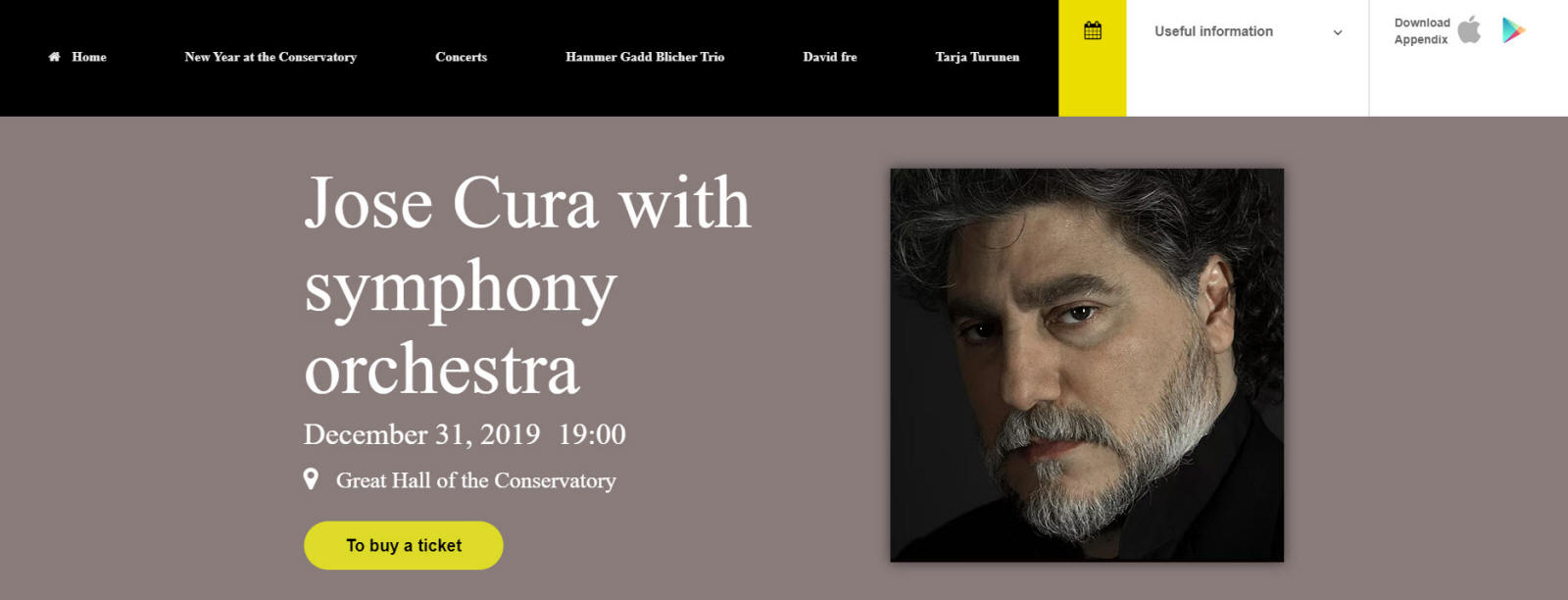
Bravo Cura
Celebrating José Cura--Singer, Conductor, Director
Concerts
Concerts 2019
Moscow - December 2019


|
|
Athens - November 2019

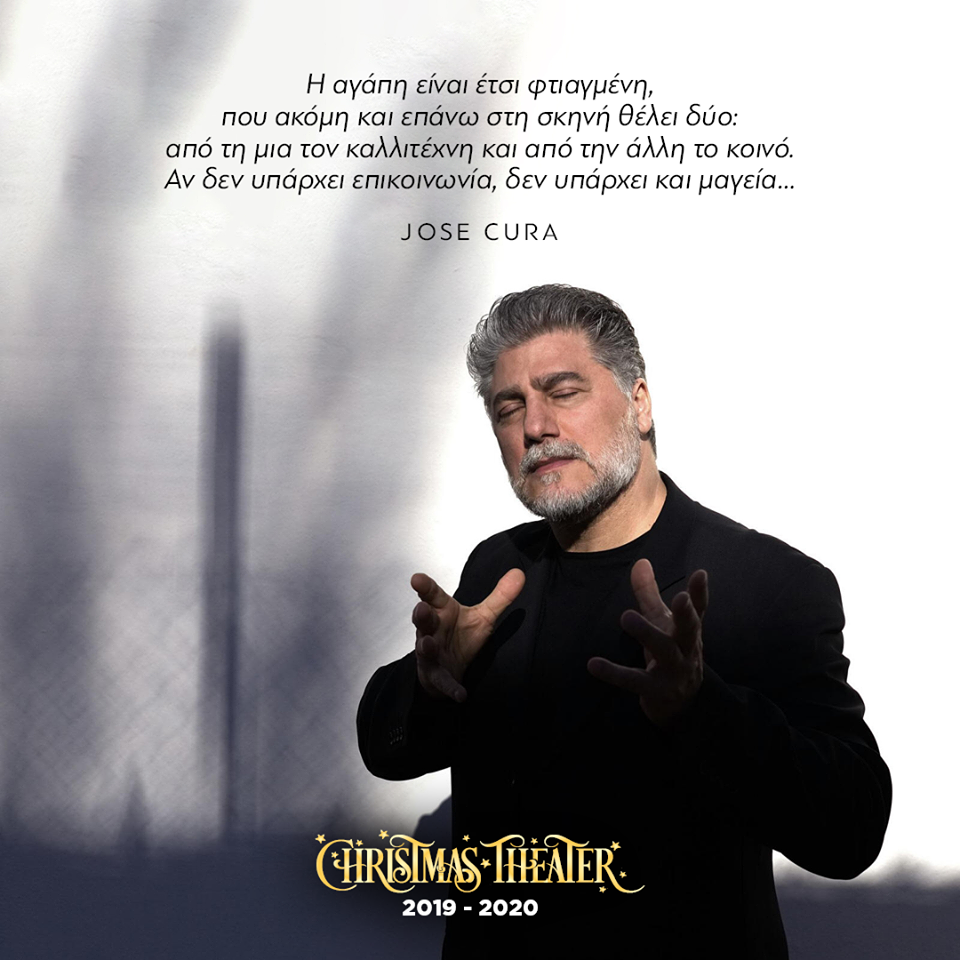

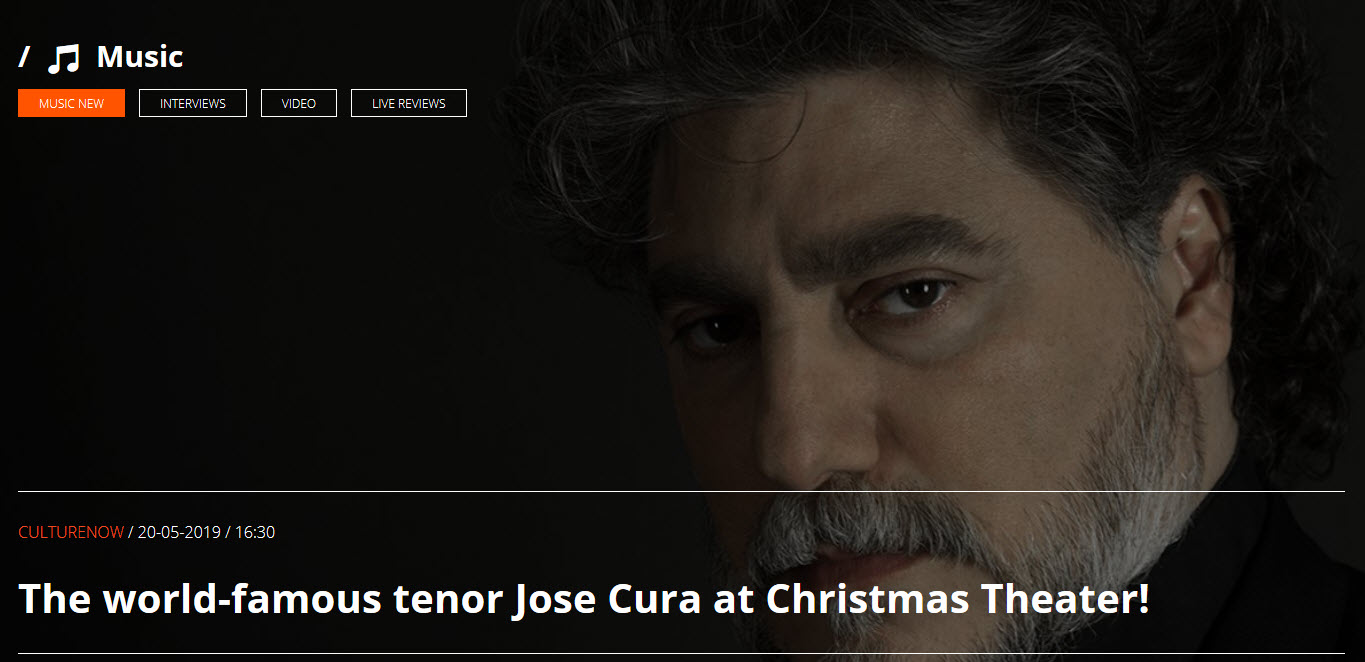

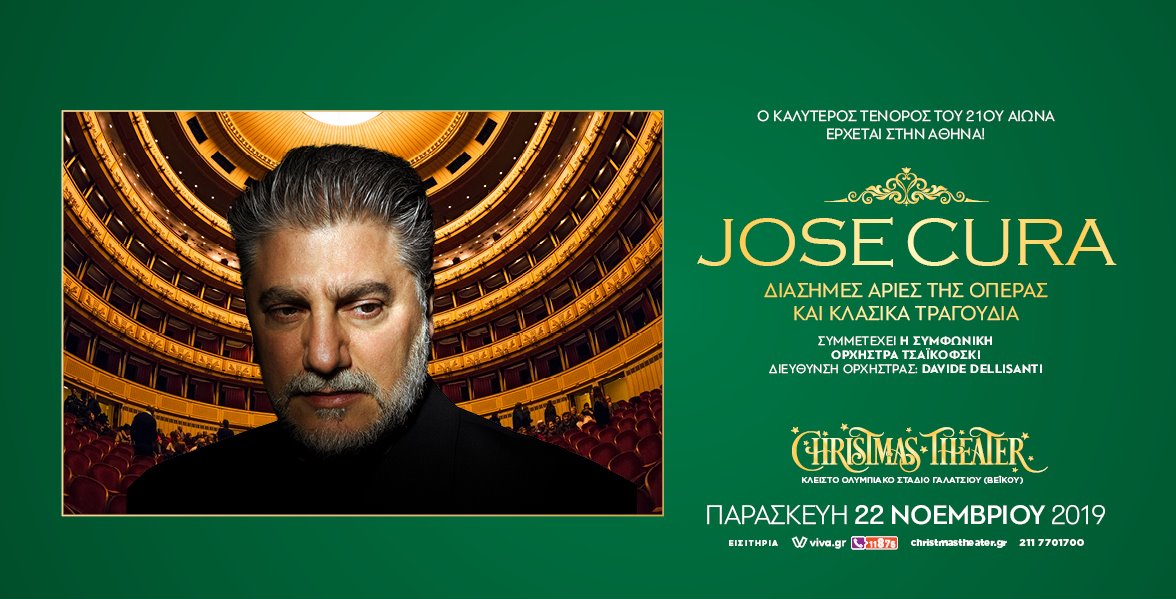


|
The world-renowned tenor Jose Cura comes to Christmas Theater to present a Christmas gala, full of favorite arias from famous operas and classic songs. Together with José Cura, the Tchaikovsky Symphony Orchestra will be co-conducted by David Delisandi. In 2002 at the Herodion Cura gave an interpretation recital that those who attended will always remember it. Placido Domingo anointed him as his successor when in 1997 he conducted the orchestra so that the young tenor would record the unique arias of Puccini, among them and the wonderful "Nessun Dorma." The Times of London named him "the fourth tenor" after the three famous tenors of the20th century. Audiences and critics for years have characterized it as the best tenor of the21st century. José Cura is coming back to Athens to present a Christmas gala full of favorite arias from famous operas and classic songs we have loved. [...] José Cura has appeared in numerous television opera productions as well as in concert productions throughout the world among them and a famous BBC documentary. He has sung in famous theatres around the world, including the Metropolitan Opera of New York, the Royal Opera in London, the Vienna State Opera, the Liceu in Barcelona, the Zurich opera and the La Scala. In 2001 he performed Otello in the Vienna State Opera and the Covent Garden Opera and he met Apotheosis. He is a composer, conductor and guitarist, and has also been involved in stage design and directing. He is a wonderful photographer and composer.
|
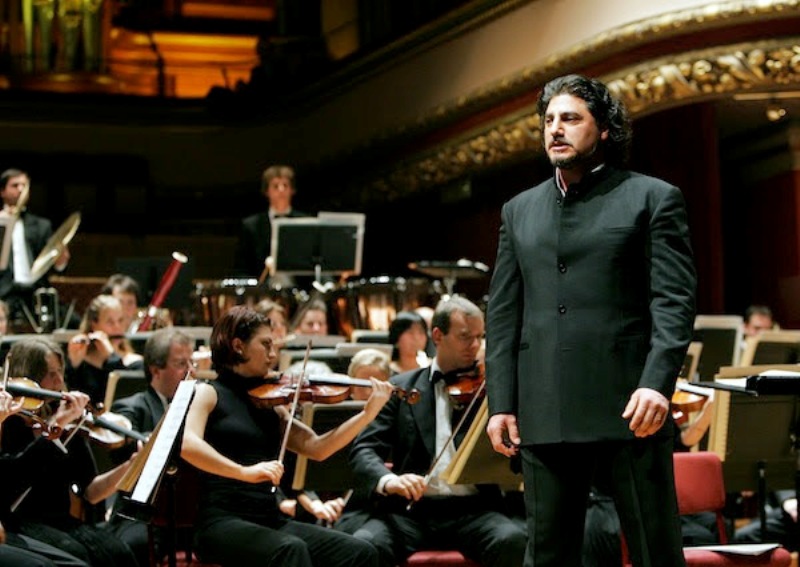 |
 |
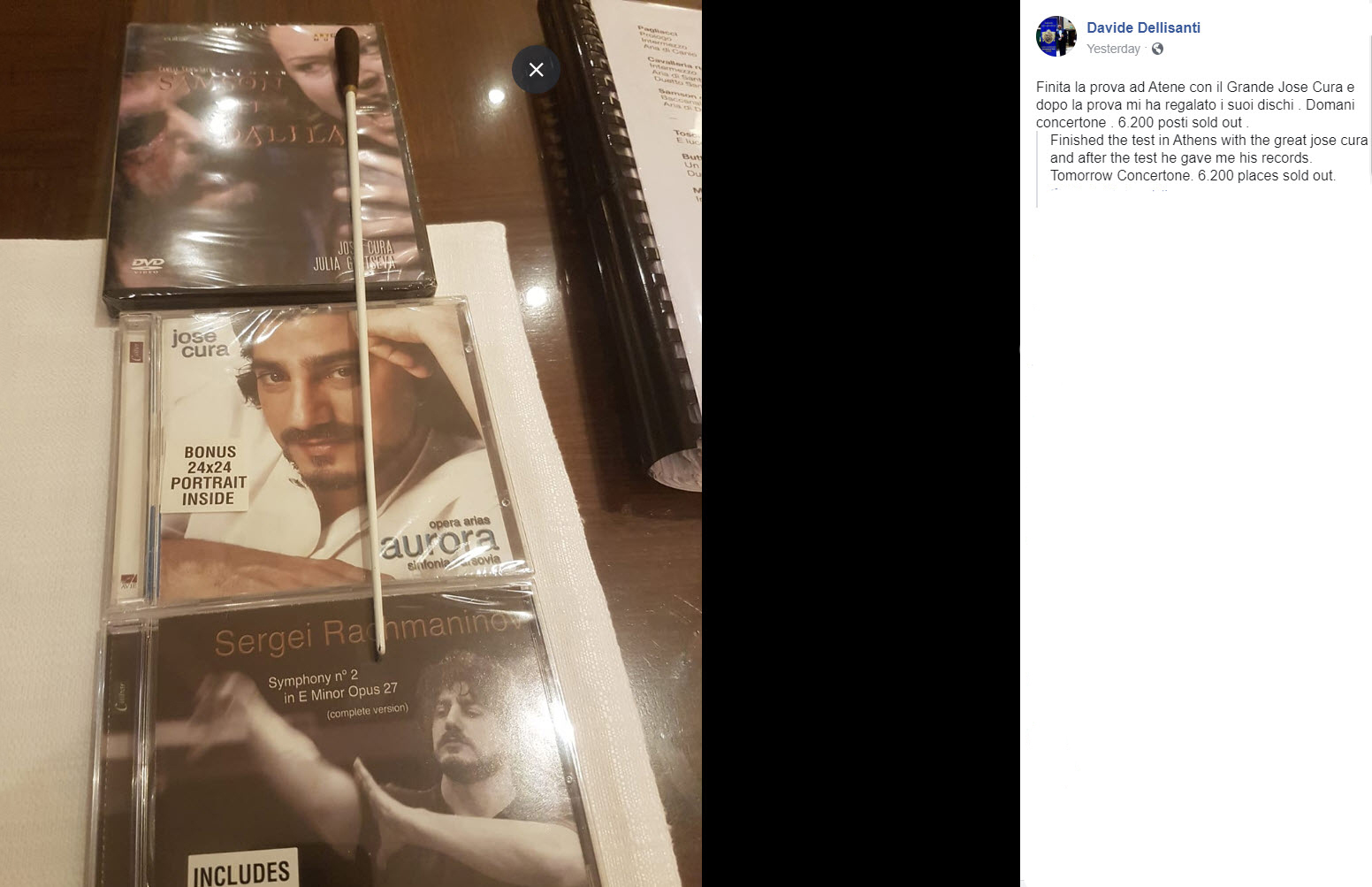
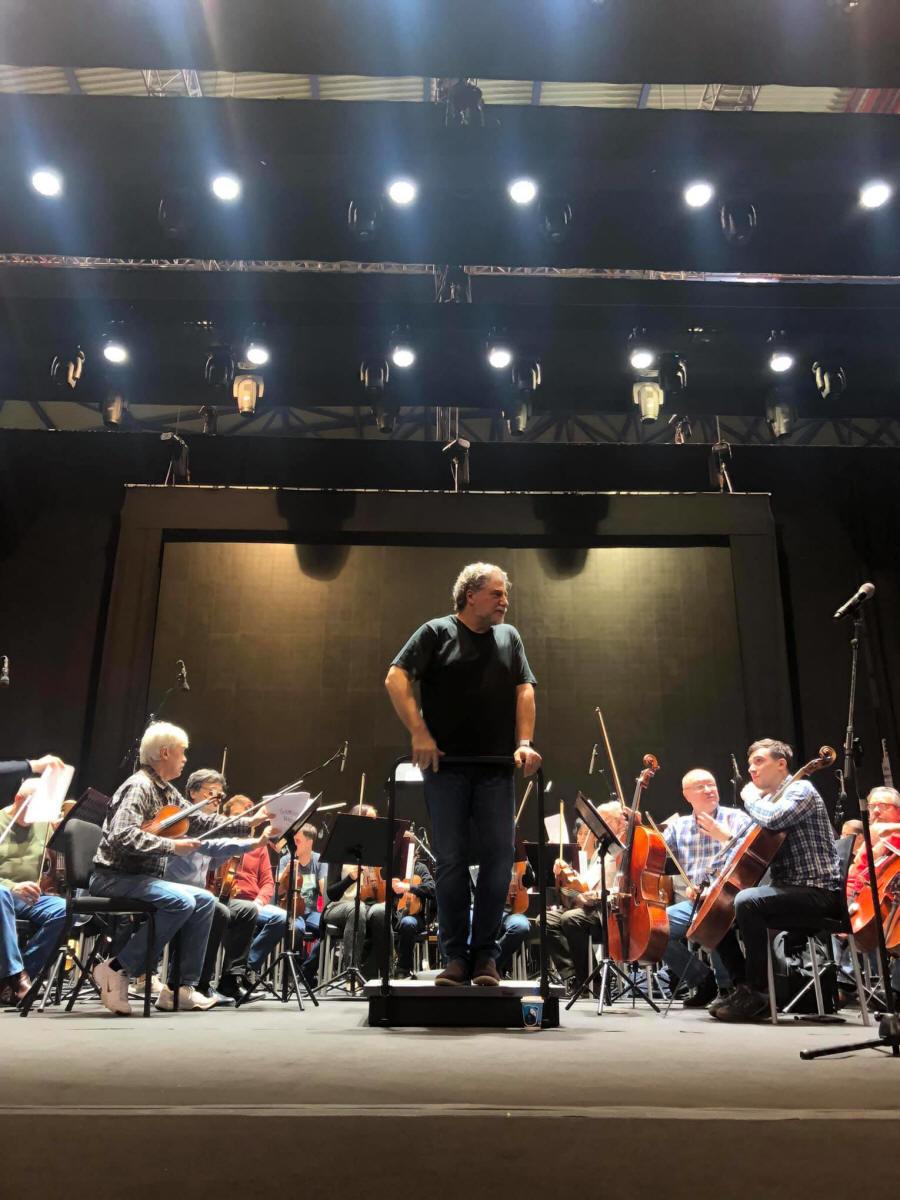
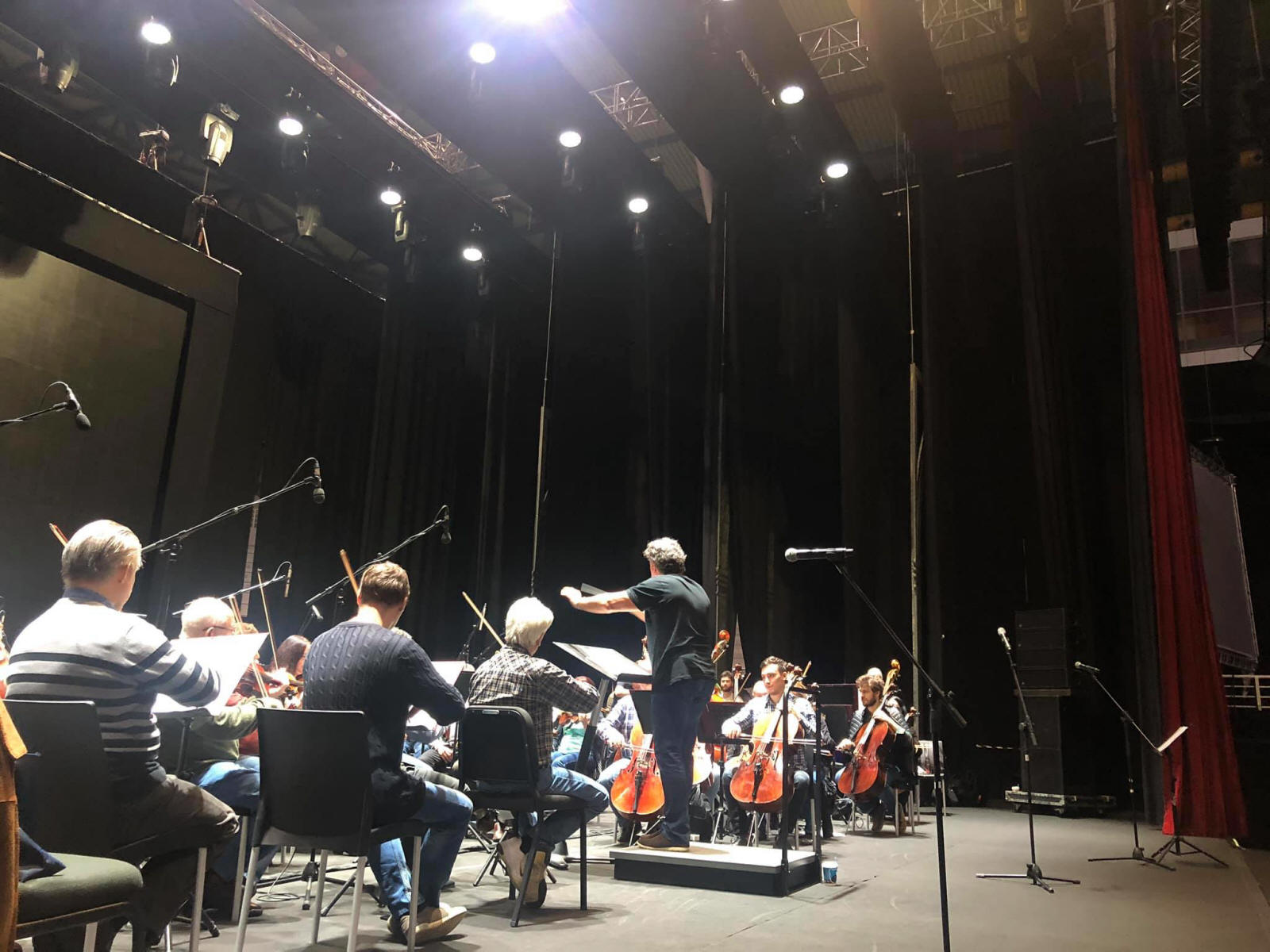
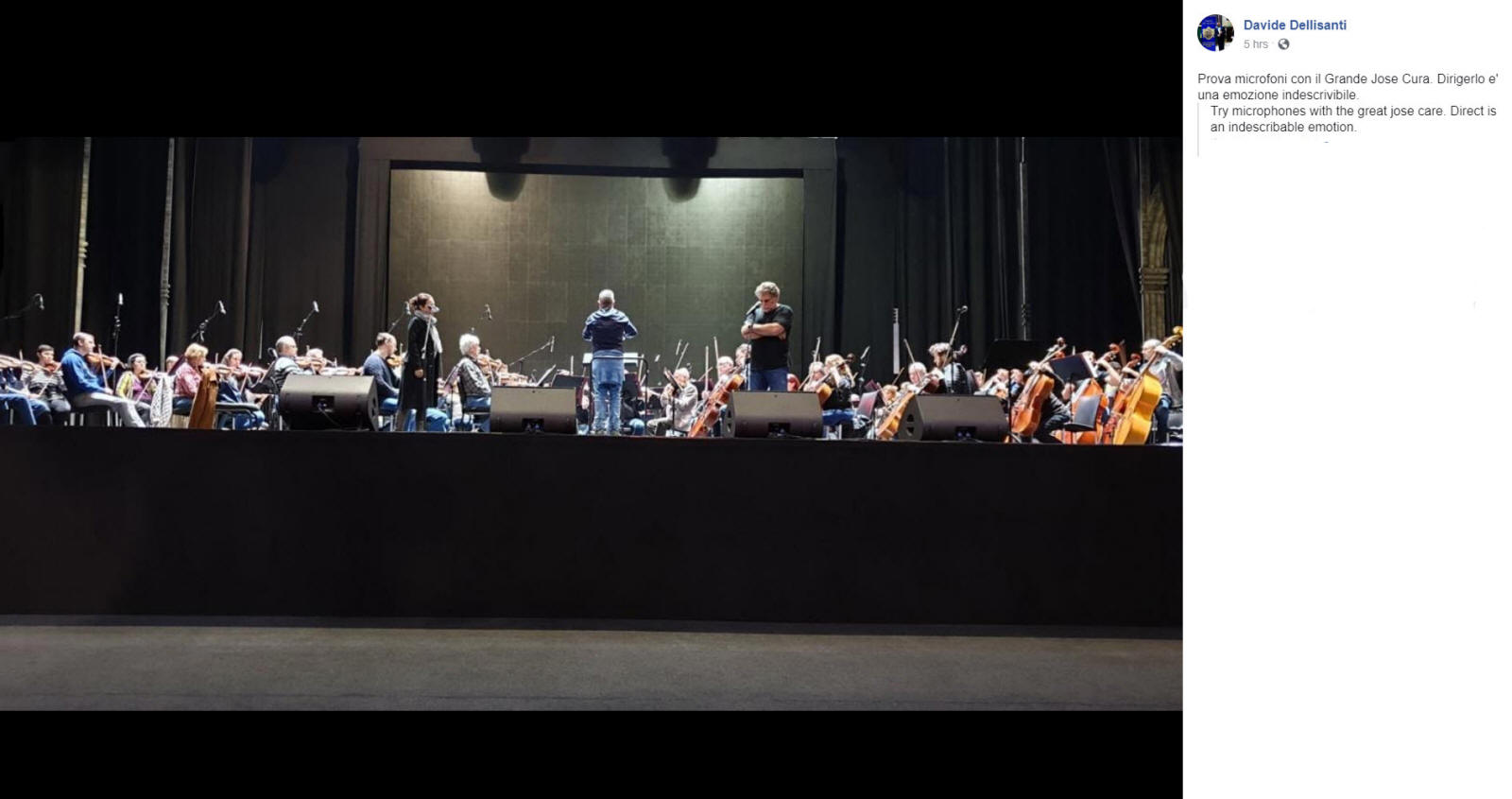

With Conductor Davide Dellisant
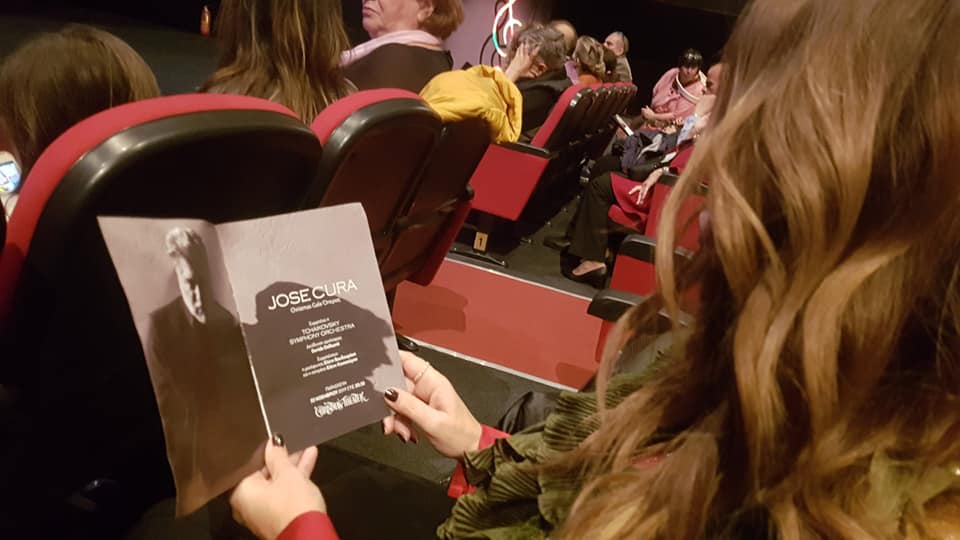
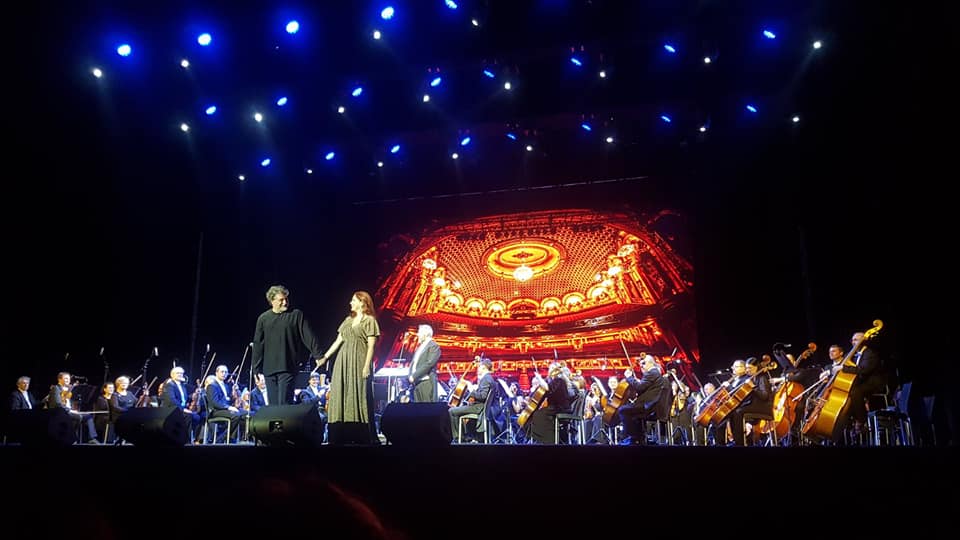
|
|
 |
Shanghai ConcertOctober 2019
|
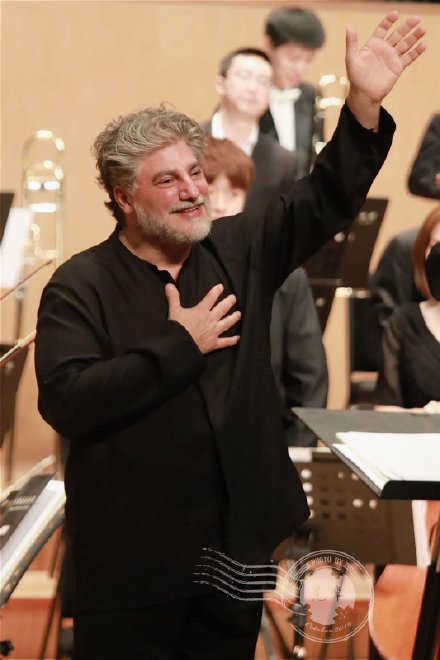 |

|
|
||
|
|
|||
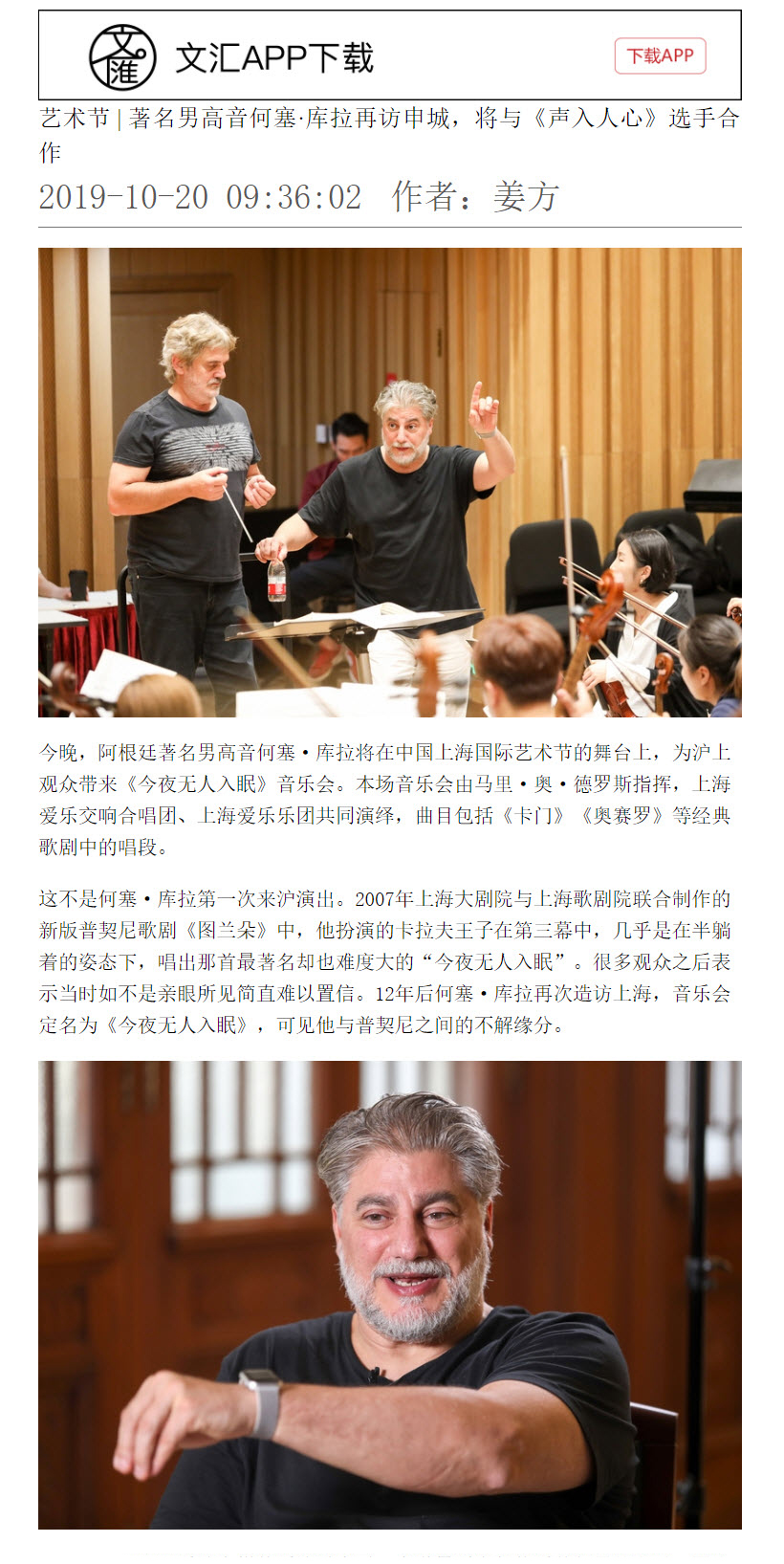 |
|
|
|
 |
|
.jpg)
 |
|
|
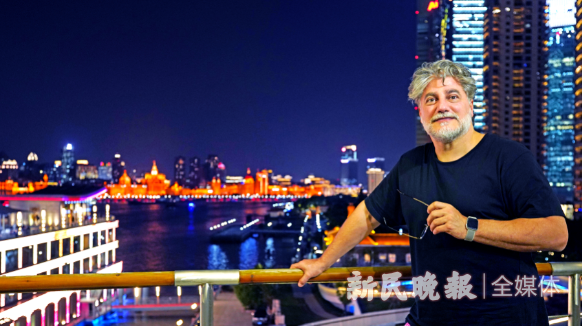
José Cura at the North Bund |
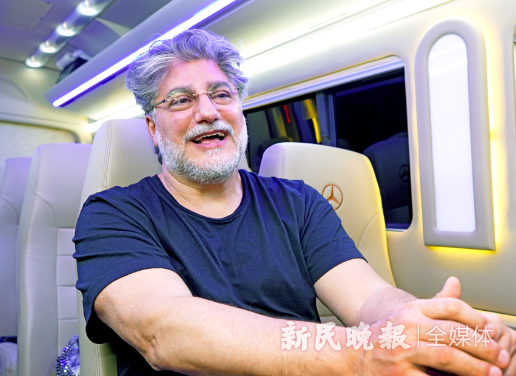 José Cura talks with reporters in the car. |
|
|
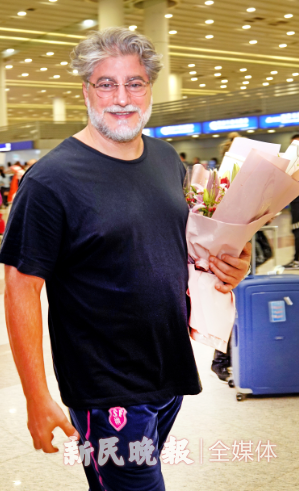
José Cura walks out of the airport |
|
|
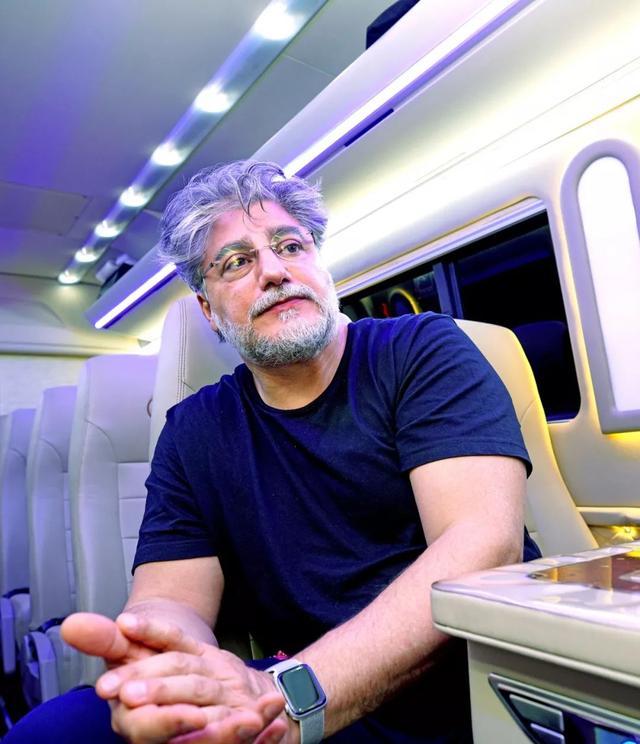 |
 |
|
|
|
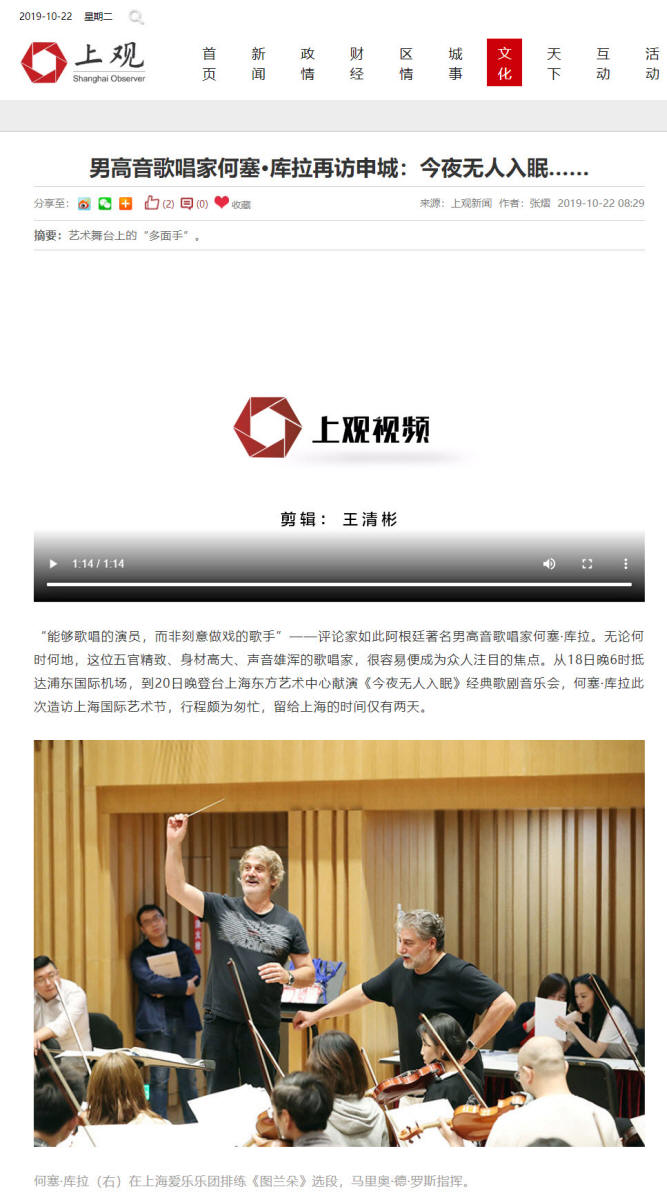 |
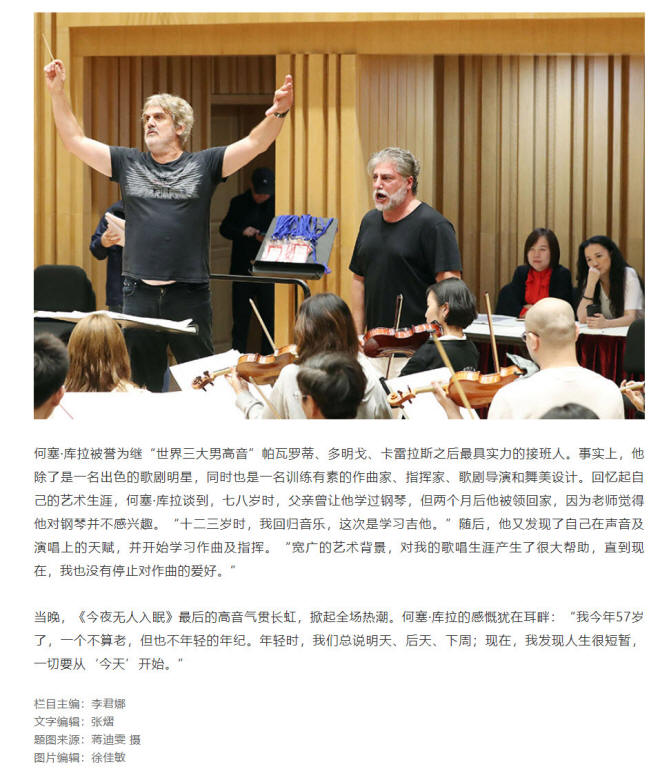
|
|
 |
|
|
|
Prague - March 26 & 28
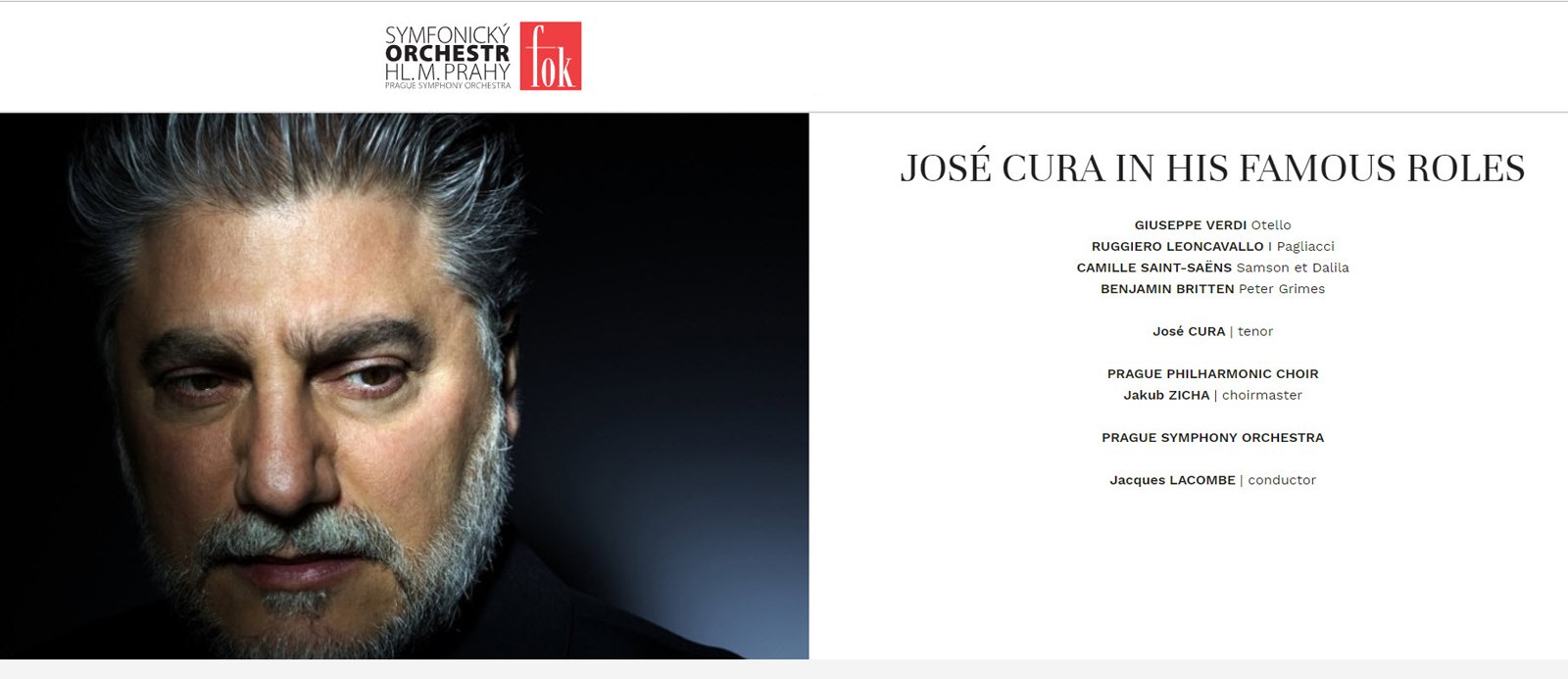
Municipal House, Smetana Hall
The three-year residency of the world-famous singer, conductor and composer, José Cura, with the FOK has ended, but he continues to have close ties with Prague. Following the nine collaborative projects, in which José fully revealed his versatility, comes a purely operatic project. A summary of his roles that he took around the world, including the roles of Otello, Samson, Tannhäuser and Peter Grimes. His conducting partner will be the Canadian Jacques Lacombe, the chief conductor of Bonn Opera House and Orchestre symphonique de Mulhouse.
|
|
|
|
|
Note: This is a machine-based translation. We offer it only a a general guide but it should not be considered definitive.
|
|
|
|
|
Note: This is a machine-based translation. We offer it only a a general guide but it should not be considered definitive.
FOK finally does Opera--with José Cura
Klasikaplus Petr Veber
[Excerpts] "From the first tones he made it clear that he had enough energy to emanate and more than enough voice to gain space with sound and intense expression." "Cura not only sings but also performs well." "In the last section - Peter Grimes - Cura pleasantly surprised because he was out of the usual roles."
Four great, typical and key opera roles: Otello, Canio, Samson, Peter Grimes… So far, the Argentinian tenor José Cura has summed up his current career at the Municipal House in Prague. On Tuesday, scenes from four operas by Giuseppe Verdi, Rugger Leoncavallo, Camilla Saint-Saëns and Benjamin Britten became the contents of a spectacular two-hour concert. The soloist dazzled with great voice and great emotions. The abbreviation is FOK, which stands for "Film - Opera – Concert," was founded eighty-five years ago. As is well known, film engagements have been successful in addition to concert performances; and when the ensemble later became and continues to be a metropolitan orchestra, the abbreviation remained only part of the brand's inertia. José Cura's concert was now a precious moment when the Prague Symphony Orchestra The City of Prague FOK played significant scenes from operas. While they sometimes accompany opera arias, this evening was conceived differently than the usual recitals - unusually, uniquely. It is hard to enter a concert opera program more efficiently than a large opening scene from Verdi's late masterpiece - an impressively conceived fresco with the arrival of a boat in the Cypriot port and the welcoming of Otello, the Moorish commander of Venetian troops. It is a great, excited, romantic symphony, primarily made up of a choral number - and it is not at all common to experience it, if ever at all. Otello appears here only episodically, the first output of the central character of the opera is integrated in the story and music into the vocal-instrumental turmoil. José Cura conceived his entree as coming to the stage through the middle of the auditorium. And from the first tones he made it clear that he had enough energy to emulate a passionate, jealous, and fugitive soldier, and more than enough voice to dominate the space with sound and intense expression. This was followed by Otello's monologue from Act 3, then the ballet music, and finally the very end of the opera, when the hero, in late knowledge, laments the unnecessary ending of his innocent wife's life. José Cura has been singing Otello for two decades. He still has a very strong, intonation-sure, extremely powerful voice that, without difficulty, is convincingly getting into the highest positions of this task. In the bottom register, Cur's tenor has a baritone color, but in the highest, the color is clear, open. And of course, the singer has the necessary level for Otello in all positions. In the final, he managed to create a strong atmosphere in the silence, the expression of despair and pain, and the audience was truly conquered. Entering the second of the four operas - Leoncavallo's Pagliacci - was again spectacular. The colorful large choral scene and the arrival of Canio in the middle aisle, the whole hall, the drum and the mallet in hand, the drumming and singing under and on the stage… Canio is a little smaller in voice than a bittersweet, tragic figure - and can give a high degree of characterization in voice and speech. Cura not only sings the role but also performs it well. The famous intermezzo was followed by the famous aria "Vesti la giubba." Unlike some other singers, Cura does not sob directly, but his expression can still be very strong, singing purely with the same energy, buoyancy and strength of a dramatically pitched voice. Saint-Saëns' opera Samson and Dalila with the theme of a biblical story, transformed into a romantic love and political drama, is full of archaic music conceived by cantata and set into a mode related to spiritual music. Cura also sings Samson’s hero moments in a big voice, but at the end he is silenced by the inconspicuously applied upper register for great inward appeal. There was also a large space in the choir and an orchestra in the oriental-colored, imaginatively instrumented bacchanal. In the last scene of the evening, José Cura pleasantly surprised because he was out of the usual roles. He had chosen Britten's Peter Grimes - a monologue from the end of the opera. Perhaps it was a pity that some of the "sea" games that were playing alone were not heard in front of him. He could have nicely put it into action with his special melodiousness, drama or mood, and better prepare the listeners to hear the modern music. In a way, the anxious singing of a reclusive, geeky, apparently homosexual fisherman was all too abstract. British singers use a more straightforward voice for the tenor part of Peter Grimes; Cura's speech, though still using resources similar to those of the previous examples, was less stylish - but the ability to achieve extraordinary persuasiveness could not be denied. The concert ended in silence. Under the circumstances, there was logically no encores.
|

|
Note: This is a machine-based translation. We offer it only a a general guide but it should not be considered definitive.
Cura returns to FOK Novinky 29 March 2019
Argentinean tenor and conductor José Cura is a frequent guest here. On Tuesday and Thursday he prepared an evening of his favorite opera roles presented in a sold-out Smetana Hall of the Municipal House in Prague with the French conductor Jacques Lacombe. Of course, he chose mainly from well-known operas of Romanticism and Verismo, representative of his biggest roles. They formed the first part of the program with arias and scenes from operas Verdi (Otello) and Leoncavallo (Pagliacci). He excelled in both voice and expression, and after a break he continued with scenes from of Samson and Dalila by Camilla Saint-Saëns. There was also a space for orchestra in the well-known Bacchanal. In the end, Cura offered the great final scene from the opera Peter Grimes by the Englishman Benjamin Britten, one of the foundation operas of the twentieth century. In it, the main character, the fisherman Grimes, recapitulates his unhappy life before his final suicide. It was an excellent end to a great concert.
|
|
|
|
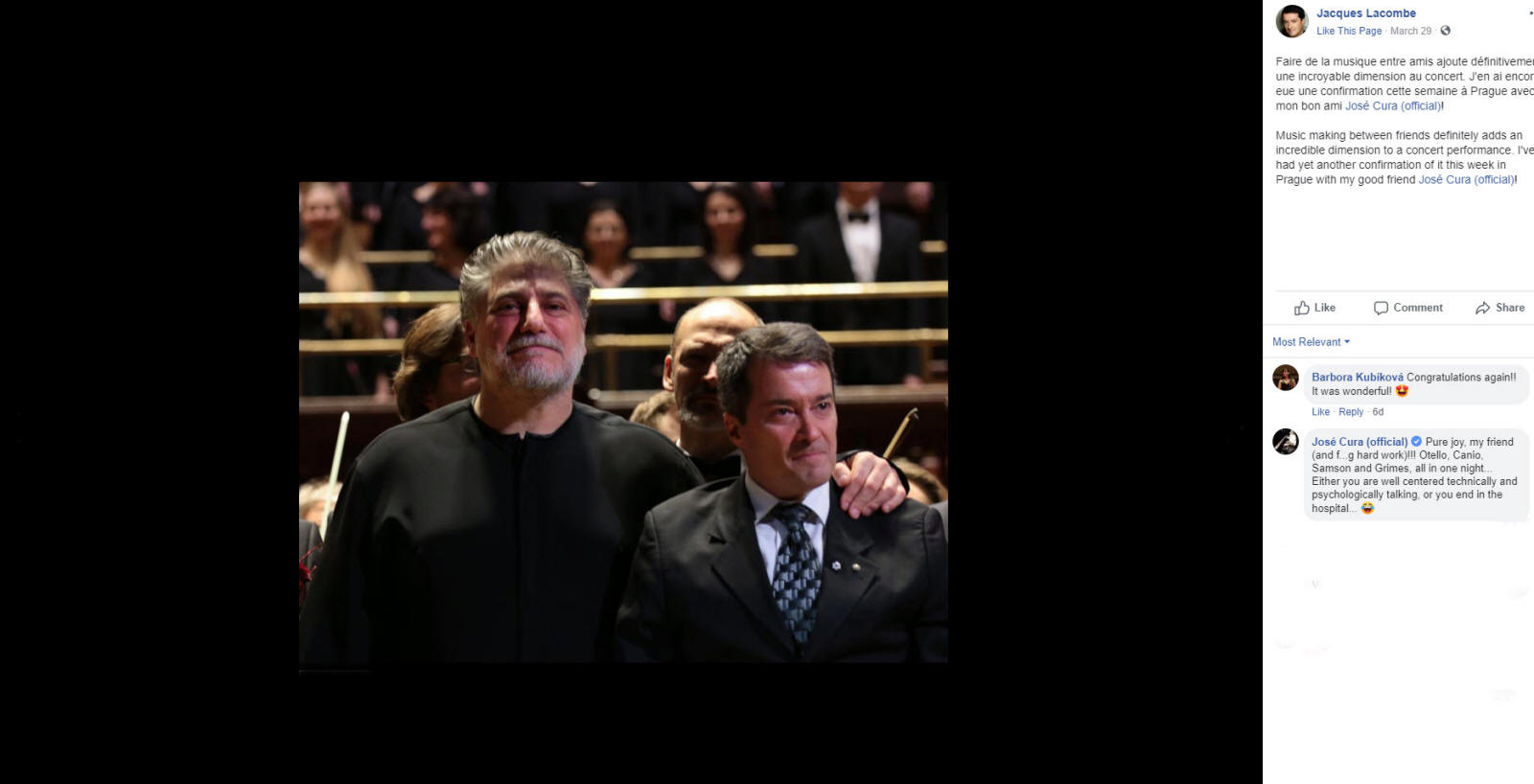
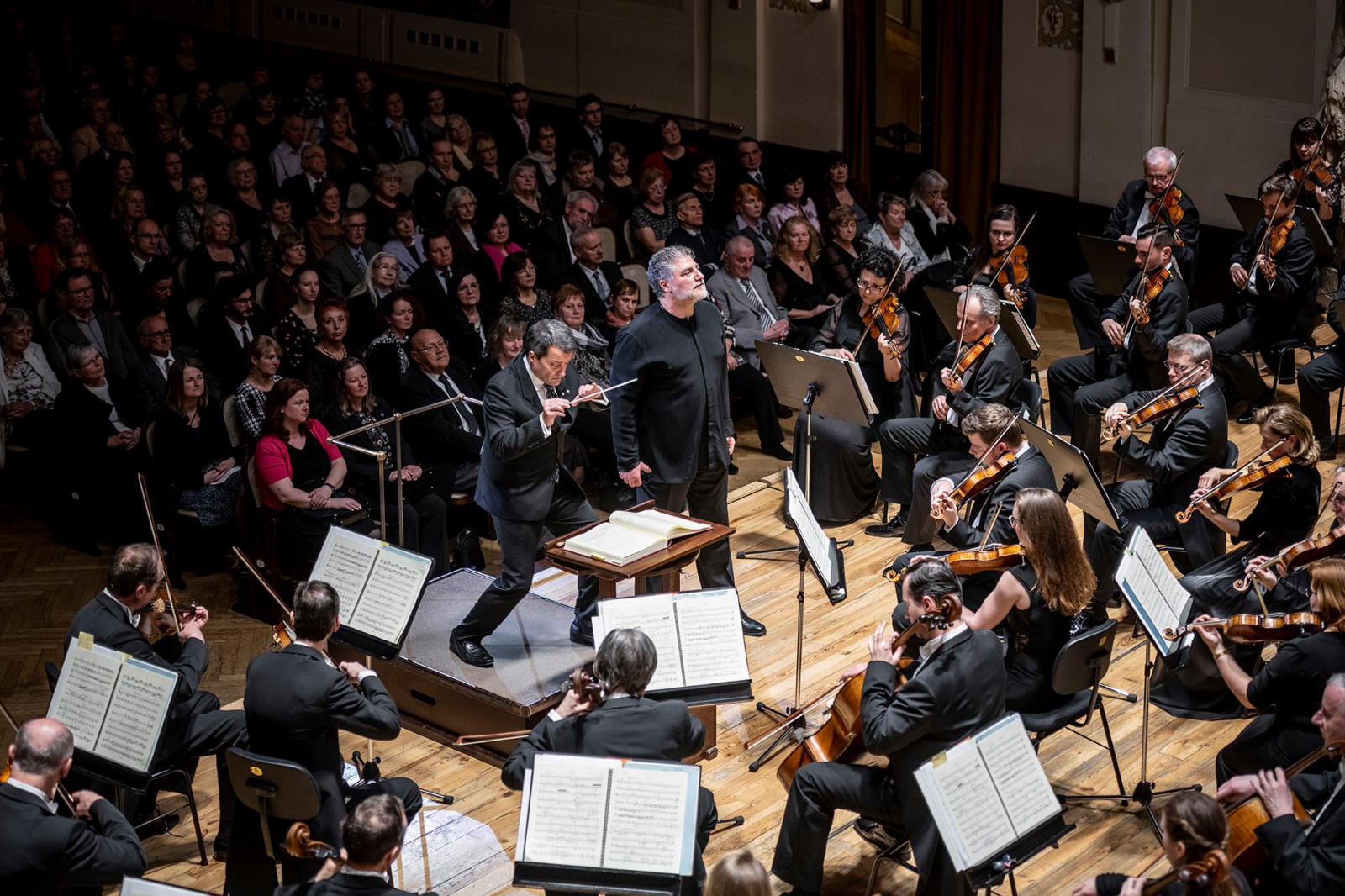


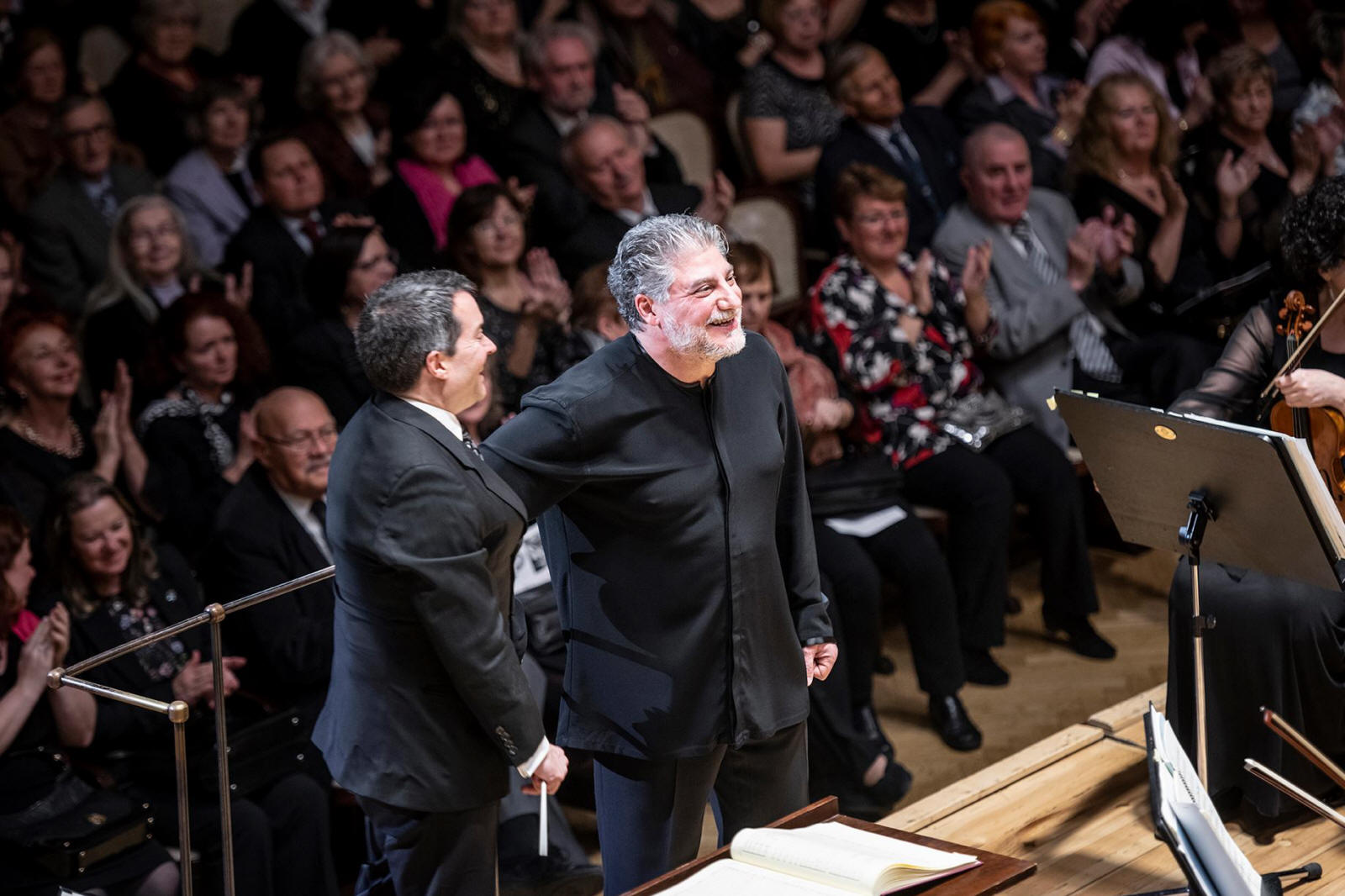

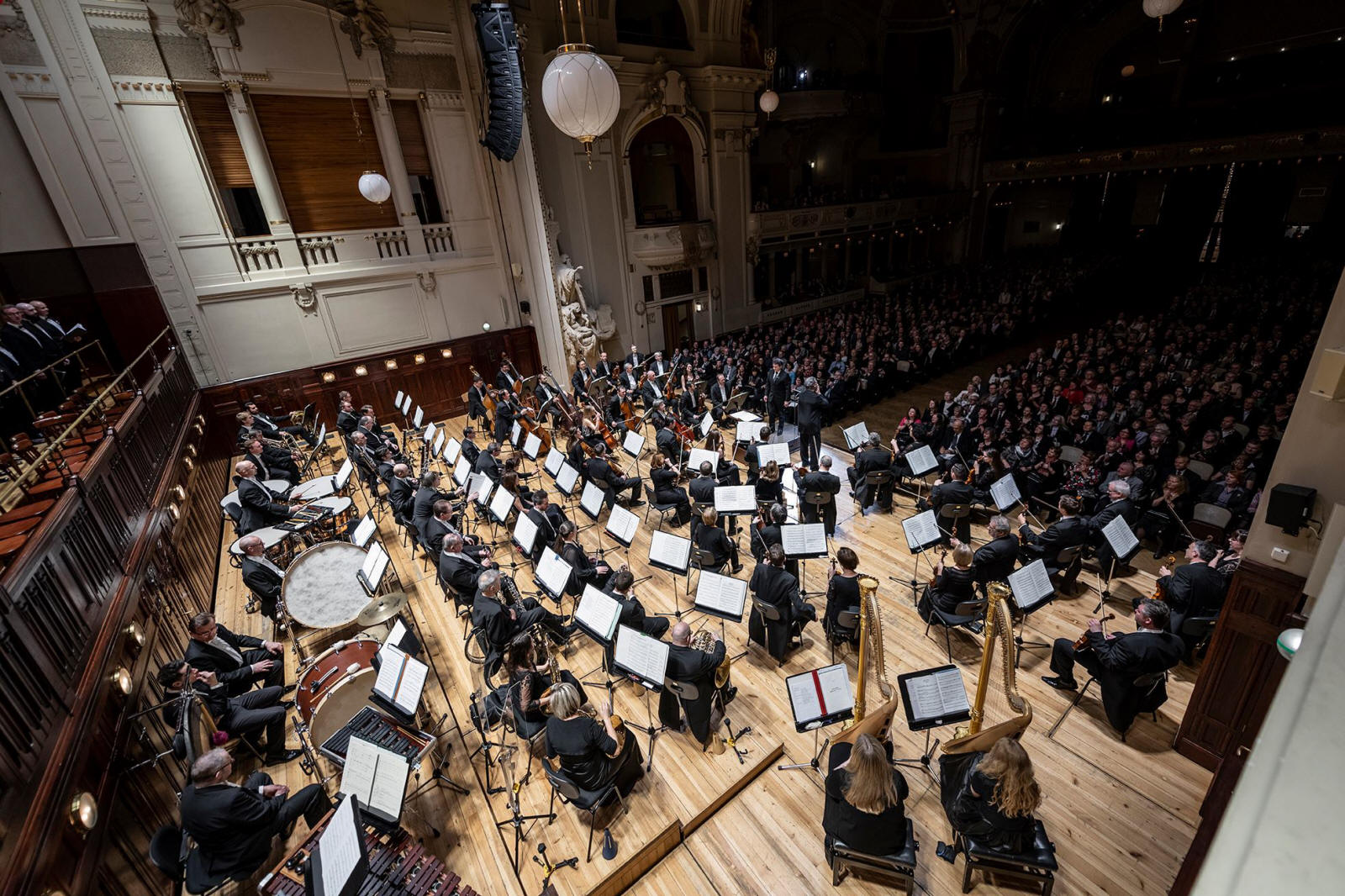
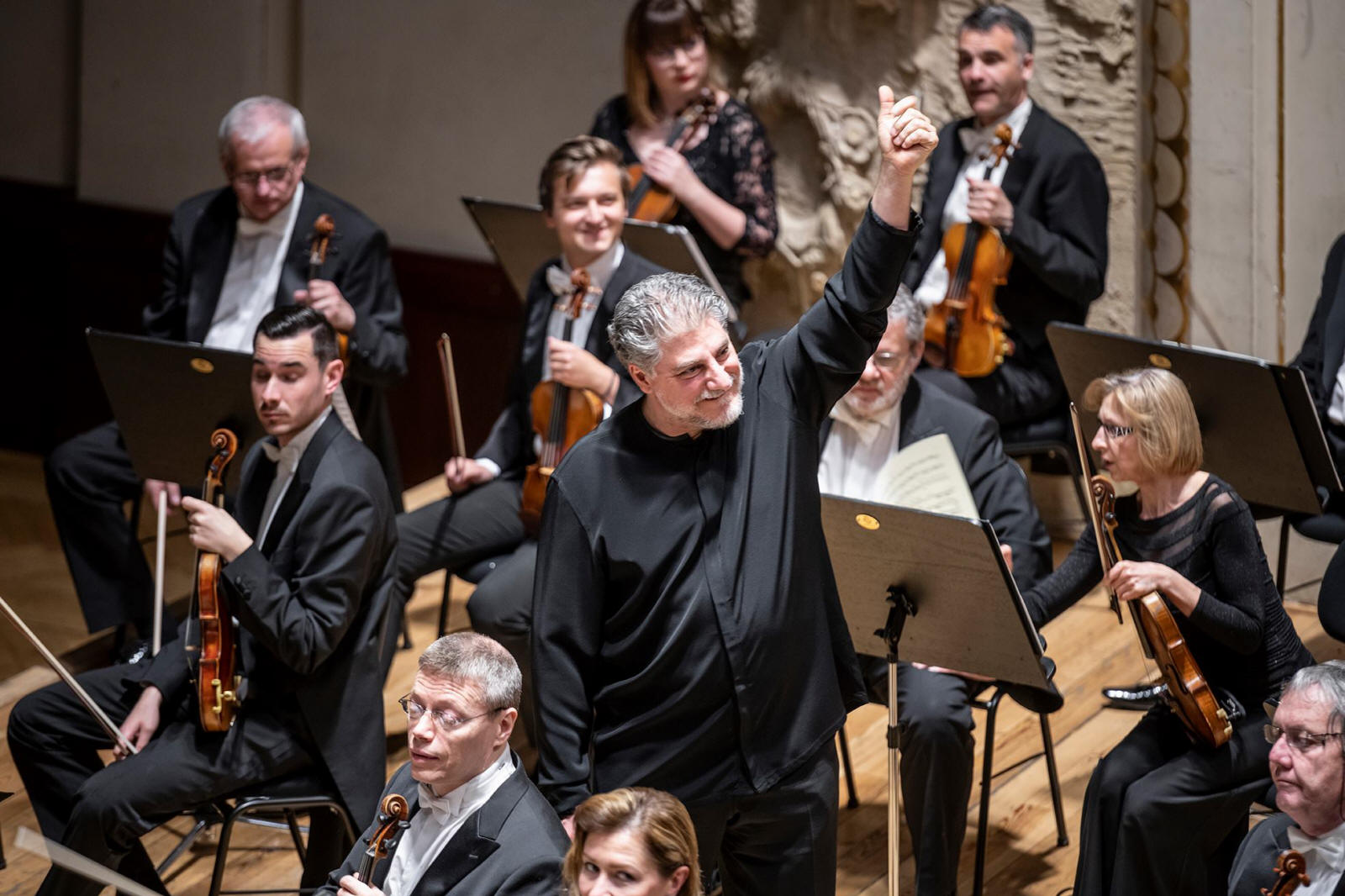
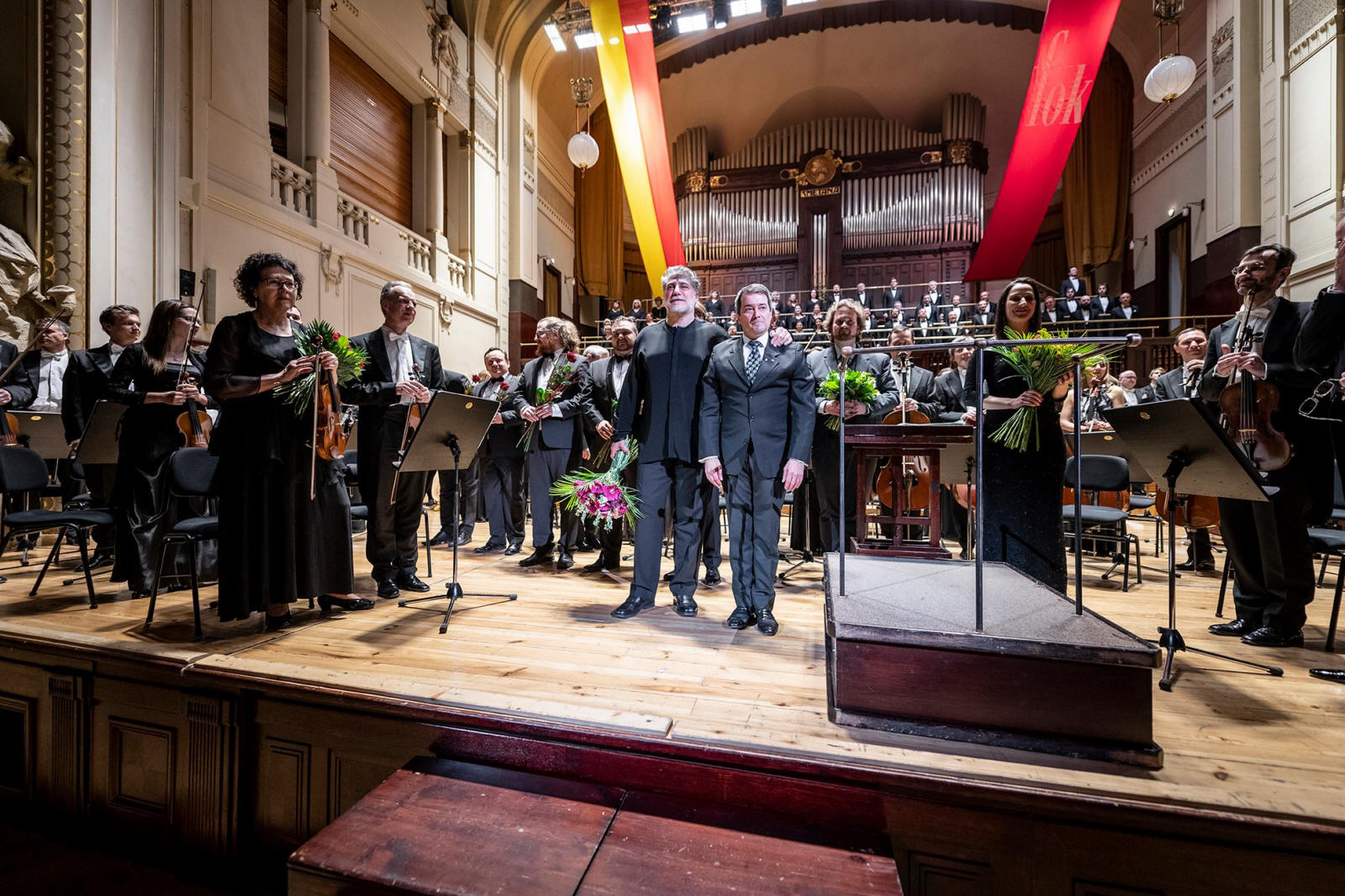
Photos in Support of the Canadian Reception

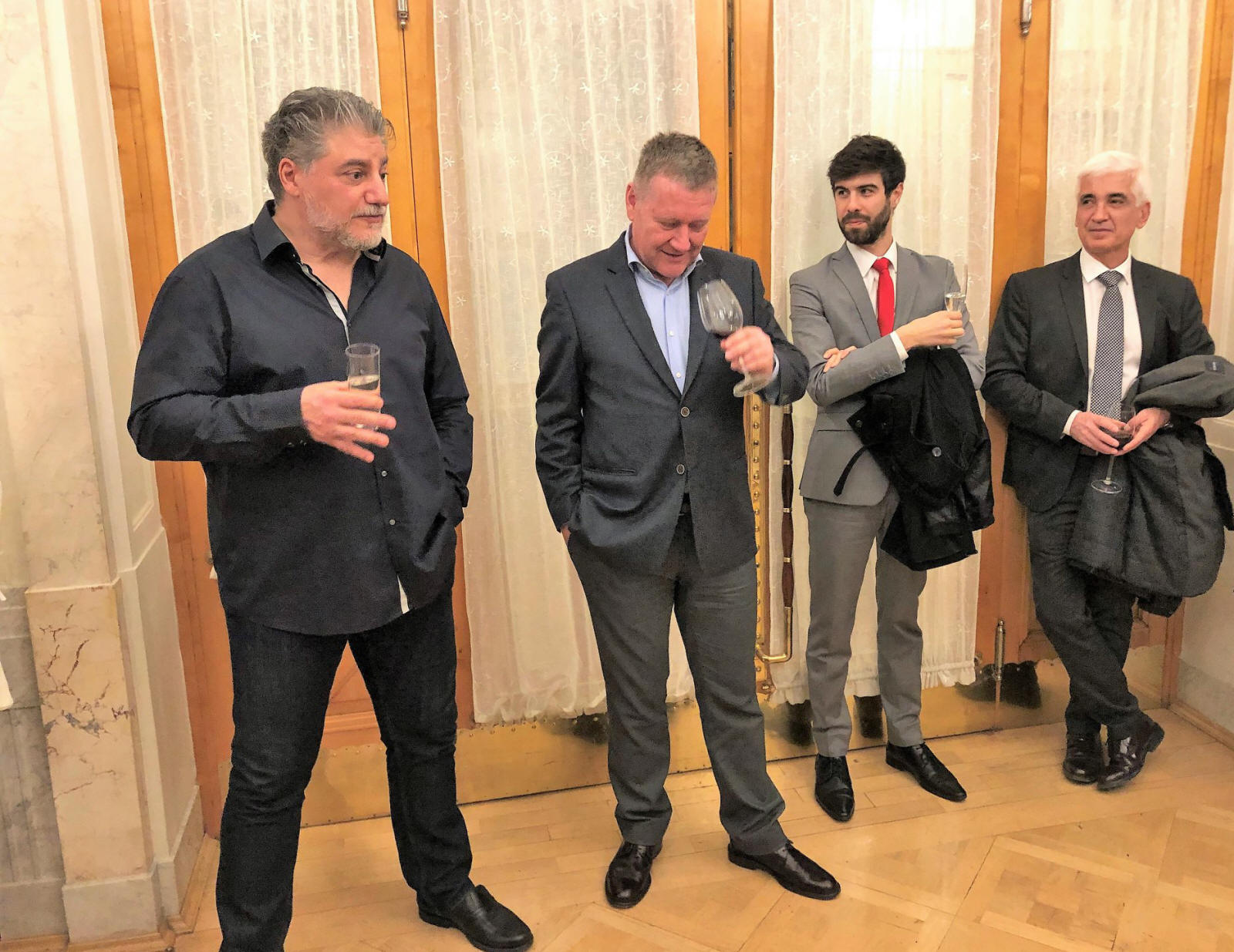
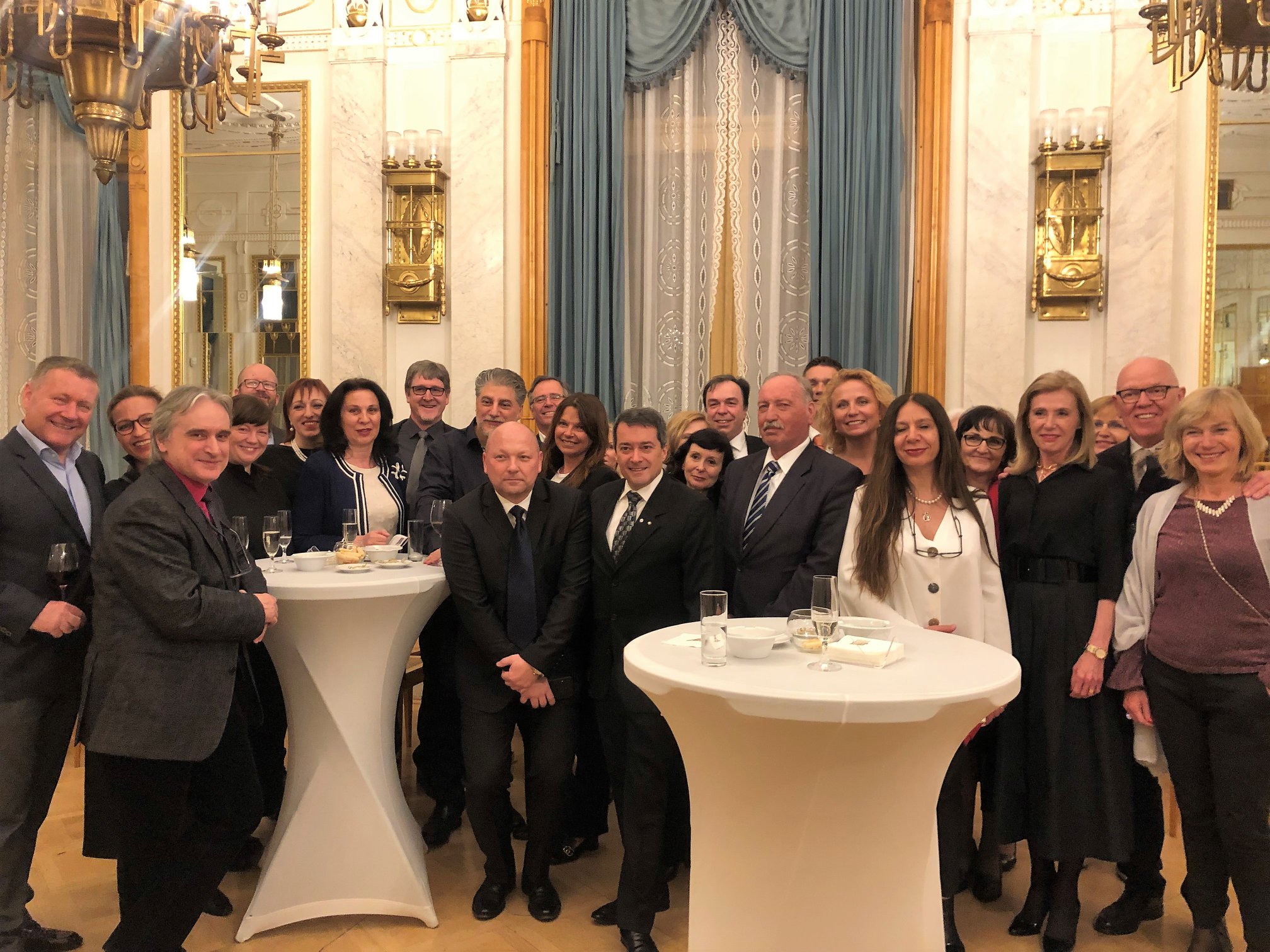
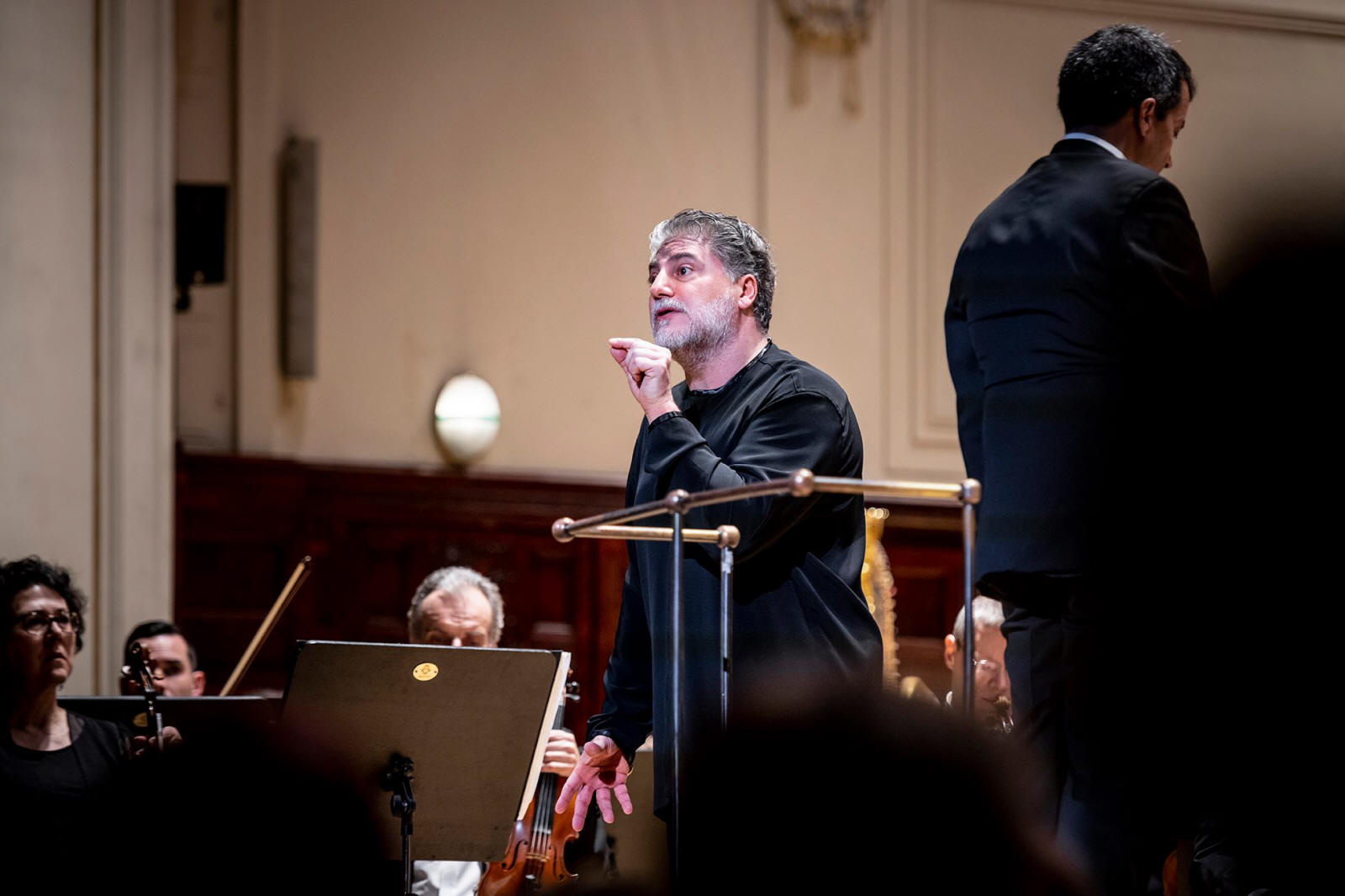
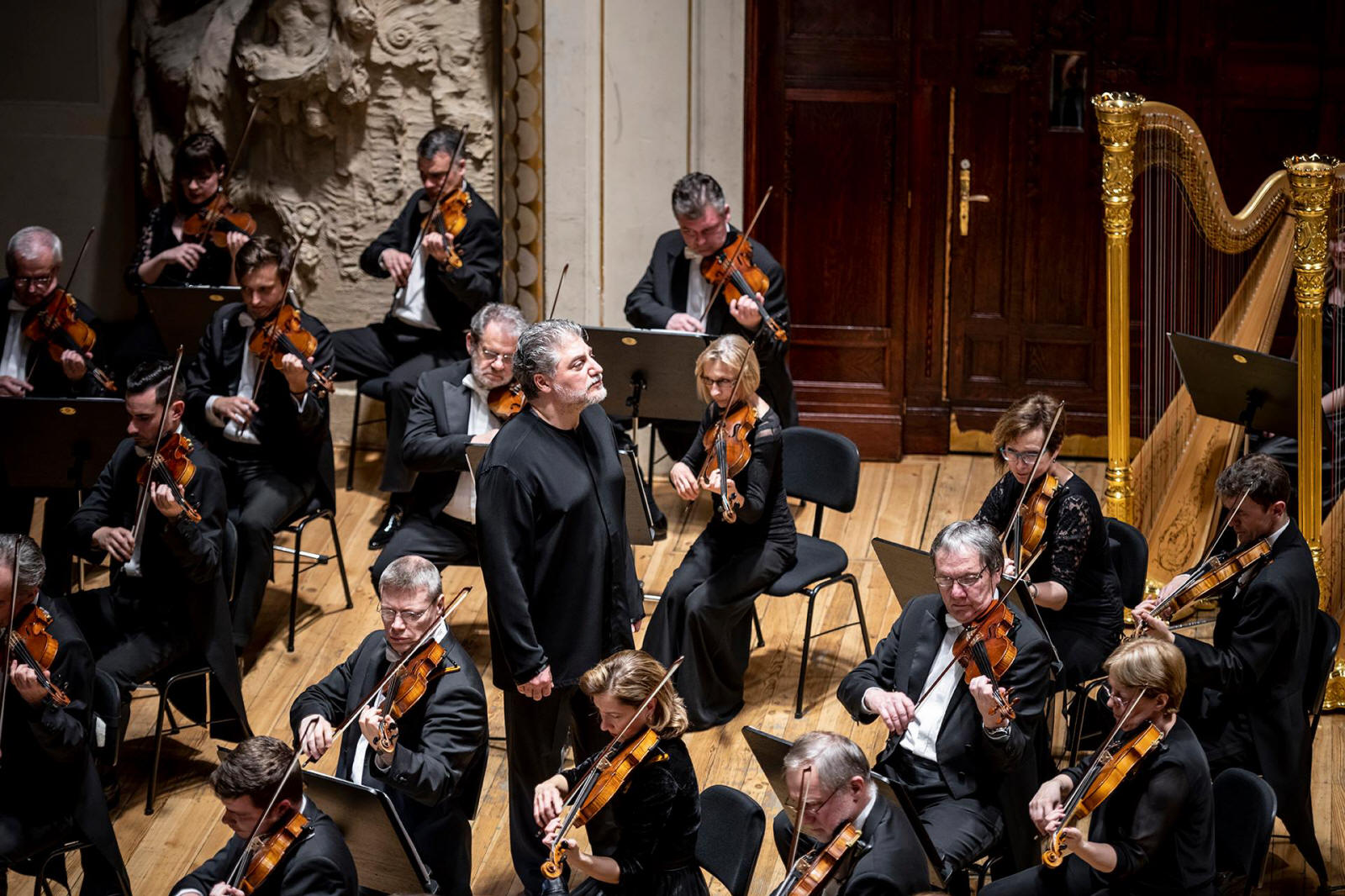
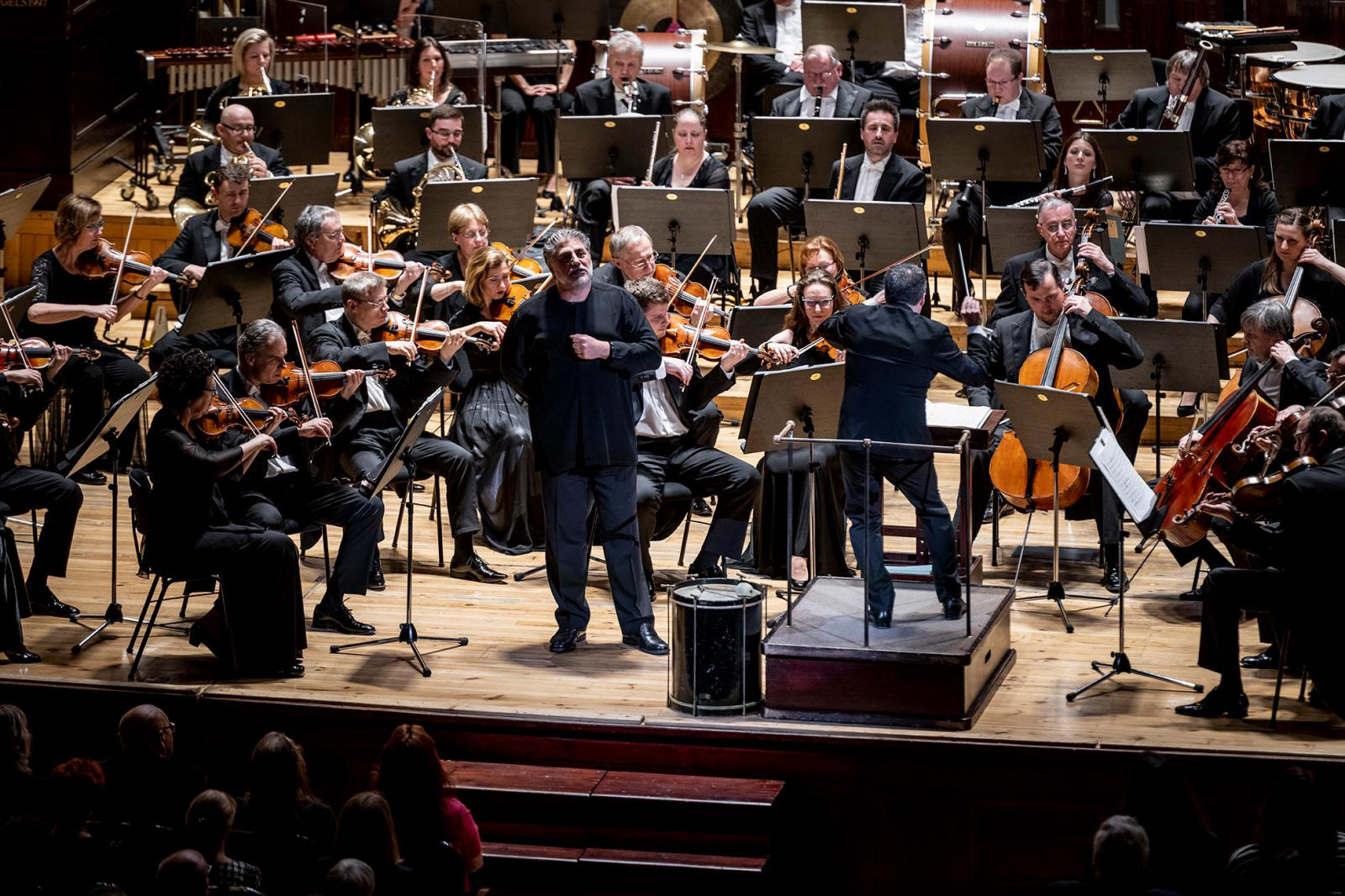
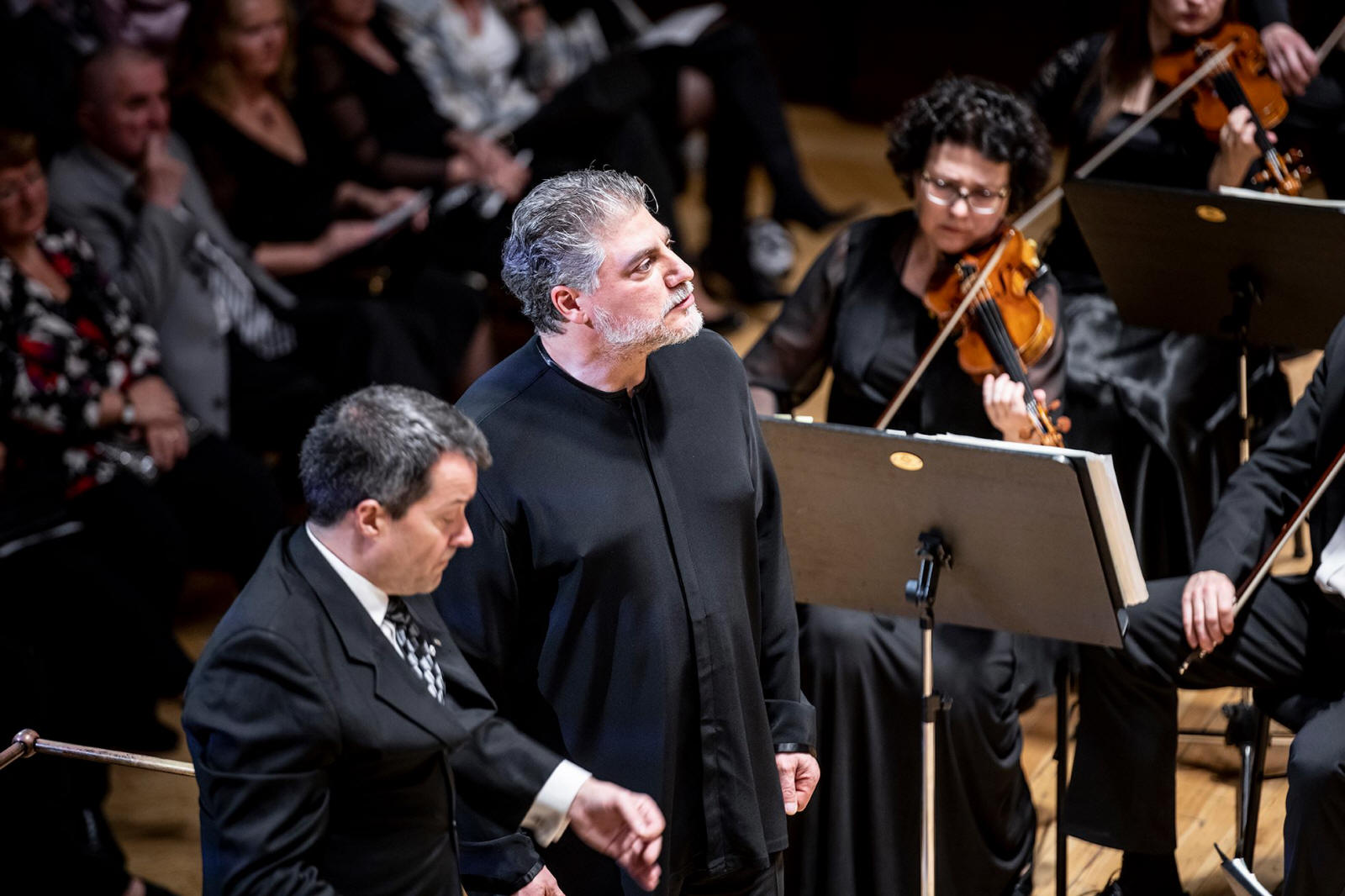
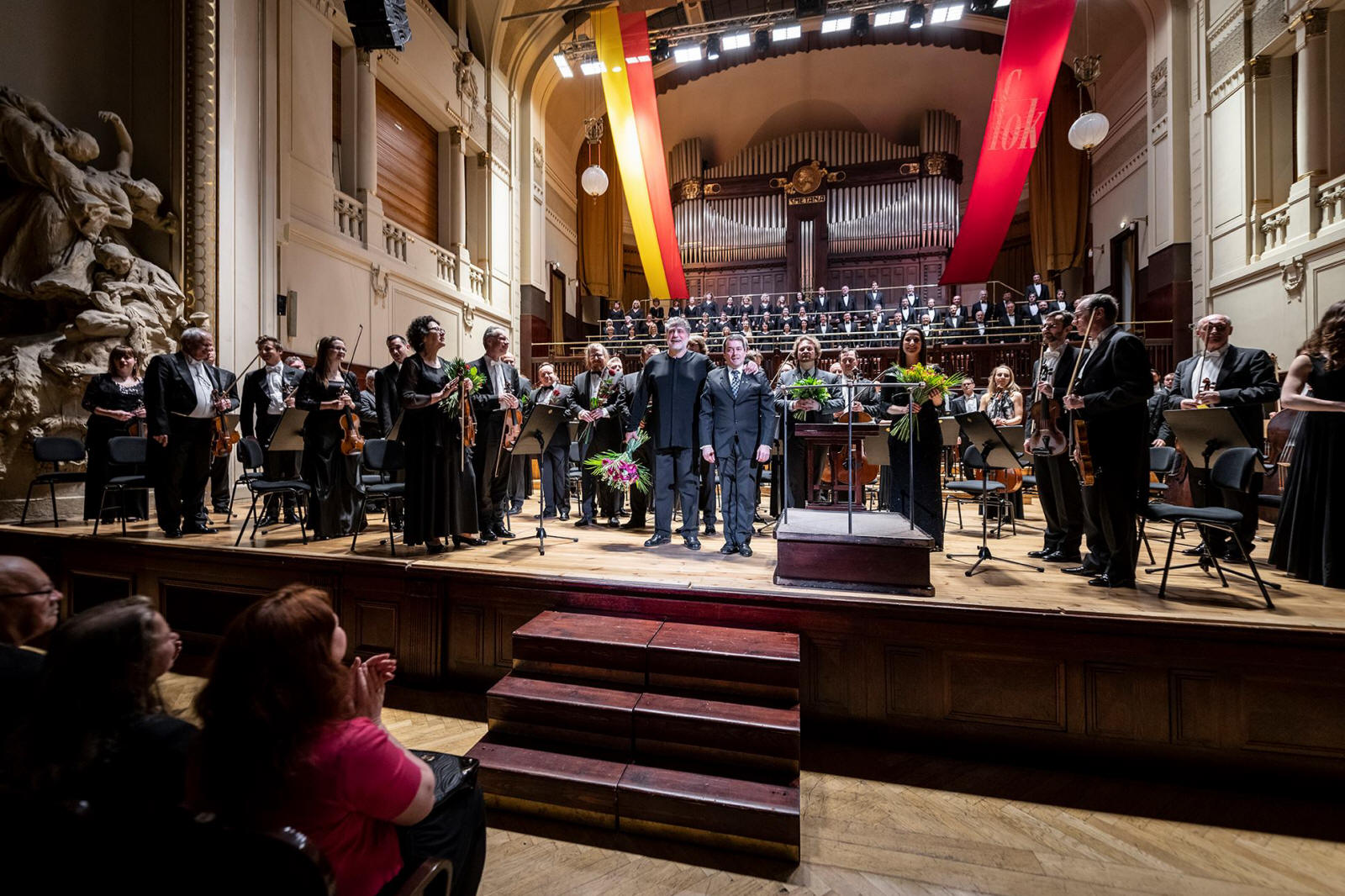
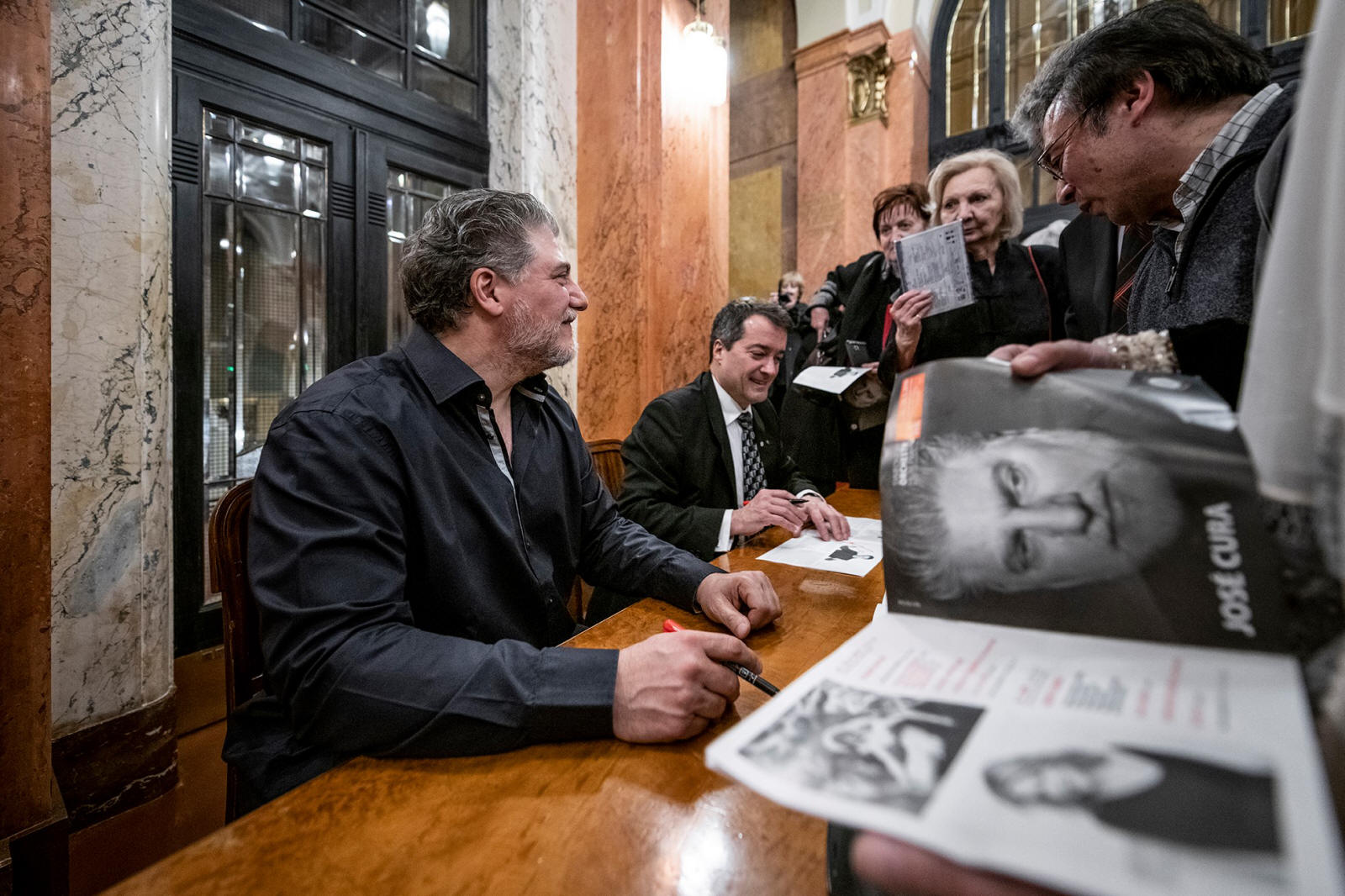
 |
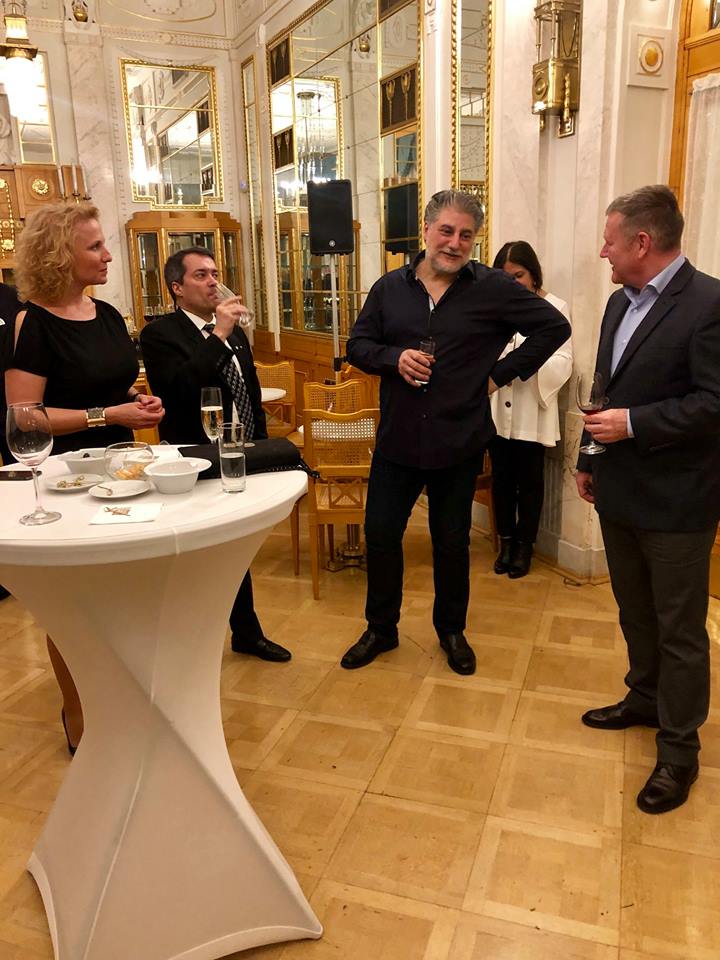 |
Other Photos
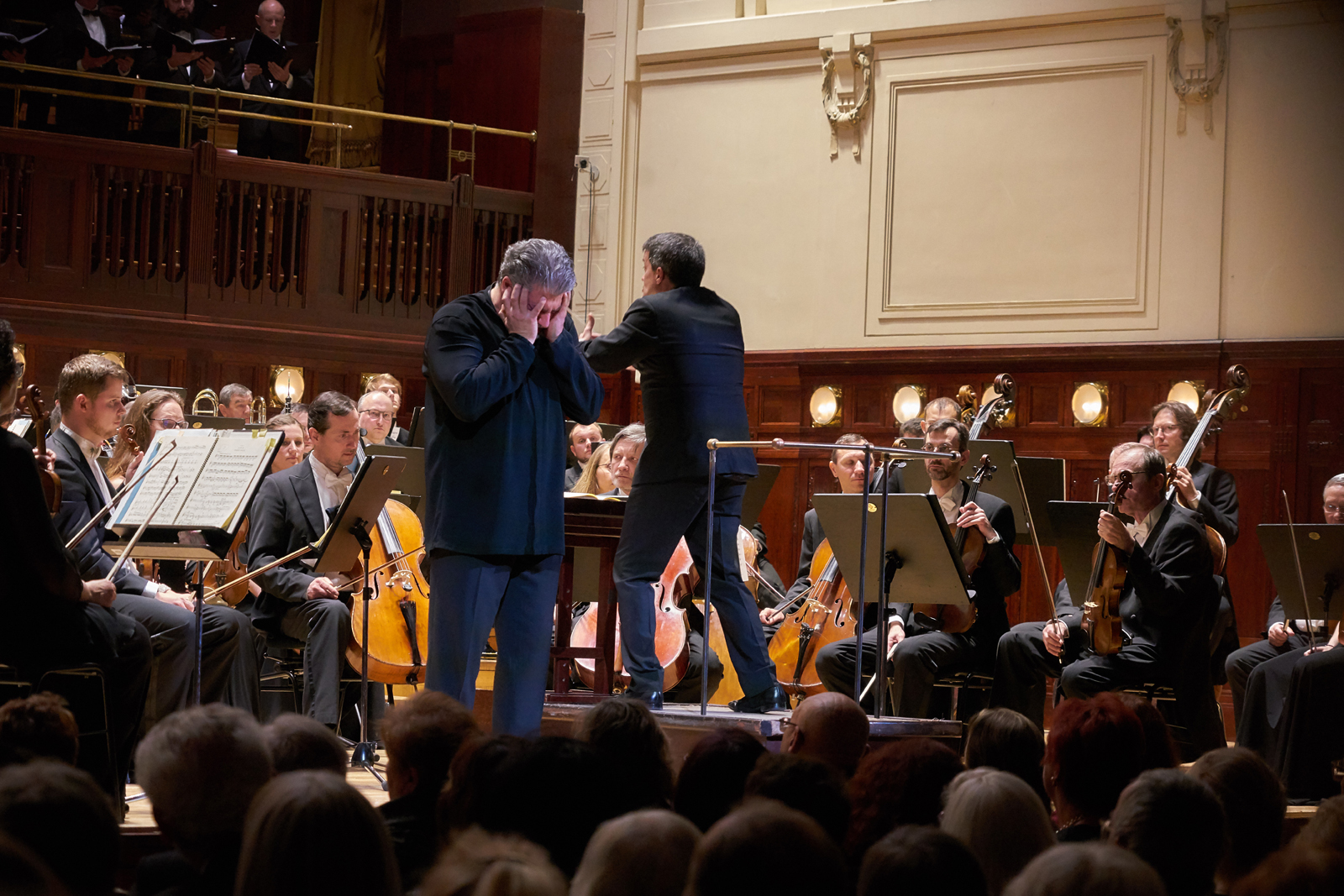

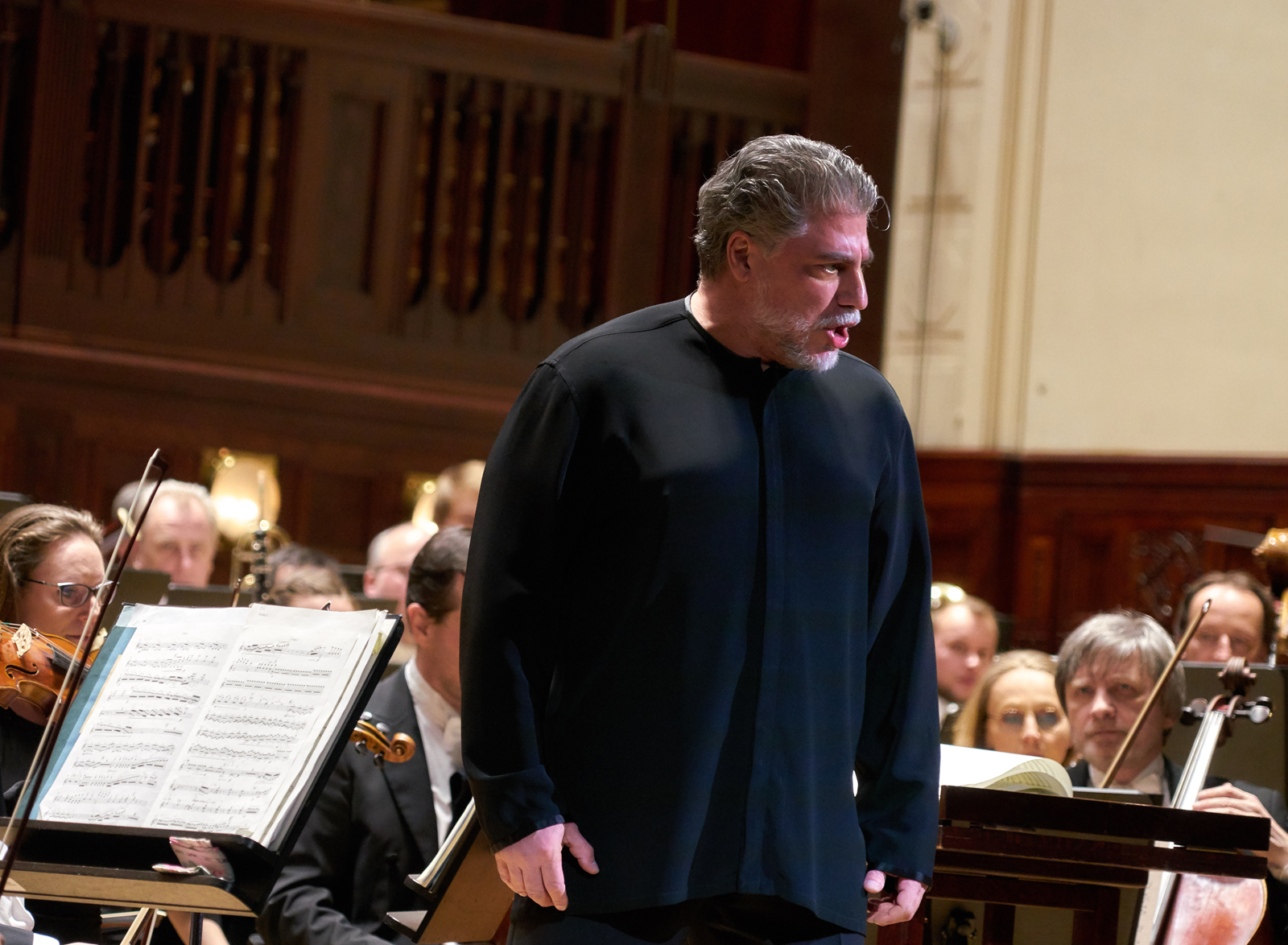
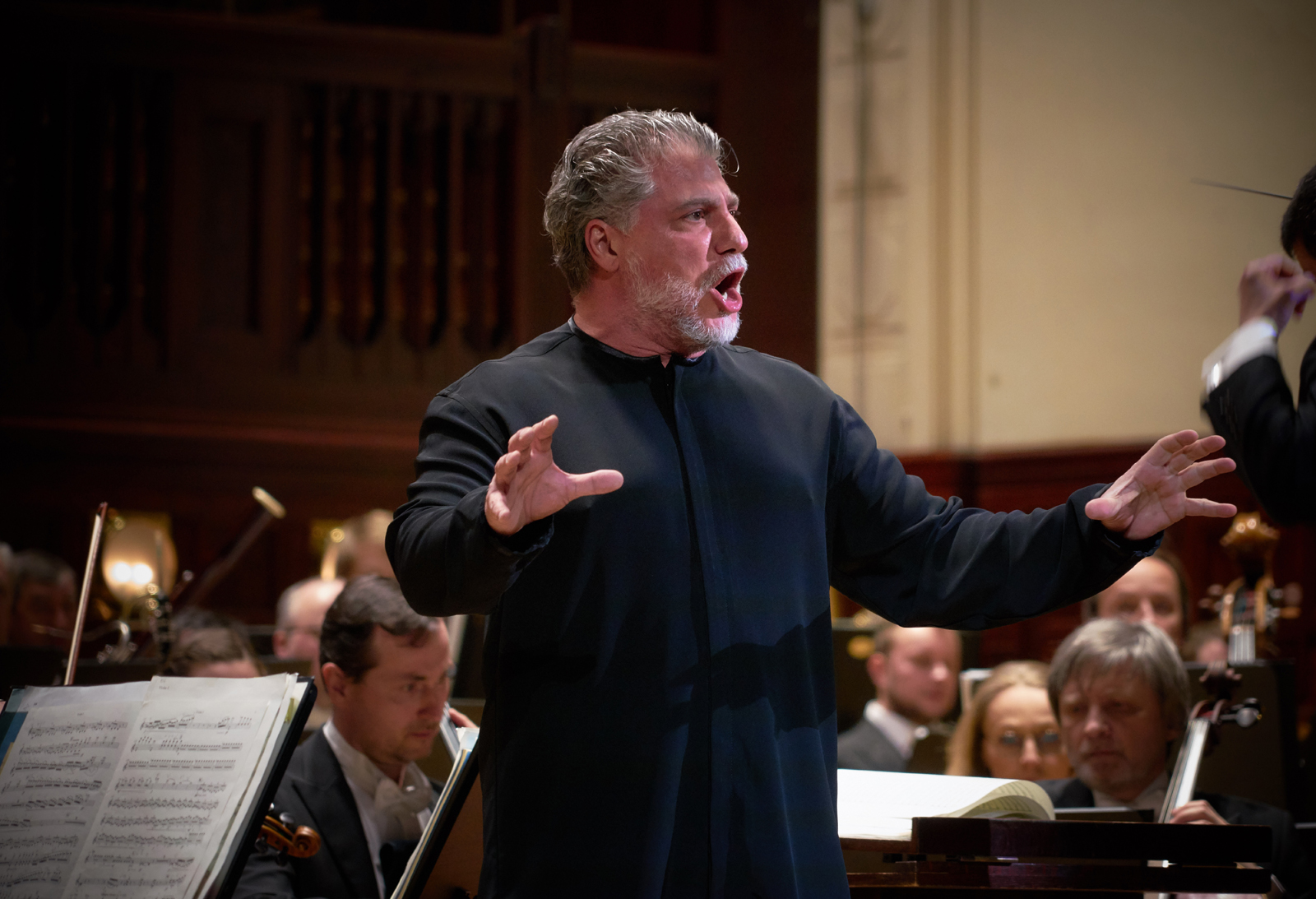
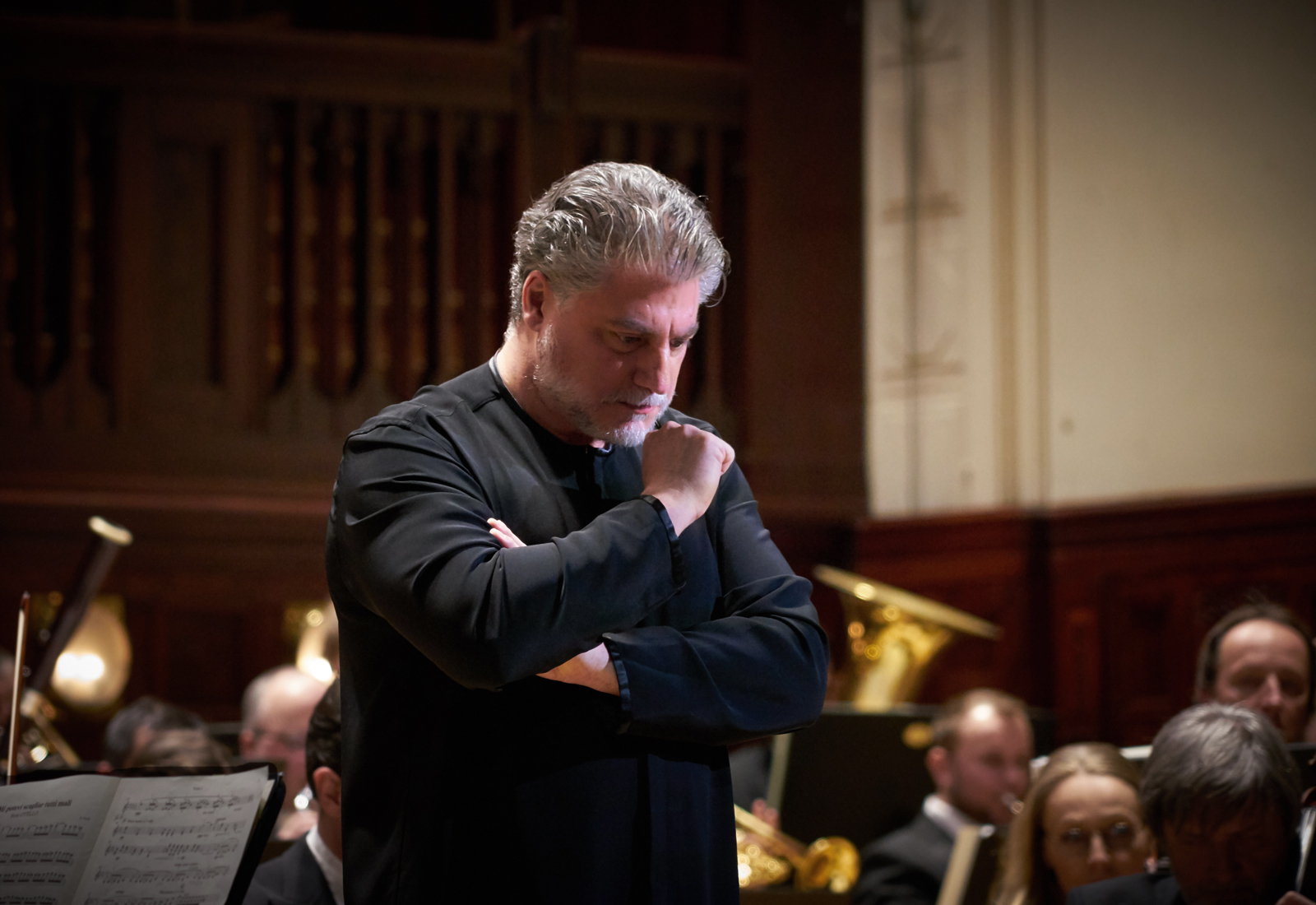





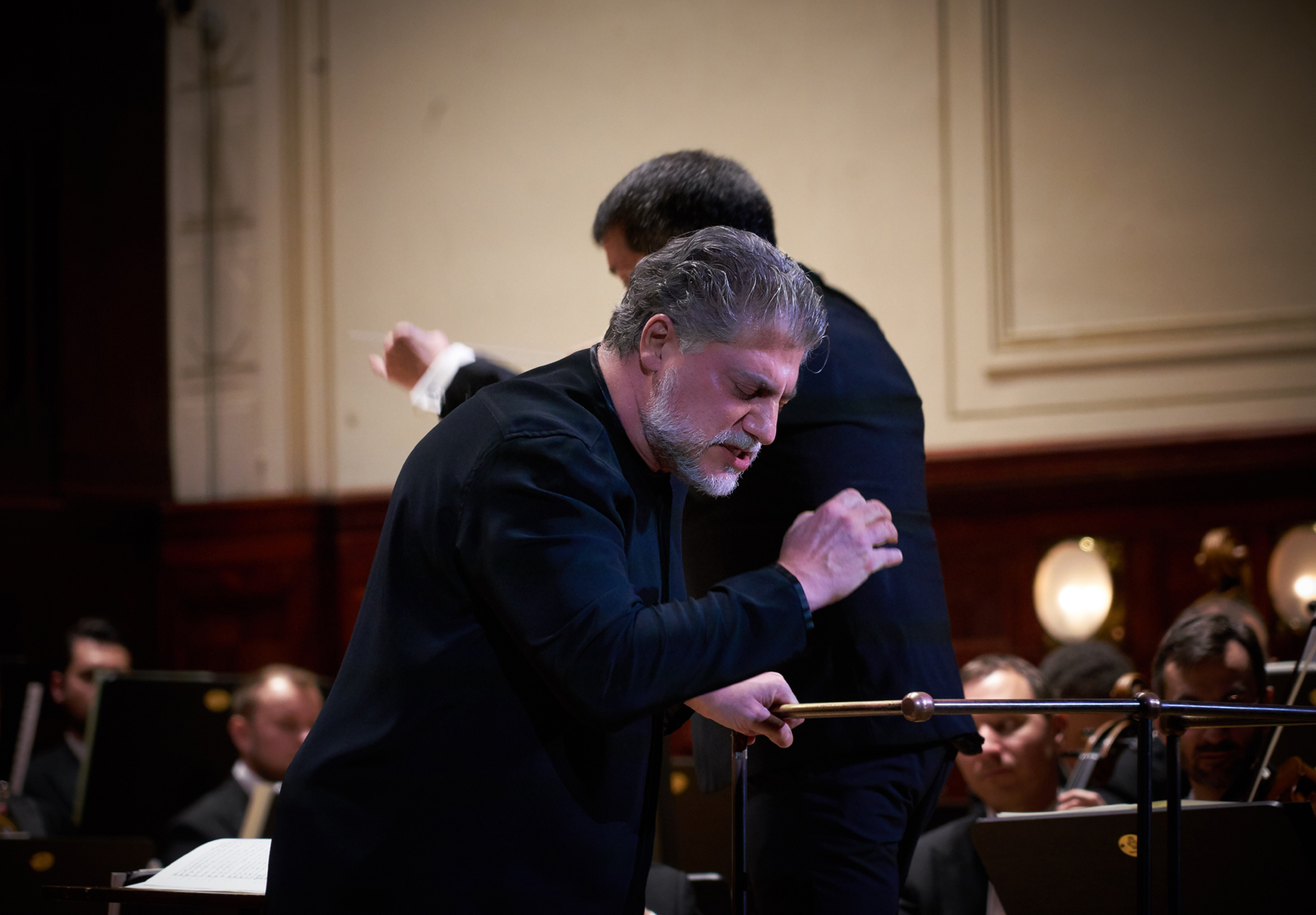
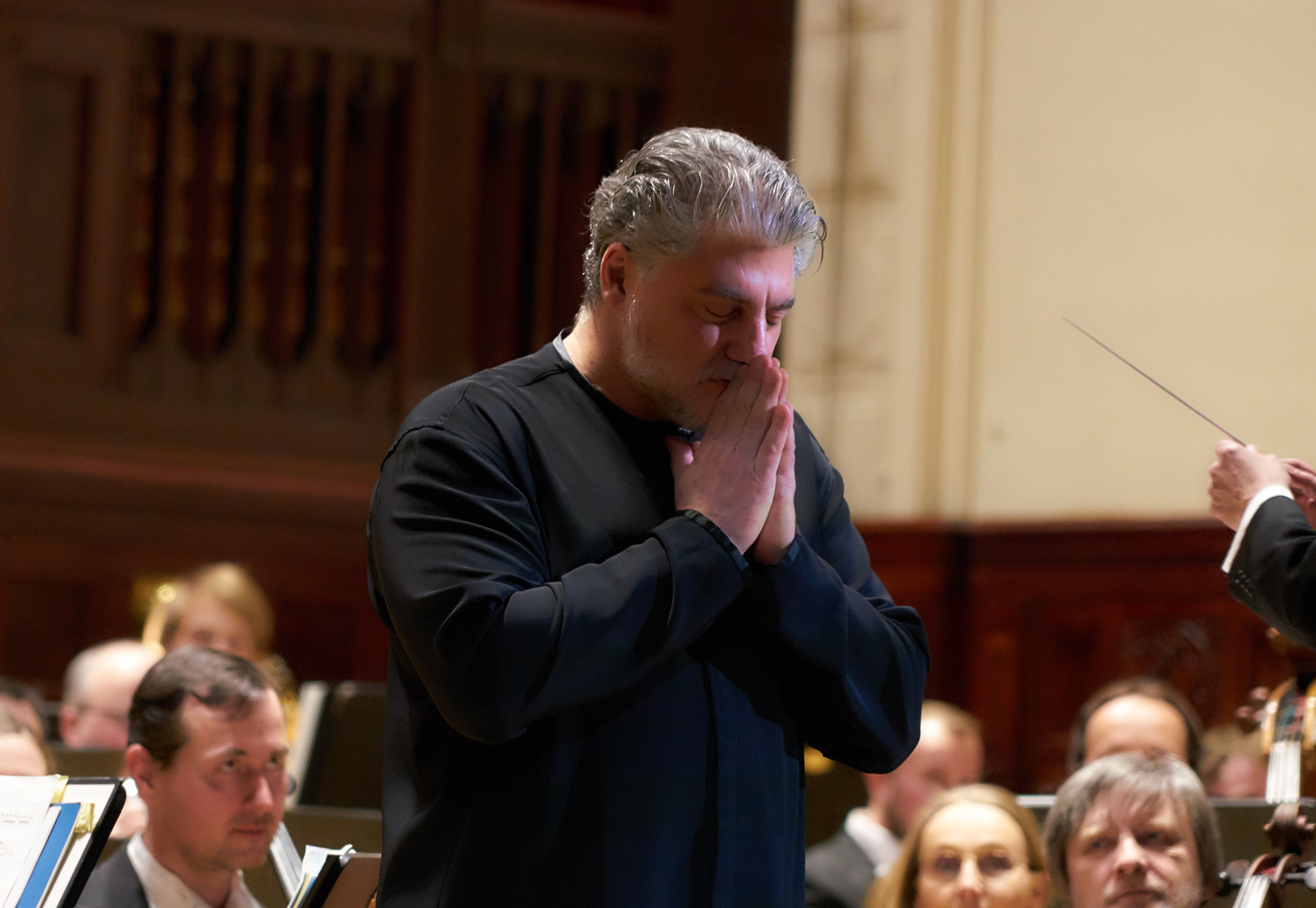
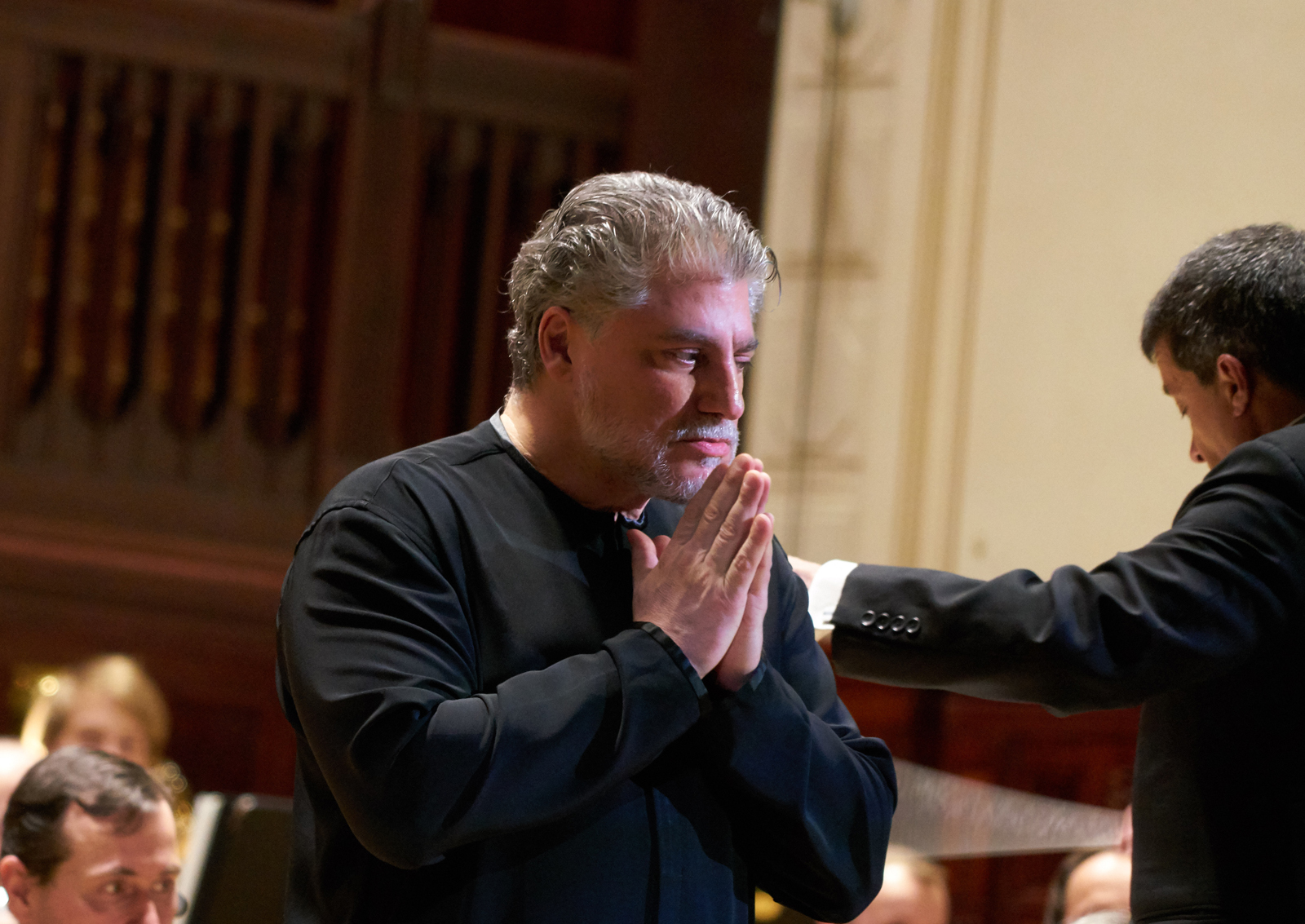
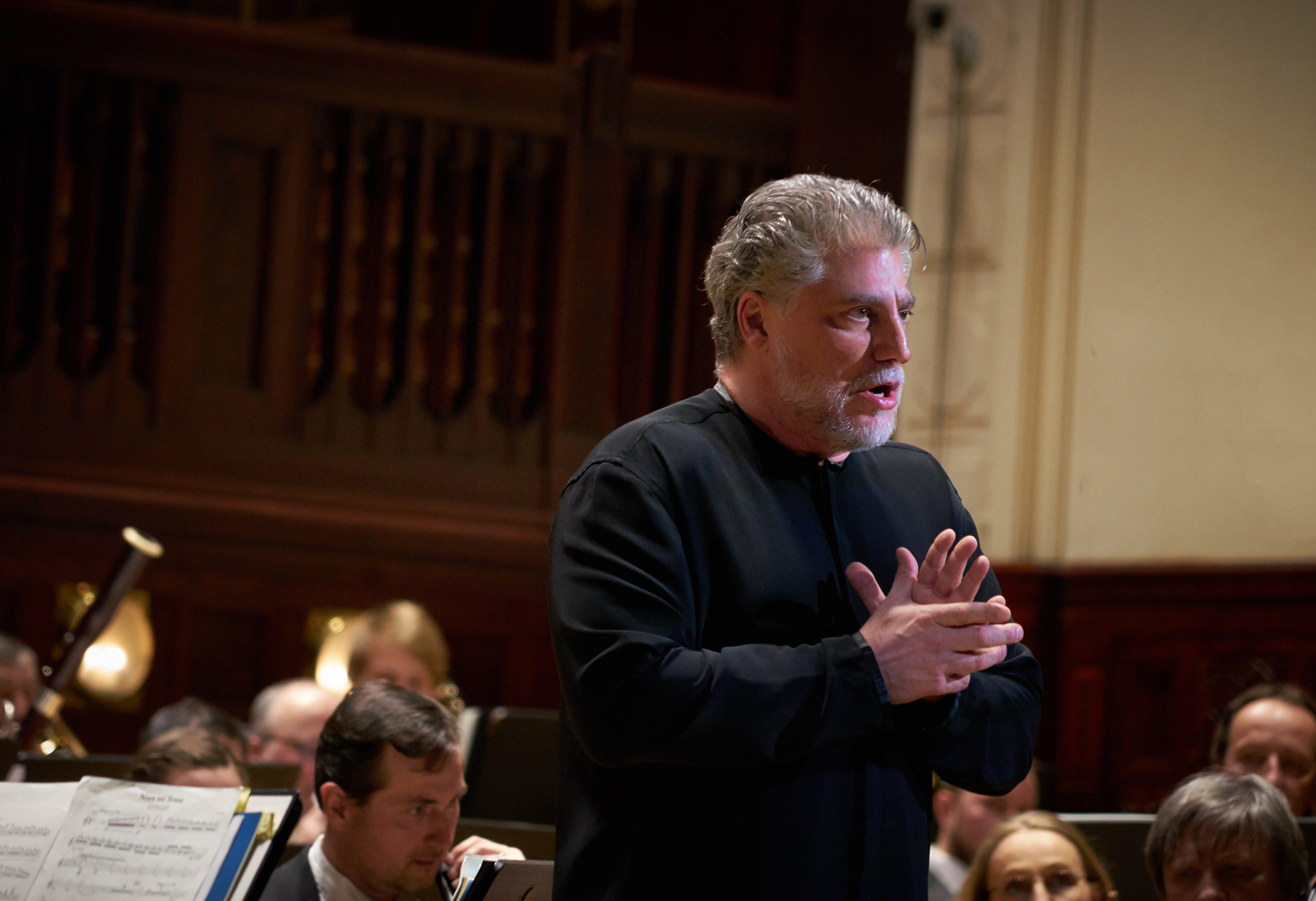

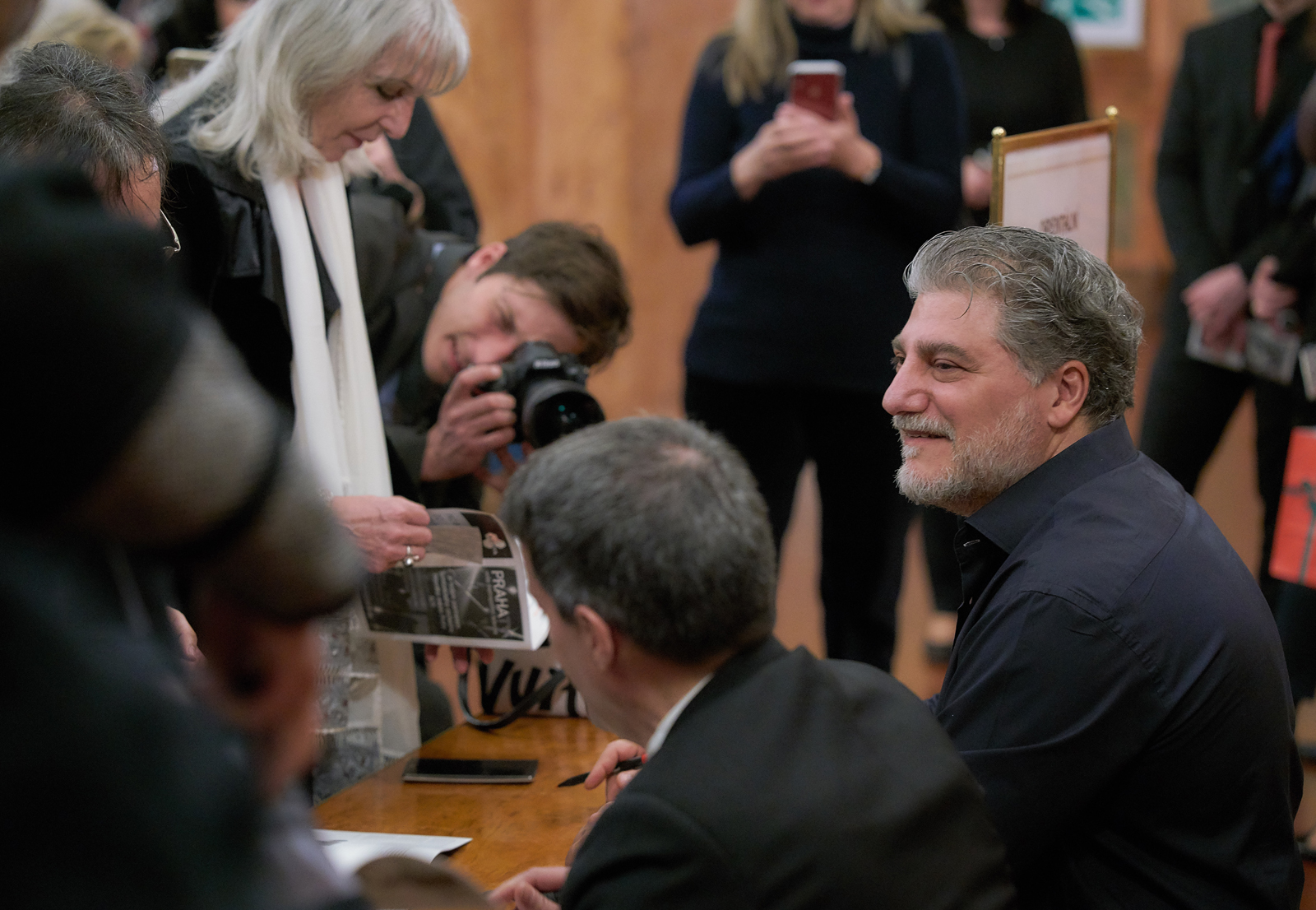
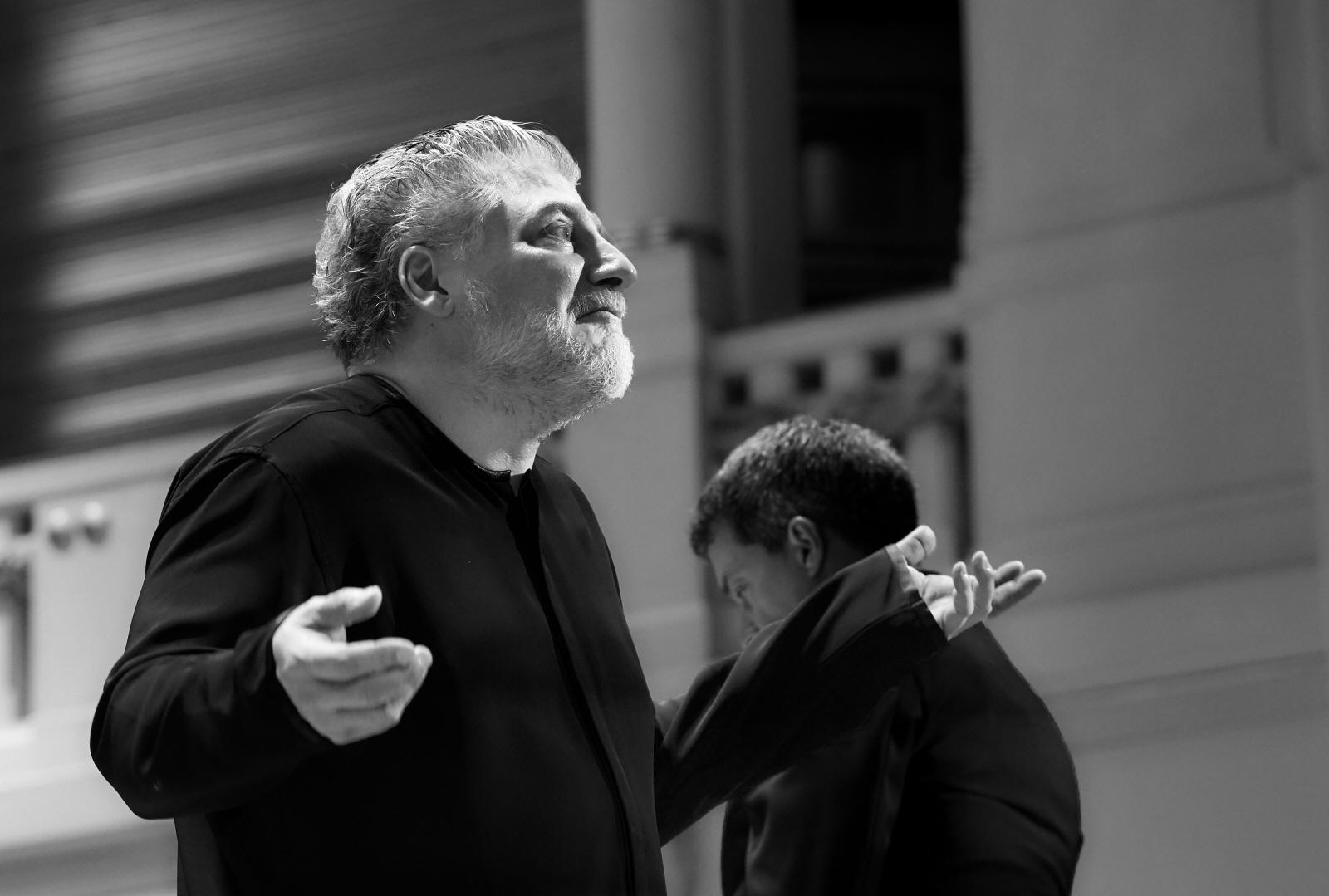

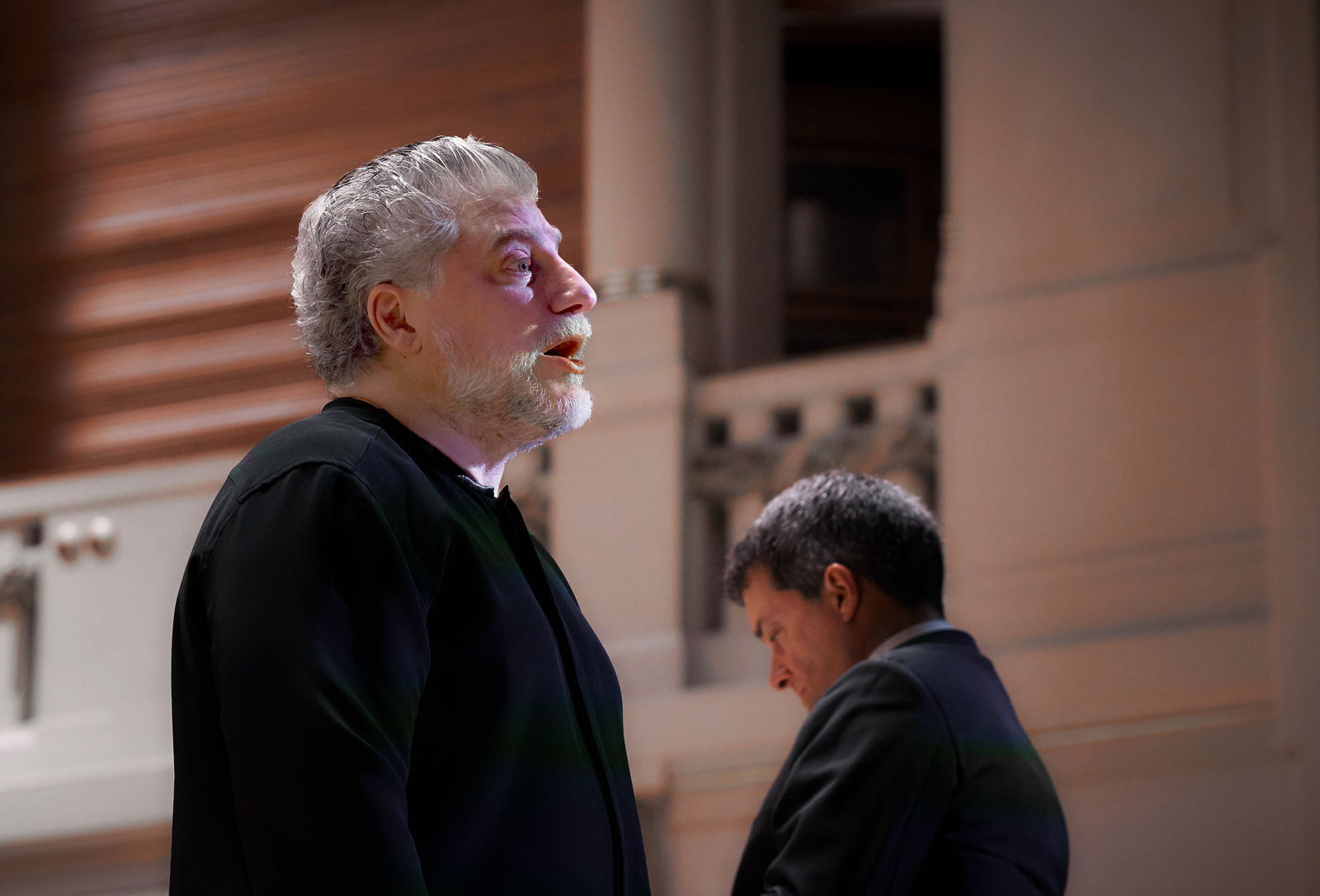

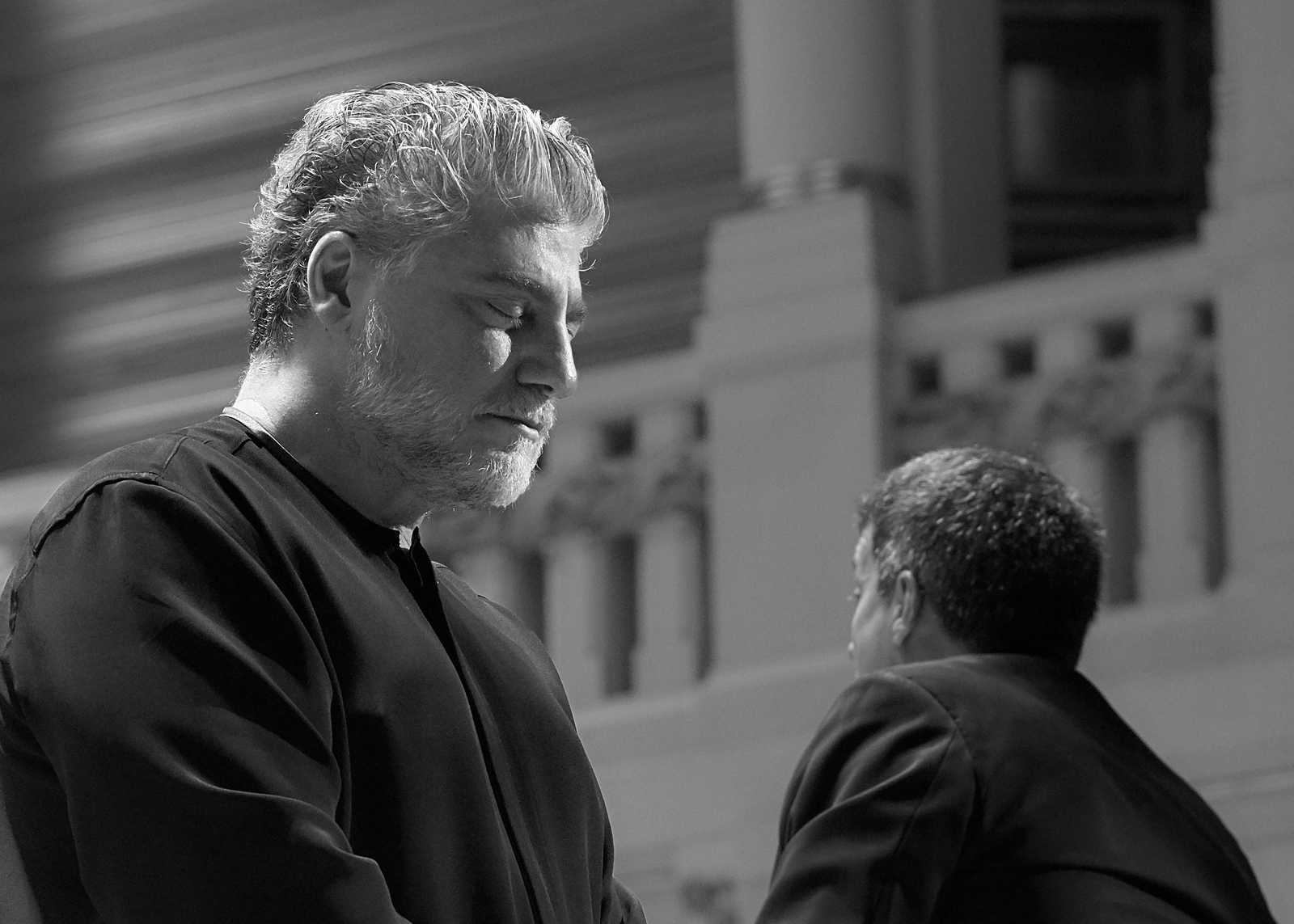
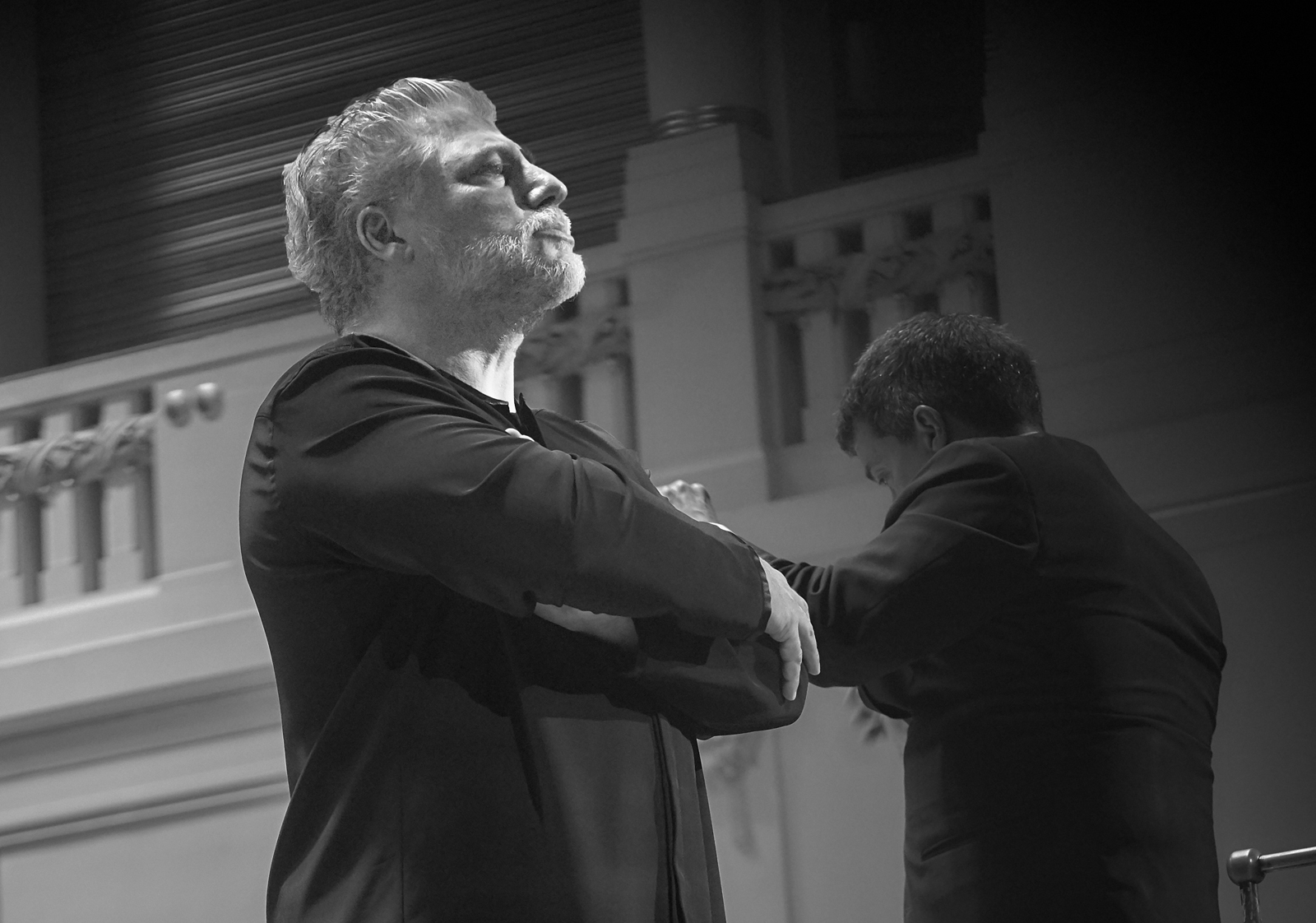



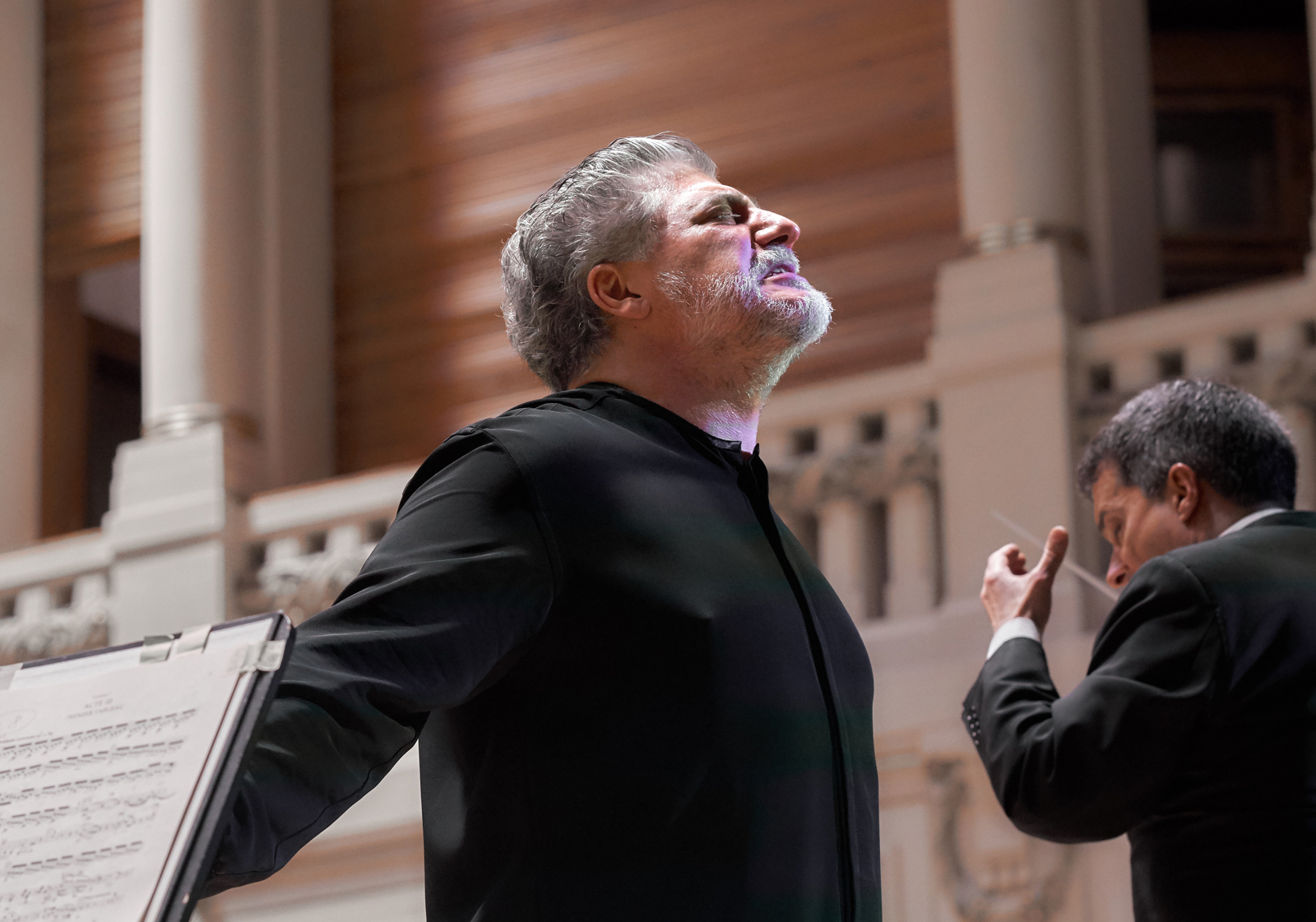
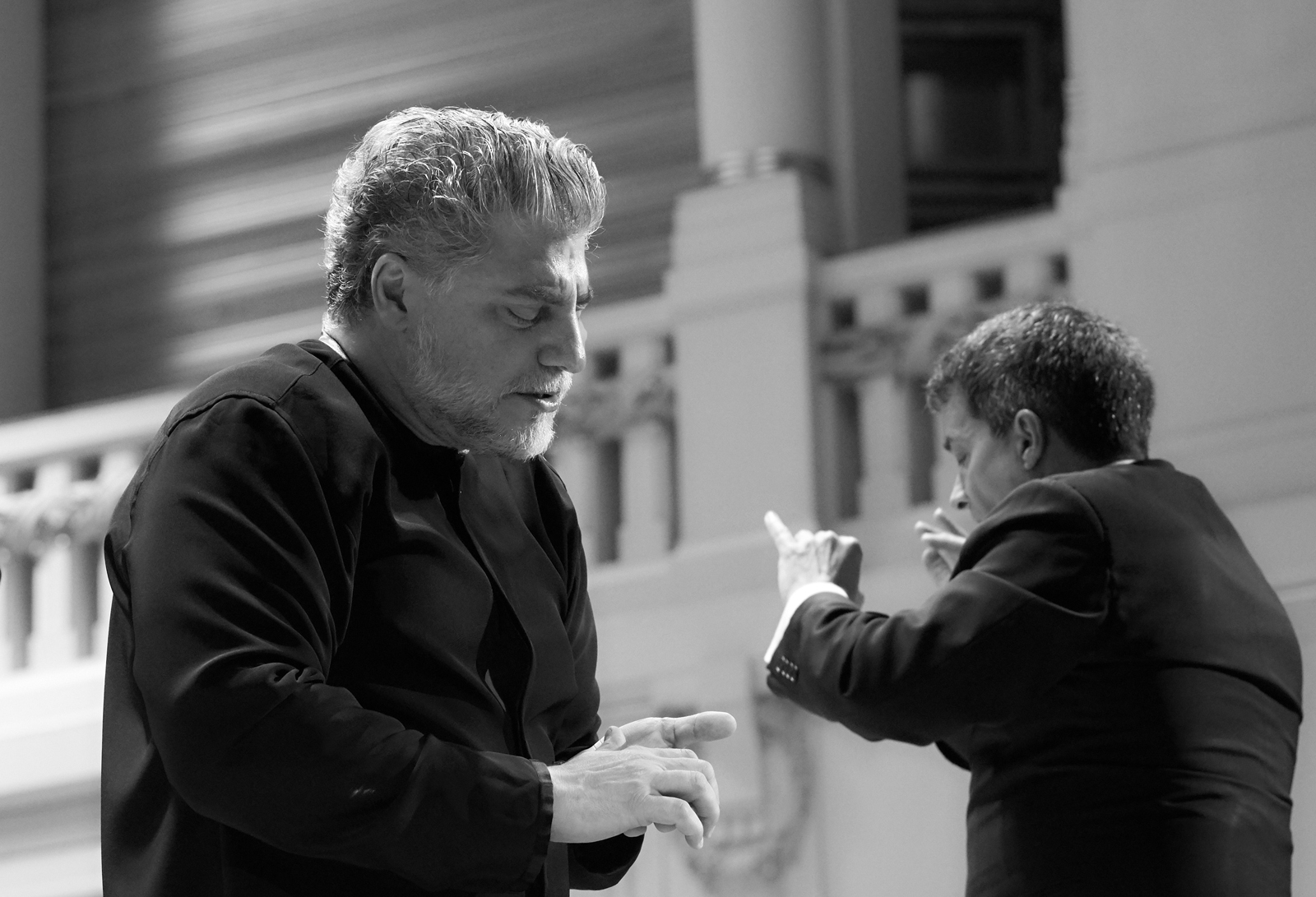
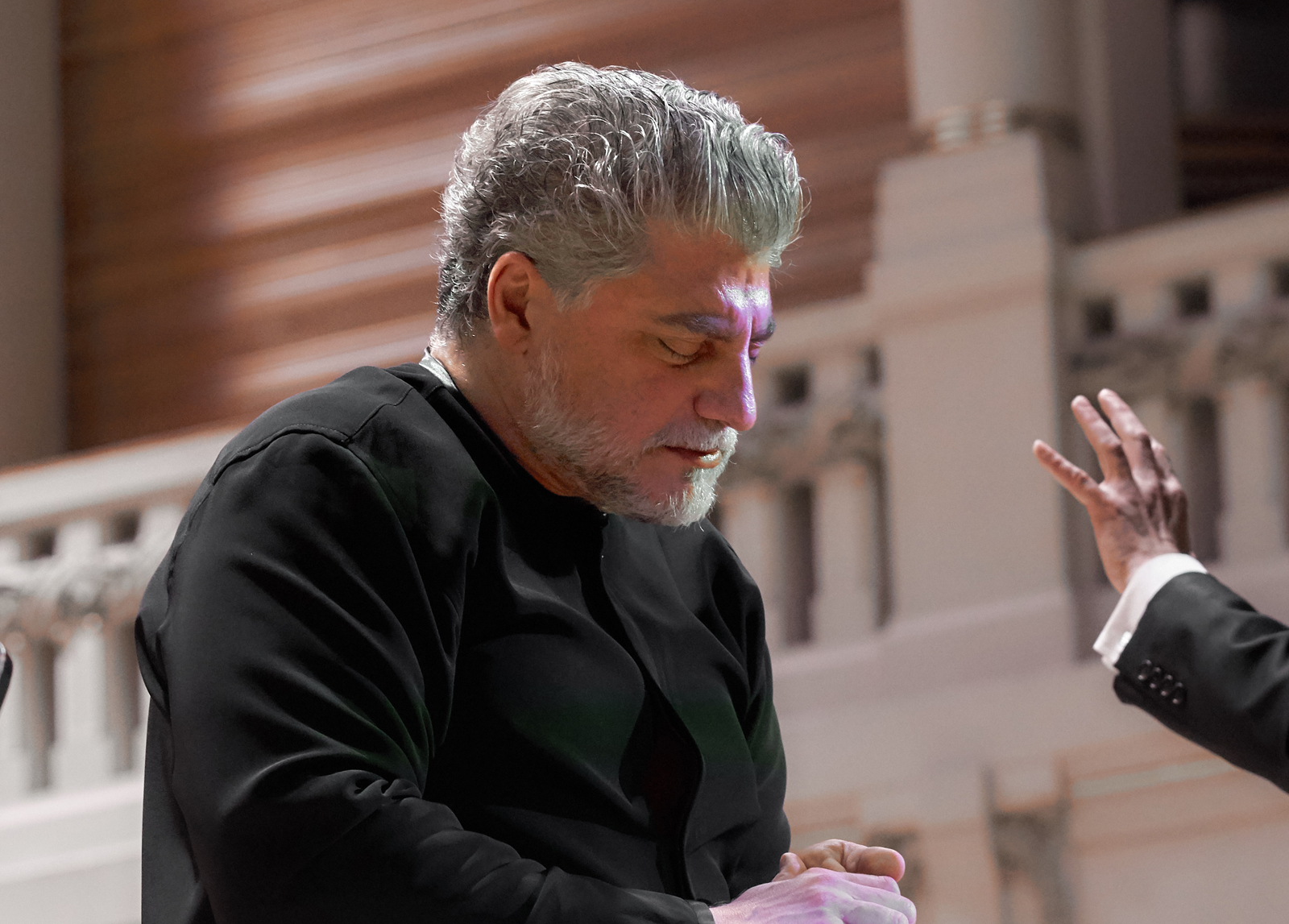
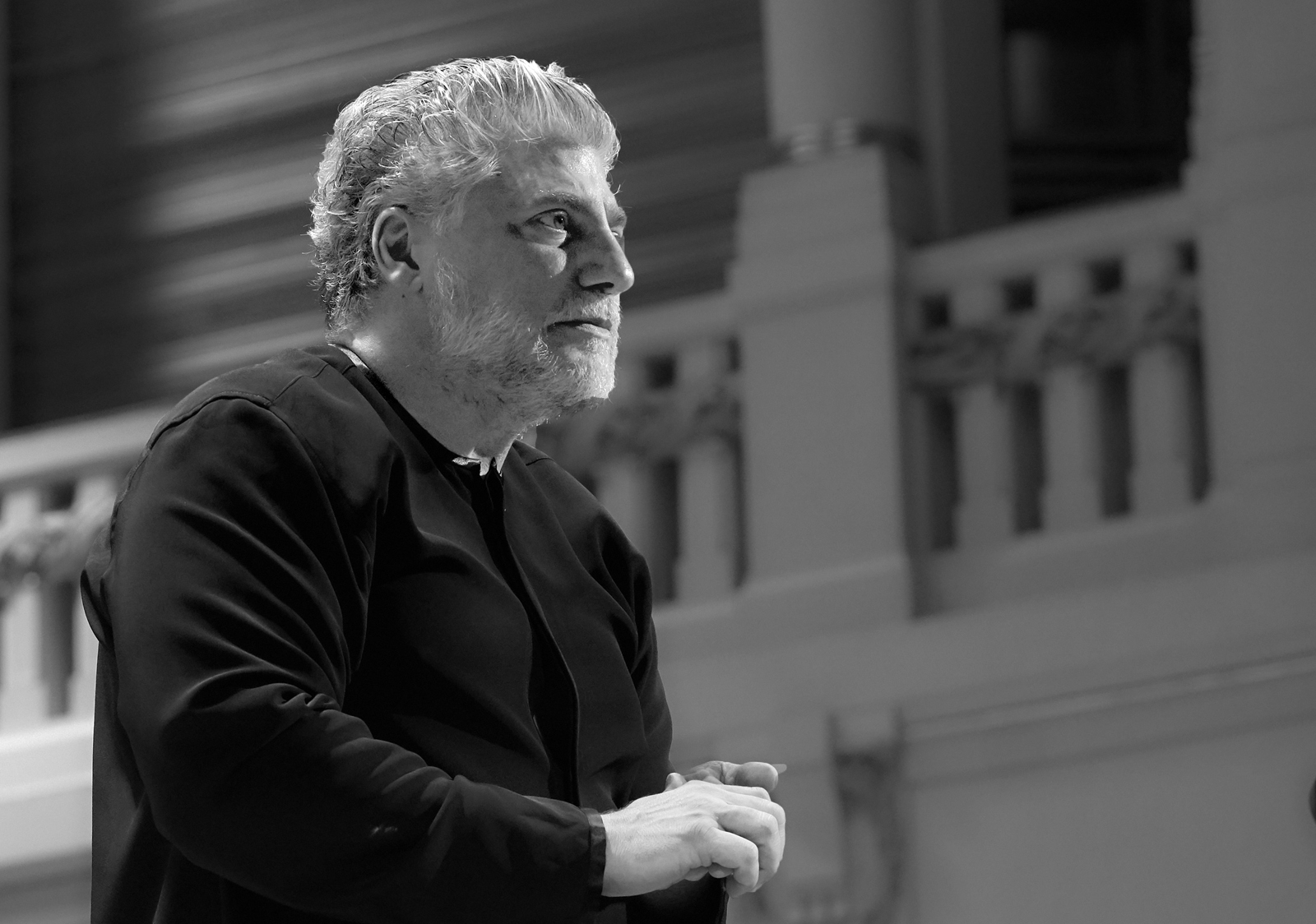
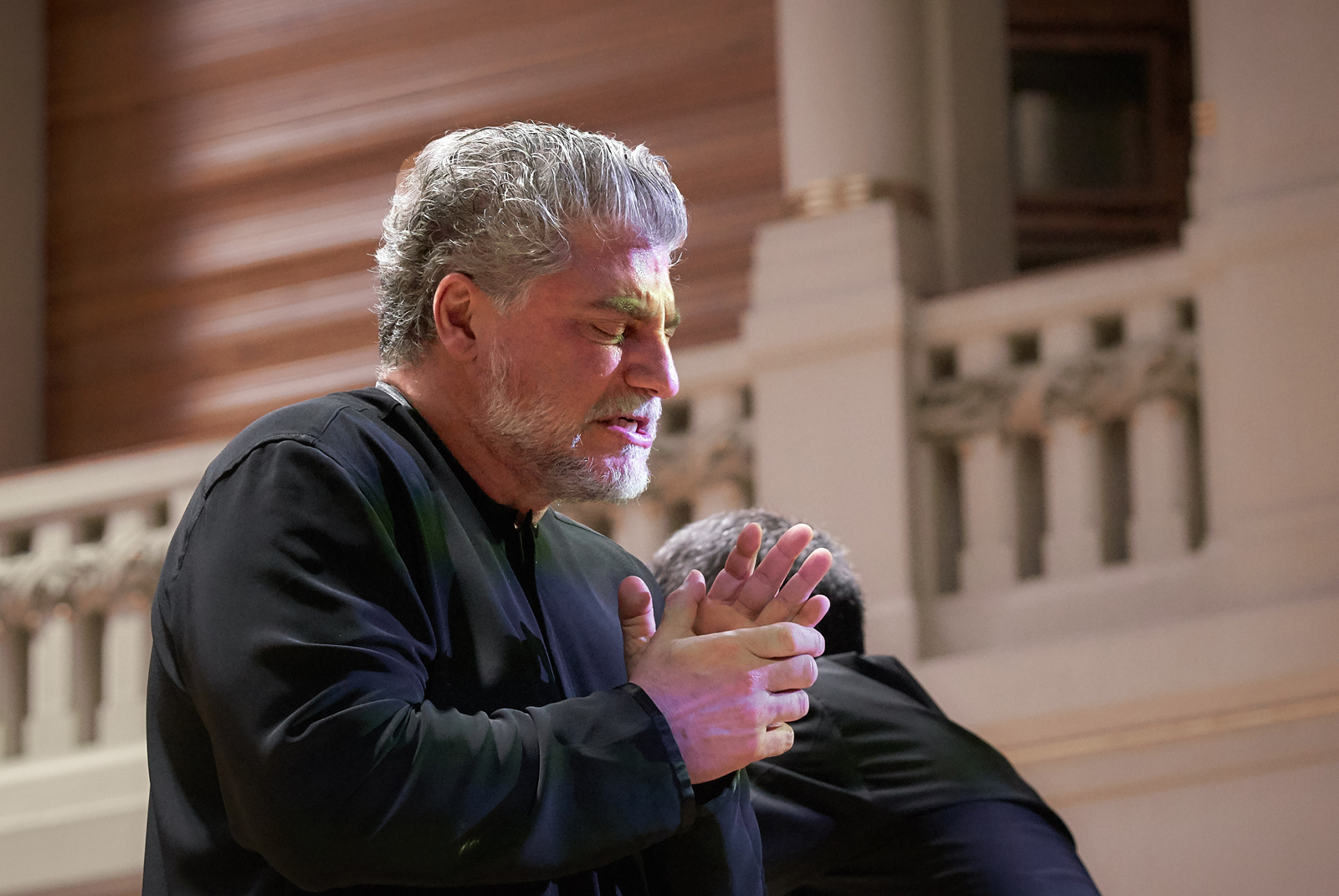
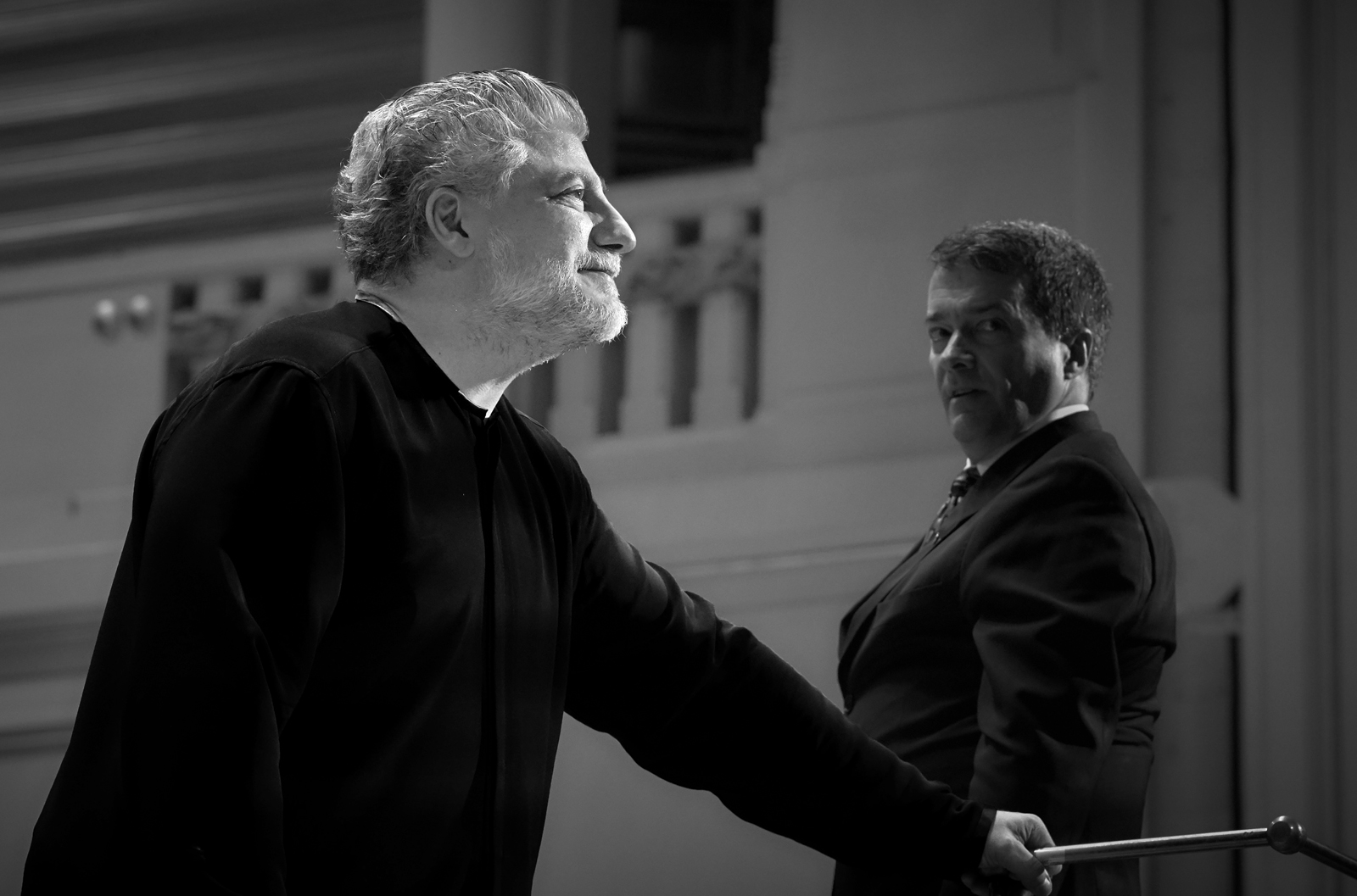
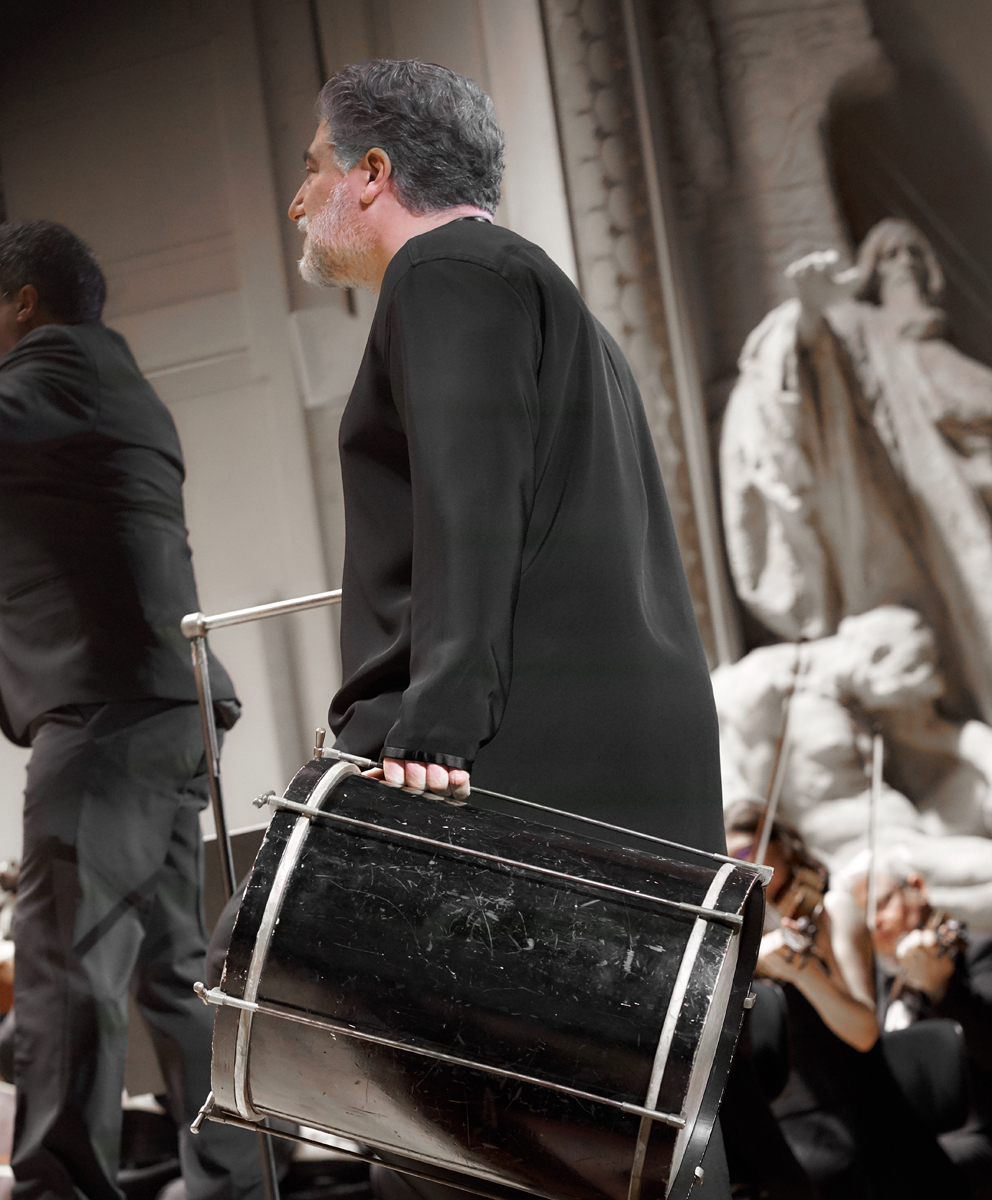
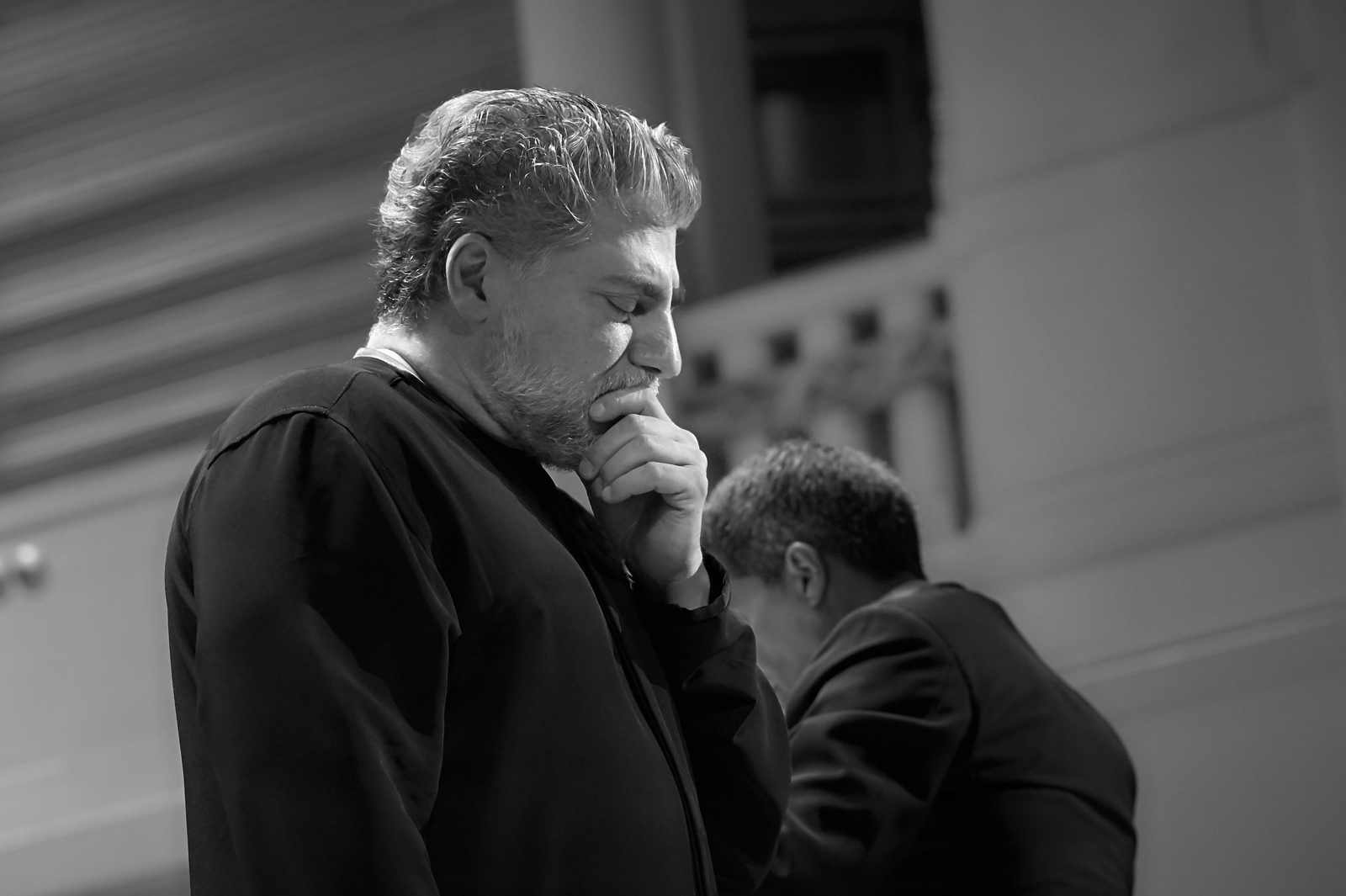
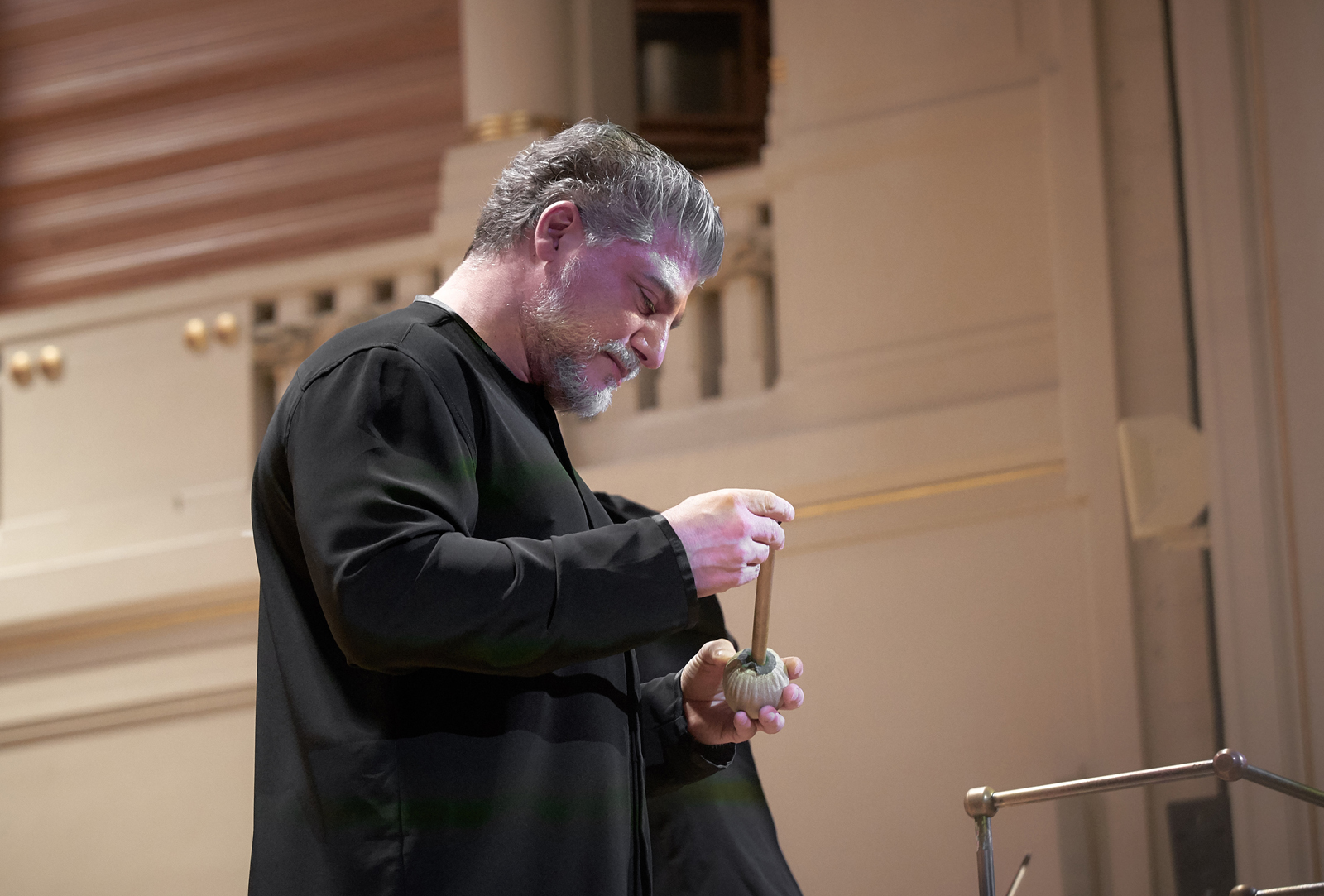
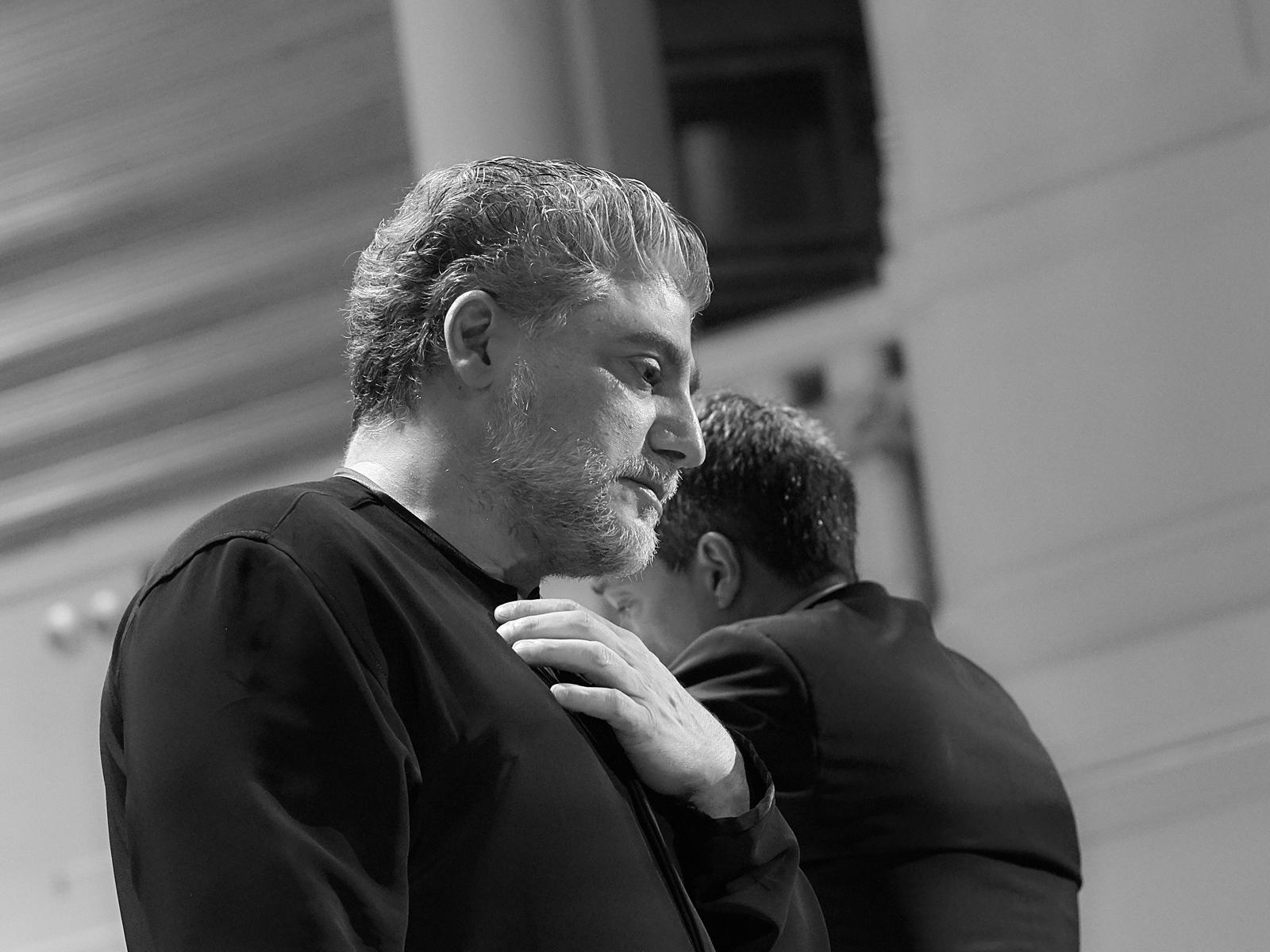


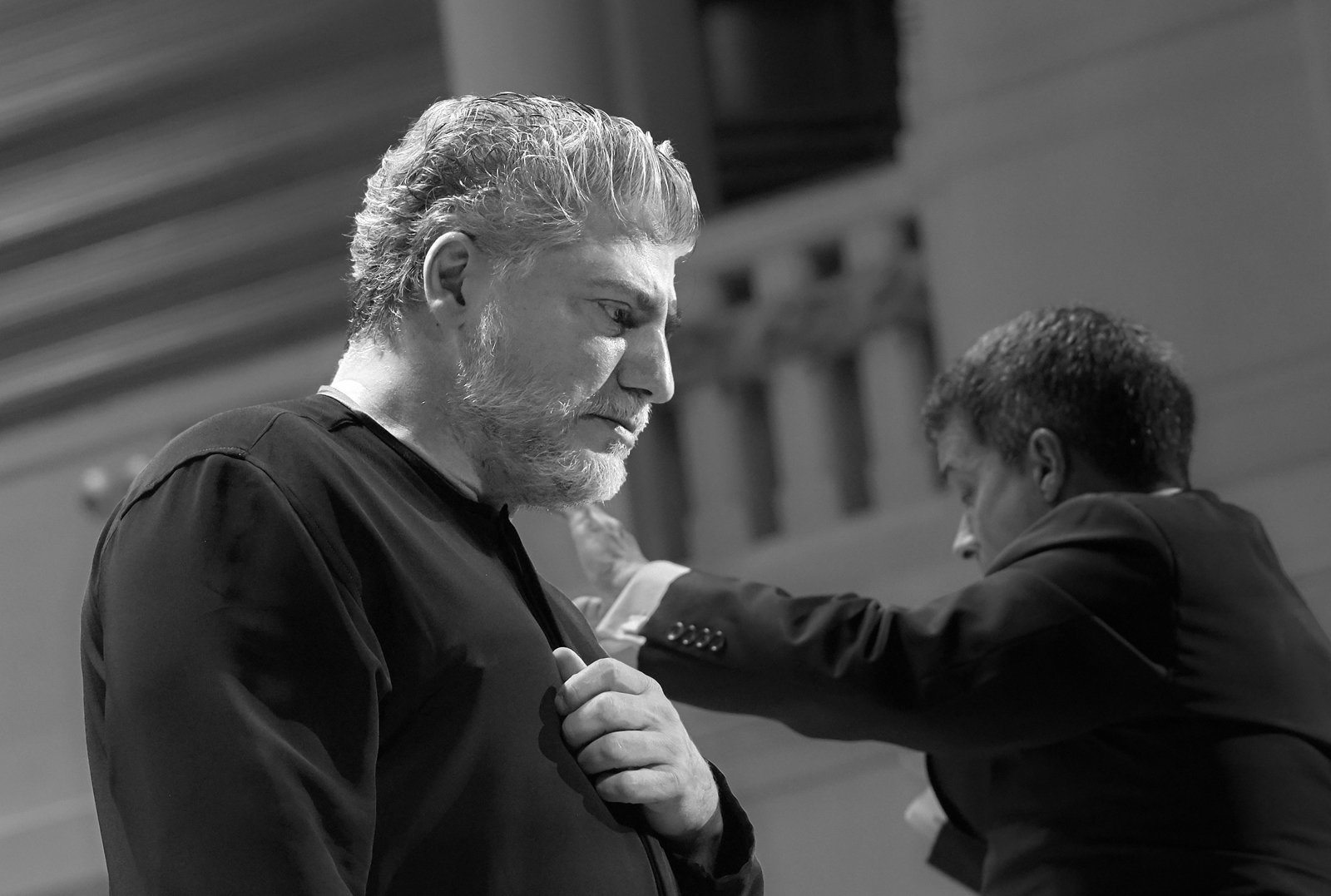
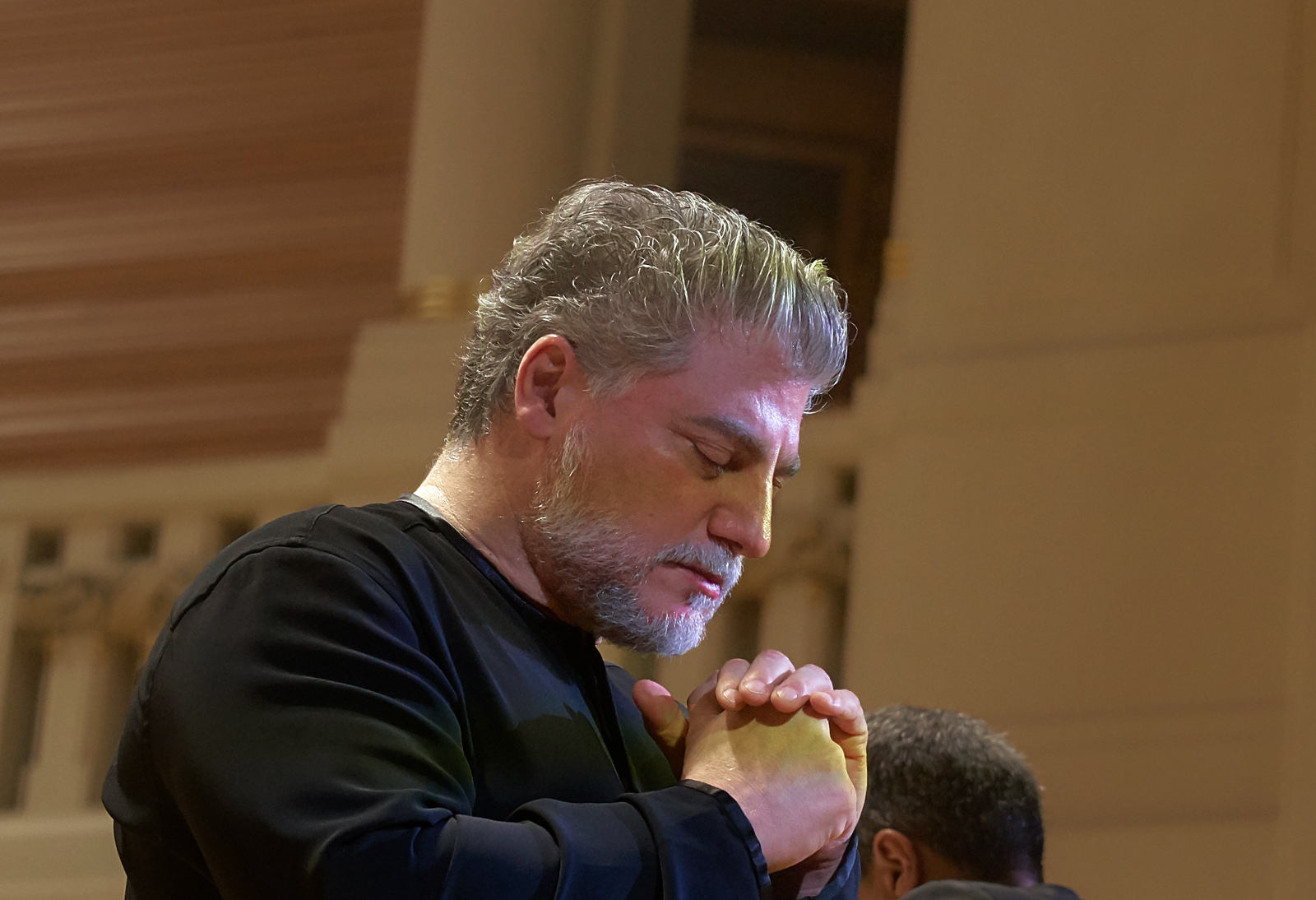

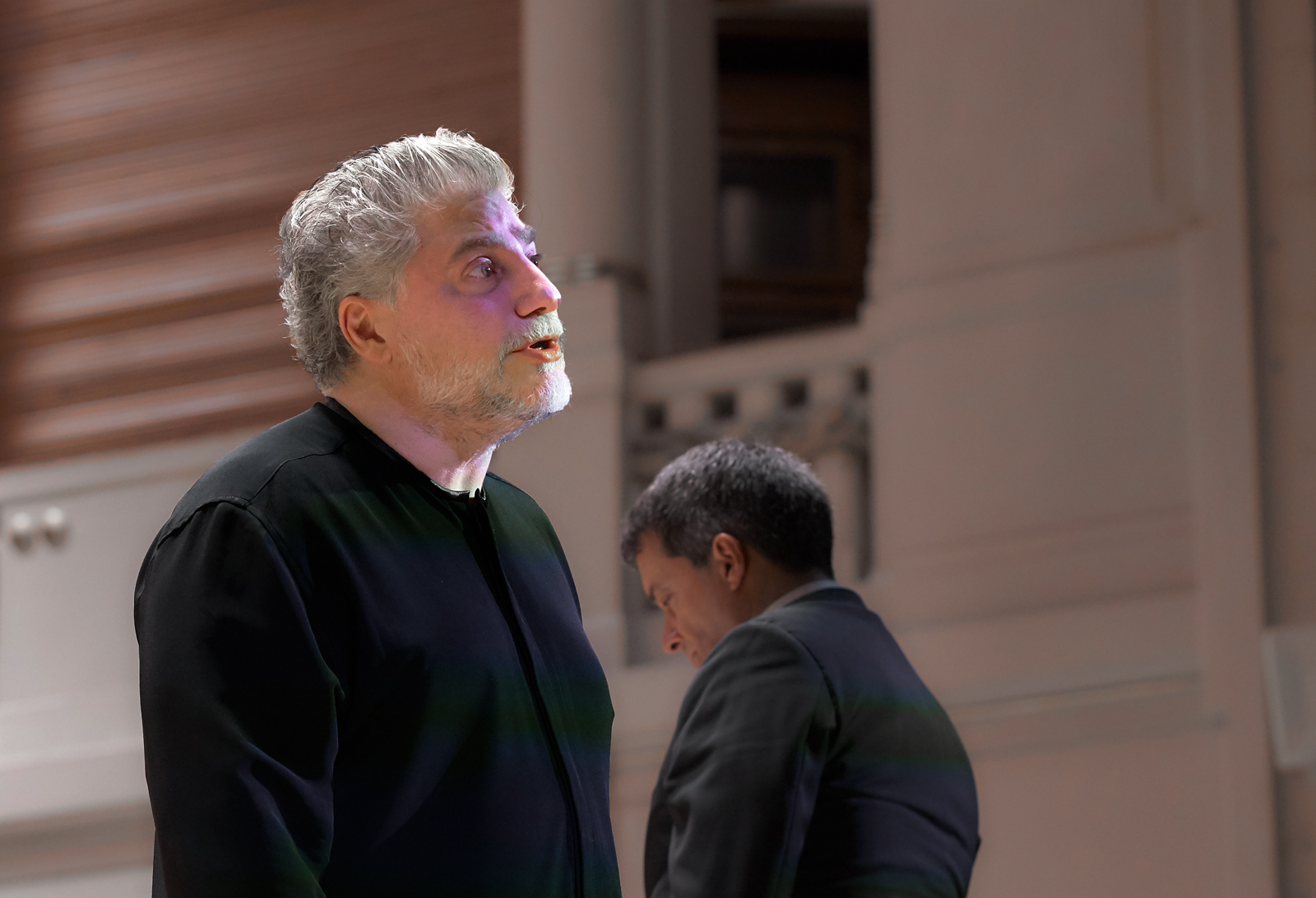




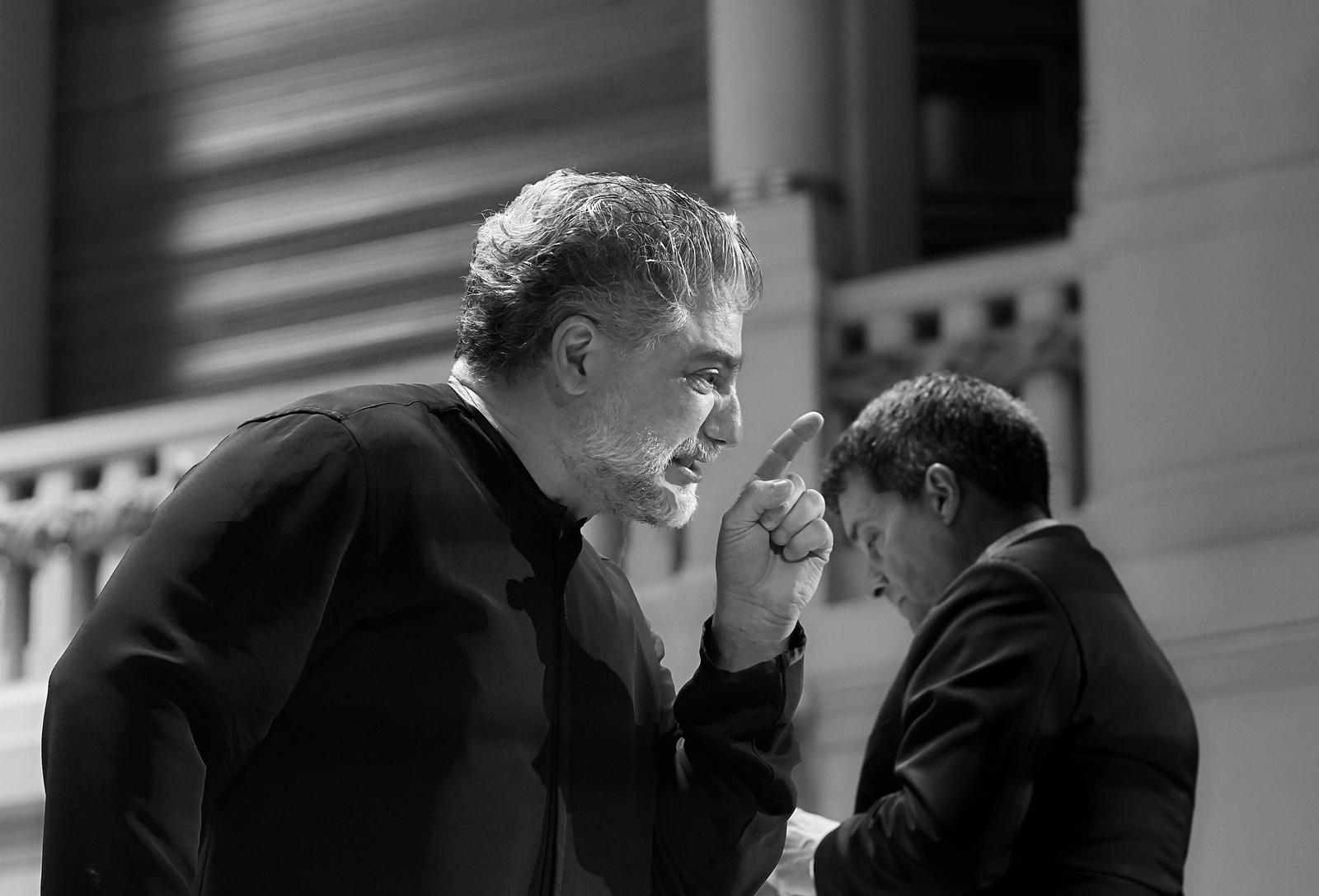
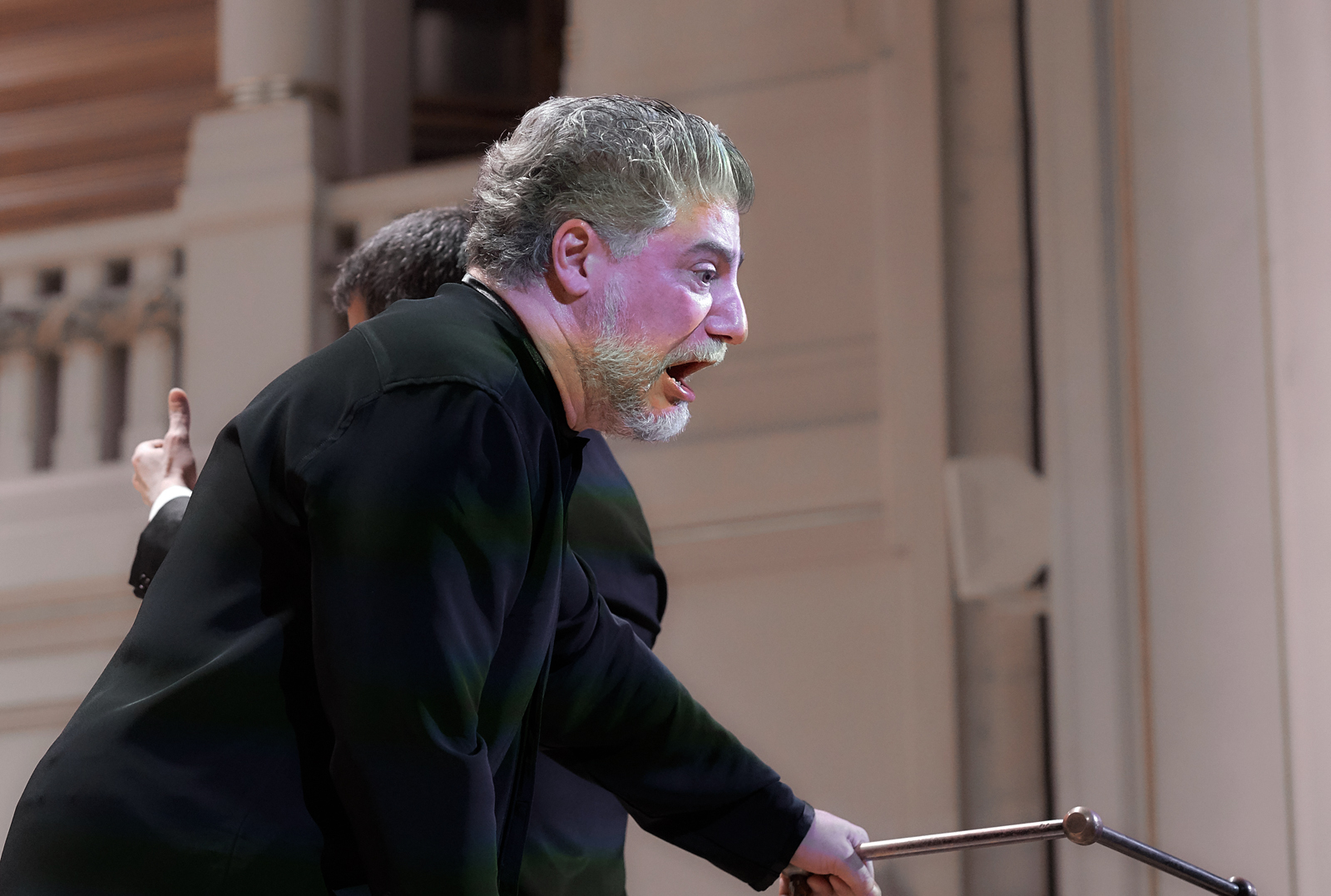

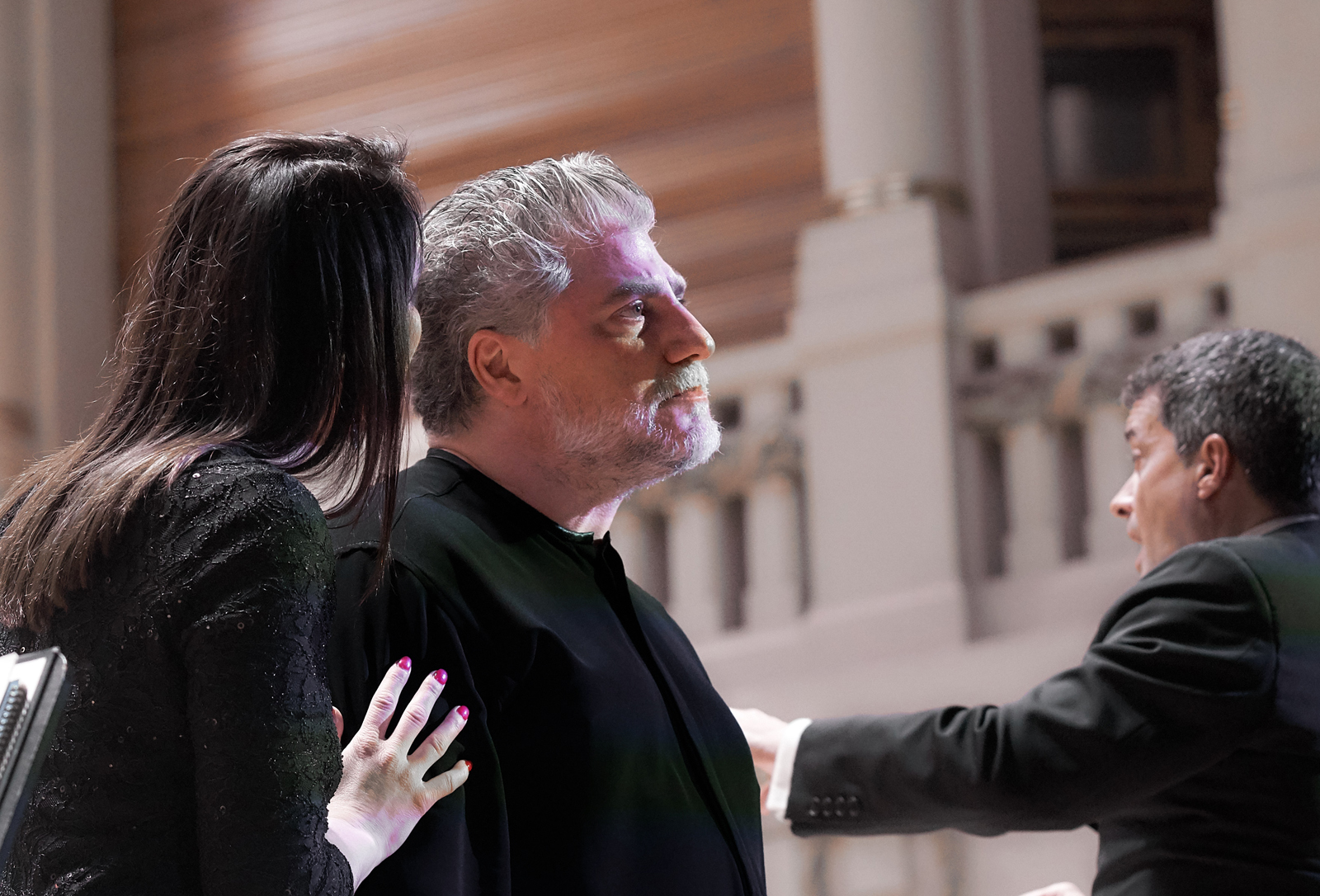


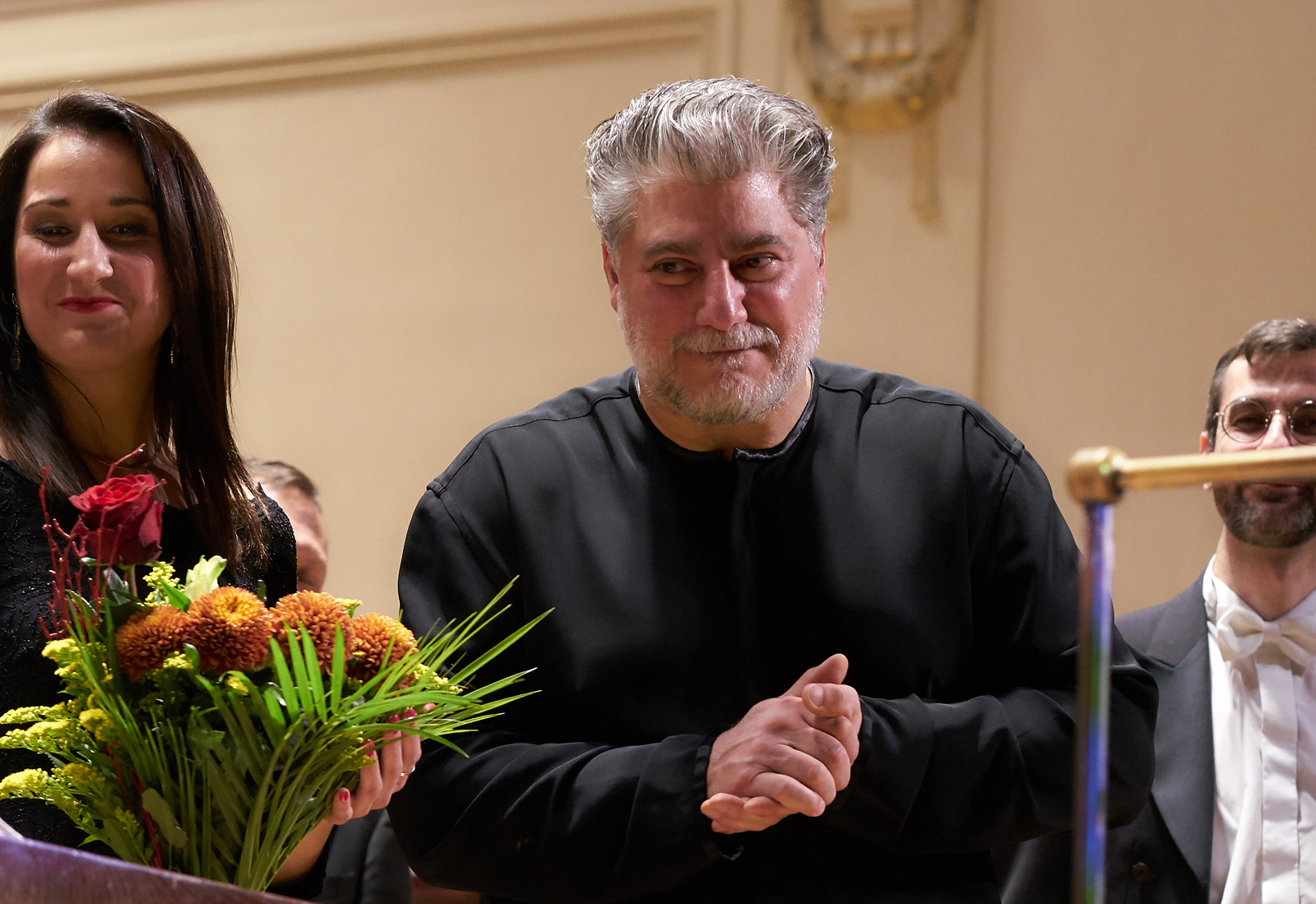
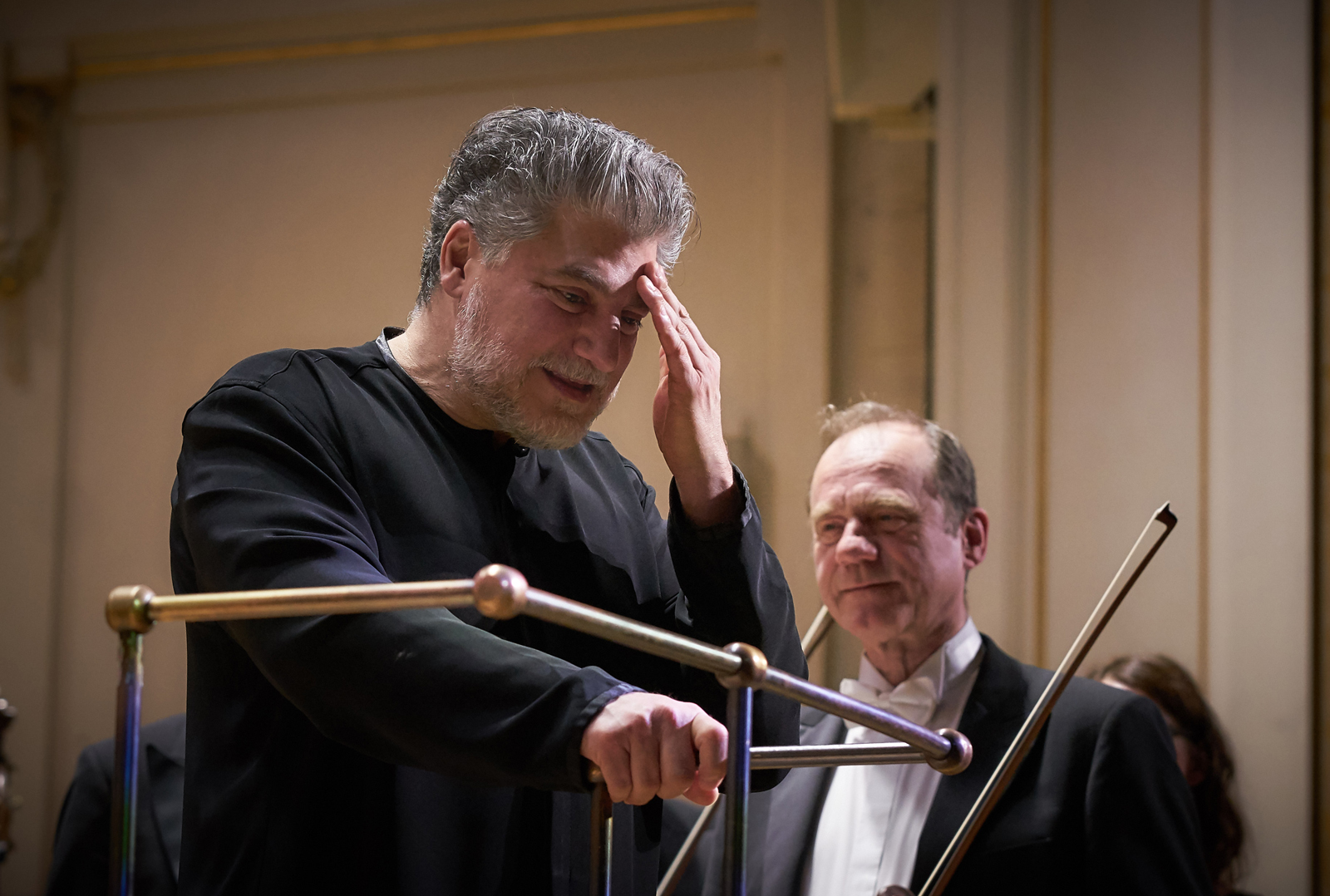

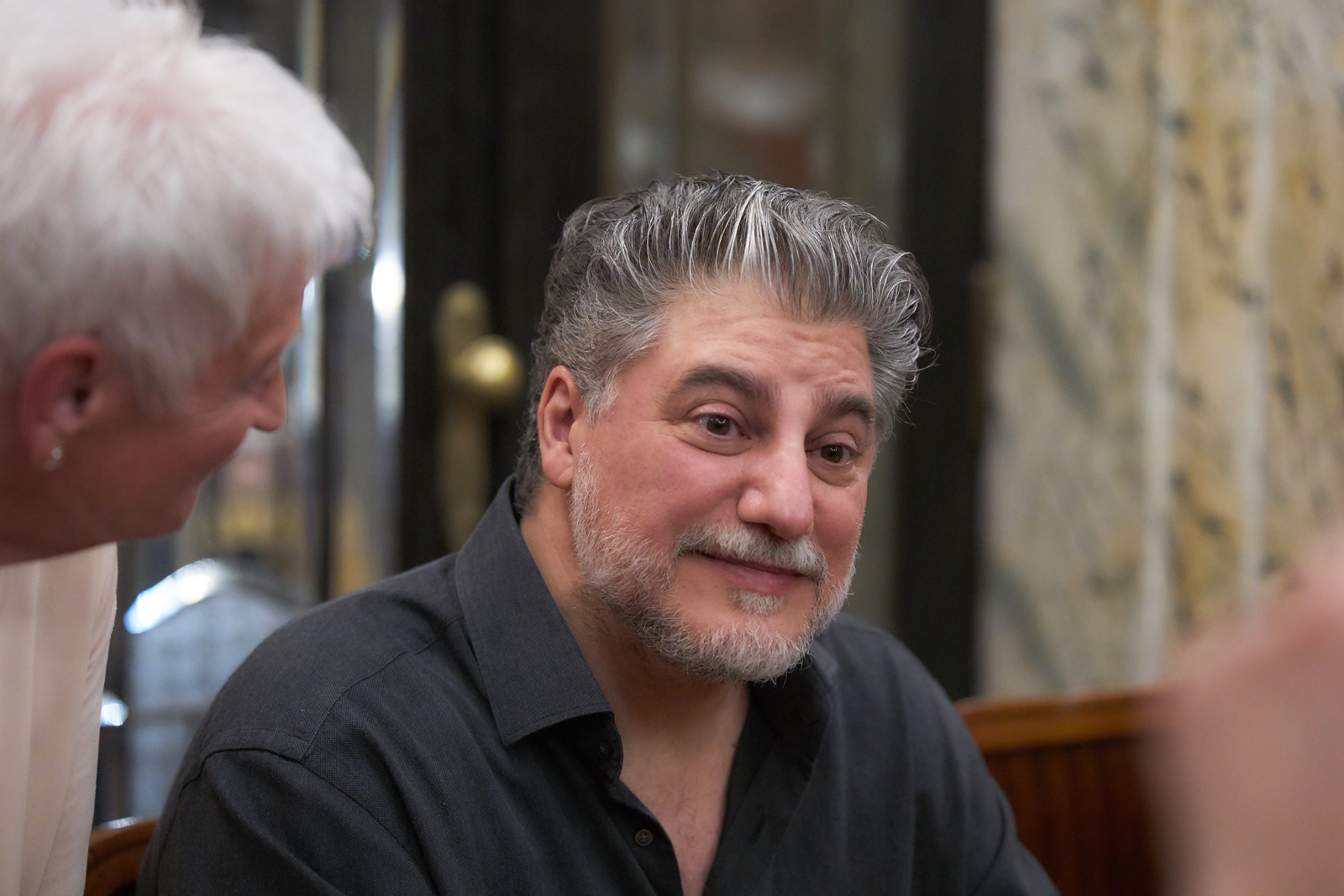
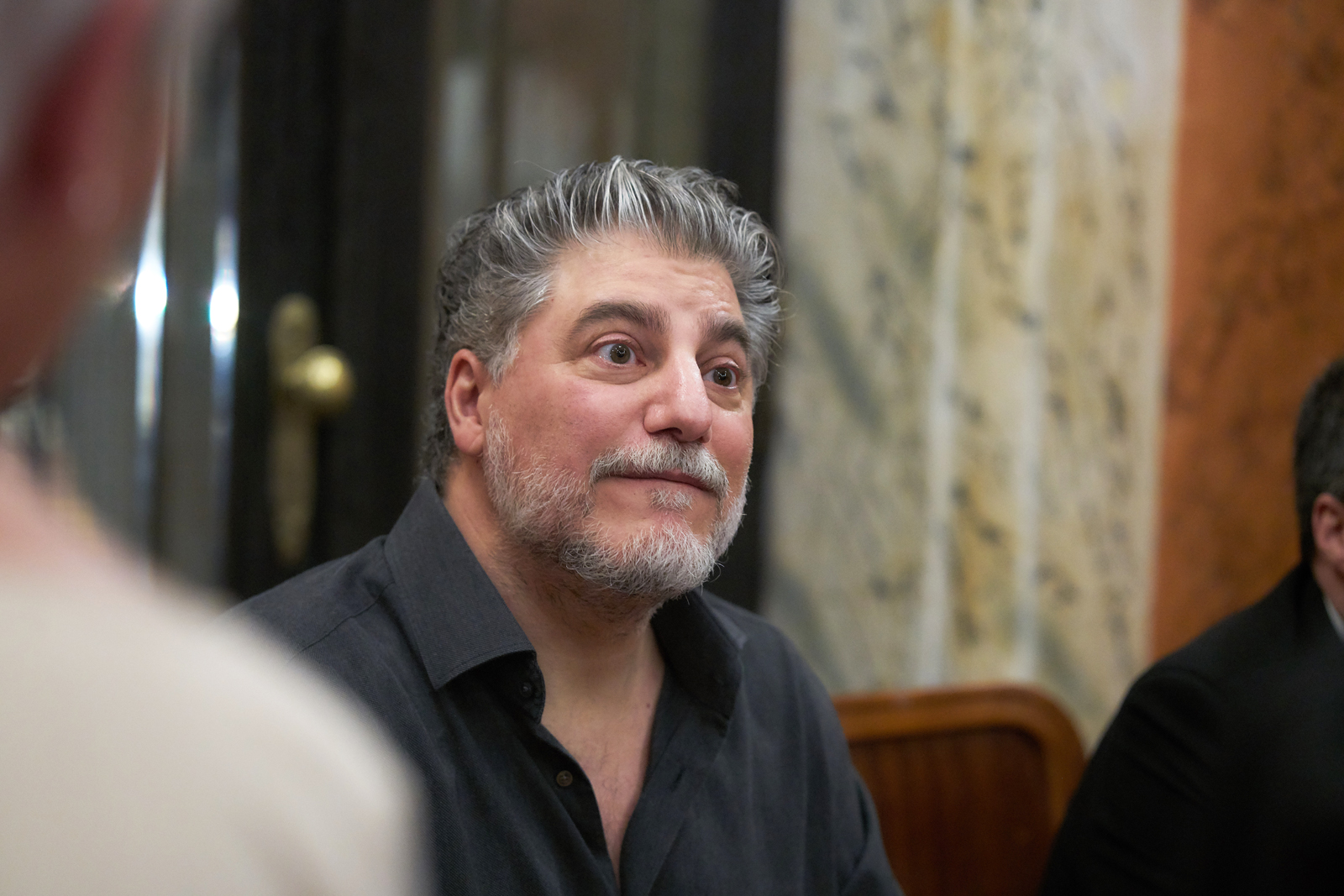

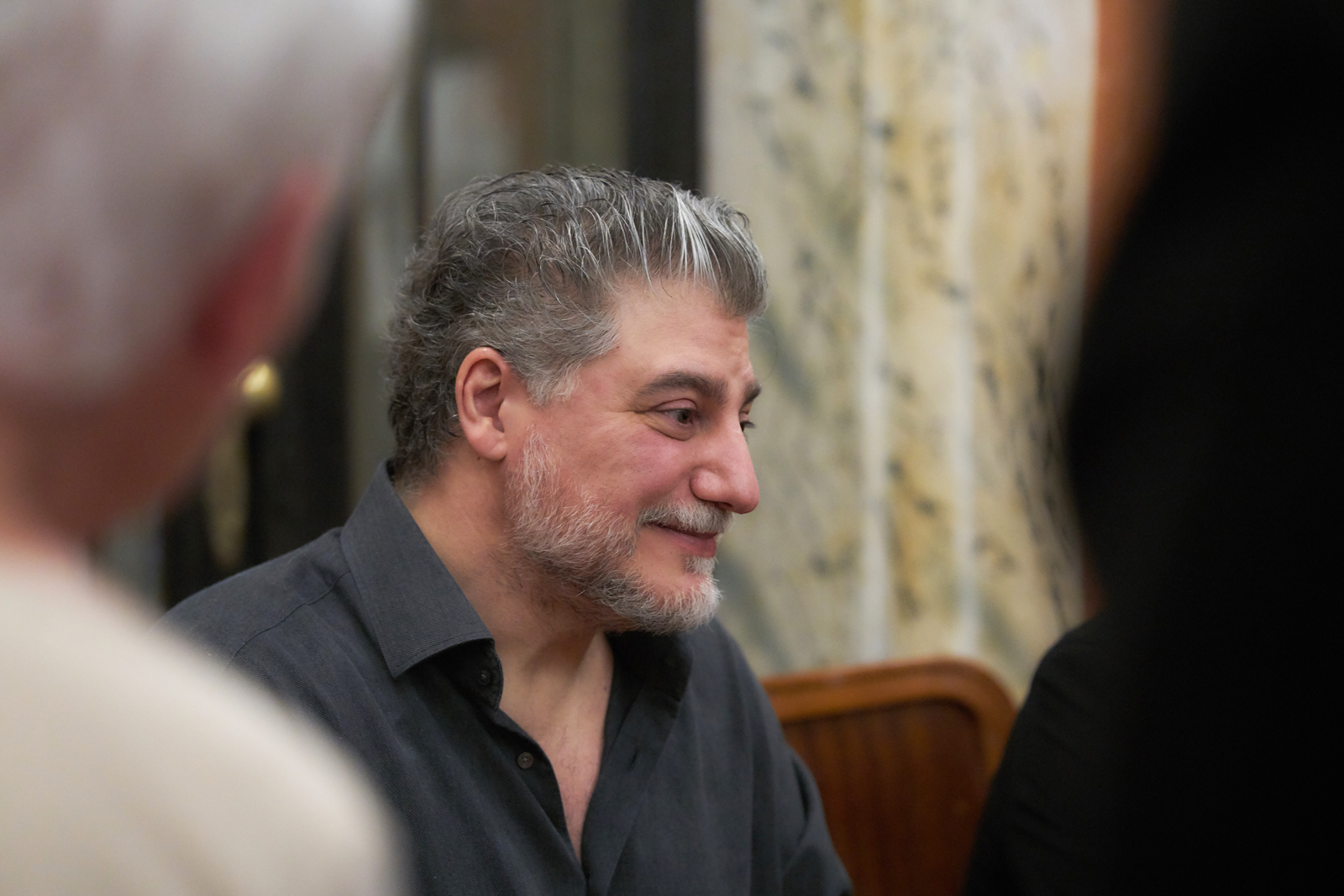
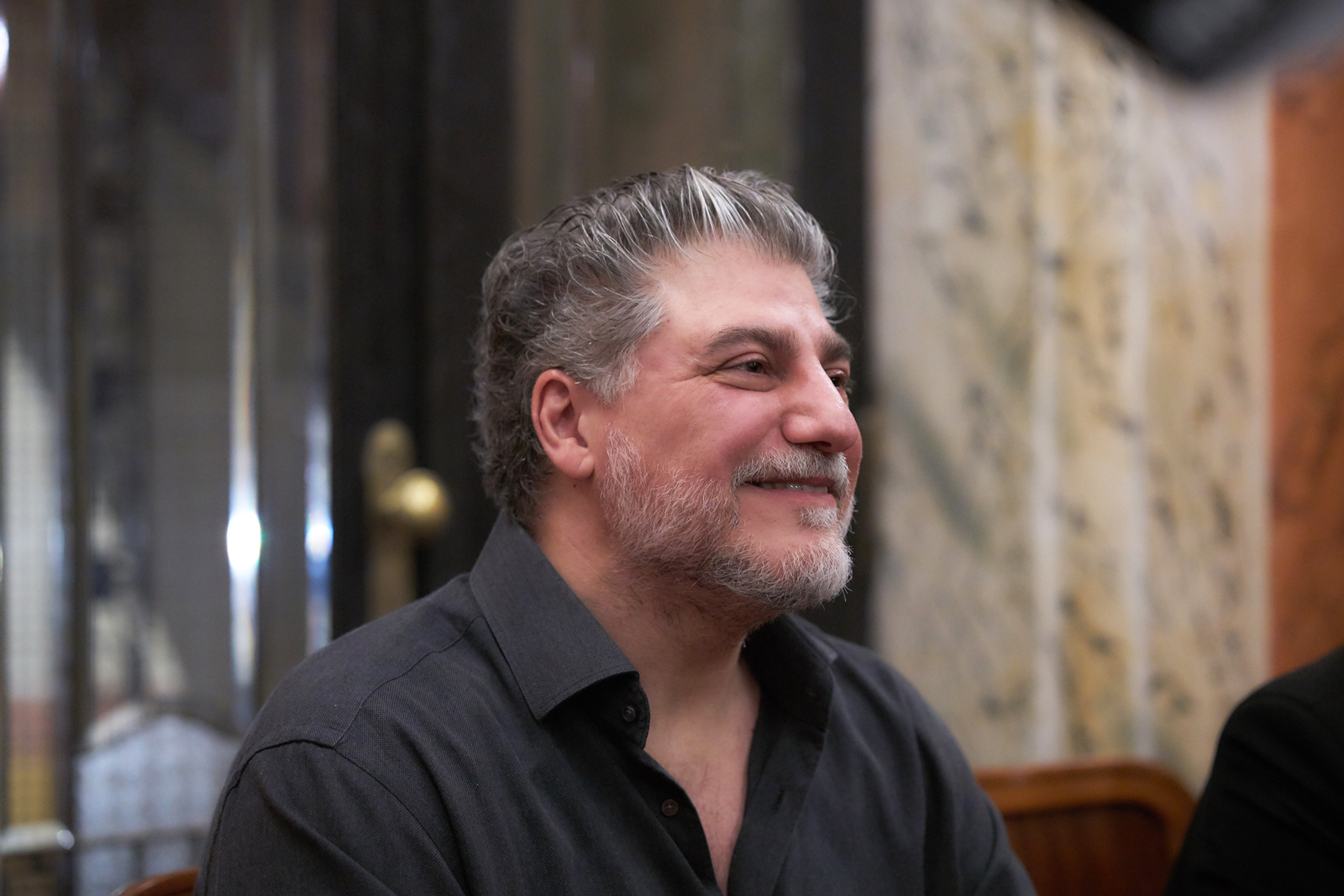



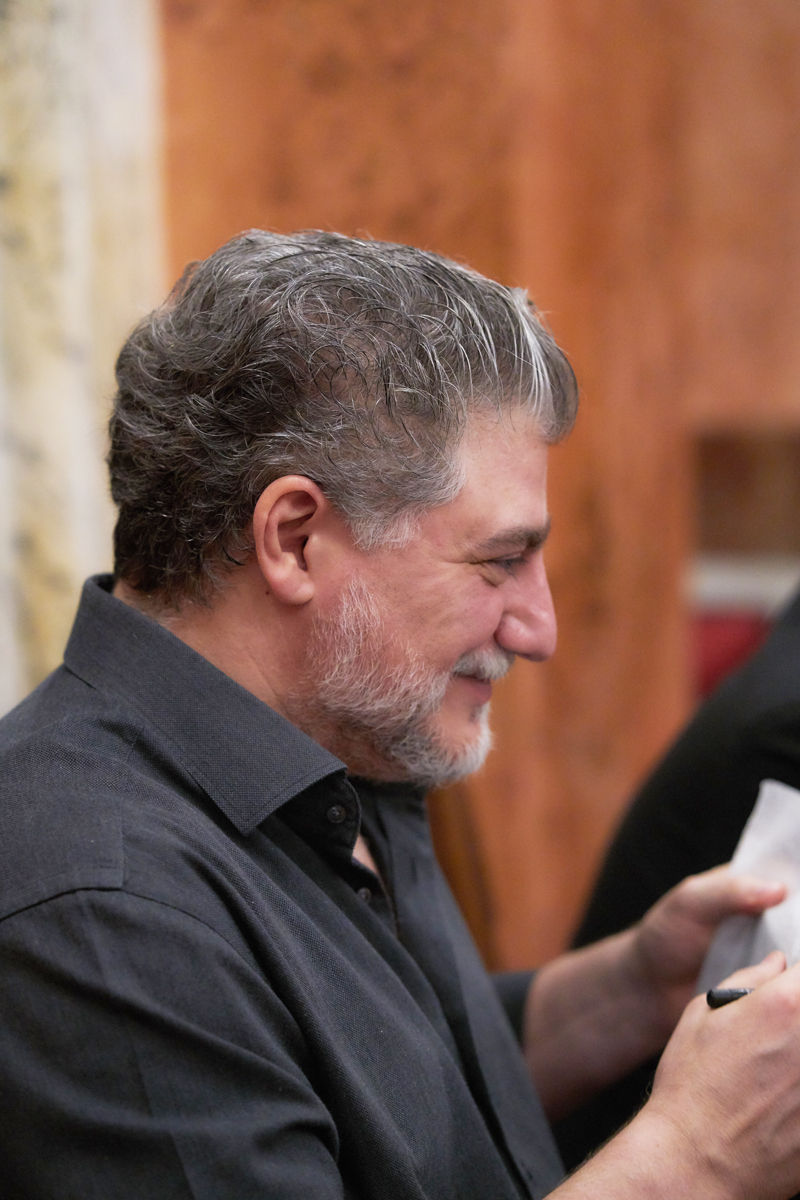

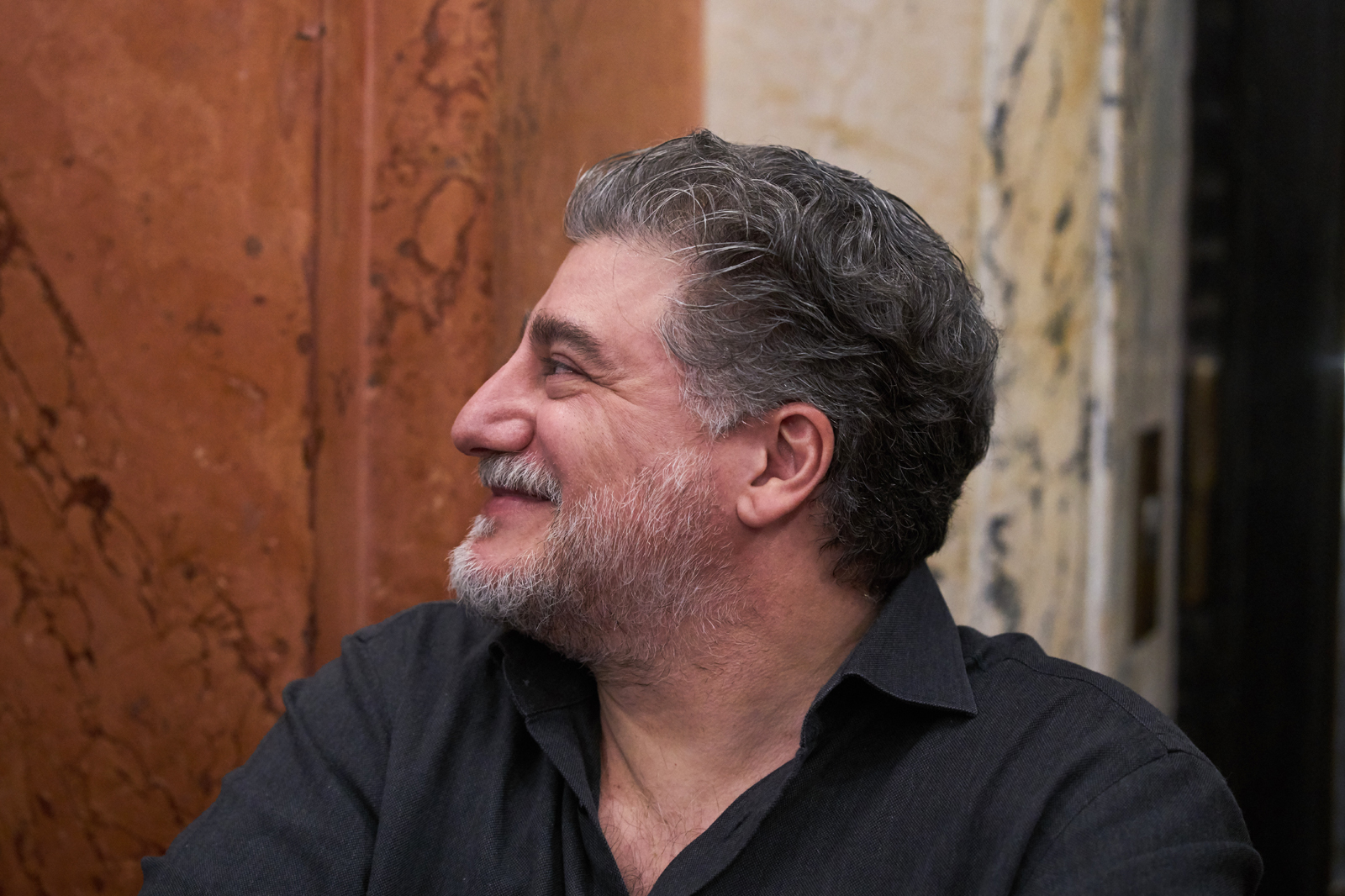
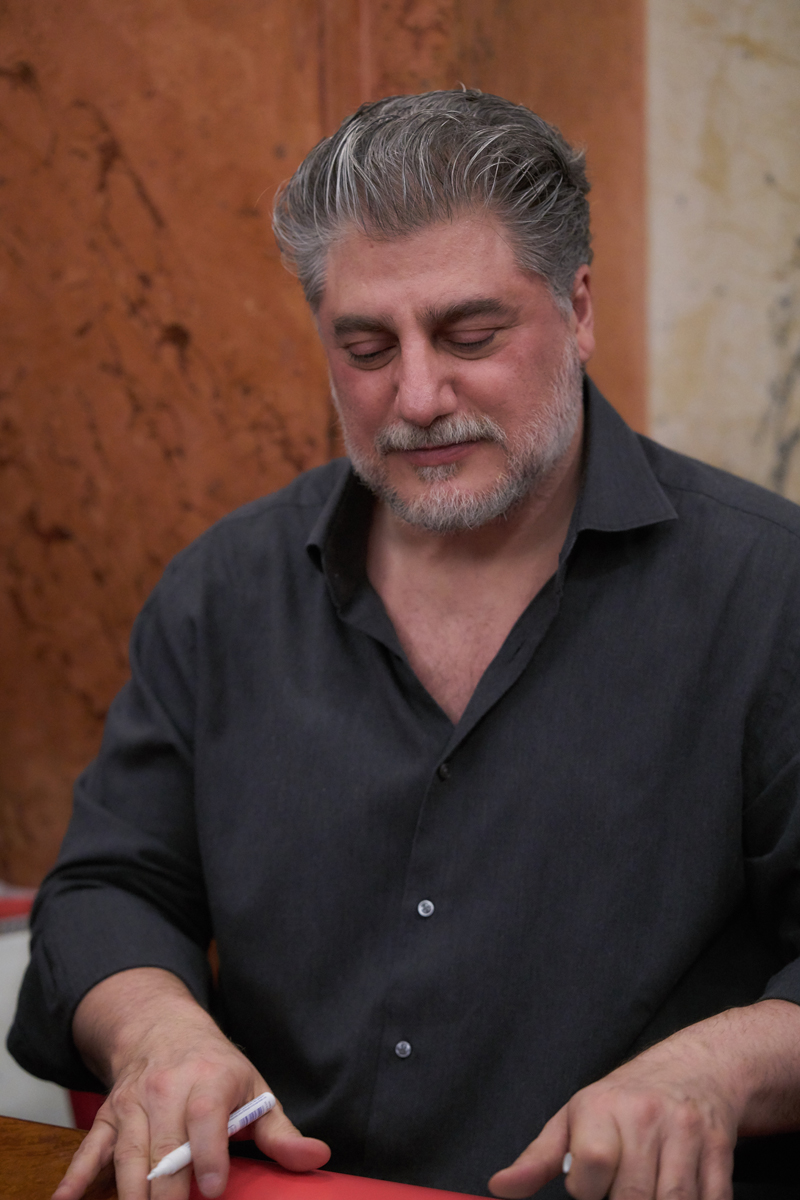
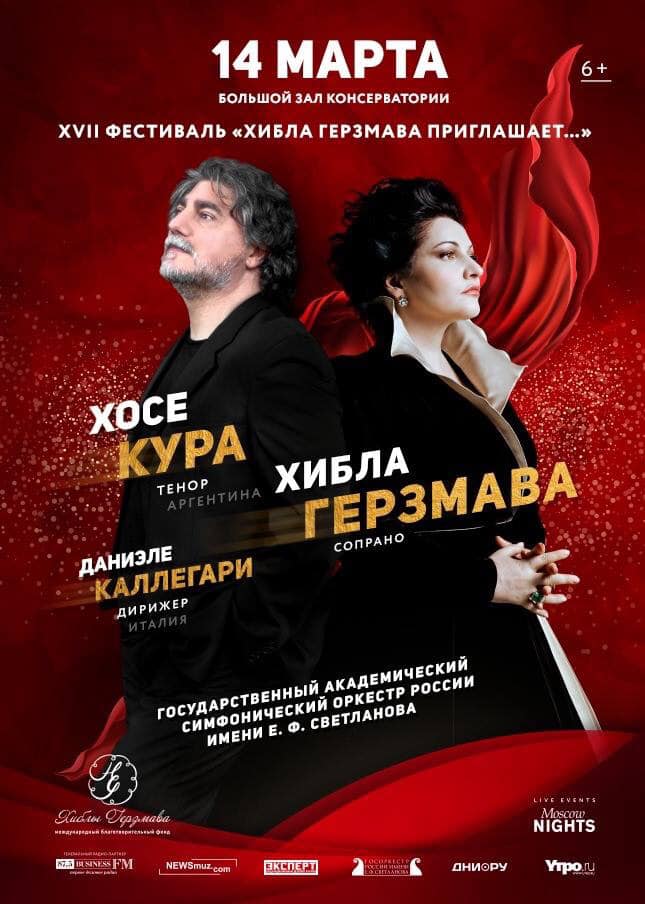
|
|
Mulhouse

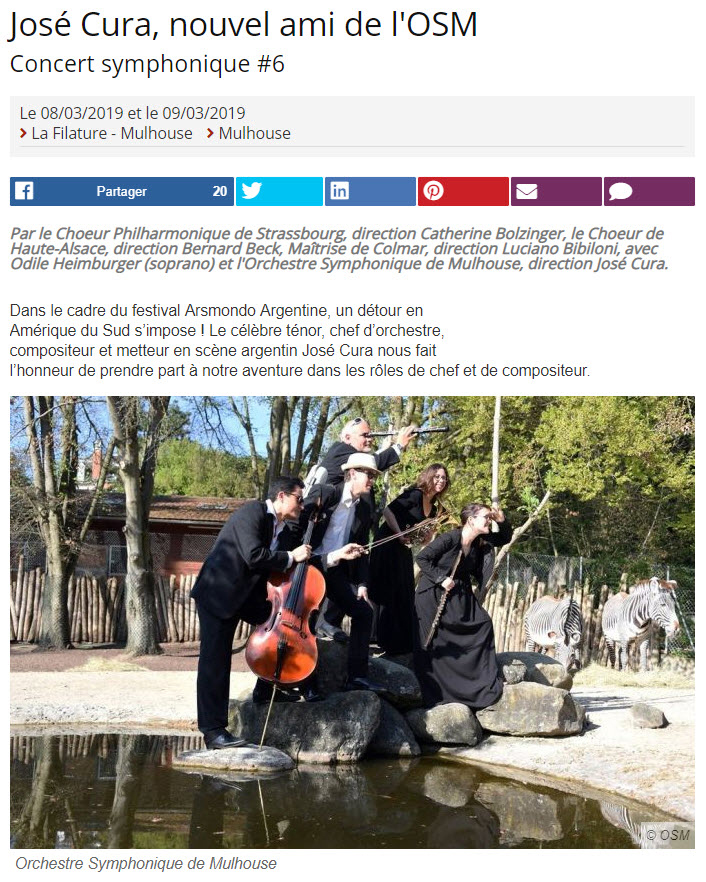 |
 |
Un voyage musical en Argentine avec José Cura
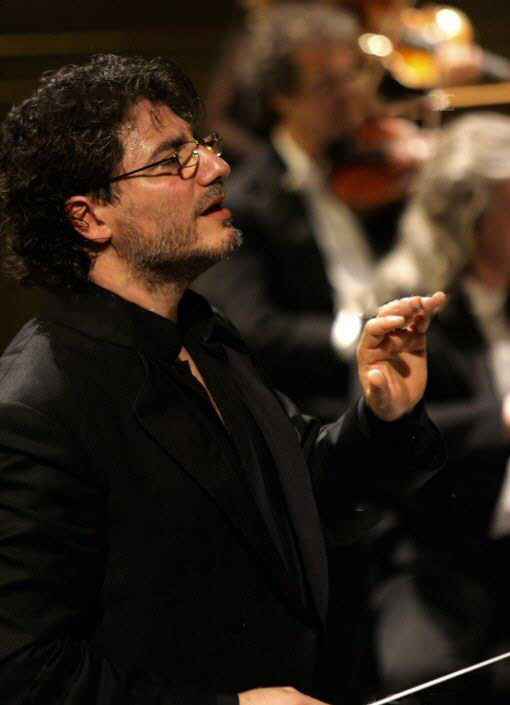
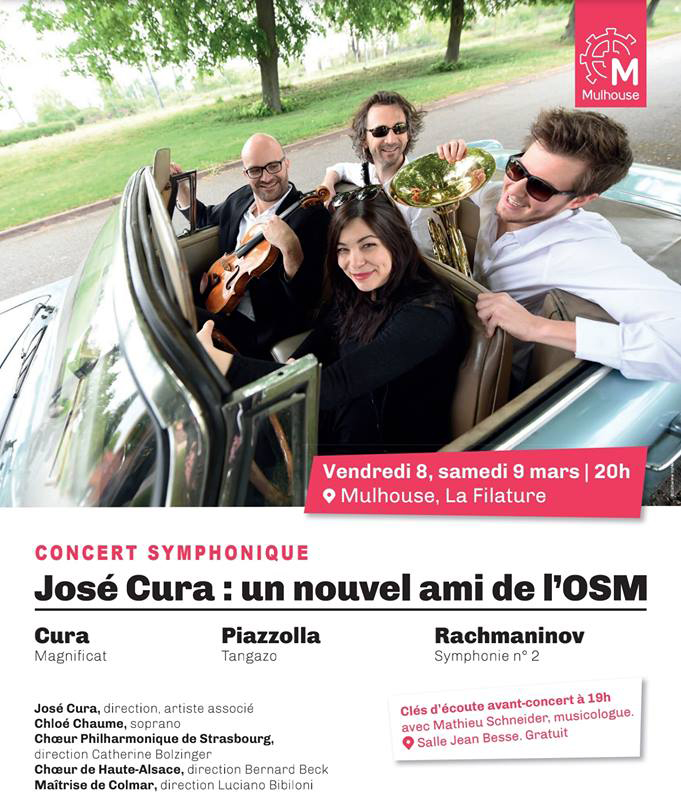

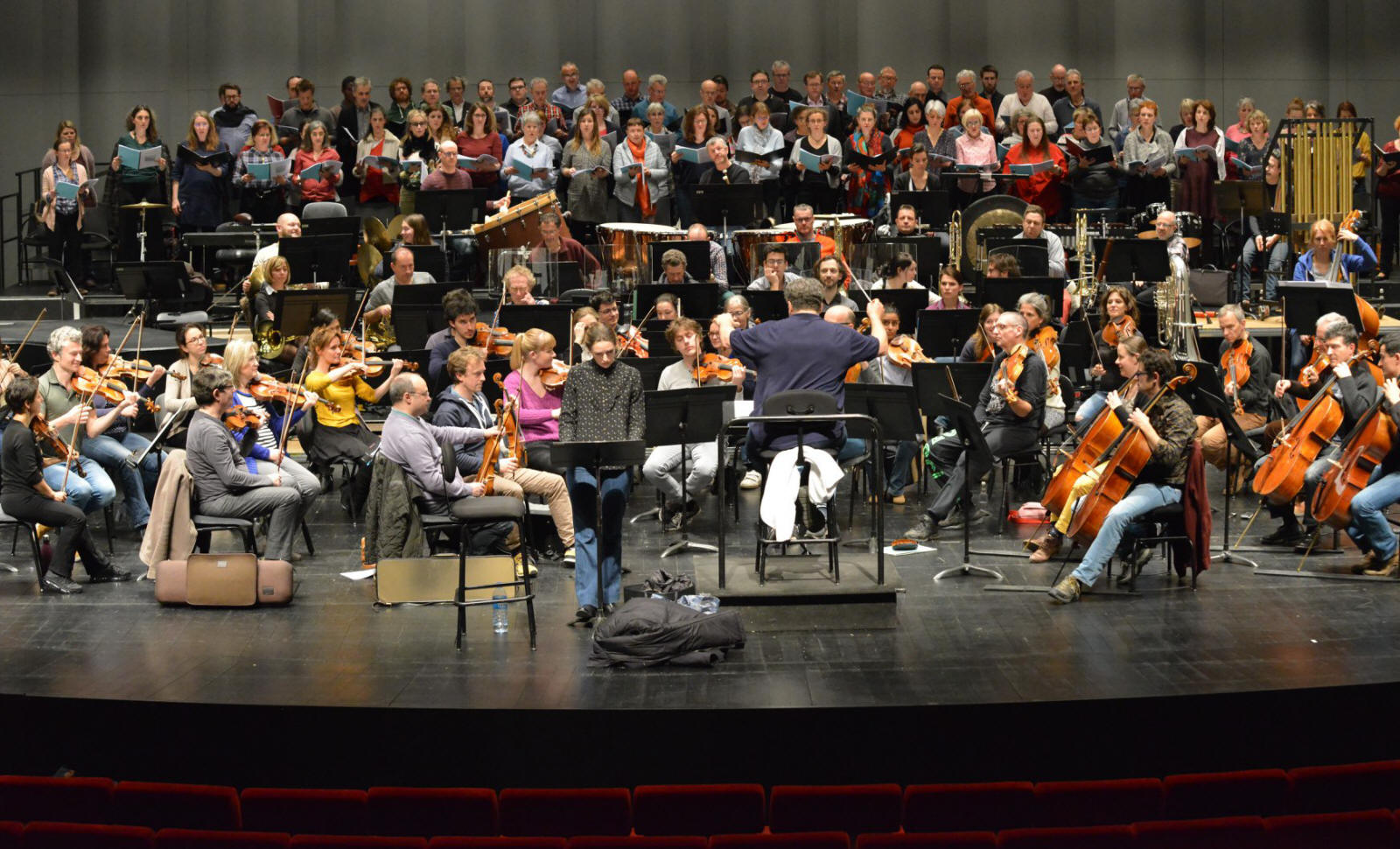
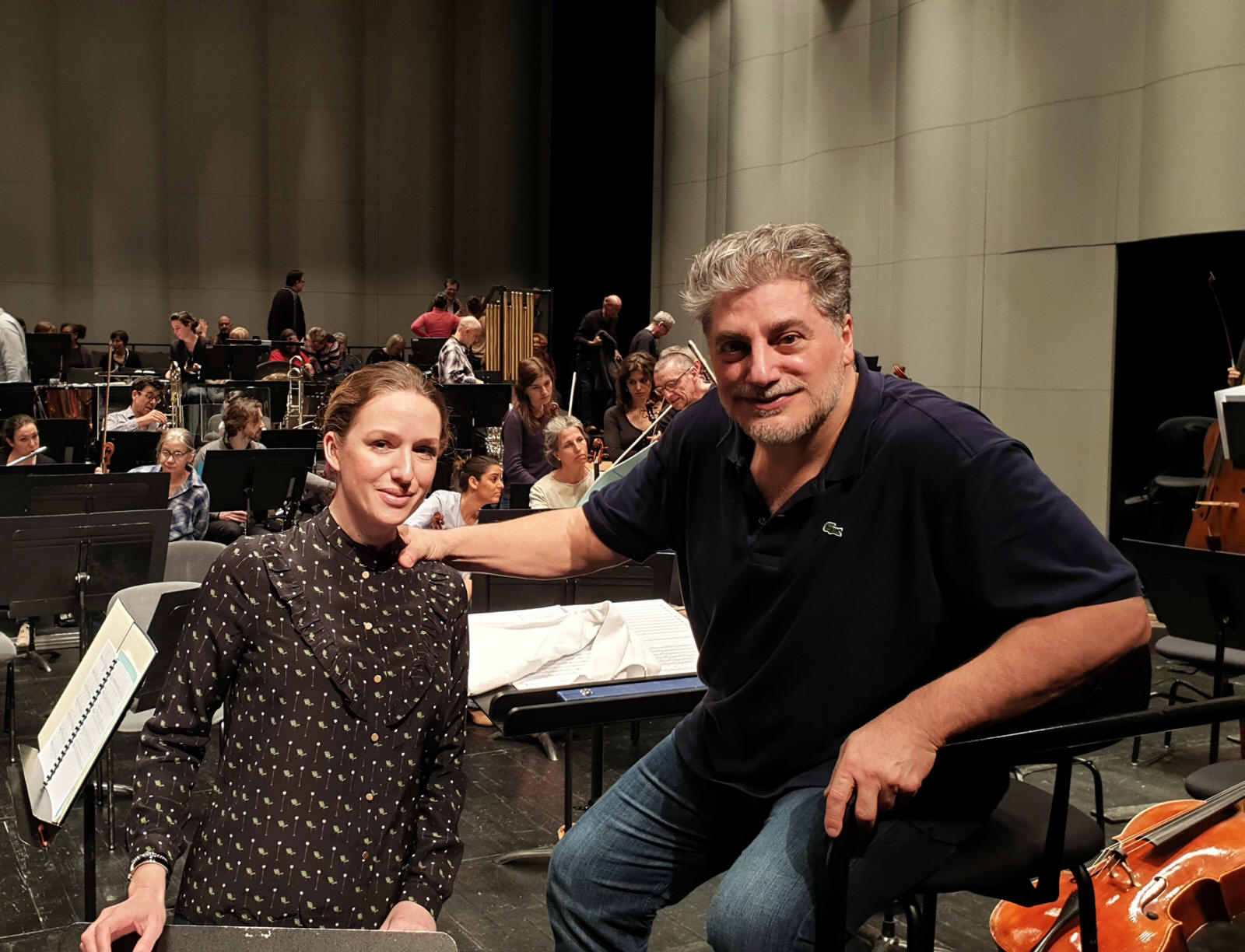
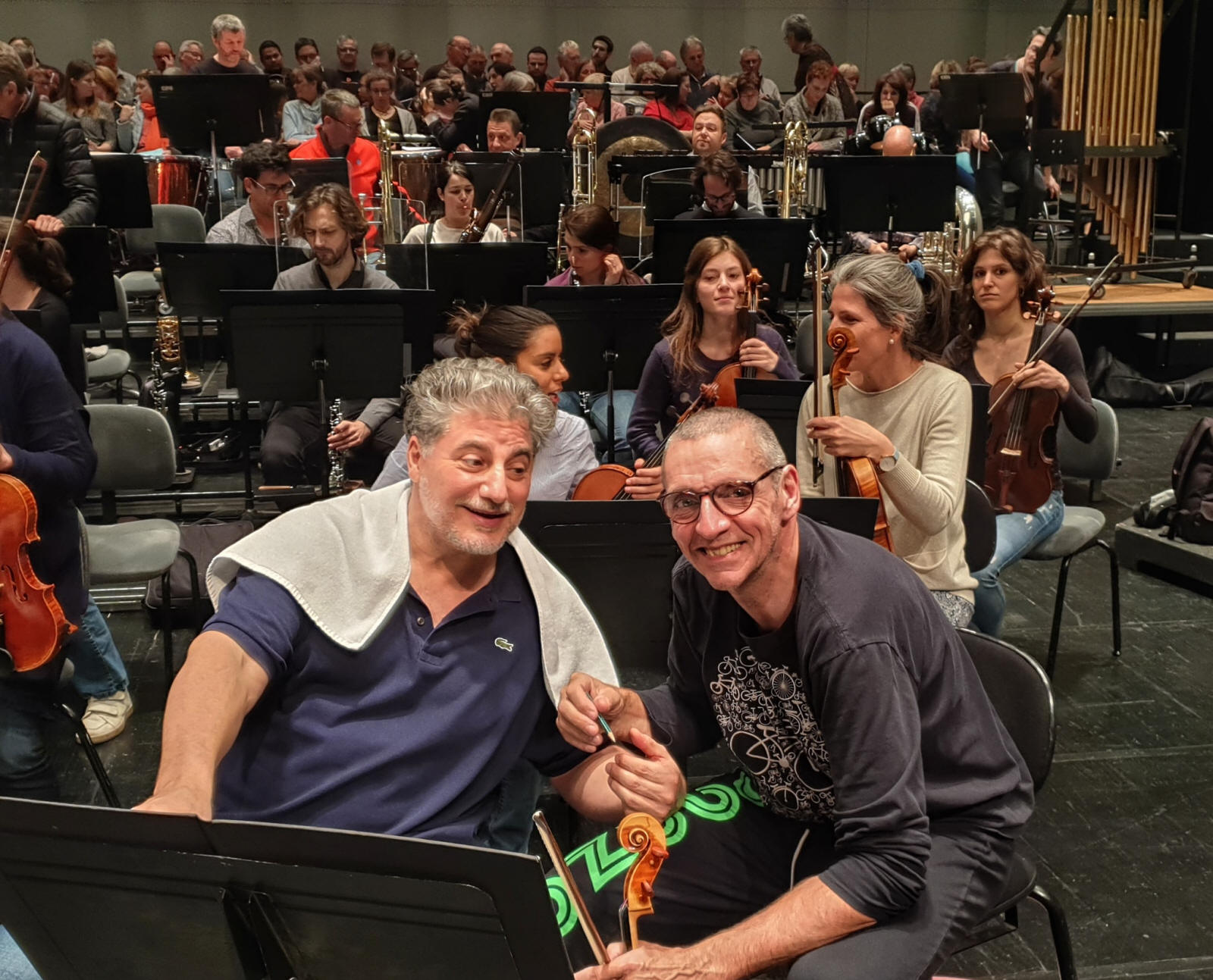
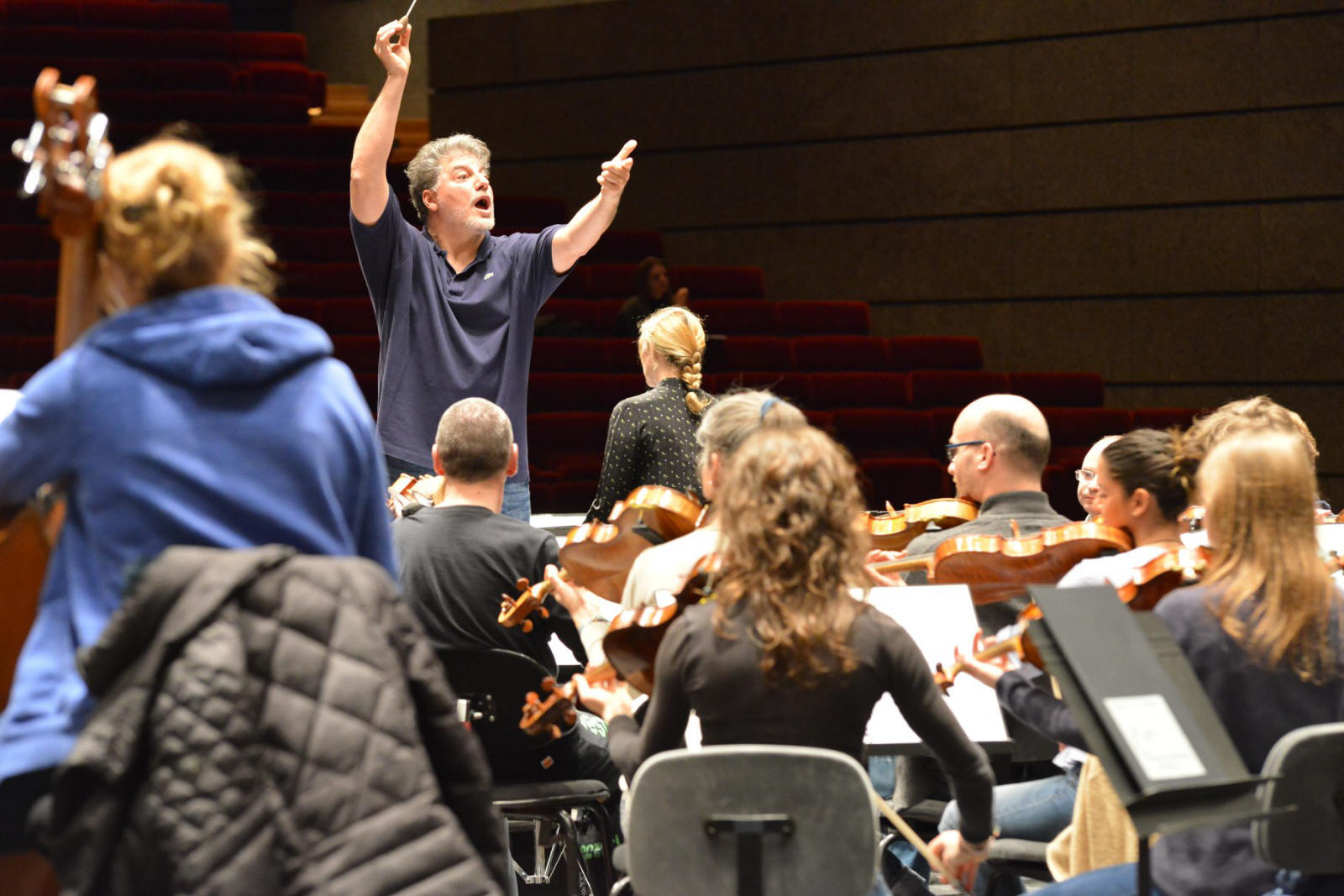

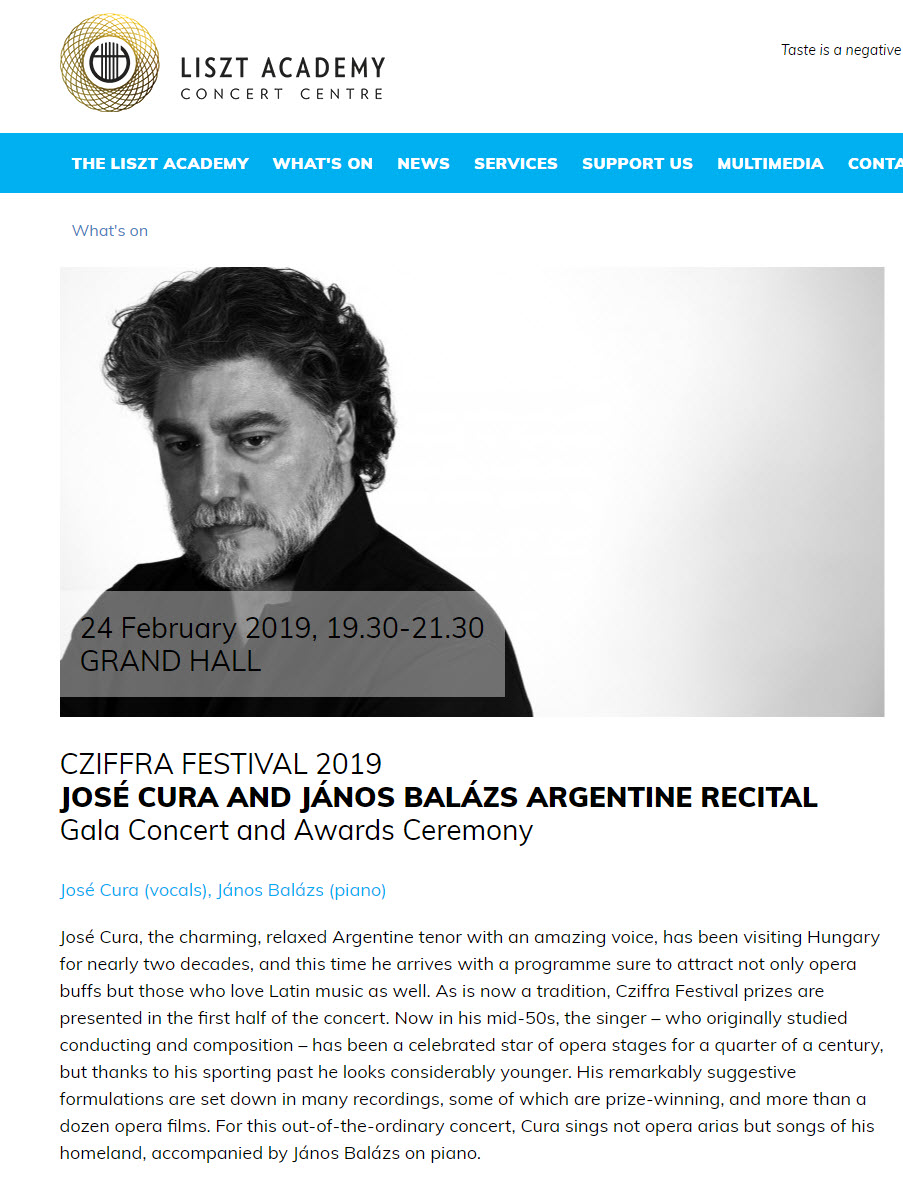
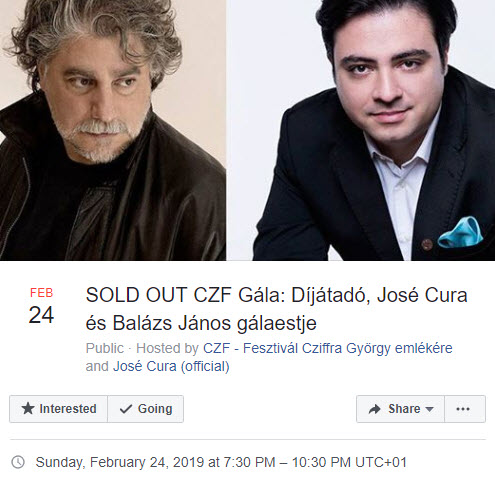
|
Dear Ladies and Gentlemen! “Art is the sensual return of the mysterious and divine in man and nature”. The quotation comes from Ferenc Liszt, whose most authentic interpreter was Georges Cziffra. Creative and performing artists who are able to create a unique, long-lasting and timeless, clearly took more part in caring for the universal culture. Hungary has always been the leader in the highest level of arts and sciences. I am proud that the Georges Cziffa Festival from Hungary is now internationally recognized and acknowledged. I believe in the fact that the name and the spirit of Georges Cziffra will come to many parts of the world, and his exemplary art and life path reaches the young generation as a standard. An impressive list of artists l will delight the audience at the 2019 Festiva with the star guest José Cura. In addition to classical music concerts, music festivals, scientific lectures, exhibitions and masterclasses will also highlight the Festival’s palette. It is my hope that there will be a clear proof of this classical music series featuring unparalleled artists that music does not know borders, limits, and genres.One of the novelties of the 2019 Festival is the focus we are launching to promote the coffee-house gipsy music of the old times. We are grateful for our main sponsor, MVM Magyar Villamos Művek Zrt., The National Cultural Fund, Attila Várkonyi, the Local Government of Hegyvidék, the MOM Cultural Center and our other sponsors and partners. For the programs of the Festival, I wish you all the joyful moments, the lasting experiences and the euphoric charging. János Balázs Liszt and Prima Prize pianist Founder of the Cziffra Festival
|
Georges (György) Cziffra
World-renowned Hungarian-born pianist and piano virtuoso, Georges (György) Cziffra was born to a Gypsy musician family. His father, György Cziffra was a cimbalom player. Georges was admitted to Franz Liszt Academy of Music of Budapest at the age of 8, where his teachers were Ernő Dohnányi, Leó Weiner, György Ferenczy and Imre Keéri-Szántó. The young pianist scored success after success. In 1943 he served on the front in the army. His attempt to escape from Hungary landed him in prison in 1950. After the 1956 uprising he settled in Paris. He became the acclaimed master pianist of the Romantic composers (Schubert, Chopin, Liszt, Brahms, Rachmaninov). His technique and skill as an improviser placed him among the greatest pianists. His brilliant and unique career, skills, knowledge and personality as well as his work to help young musicians are exemplary. Honours
|
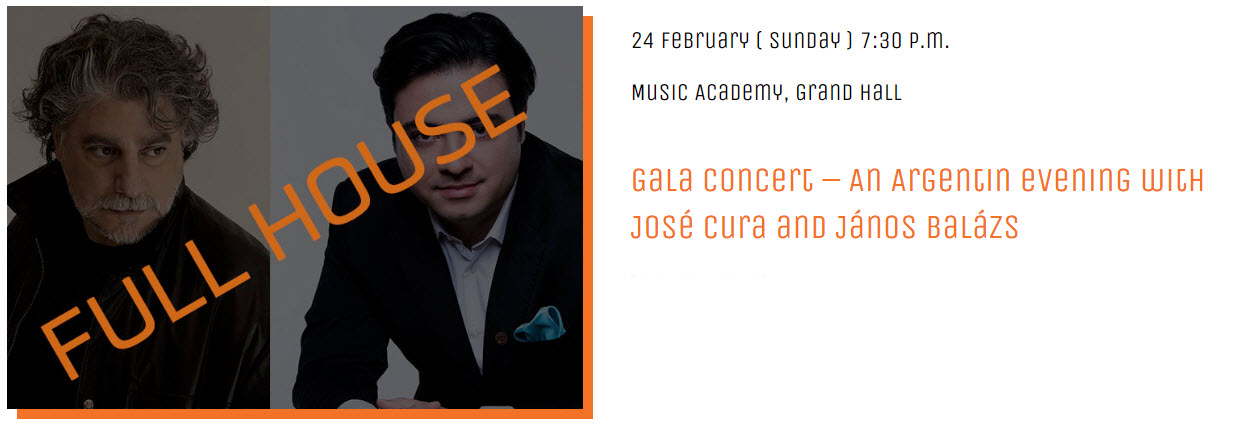
|
24. 02.
2019. ZAG Grand Hall
An evening with José Cura and János Balázs Whether as a tenor or as a conductor or composer, José Cura has been returning regularly to Hungary for almost two decades, since his debut in concert at the Erkel Theater. The artist, now in his mid-fifties, has been a celebrated star of the opera stages for more than a quarter century. His exceptionally large and suggestive repertoire has been immortalized in countless sound and video recordings, many of which are award-winning. This time, accompanied by the exceptional piano mastery of János Balázs, José Cura brings us a program of Argentinean chamber songs, in which we will be able to admire his magnificent singing art. Traditionally, in the first part of the concert, the Cziffra Festival Awards will be announced. |
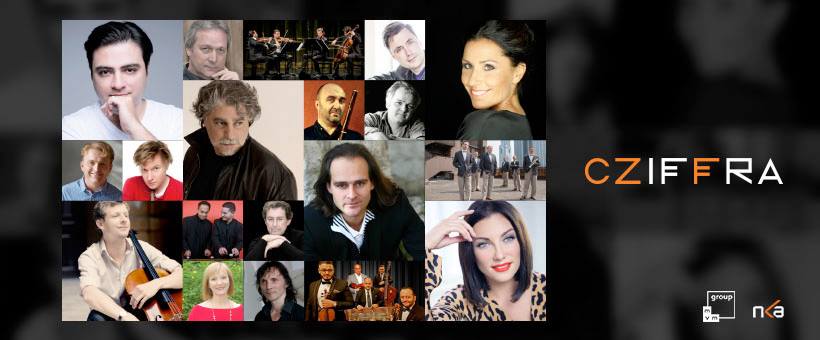
|
|
|
On February 24th, at the prestigious Liszt Academy in Budapest, the megastar Argentinean Maestro José Cura, accompanied by the formidable Hungarian pianist János Balázs, in the framework of the Festival Cziffra, offered a recital of "Argentine songs," thanks to the mediation of the Argentine Ambassadors, who connected both musicians during a magnificent hauskonzert that Maestro Cura offered in the residence of the Argentine Embassy on March 27, 2018. During the unforgettable evening at Liszt Academy, Maestro Cura sang numerous and delicious songs composed by Guastavino (called "the Argentine Schubert" for his prolific and subtle songbook), Ginastera, Williams and Cura himself. The young pianist Balázs accompanied Cura, who dominated the repertoire with high subtlety and taste. The popular and impeccable announcer and translator Adam Bösze made a magnificent simultaneous translation of the delicate and deep comments as the Maestro was performing each piece, so that the public did not lose the beauty of poetic content. After the recital, the Maestro greeted a group of special guests, including the Argentine ambassadors and prominent political, cultural and economic personalities of Hungary. (In the photo, Argentine ambassadors with Maestro Cura, János Balázs and his wife Szilvia, factotum of the Festival Cziffra)
Note: This is a machine-based translation. We offer it only a a general guide but it should not be considered definitive.
|
|
|
| Today, Sunday 24 February, at 19:30 pm., at the Liszt academy of Budapest, the star of the world of opera, the great Argentinean tenor José Cura will perform Argentine songs, accompanied by the great Hungarian pianist János Balázs, within the framework of the Festival Cziffra, created by this young interpreter. This extraordinary recital emerged from contact on March 27, 2018, in a hauskonzert offered by José in the residence of the Argentine Embassy, when the ambassadors presented the star with the Hungarian pianist, who took advantage of that occasion to invite him to participate in his festival. In the photo, an image of that evening from last year.
Note: This is a machine-based translation. We offer it only a a general guide but it should not be considered definitive. |
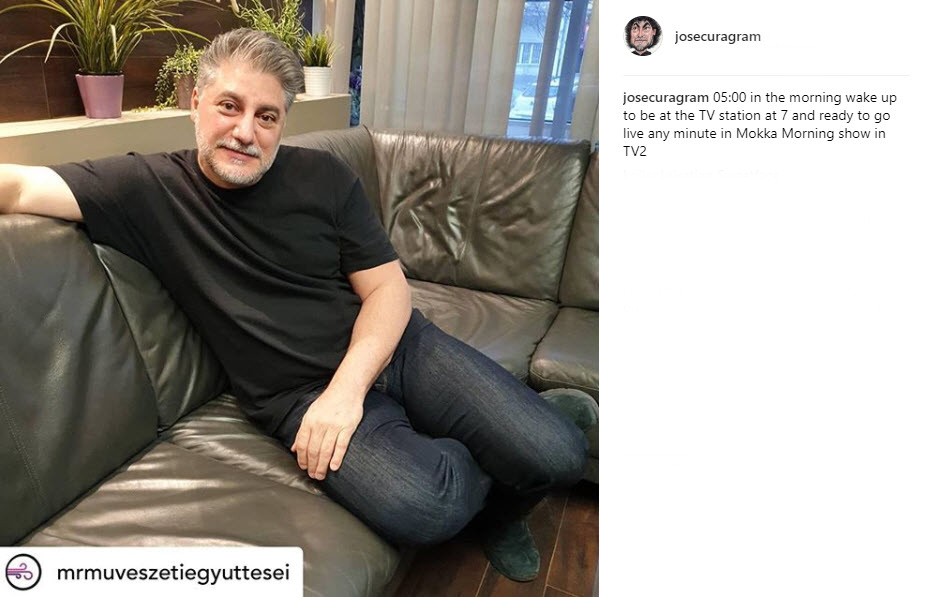
|
|
|
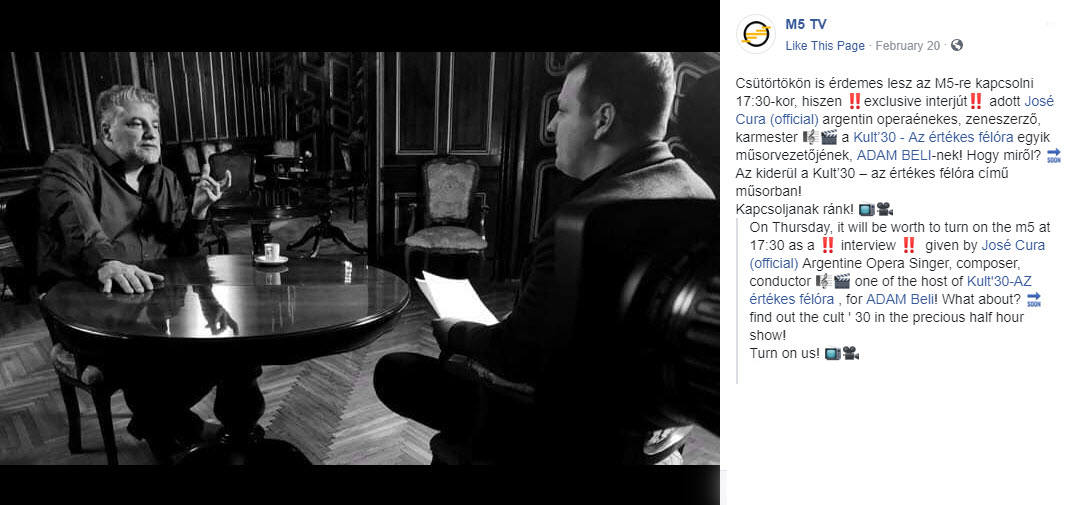
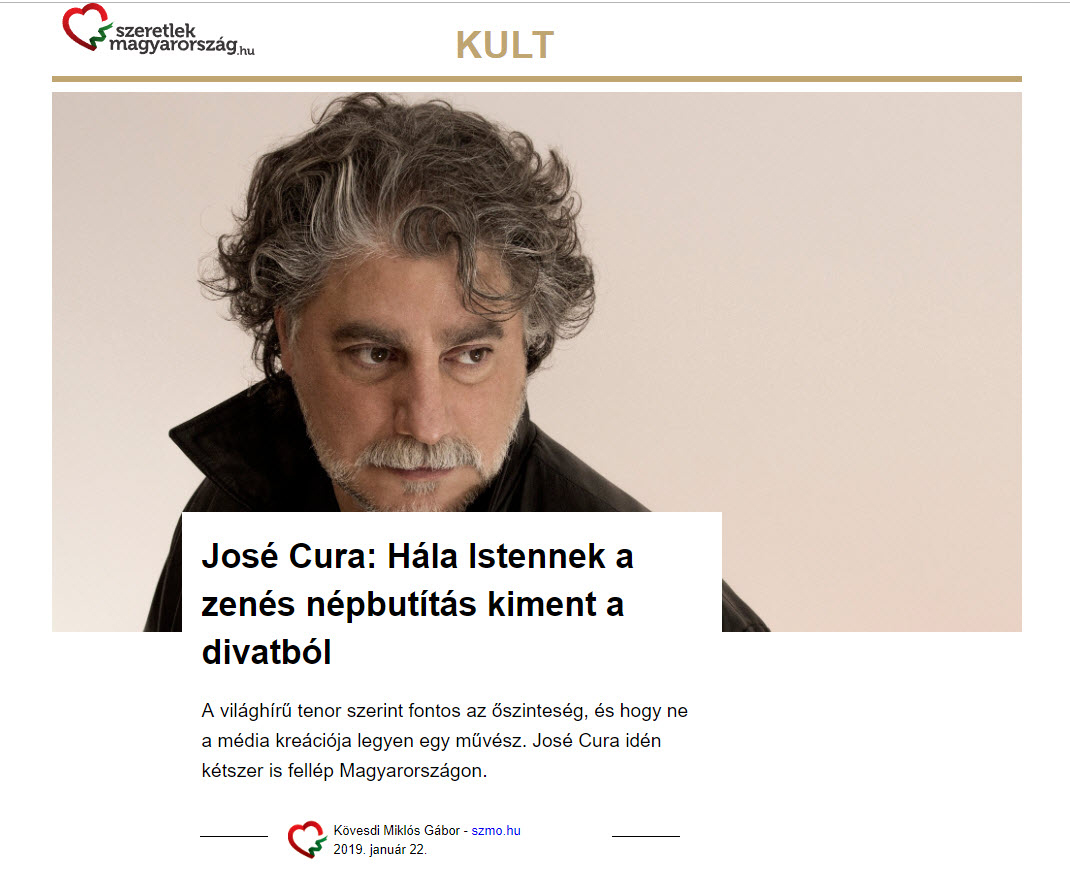
|
Note: This is a machine-based translation. José Cura uses language with precision and purpose; the computer does not. We offer it only a a general guide to the conversation and the ideas exchanged but the following should not be considered definitive.
José Cura: Thanks to God, musical folly went out of fashion SZMO
Miklós Kövesdi Gábor According to the world-famous tenor, sincerity is more important than the media creation of an artist. José Cura will perform twice in Hungary this year. The festival's foreign guest, the world-famous tenor, José Cura, responded to our questions.
- How do you see the opera's situation today?
- In many adults, the cultural "package" determines how much a buyer is for art. I mean, it depends on whether they love or hate what an artist is giving them, whether it fits their preconceptions or not. But the younger ones are more open, their only expectation is to conquer them without losing your feelings.
Classical art will last forever if it is sincerely presented. Thanks to God, musical folly went out of fashion!
- Do you think that a young opera singer today has the same chance to become a star as you or say Domingo?
- It's much easier to become famous today than when I started my career. The difficulty is to be really good, not just a media creation. Speaking to Schopenhauer, artists can be divided into comets and stars. Comets have a great temporary impact, look at them and say, "Look!" just in time, just before they disappear forever. The stars, however, are constant and we always see them as the same.
If an artist is told that he has had a comet-like career, it is not really flattering.
Not long ago, György Kurtág's first opera was shown in Milan's La Scala. Kurtág is 92 years old. Do we have enough new opera? Do we need new operas, or is there enough existing opera literature?
- The same question was asked by 19th-century composers. If you ask if there is a need for operas like that repertoire, then my answer is no. We need composers who combine the already known forms with new approaches.
I recently finished my first opera. A friend said that it was an unbridled burlesque with lessons learned. I used a variety of styles and theatrical tools and combined them in a kind of neo-baroque style. I hope I can show you one day in Hungary.
You're not just a singer and conductur but, as you mentioned, a composer. This is perhaps a lesser known side. Would you tell me a little bit about it?
- I started playing music to be a composer and conductor. At first I was conducting a choir at the age of 15 in 1978. But I became a full-time opera singer only in 1993, at the age of 30.
- You have performed several times in Hungary. Do you have a special kind of memory?
- All my activities in Hungary are special. And I do not say this just to be kind, because fortunately I do not have to lie in my situation. I have an established relationship with the Hungarian audience. A relationship that will get even closer in February when we're preparing for an important announcement ...
- What do you think of George Cziffra?
György Czfirra was not only an astonishing virtuoso but also a remarkable man, a living example of what anyone can do despite the toughest, most painful conditions. Of course, I never heard Cziffra playing live, but we have a lot of video and audio recordings, and the most obvious feature of this amazingly assertive artist was the spiritual peace that even broadcasted the hardest pieces.
Nothing "got" beyond his talent. The rest, masterful knowledge, is the result of many years of hard work. György Cziffra symbolizes what I mean when I talk about the difference between celebrity and greatness.
- You will soon return to Hungary for the Cziffra Festival, then you will be on stage in Turandot. What do you know about this?
I can't say much about the production because I haven't seen the details yet, but I'm looking forward to going back to the Margaret Island Outdoor Stage after 17 years! Note: This is a machine-based translation. We offer it only a a general guide but it should not be considered definitive. |
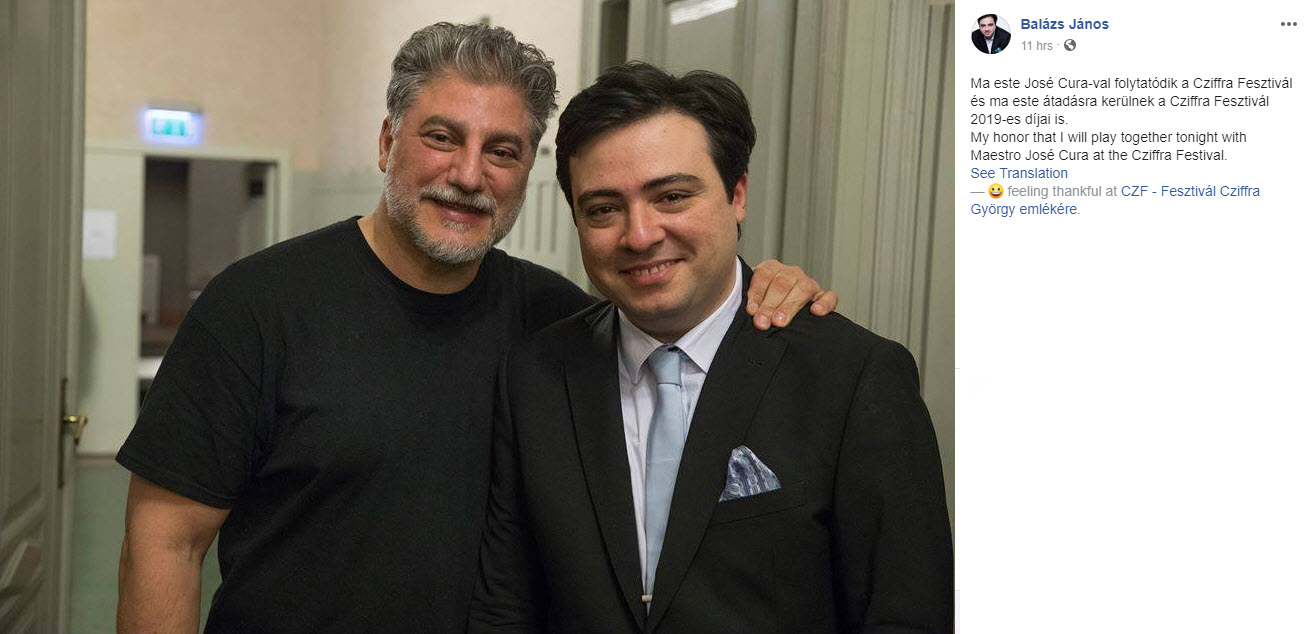
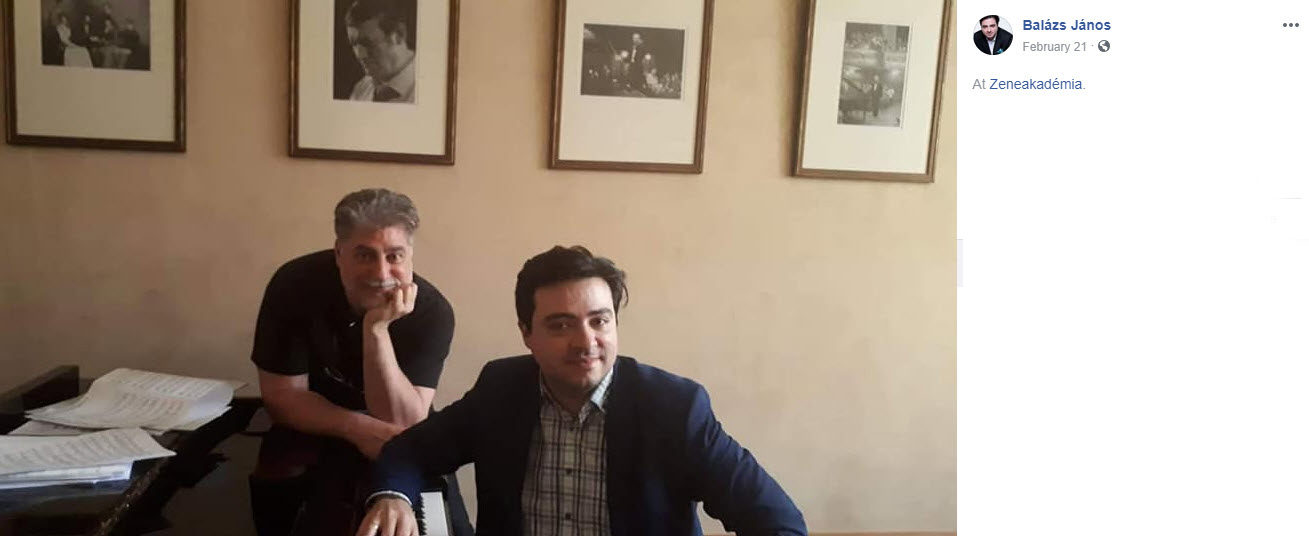
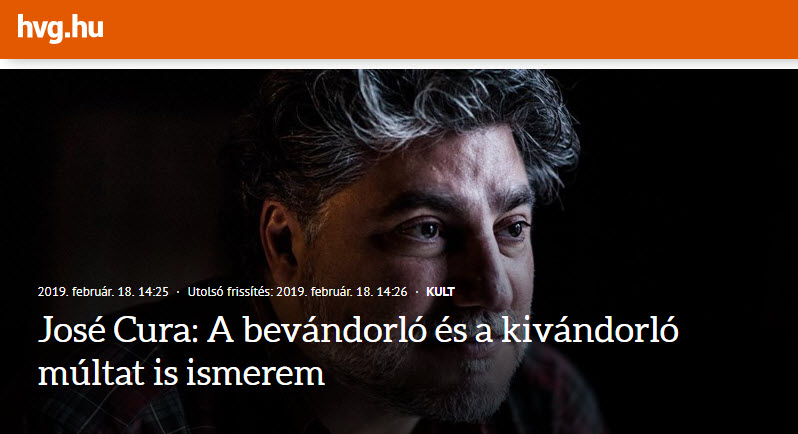
|
Note: This is a machine-based translation. José Cura uses language with precision and purpose; the computer does not. We offer it only a a general guide to the conversation and the ideas exchanged but the following should not be considered definitive.
José Cura: I know the immigrant and emigrating past HVG Rita Szentgyörgyi 18 February 2019
[Excerpts]
In the past 20 years, José Cura has often traveled to Hungary. Now the Cziffra Festival was brought to Budapest, where on February 24 the Argentinean songwriter will close the event with the pianist János Balázs. Secretly he is waiting for the day to be recognized as a stage director and conductor as equal as a singer. hvg.hu: György Cziffra or János Balázs was the name for the current concert? José Cura: I got to know John at the Cziffra Festival. I consider it a wonderful initiative to create a festival in the spirit of Cziffra's artistic heritage. Beyond his unparalleled virtuosity, Cziffra was also an exemplary personality who showed that he could overcome difficulties with spirit, faith, and power. He had a life full of pains and fears, yet he was able to overcome his own suffering. György Cziffra is a great example of humanity. hvg.hu: In 2004, the history of VeszprémFest started with you. How did you hear that Veszprém won the title of European Capital of Culture 2023? JC: I'm also touched by the city as a citizen. At that time, VeszprémFest I baptized together with Zoltán Kocsis. I am, of course, pleased that Veszprém may become the center of attention as a cultural capital. Only then should the city wake up from the dream for the duration of the season, and the cultural developments and activities will be missed by the showcase events. But maybe this is a danger to the city, as VeszprémFest continuously demonstrates its place on the cultural map of Europe.
hvg.hu: Thirty years ago, you wrote you first oratorical work, Ecce Home, but it was only presented last year in a world premiere with the Prague Symphony Orchestra. Why did you expect so much from your debut as a composer? JC: In the past twenty years, I have focused almost exclusively on my singing career. More than a hundred performances, concerts, opera performances took all my energy every year. You can get tired of the constant stage presence. Now that I've been singing much less, I could finally return to my initial determination, the learned vocation that was the reason I actually became a professional musician. And this is nothing more than composing and conducting, after all, I graduated as a conductor, choral conductor and composer. hvg.hu: The former Rosario guy who sang and Beatles songs was still singing for money? JC: Exactly. hvg.hu: Nowadays you often arranges scenery, costumes and costumes in addition to being a conductor, showman, photographer and who knows what else. Some people say you are a renaissance man. What's the truth about this? JC: There are those who can lose themselves in one thing and others who invest themselves well in diversity. Certainly, it's a matter of disposition. What I do is actually a different branch or projection of the same activity. I basically consider myself to be a creative person. I am looking forward to the day I will be recognized as a director and conductor as well as a singer.
hvg.hu: Your former teacher Carlos Castro told you that you were a great talent but wild. Has age tamed you? JC: I'd rather say that I have learned when I should release my claws, let go of my breath, and when I want to restrain myself, try to cooperate. hvg.hu: How can you approach the migration issue of European countries in a calm or stimulating way? JC: I know both the immigrant and the emigrating past. My grandparents left Italy and Spain for Argentina before the war. In the early nineties I reversed the migration when I came to Europe to try my luck. The refugee crisis is an issue that no one can turn a blind eye to. First and foremost, one should be aware that people do not leave their homeland in their own right. The dignity of those who have suffered discrimination, persecution, suffering for their origin, religion or any other reason must be respected. Refugees should also have the same rights and duties as European citizens. It is primarily a matter of good intentions, social will, organization, and legal frameworks to solve their integration.
hvg.hu: The motto of many operas is the escape, the social deprivation of the otherness from the parable of the parable of Paros in Colonel in Buenos Aires, to Britten's opera Britten by Peter Grimes in Bonn and Monte-Carlo. JC: Everything that works for real human life situations, individual or collective dramas. That's why reflection is unavoidable today. For example, the accused Peter Grimes is the victim of his own community's exclusion and hate speech. hvg.hu: Where is your opera going? JC: I recently finished my comedy called Montezuma and Redhead Monk, which is a funny reference to Vivaldi's music. I also wrote the libretto. At the moment, I spend all my energy on finding an opera house that will accept the world premiere. hvg.hu: What makes you so optimistic in this troubled world? JC: That would be one of my favorite examples. If you place a feces among the flowers of a flower shop that blends nicely, who just inserts it, strangely determines what smell is here! My optimism comes from the belief that there is more flower than feces. |
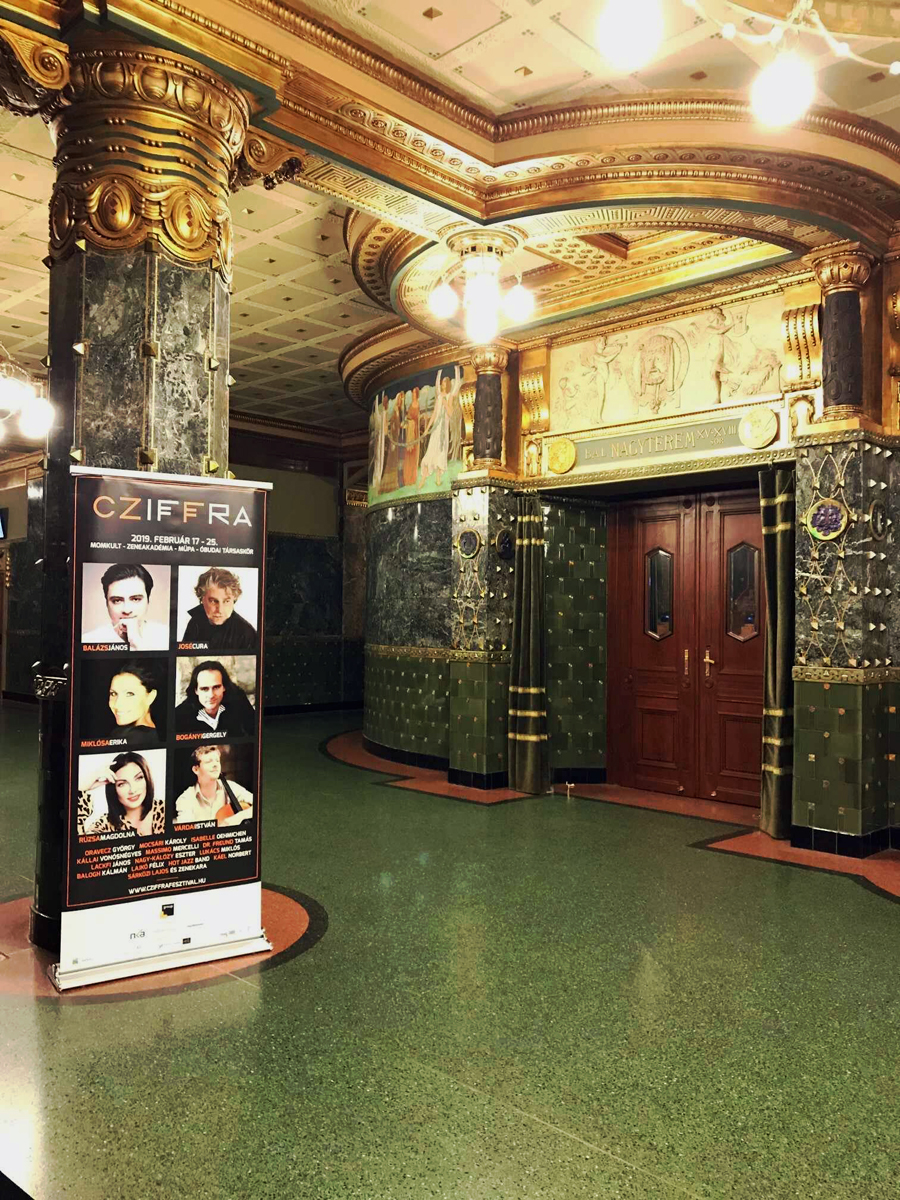
|
Enthralling Argentine evening with José Cura and János Balázs Gala concert of the Georges Cziffra Festival at the Liszt Ferenc Academy of Music, Budapest
24 February 2019 Report and Photos by Zsuzsanna Suba We enjoyed a wonderful concert with José Cura and János Balázs at the beautiful, renewed Liszt Ferenc Academy of Music in Budapest. José was swimming in the beauty of the Argentine songs and in the glorious interior splendour of the Grand Hall, which welcomed a full house in this precious evening. Cura admired and emphasized the uniqueness of our Academy of Music as he stepped on the stage and told us how proud he was to sing these songs here, in this most magical place. He was so happy and relaxed that beside of his multi-coloured, strikingly passionate and delicate singing, he also brought his actor-comic vein to the fore applying some of his own first rate entertaining ability and good sense of humour. He had an exceptional partner, János Balázs at the piano who accompanied him with poetic inspiration and virtuosity. We got an extra bonus in Ádám Bősze’s jovial style and elegant skills translating Cura’s English narration into Hungarian words with special tuning and empathy. The evening began with the speech of János Balázs (Liszt and Prima Prize pianist), the founder and director of the Georges Cziffra Festival introducing the traditional awards ceremony of the festival. We knew from the enthusiastic applause of the audience, that the awards (Young Talent, Talent and Lifetime Achievement Awards) landed in good hands. In the latter case, not only the world-famous pianist (Jenő Jandó), but the committed music and piano teacher (Erika Becht) was also worthy of recognition. After this short celebration, the festival's Gala Concert followed “An Argentine evening with José Cura and János Balázs.” The concert was sold out months before, the extra chairs placed on the podium and the gallery were also occupied. What is enchanting about José Cura’s concerts here in Budapest (and Hungary) is that we, the audience has a nearly 20-year-old relationship with him and we know each other really well. Each of his concerts has special atmosphere here and this one is no exception at all. This special mood is instantly created when Cura goes to the stage and we are not surprised by the roaring applause that greets him. We can understand each other without words, but when he seizes the moment, he moves our laughing muscles intensively with his spontaneous and blade-like jokes. José immediately feels this common frequency with us, János Balázs and Ádám Bősze, so he laughingly draws the conclusion -"This is going to be a very long night!” -and commits himself for another unforgettable encounter with full heart. And indeed, the concert takes 45 minutes longer, than it is expected, and we don't mind it at all. José Cura emphasizes at the beginning, that this is the first time that they give such an intimate recital with János Balázs. „It is like a family meeting!”- he shows around; a high chair is placed very closely to the piano together with a small table including the necessary refreshments and hot tea. Ádám, our speaker/translator also gets a separate chair on the stage. During the initial joking they only miss some “pizza” and “pálinka”. We are also informed by José that during the rehearsals he asked János to reveal his Gipsy musician vein and from that moment he became a terminator and an Argentinean Gypsy musician. But this is just the beginning. José Cura wants to give us a complex experience, so it is important for him that not only the music, but also the lyric of the songs can be followed and understood by the audience, because “it is new music, new poetry for you, in Spanish”. I’ve seen Cura performing his various Argentine recital programs in other events (Vienna, Prague or Budapest, MÜPA) in the past, where the text of the songs was read by an actress, or it was translated and printed in the program leaflet. Today’s concert acts quite differently, but this arrangement works the best for me so far. There is no program guide now, so luckily, Cura himself summarizes briefly the "stories" and "souls" of the songs at each pieces before he starts singing them. In a way, Argentinian music is like Hungarian music – says Cura - and as he grasps his heart with his hand and scratches it on his chest with a loud and painful sigh (“aaahhhhhh”), we instantly know what he means. This is a recurring motive during the evening; it tells us everything about the mood of some melancholic, painful songs with one gesture. Cura’s storytelling makes great fun, but our laughing spreads further in a newer wave when the Hungarian translation arrives for the greater audience. Ádám Bősze is never confused by José’s impulsive and impassioned personality; he transmits every tiny vibration within moments. Their talkative "pantomime" works well; Ádám solves everything with a deliberately dry sense of humour while remaining a cool and accurate medium for us throughout the evening. Just imagine how much we laughed between the songs! Not only does Cura give us the idea of the songs briefly, but he also highlights the musical realization, the secrets of the piano accompaniment or his singing style or the author's oeuvre (Carlos Guastavino) here and there. All of this is presented with plenty of kindness and humour. Indeed, the whole concert is characterized by a very exceptional intimacy, which reveals the world of the songs and poems to us opened by Cura. We gladly discover and absorb the various melodic lines of this beautiful music, as they get evolved by Cura’s velvety soft, lyrical and warm voice, incredible passion and János Balázs’s delicate piano accompaniment. They are completely equal and world-class partners for each other always acting in the service of music and poetry. A playful wink hides in János’s eyes and smile; he is eagerly waiting when he can run his fingers to the keys again and again. Great part of the concert is dedicated to Carlos Guastavino, his romantic musical language and songs. The first three pieces give us a mini portrait about his „intellectual” songs (Violetas, Pájaro muerto, Donde habite el ovideo). The changing dynamics of the vocals and the fine impressionism of the piano reflect the story and mood of the songs perfectly. So we can hear and sense the different sounds of the wind, the dramatic closeness of death or the mystery of oblivion described through a blurring, misty dream. When Cura sings, dense and deep silence prevails in the Great Hall, sometimes even the applause seems to be a disturbing noise or blasphemy. But after these consecutive songs, the applause breaks out suddenly and spontaneously with even greater force. Drawing the conclusion from this starting phase, Cura suggests that our winter coughing series should be timed and placed between the songs, during his introductory speeches. His reason is very logical; such beautiful songs cannot be interrupted by coughing. We surely do what he wants in order to hear more beauty. The ensuing song represents Guastavino’s very popular piece about an unfortunate dove (Se equivocó la paloma) which carries an almost naive, beautiful melody. José displays an extremely warm and almost glassy voice here and János follows every note with playful rhythm and chemistry. The program includes two lovely songs from other well-known composers (Buchardo and Ginastera) and these can be found in Cura’s popular Anhelo album. He calls one of the songs as János’s favourite, since now he can show his terminator attitude at the piano (Canción del carretero). Though this poem talks about our hero’s loneliness and how much he is missing his sweetheart, José delivers its practical point of view saying ”darling, come home and wash the dishes”. The vocal and the piano shows a lovely interaction here with each other as both artists shares a romantic, exaggerated style in volume and timbre. The other melancholic song (Canción del arbol de olvido) also has a gentle trick in its poem and carries a brilliantly tender, beautiful melodic line throughout. Vocal and piano acts the closest symbiosis here in amplification and fading as the story unfolds. Every now and then I feel, I can't decide what to focus on with more attention, the subtlety, charm and fire of the piano playing or the expressive power and beauty of the vocal performance. Above all, the natural harmony of these two artists captures our soul, as they are breathing together. Though Cura almost leans to the piano while he is singing in his chair, yet he often walks around and stands next to János on his left looking into the score jovially - occasionally scrolling the score for him – or he is just hiding behind him and delighting in their common music making. José Cura and János Balázs creates beautiful harmony with each other on the stage, and our pianist constantly shows with how much delicacy he is capable of floating the songs for us creating almost weightless airiness. It is his joy and modesty that shines through his playing. He just smiles on the jokes when Cura praises for his "gaucho" temperament in other occasions. But when János stays alone with his instrument in his great solo number, he feels the time to display the most powerful, extreme colours of his playing style. When he performs his paraphrase for two Mediterranean melodies - including some Argentine folk song motives – he is rewarded with a raging applause thanks to his overwhelming virtuosity, improvisation ability and imagination. He not only evokes and delineate an incredible cascade of the notes, but many motives, Spanish pasodoble and for me, the spirit of Liszt Ferenc and Georges Cziffra can be discovered there. José acknowledged it with an instant joke recalling that he also used to play this piece on the guitar many years ago with slightly less notes. Cura tells us the story how he met with Pablo Neruda’s poems accidentally at the early stage of his opera career (1995) when he received the poems as a present from an unknown person. This person was so inspired by his performance in a sad love story that he/she dedicated this book to him with the words “to you who sings about love”. Cura was so moved by the poems that he composed a cycle of Seven Sonnets based on Pablo Neruda’s poetry. He shares the secret with us, that János liked the sonnets so much, that he wants to record it with him in the future. Now he presents two sonnets as the closing numbers of the first part of the concert. He takes the time and reads some beautiful lines of the famous poet not hiding the poem’s emotional effects on him. Soon our light-hearted mood changes a bit, since both the musical melody and the vocal rendition of the first romantic song (De noche, amada) is deeply serious, extremely intensive and poetic. Cura admits that these are very intimate moments for him and he uncovers his secrets to us. So as he says, let's watch him now, because when he sings the role of Otello or Pagliaccio in the opera and he gets very angry on the stage, this is not really him. In the real life he is a lovable, kind and very emotional person, like these songs. José generously recites more verses from the second poem about love and death (Pensé morir). He ironically cites, that perhaps some people would say him not to talk so much and sing more instead; but he wants to share the beauty of the text wrote by Pablo Neruda. This song stands the closest to my heart and the way José delivers it crowns the first part of the concert beautifully. Both his vocal rendition and János’s touching interpretation travels through an extremely large dynamic and emotional range from quite subtlety to wide inner storms conveying all the dramatic words and feelings of the poem genuinely. We produce great celebration; our rhythmic applause floods the stage in more waves, though the concert is not over yet. |
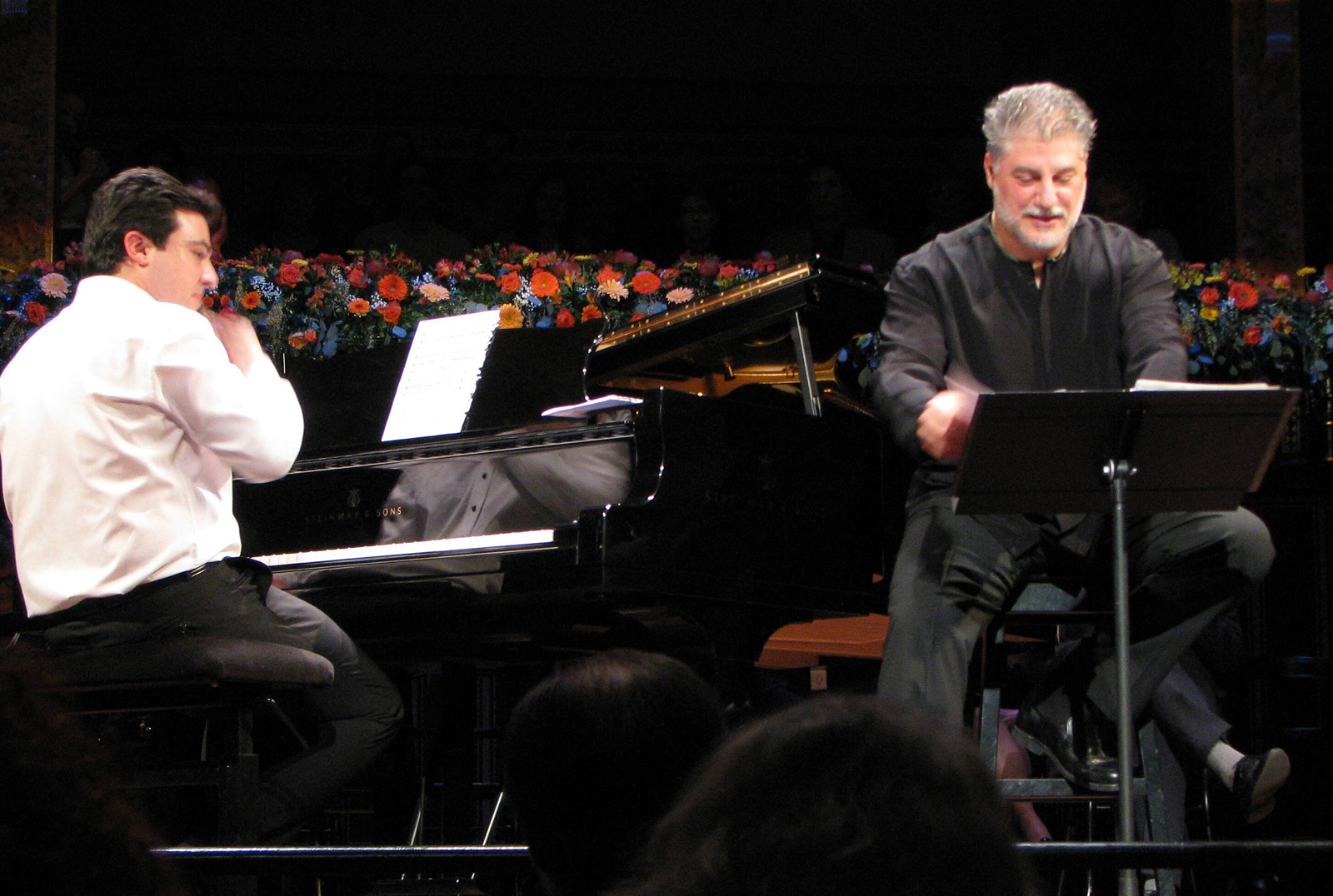
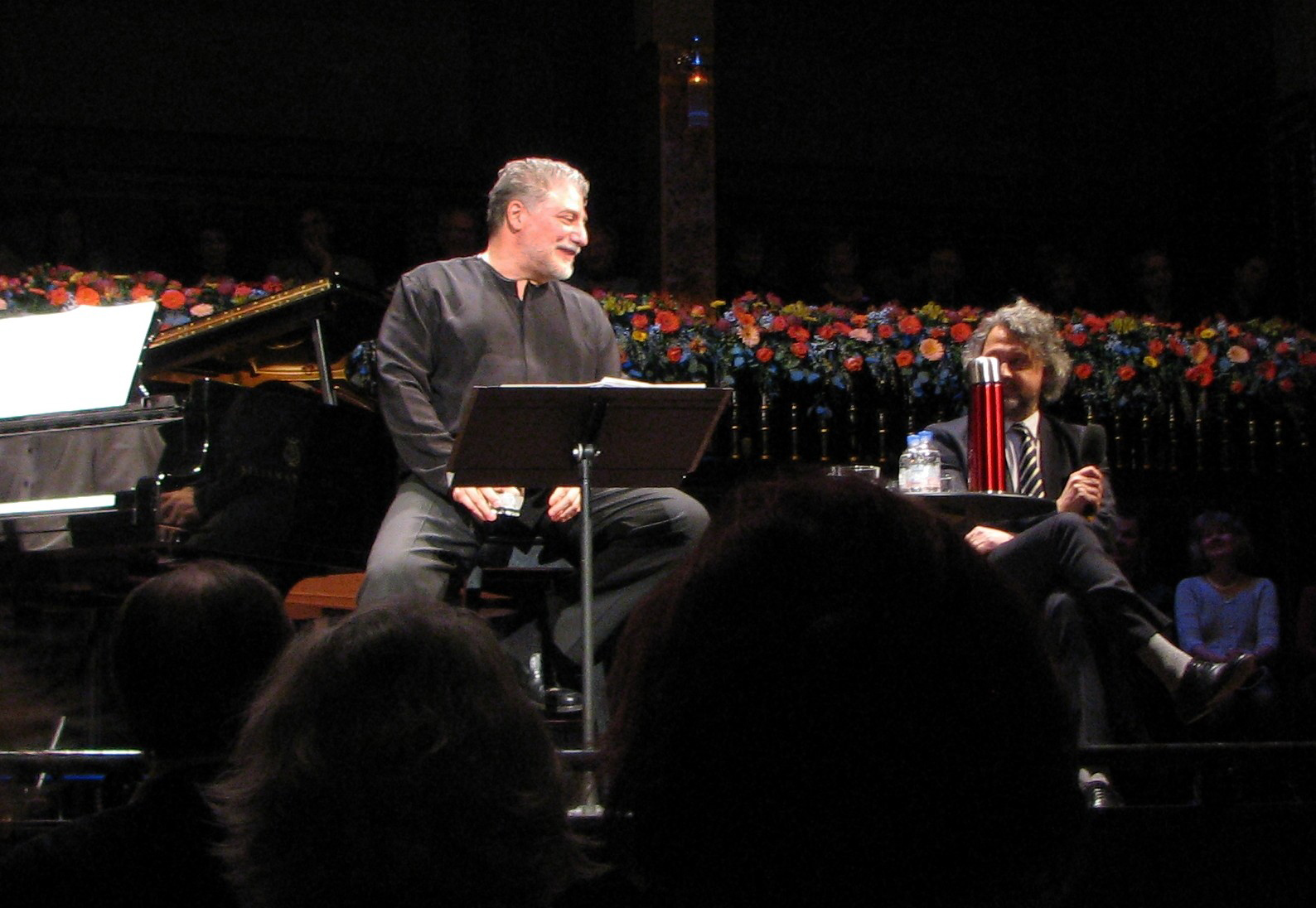
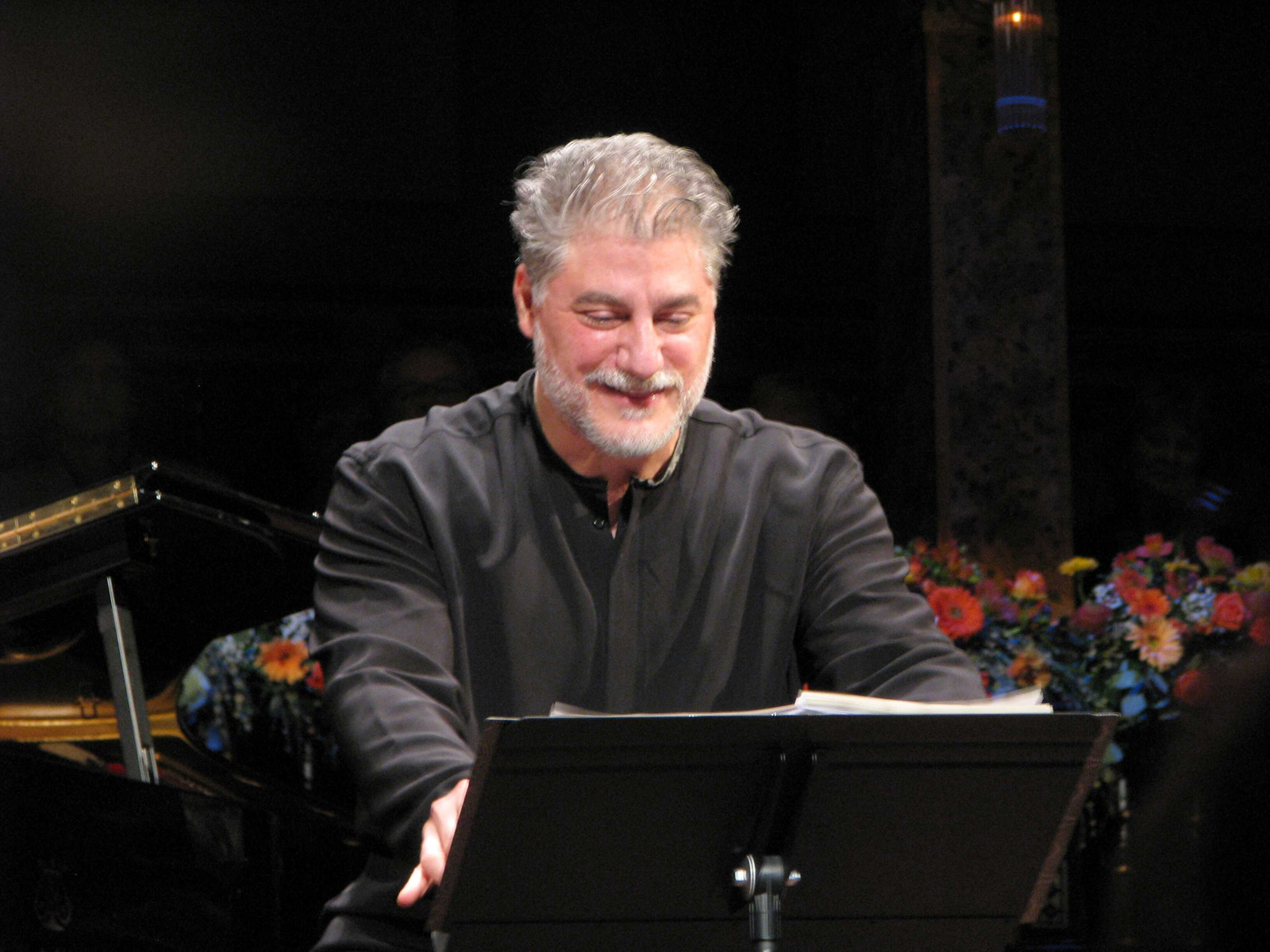
|
We would be satisfied with the first half of the concert, but the second half brings twice as many songs, we enjoy a total of two dozen pieces in the concert. José Cura is a showman, a magician; we don’t even notice the passing time as he conjures a two-hour engaging recital show out of his top-hat. He is a true cultural ambassador of Argentina. He highlights, that we can get to know him the best when he sings his country's songs. We are pleased how Cura's true personality radiates through the songs, filling them with the many signs of his palpable charisma and that makes the evening so special. And with the sense, love and passion he talks about the songs, authors, poetry, feelings and most of all with the beauty of his singing, he gains a lot of admirers for this program. After the intermission, János Balázs’s other piano solo introduces the second part of the concert. He unexpectedly presents us with a superb, handsome and fluent Milonga melody spiced with lyrical sensitivity, playful gracefulness and lots of swings. This part of the concert is focused on pure, light-hearted entertainment and classic songs embracing mostly Carlos Guastavino’s music. It is easy to notice that our tenor enjoys his role very much and talks more and more about the pieces. We learn that Guastavino composed more than 150 songs but only 5-6 pieces are well-known in our days. So, according to Cura, he can be regarded as being one of the most productive songwriters. José proposes a lovely comparison about his art; “Austrian people say that Guastavino is the Argentine Schubert, now I say that Schubert is the Austrian Guastavino.” We hear a series of beautiful melodies imbued by Cura’s splendid vocal arrangement. It starts with a happy, “optimistic” song (Cuando acaba de llover) and followed by other sweet gems. He again highlights some parts of the text for us about the credo of an old teacher (Yo, maestra). Then we lose ourselves in the great melancholic refrains of a sorrowful love song (Ya me voy a retirar). Cura gives us the cream of his vocal abilities and timbre, temperament and full-hearted performing style with such an easy and soft naturalness as if he were chatting with us in a heartfelt meeting. However, those who probably want to hear some operatic volumes on a recital compiled from songs won’t leave the Hall with empty-hands. To cheer up the mood from the sweet music, he happily welcomes the new song “singing like a bird” written in D major (Los días perdidos) and he blows his tenor and its huge, dark sound several times generously. Our pianist accompanies him in excellent style and shape; he remains in the background but we always feel and hear his elegant presence. For me, the other highlight of the evening comes with one of the best-known songs of Guastavino (La rosa y el sauce) about the sad love of the rose and the willow. Here the tenor emphasizes, that in this case the piano carries the melodies and emotions and he just gives the background here and there with his voice. Yet when he sings it, he stirs tremendous beauty and passion. Then Cura introduces Guastavino’s other works us selecting more songs from his suite of Argentine flowers. Soon we feel that we participate in a botanical lecture, since many songs speak about flowers and nature, according to the metaphors of the different feelings mediated by the lyricism. The names of the flowers can cause troubles, but Ádám Bősze brilliantly comes up with the creation of meaningful names or instantly owns the key, for example in the case of “Pitypang” (Plumerito). But some of these poems are also comic songs with jokes that Cura performs like a mini scene in the theatre, just as it happens in the case of Dandelion and Harebell (Cortadera, plumerito; Campanilla, adónde vas?). With his singing-acting ability, he displays the distinct characters of the songs brilliantly or even let them engaged in a dialogue of different voices using his rich vocal resources attractively. Some ensuing, playful songs feature dancing melodies and more dialogues (Qué linda la madraselva; La flor del aguapé). Cura admits that after spending 30 years with killing sopranos – sometimes mezzo sopranos – on the stage, when he sings about flowers it is like a massage for him. Then he finishes this part with an enigmatic poem (Ay, aljaba, florde chilo). It can be characterized by slight disharmony and slow rhythm in the music and he sings it like an anthem with a noble voice. Finally Cura declares that the last two songs of the program represent another famous suite of Guastavino (“clouds”). Though he has great fun and does hope that we also have a good time, he can't sing more pieces from this, because then we should stay till midnight. These two songs (Jardin antiguo; Alegría de la soledad) summarize all the various features of the concert beautifully and we applause wildly for a while. After several rounds of our enthusiastic and frenetic applause José and János greeted the most important person of the festival with their flowers from the stage. She is Szilvia, János’s wife, who did again an enormous job in forming and arranging the whole program of the festival in good shape. So we started our celebration again with even more power. After a short but very playful and funny encore (Canción de Perico) our clapping intensified again with renewed strength. So soon José declared his decision with excellent Hungarian pronunciation: UTOLSÓ! (the last one!) It was hard to hold our laughing after this point. He delivered an “experiment” to us as a second encore which lasted for almost ten minutes. So he introduced the popular children’s song of Maria Elena Walsh (Mambrú se fue a la guerra) in a unique way. We had great pleasure to follow his vivid and expressive storytelling when he explained the funny jokes of the text about Mambrú and how his cold and sneezing stopped the war. Of course we also got the eternal moral message: „It is better to have a peaceful cold than a healthy war” very effectively. But when he performed the whole story again as a song with János at the piano and delineated all the different phases and characters of the story with incredible inventive and versatile vocal acting and funny sneezing, it was a unique experience indeed. Another long, bursting applause indicated the complete success. But it was too late and seeing José’s well-known smile and waving we let the artists leave the stage. Fortunately we surely will enjoy the complex art of José in the future in Budapest in the role of singer, conductor and composer since he just has been appointed as Principal Guest Artist for the Hungarian Radio Art Groups (Symphony Orchestra, Choir and Children’s Choir) for three years starting from the 2019/20 season.
|


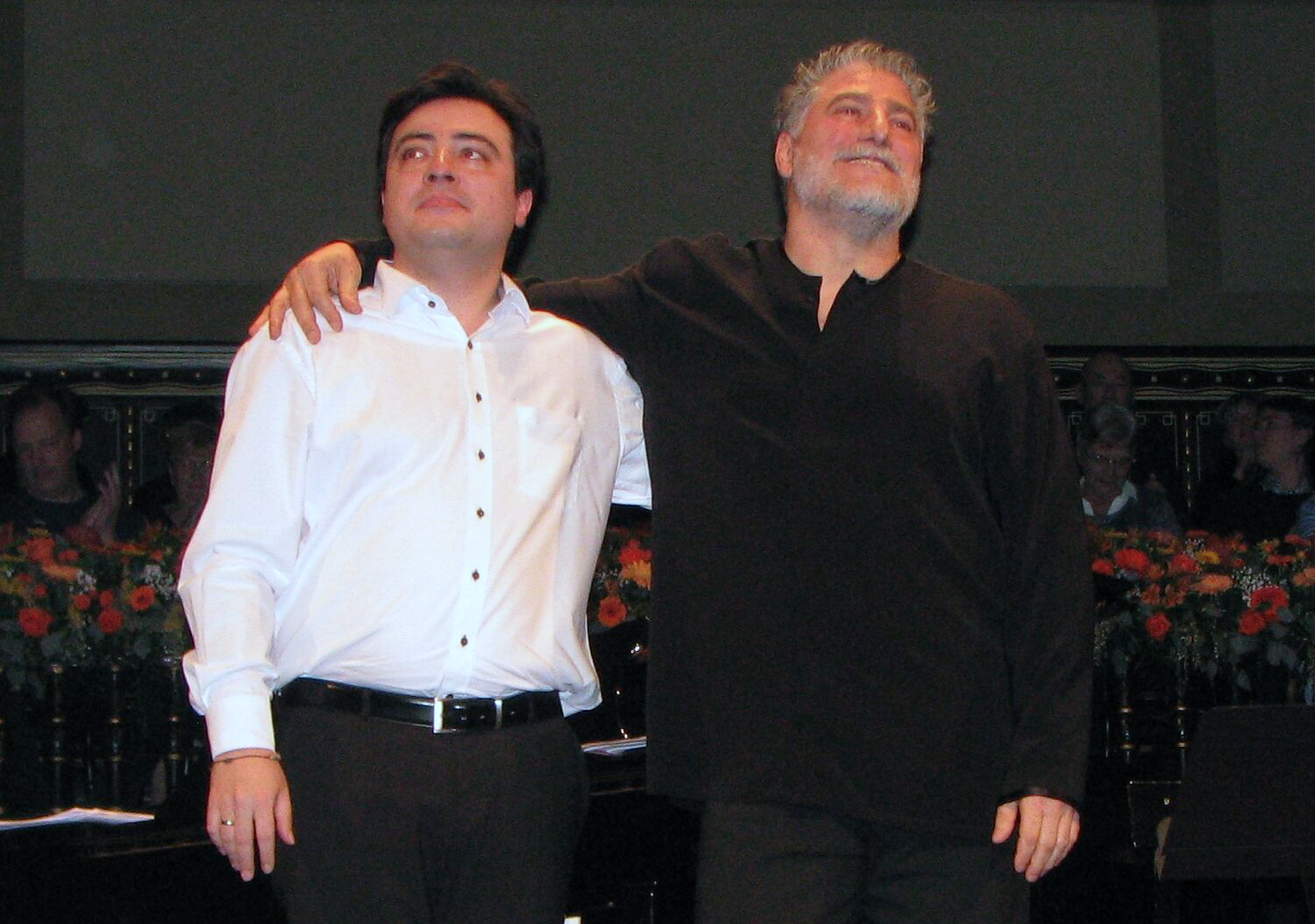

Click on photo above for short video
José Cura and Darko Brlek at a press conference
photo by Marijan Zlobec
At the 3rd Winter Festival (again in Ljubljana), tenor and conductor
José Cura will return to the stage, accompanied by Slovenian opera
singers soprano Elvira Hasanagić, who has worked with the State
Opera in Munich, Berlin and Dresden, and the mezzo Monika Bohinec, a
permanent member of the ensemble T the Viennese State Opera. It
is interesting, however, that at this moment you would not guess
wwho will actually be the conductor: the singers will be
accompanied by the SNG Maribor Symphony Orchestra conducted by Simon
Krečič when Cura sings' otherwise Cura will conduct.
photo by Zoe Cura
Photo by Darja Stravs Tisu
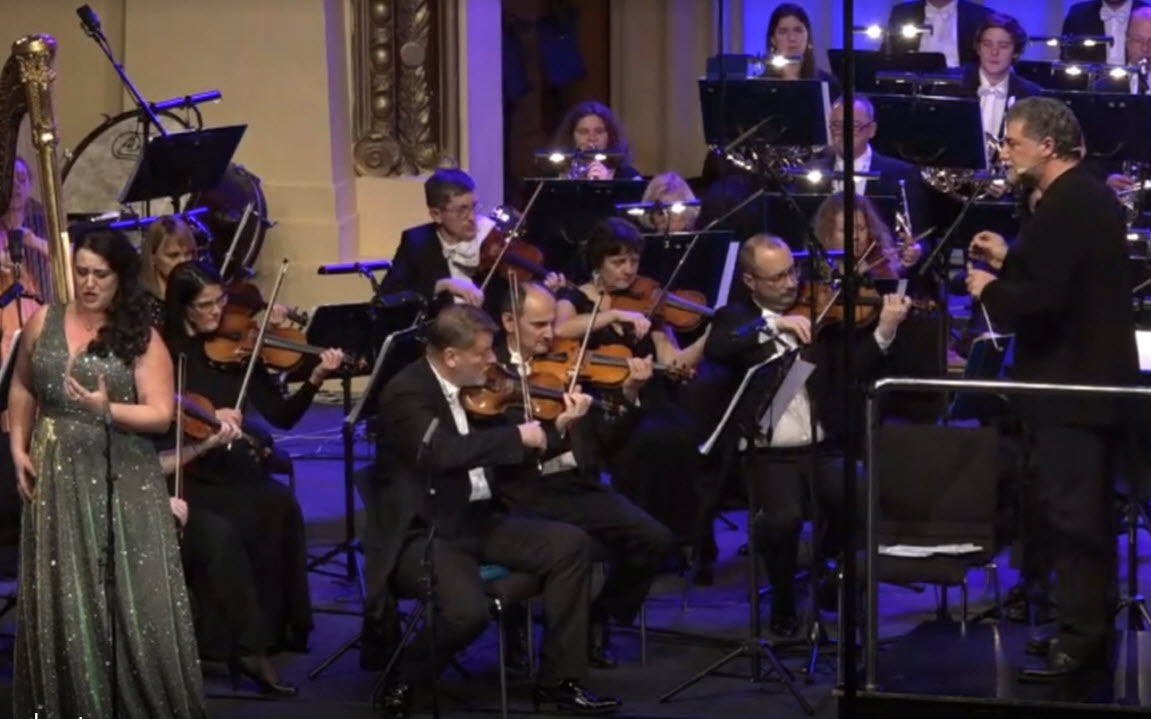
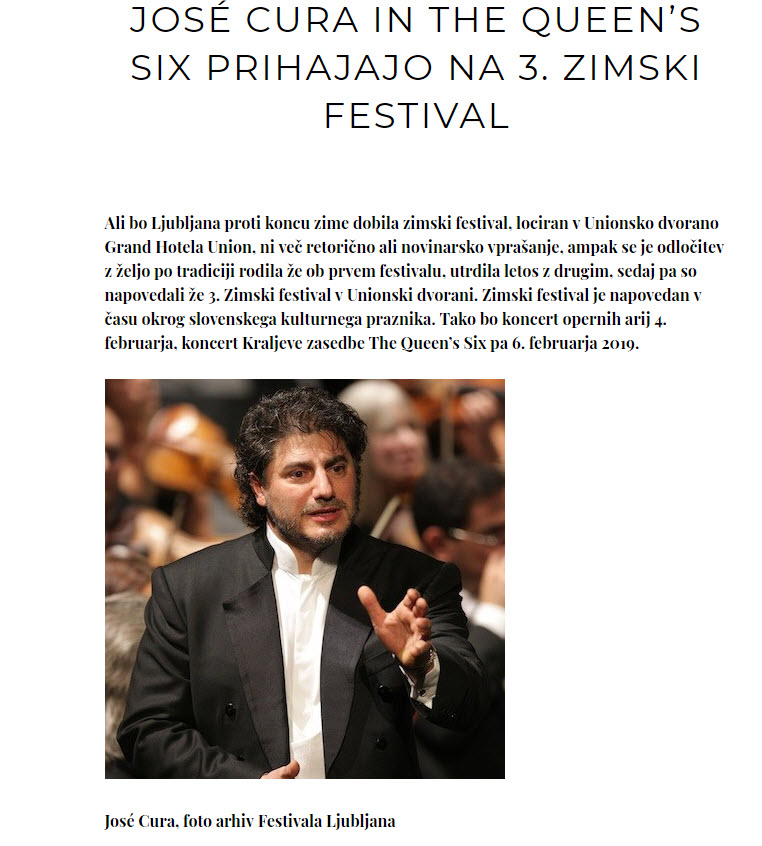
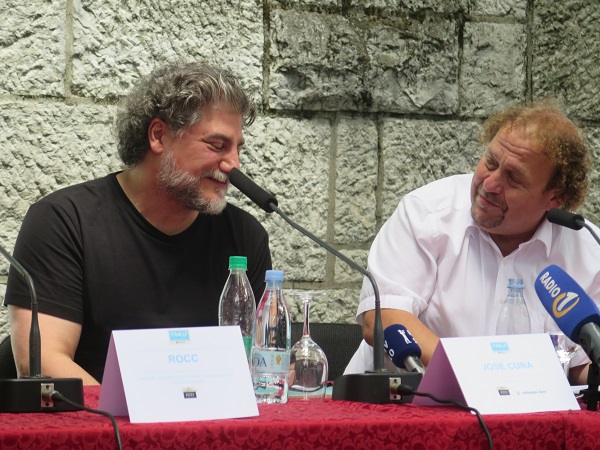

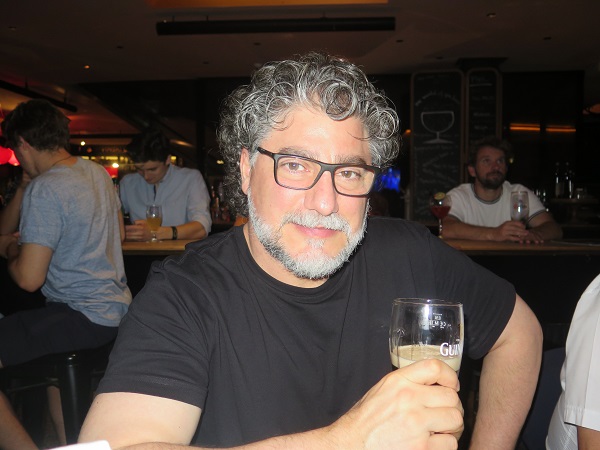
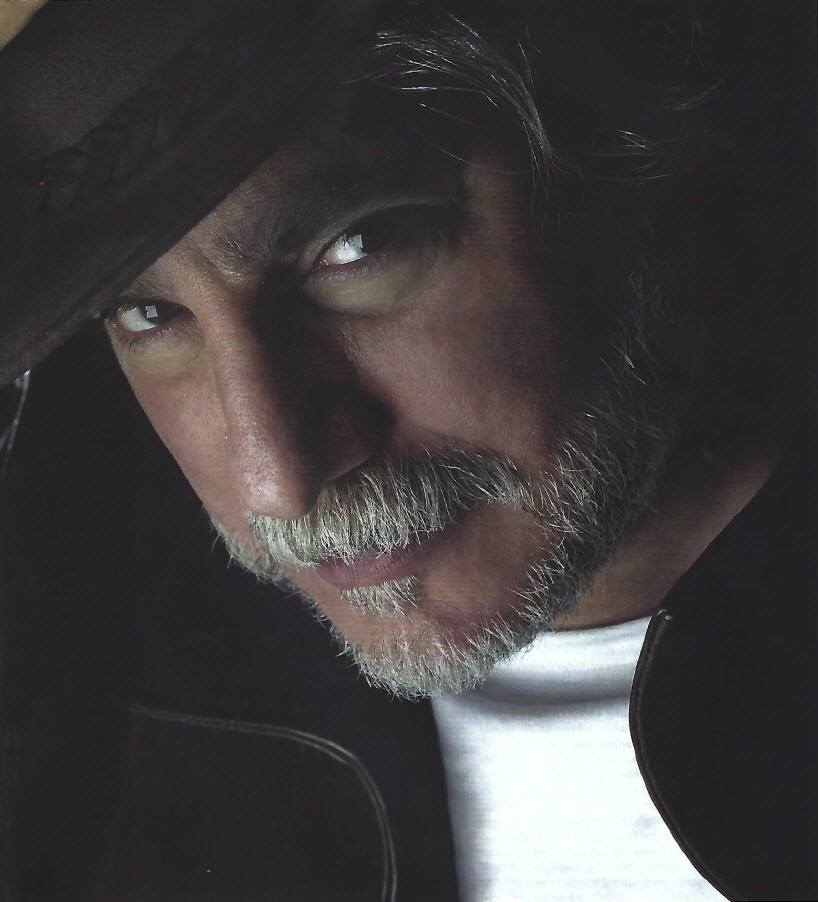
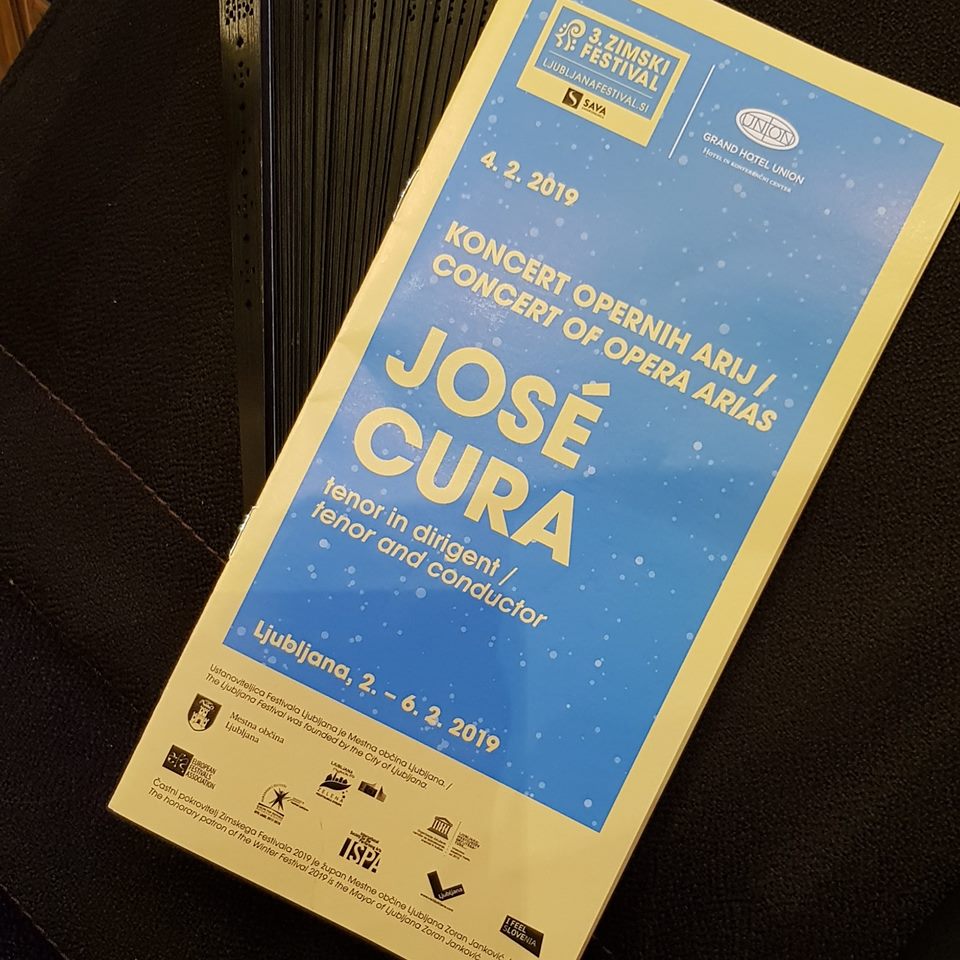

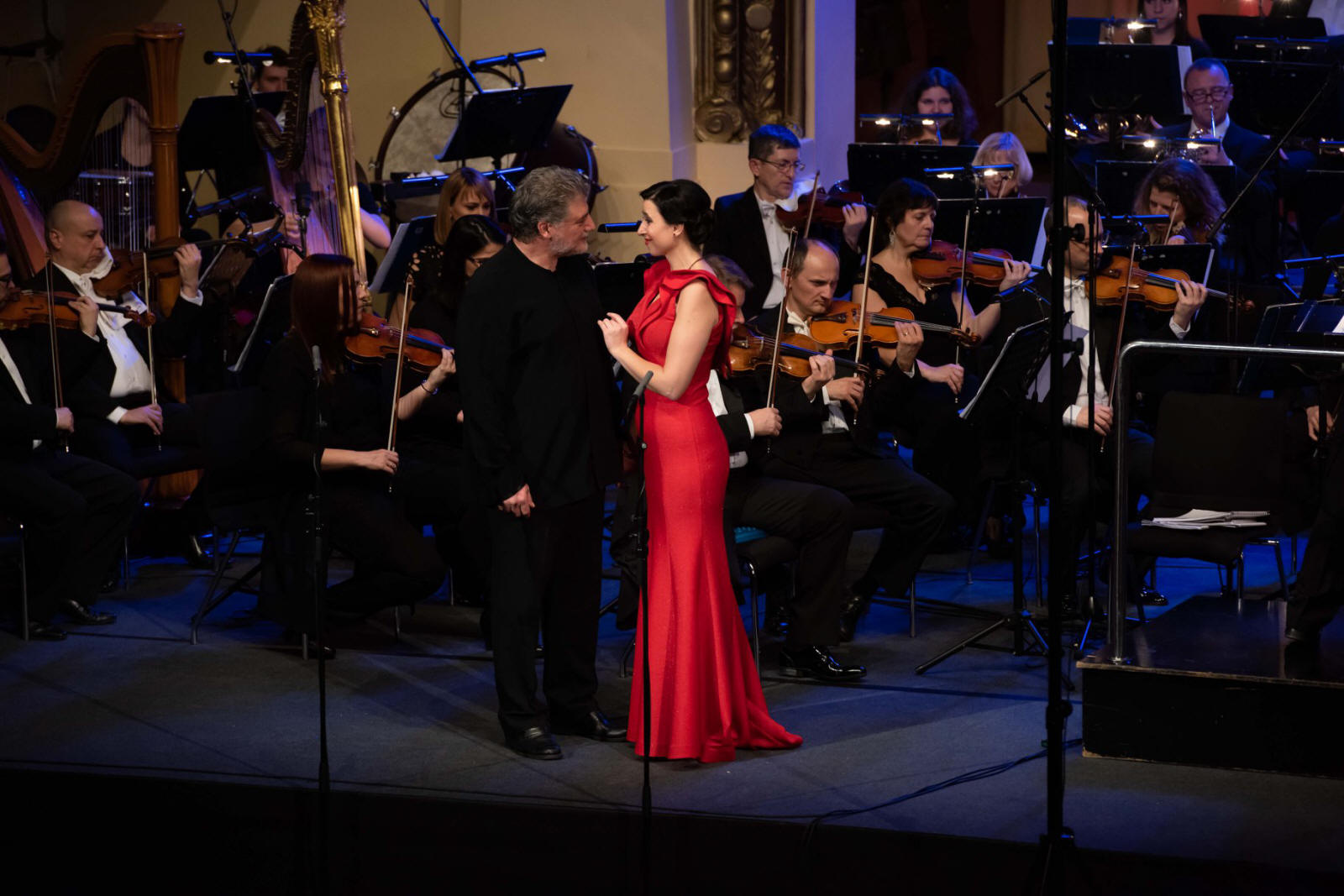
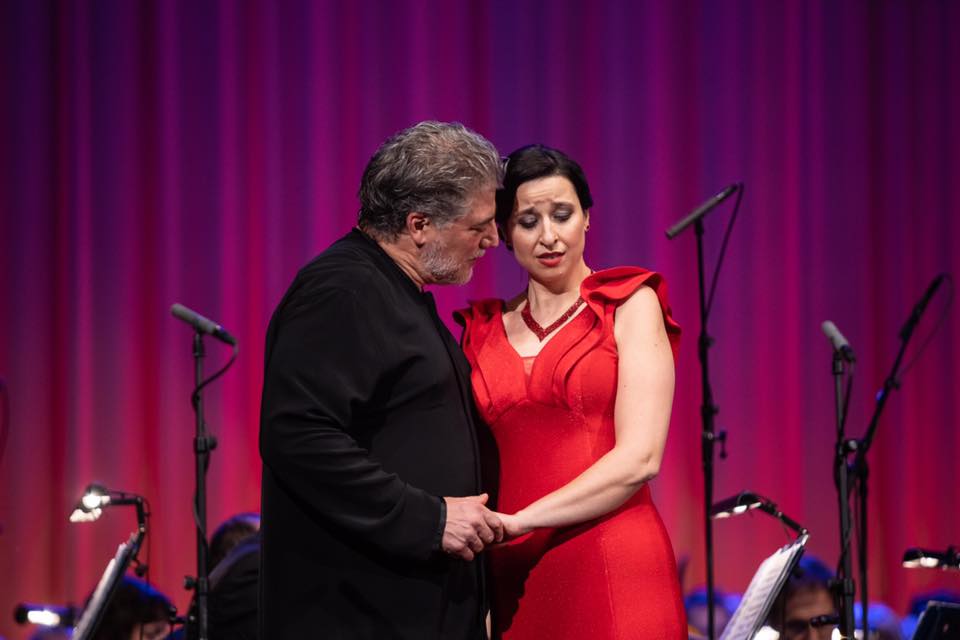
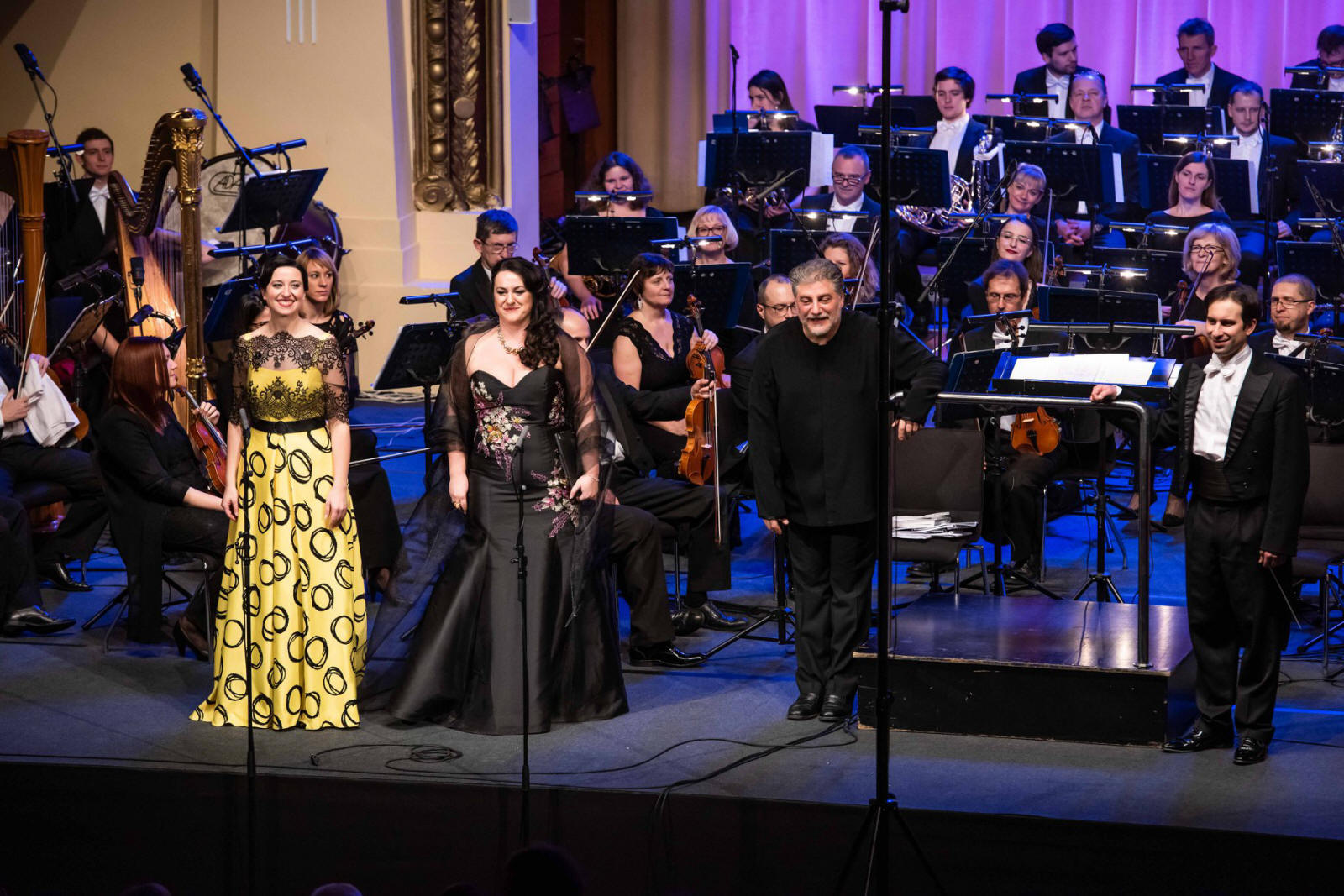
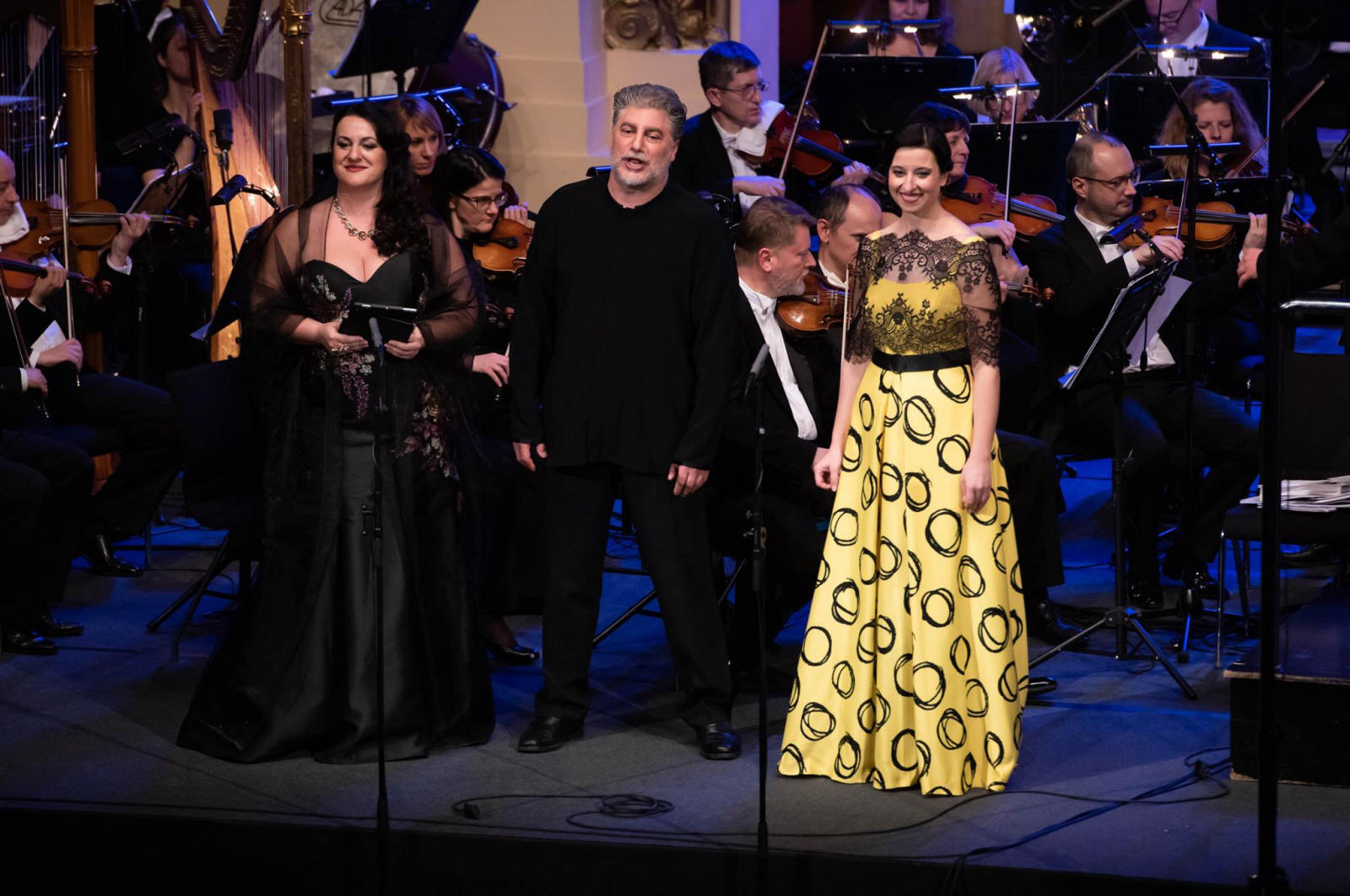
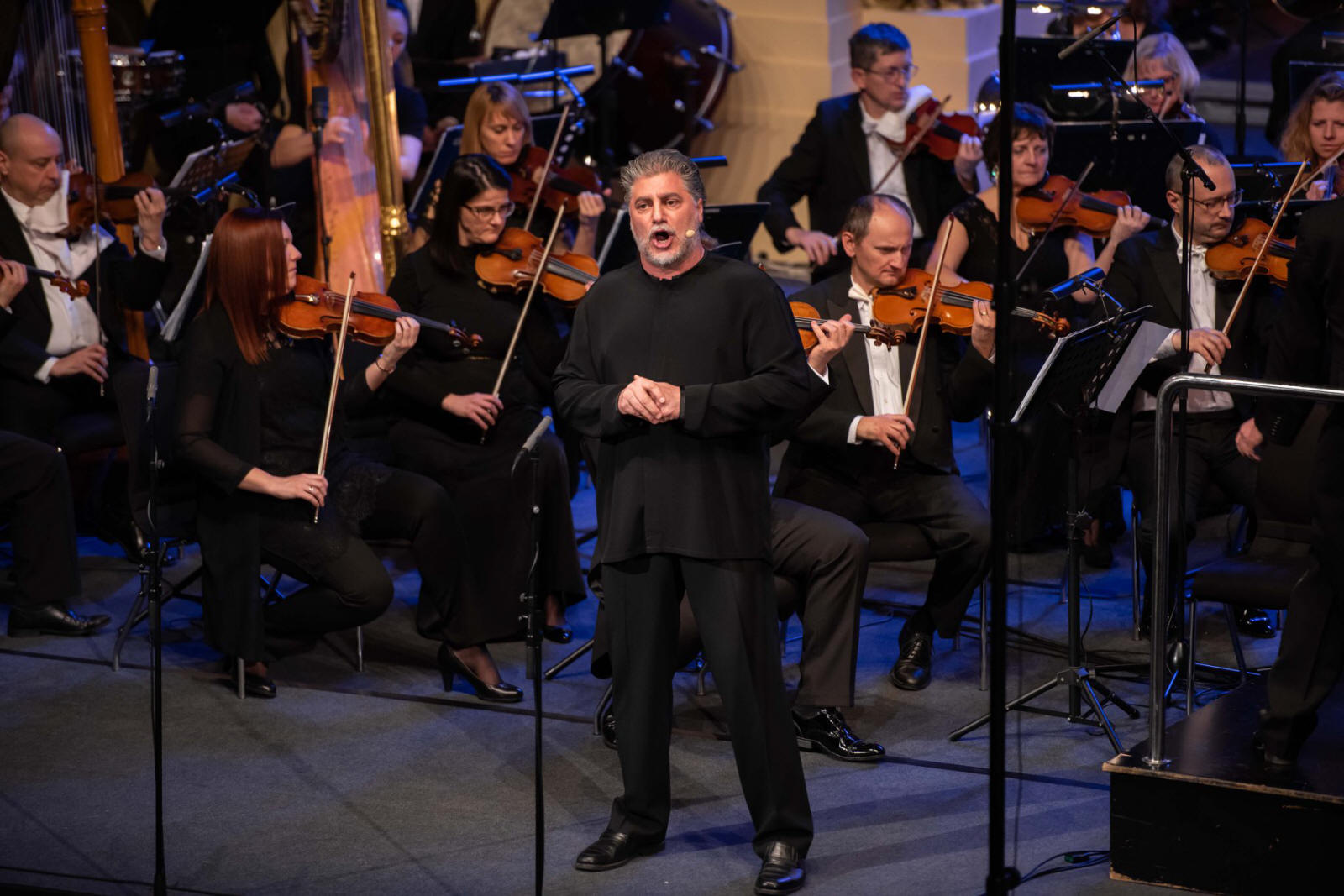
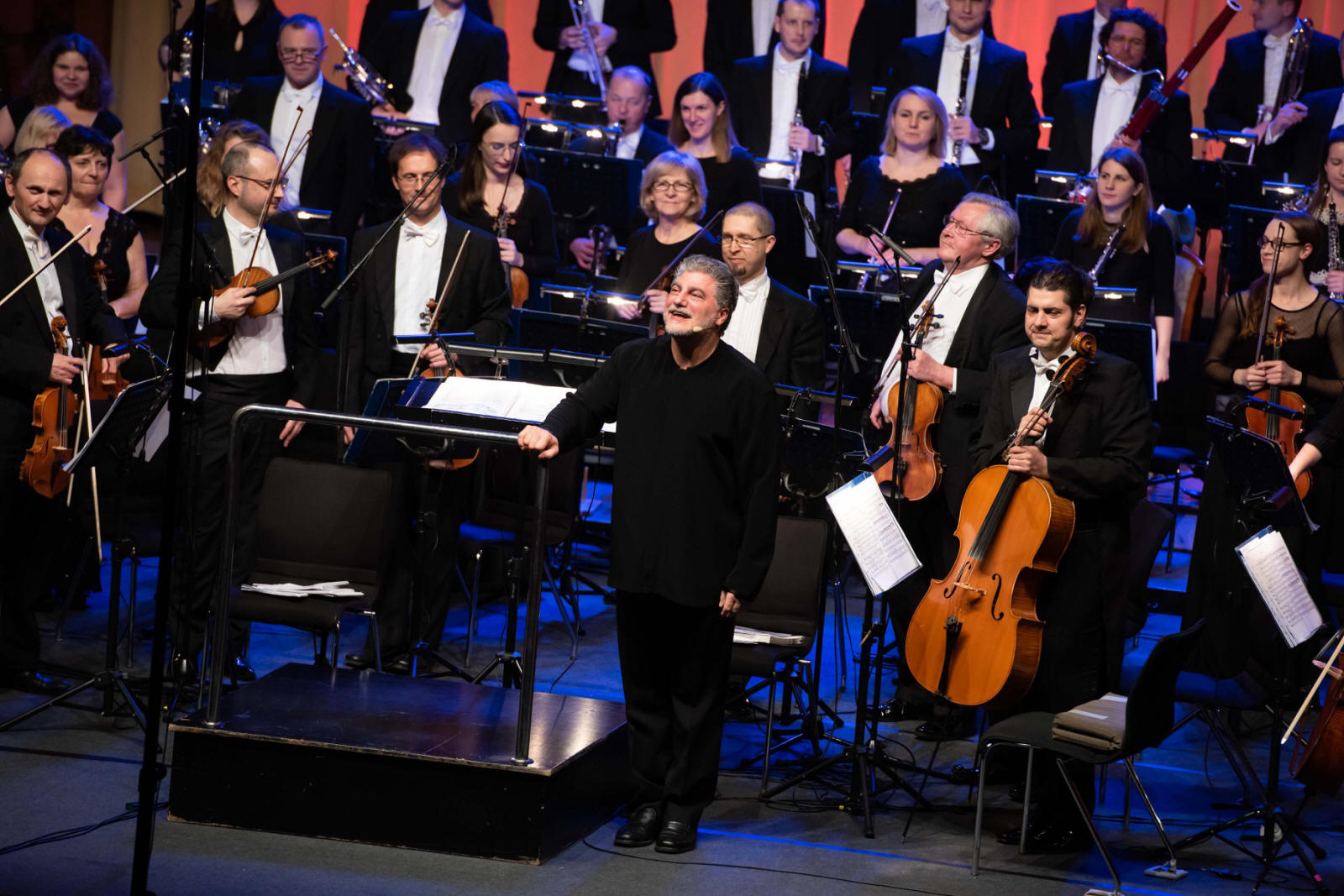

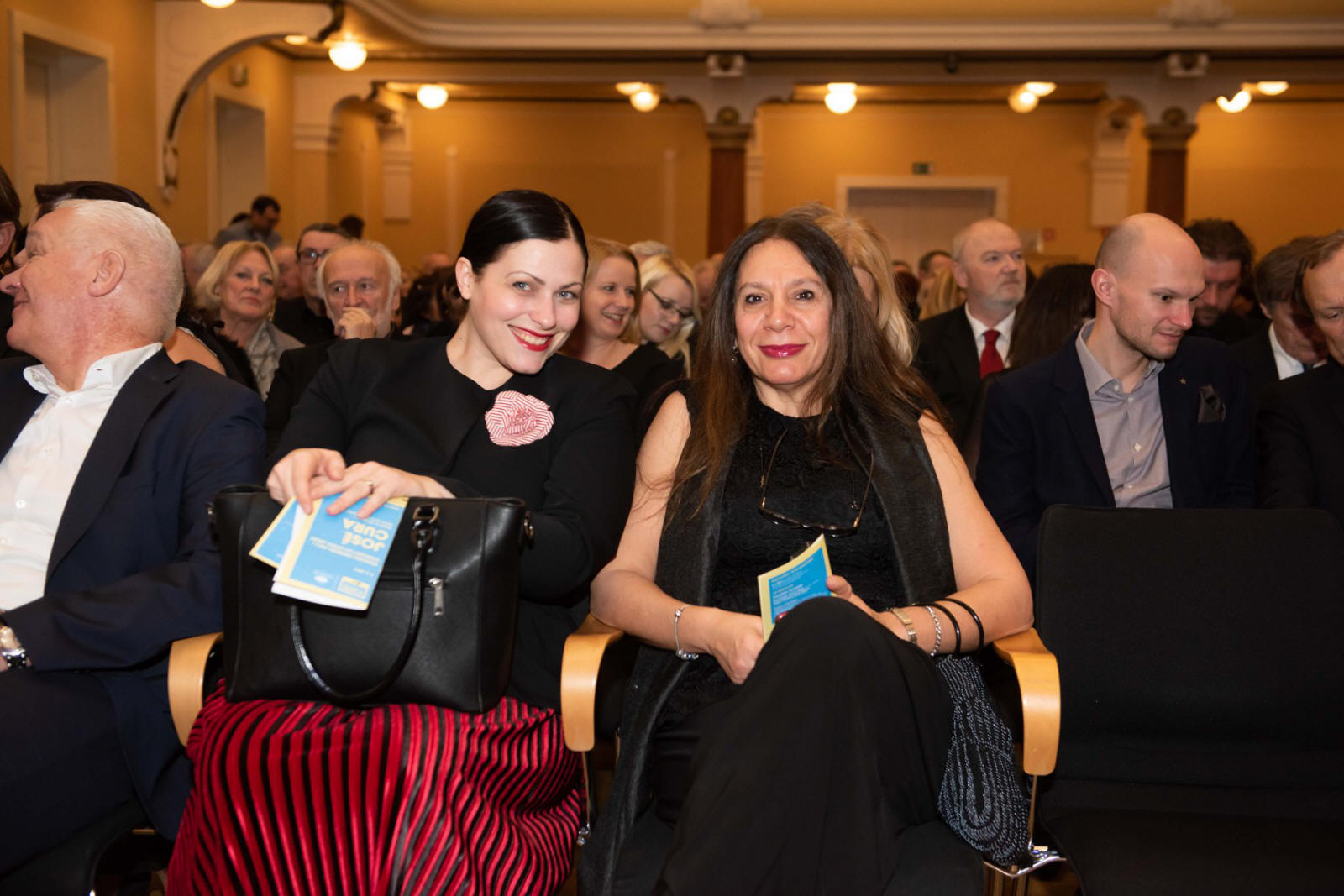
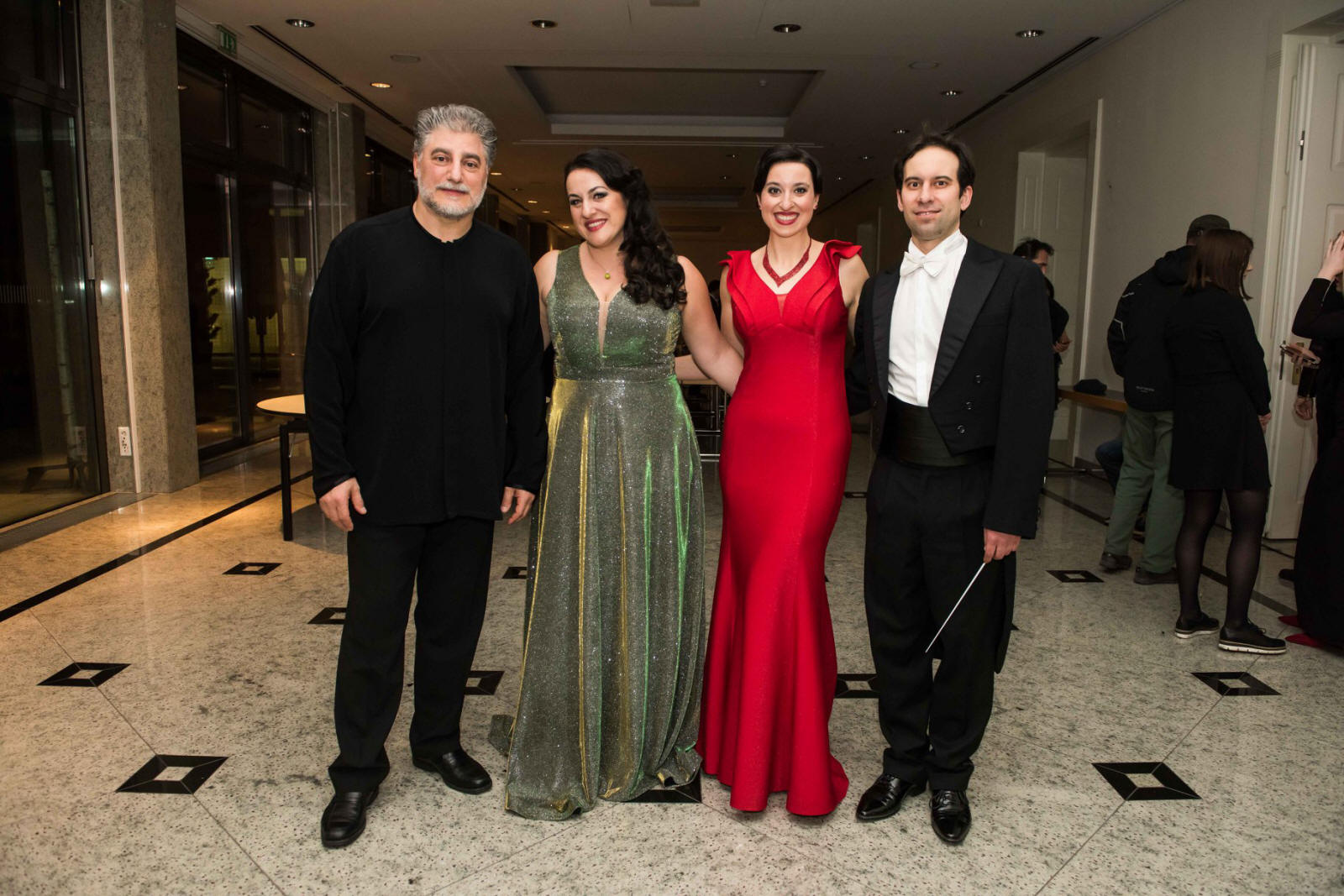
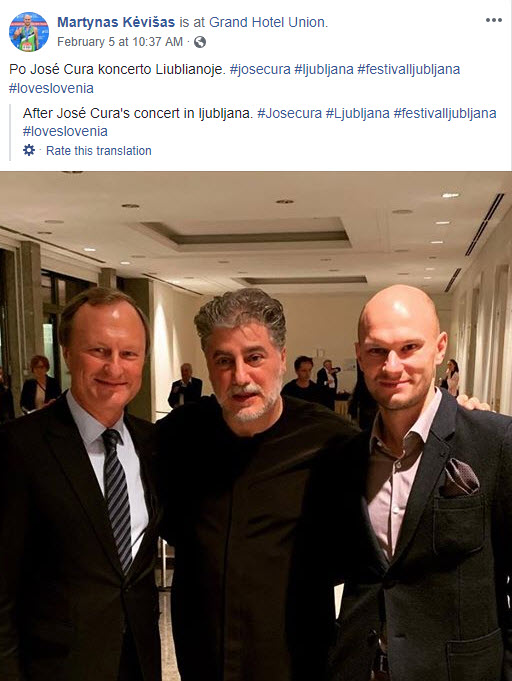
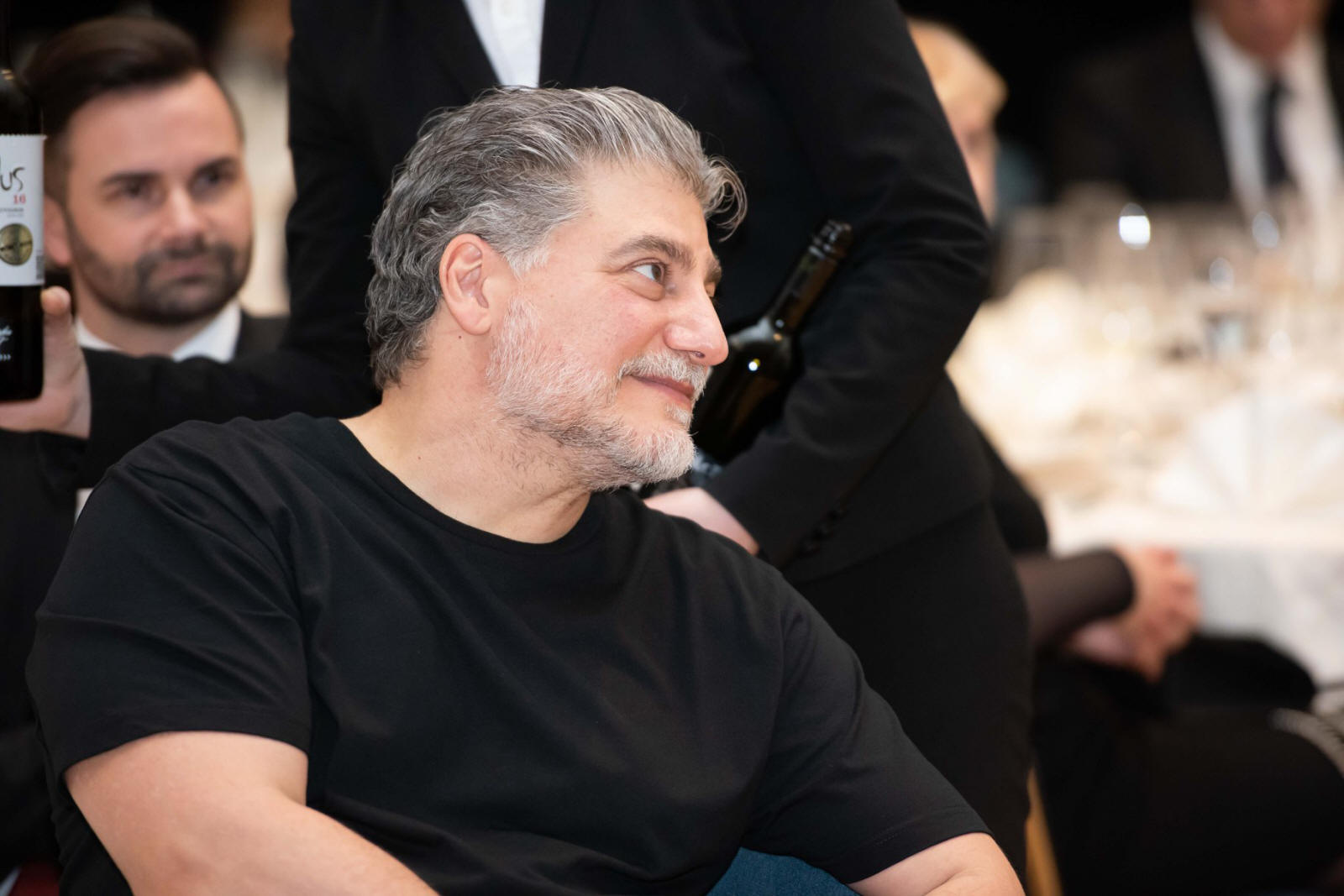
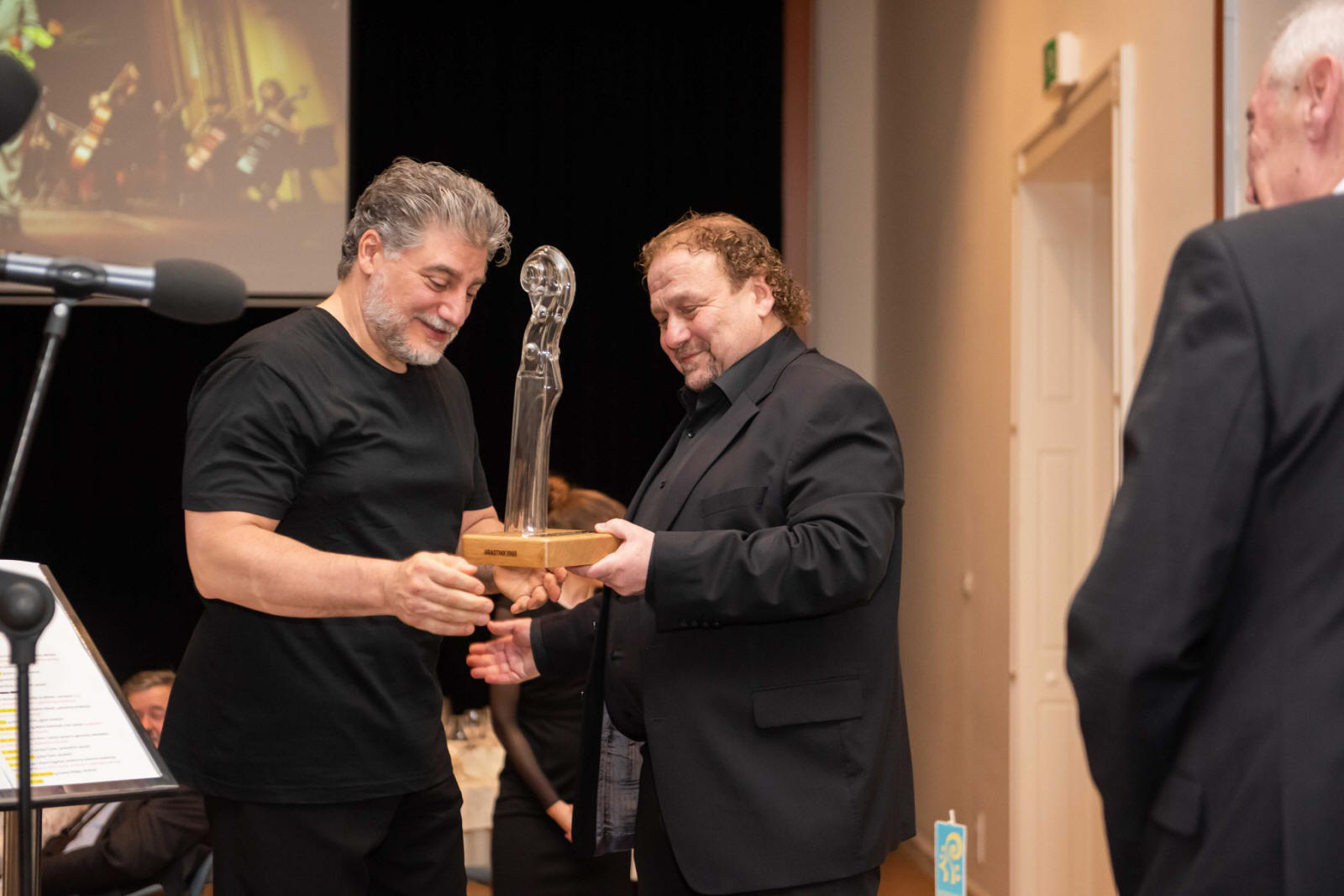
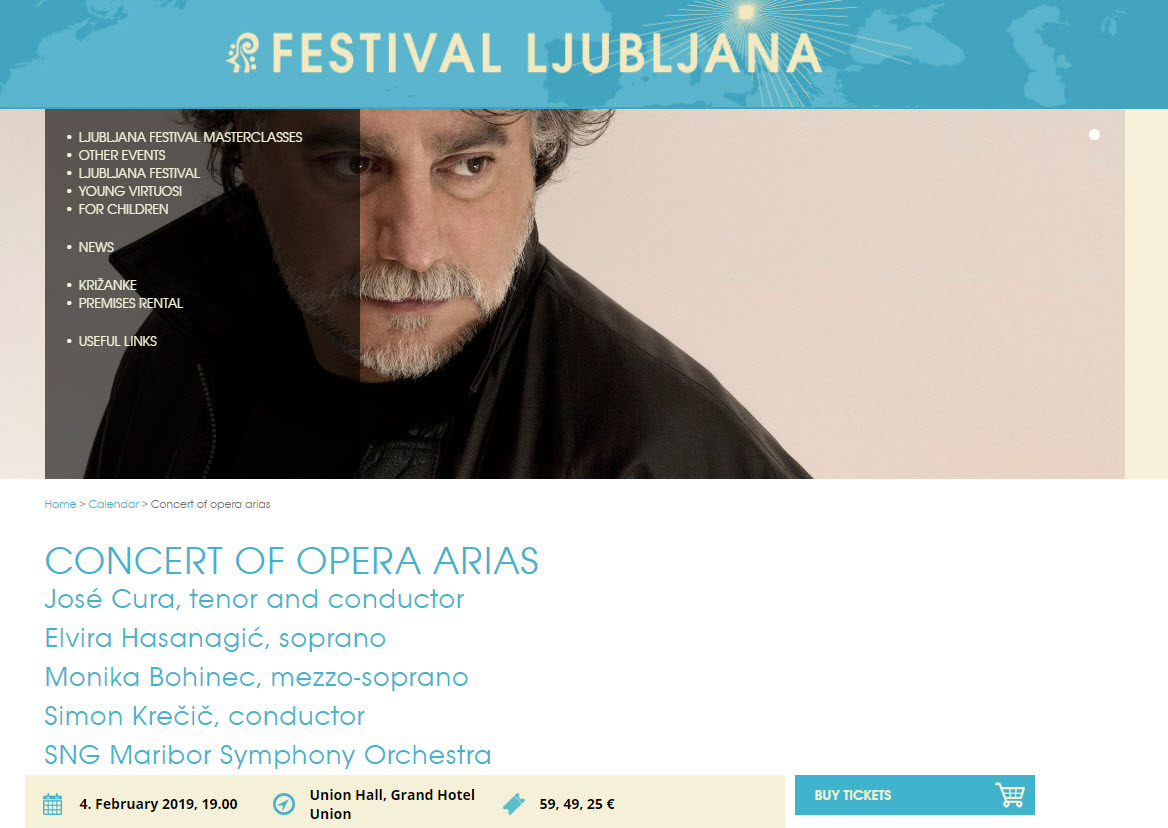

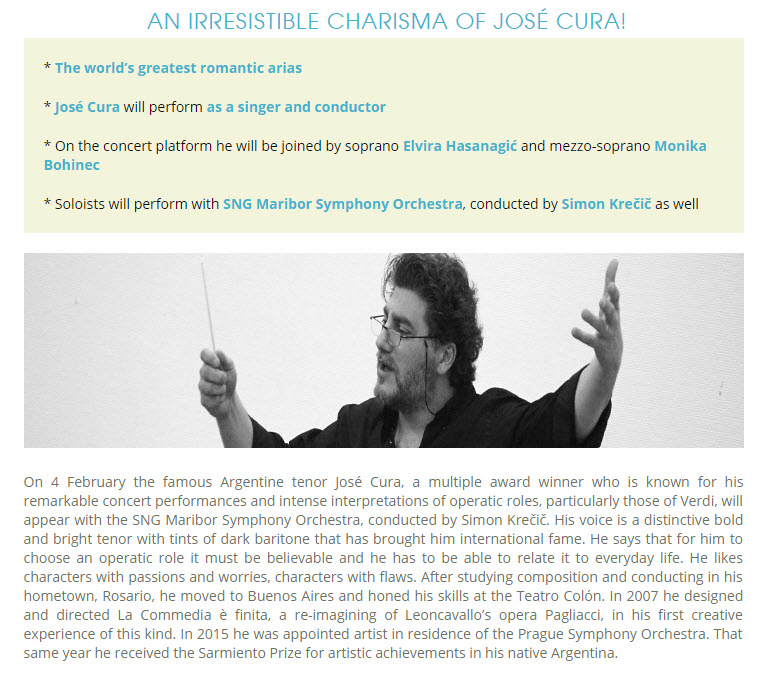
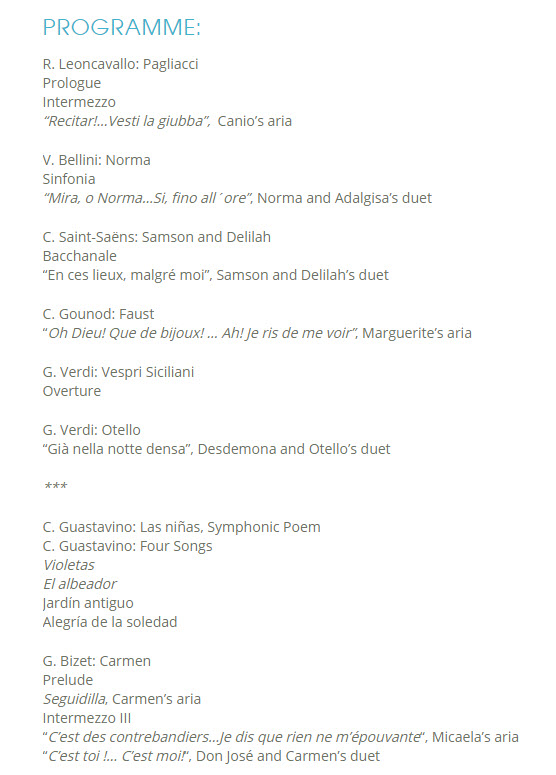

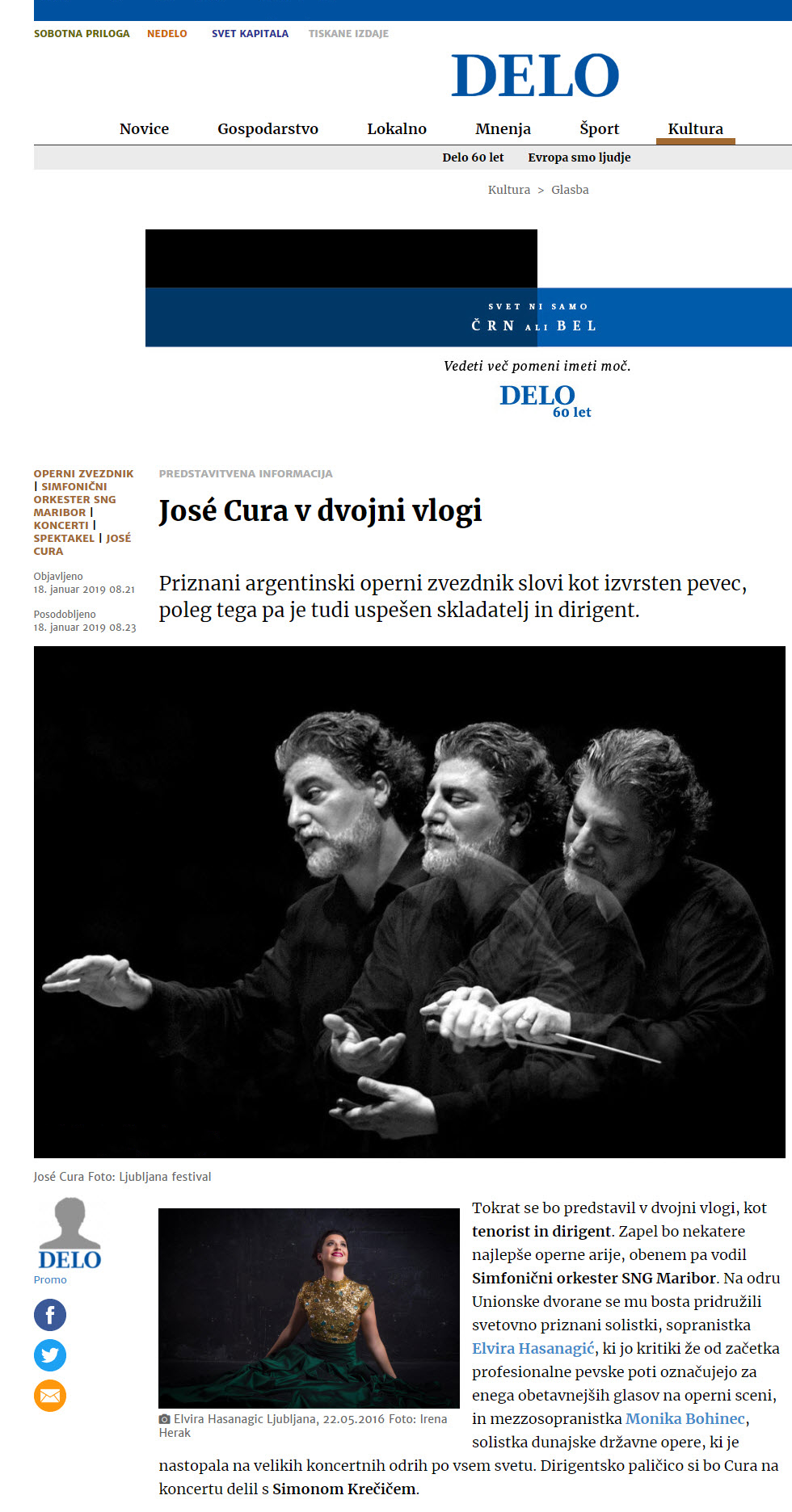
|
Note: This is a machine-based translation. We offer it only a a general guide but it should not be considered definitive. José Cura in a Double Role The renowned Argentine opera star is famous as an excellent singer but he is also a successful composer and conductor. Delo Elvira Hasanagic January 18, 2019
|


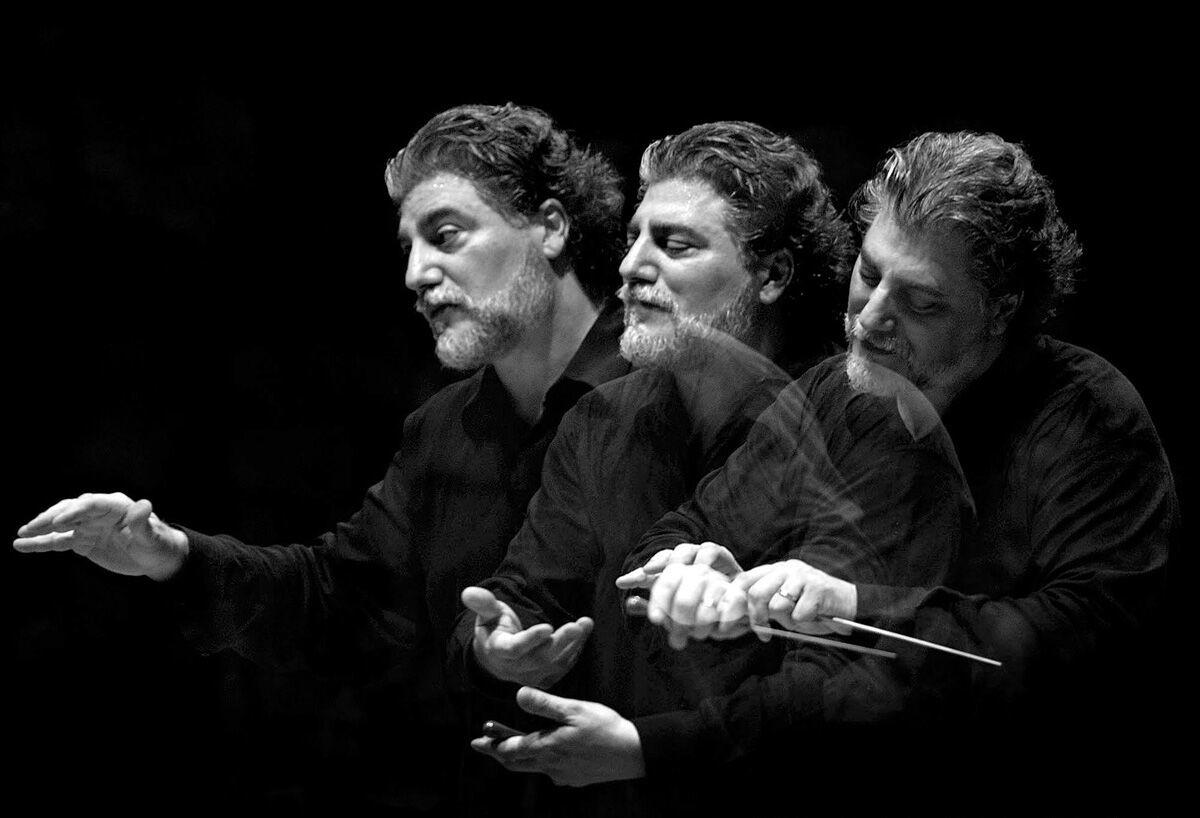
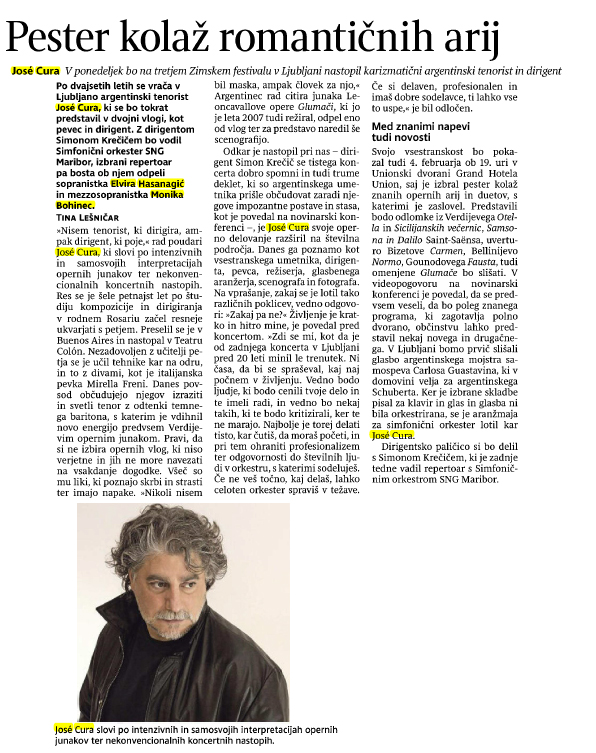
|
|
|
|
|
|

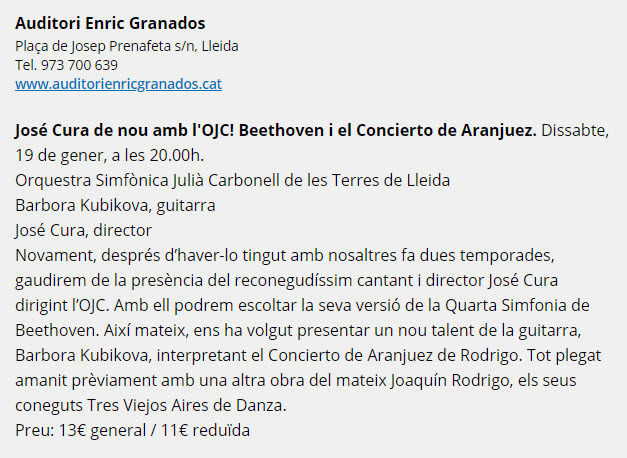
|
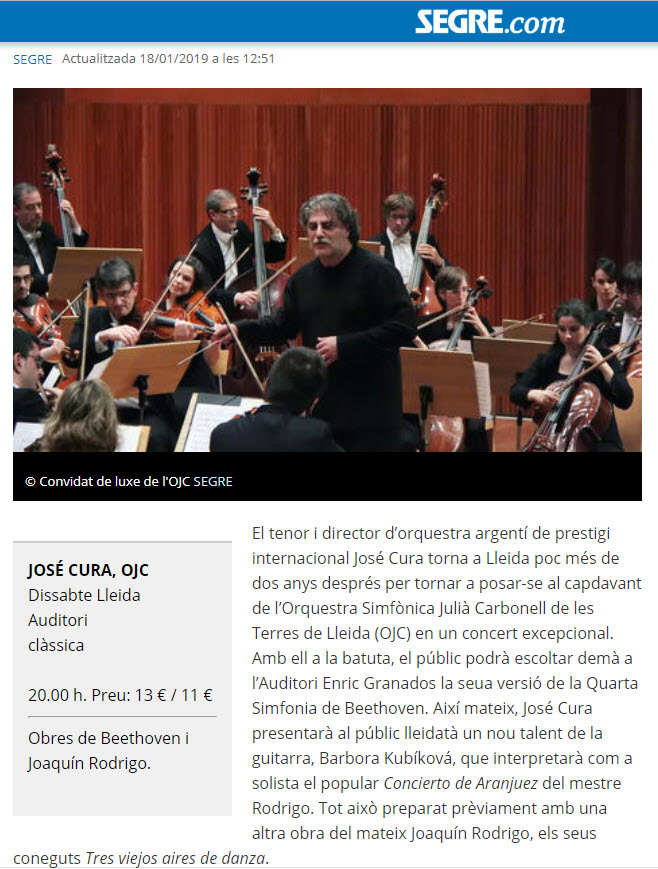

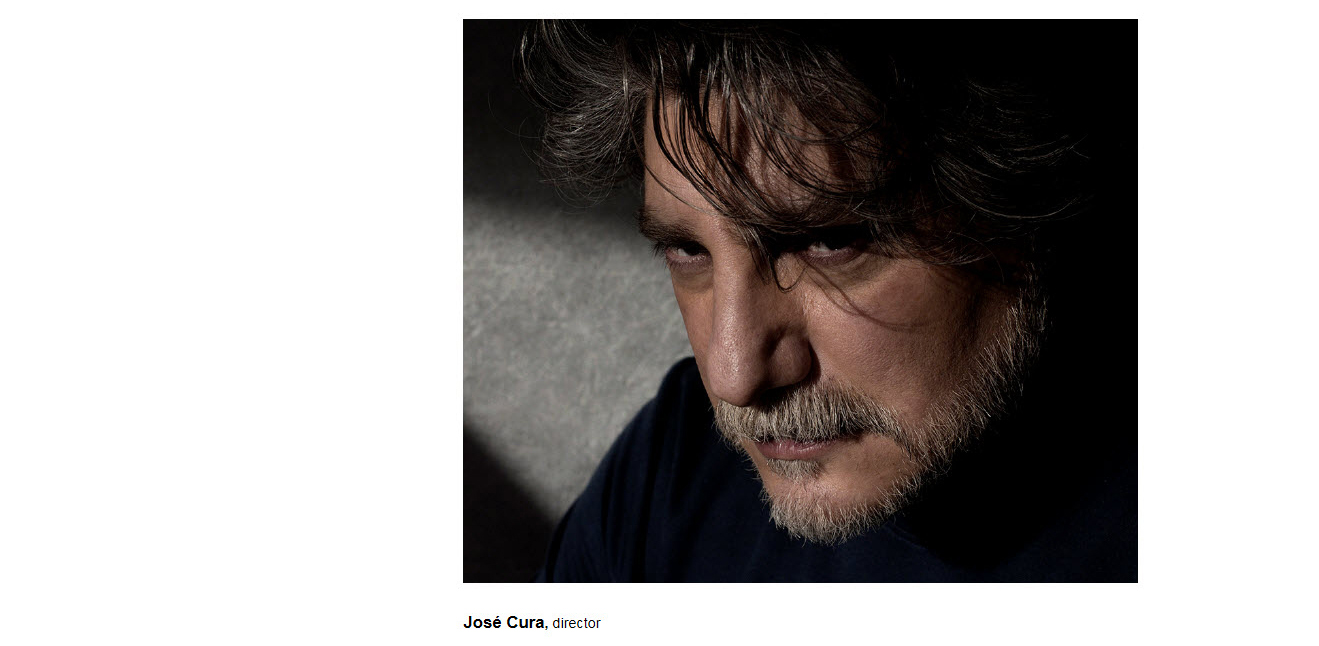
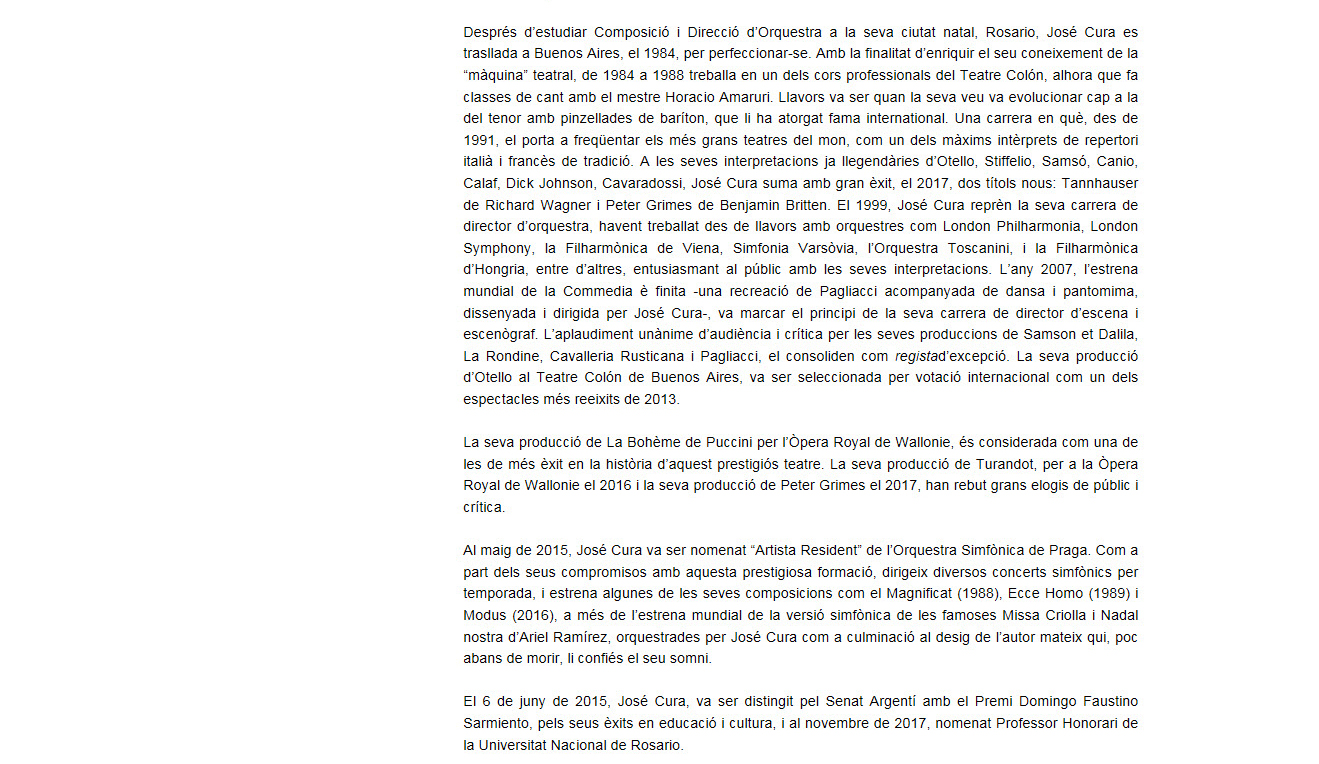
|
Note: This is a machine-based translation. We offer it only a a general guide but it should not be considered definitive.
|

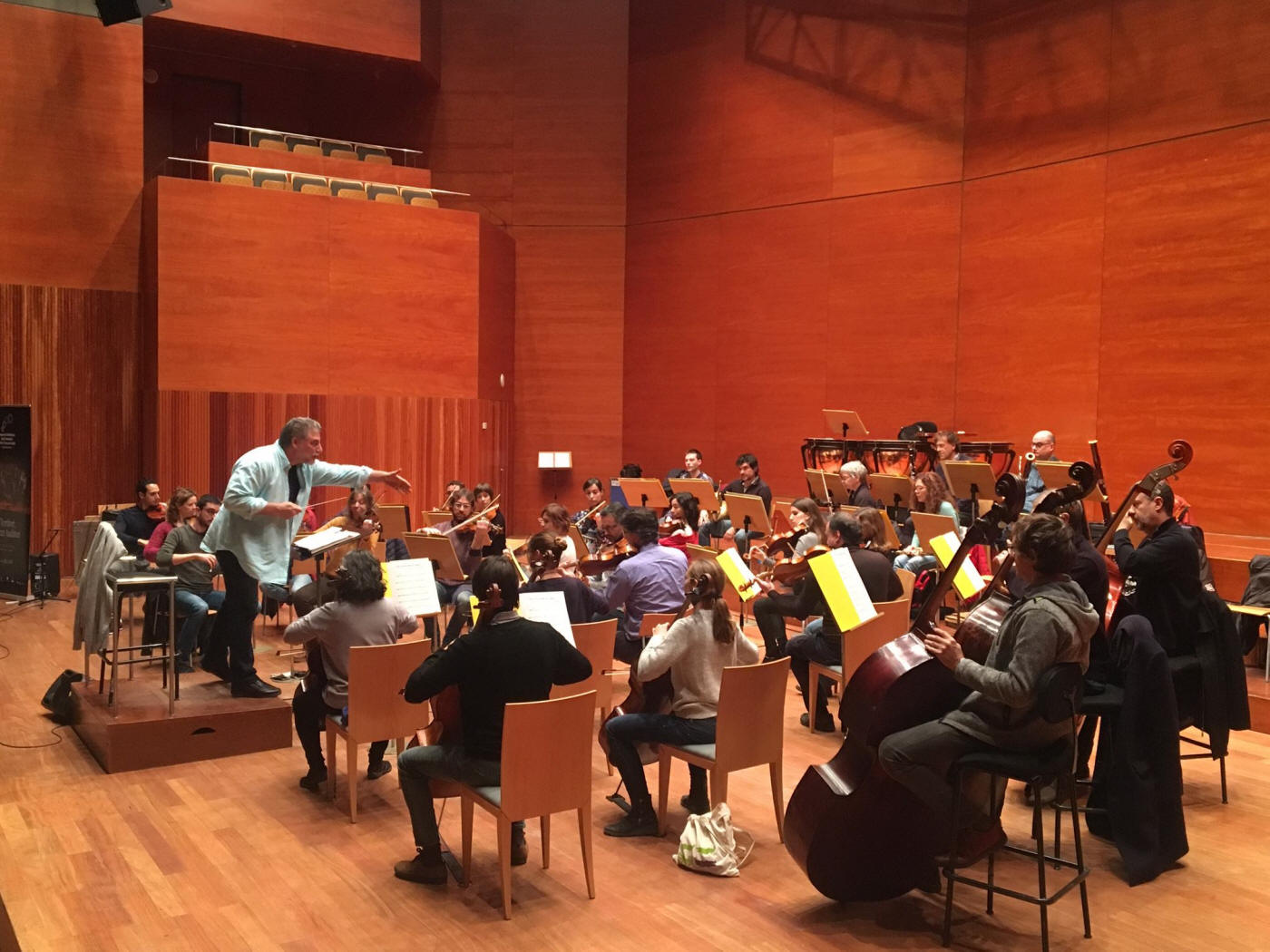




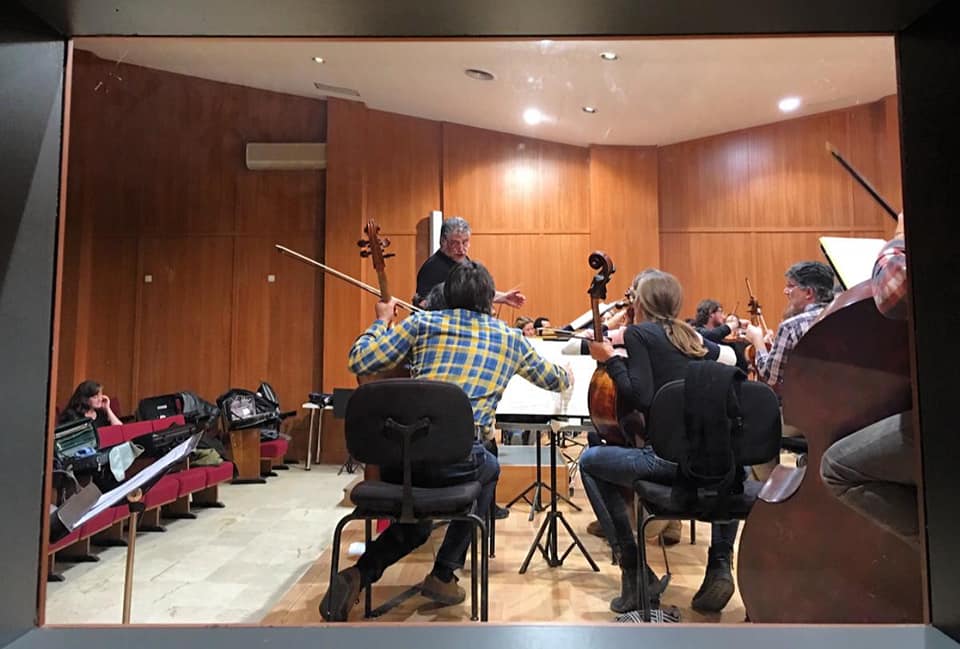

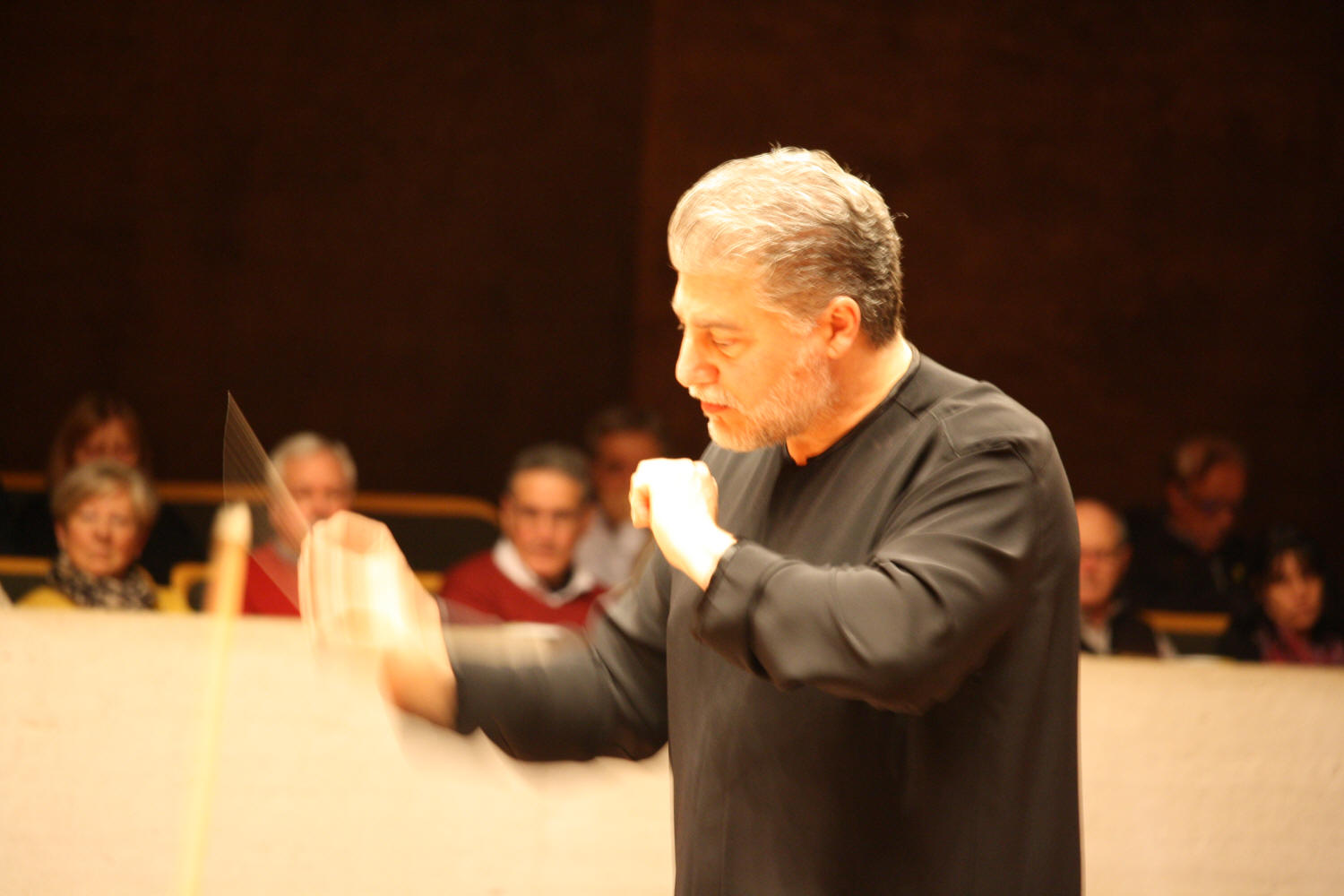

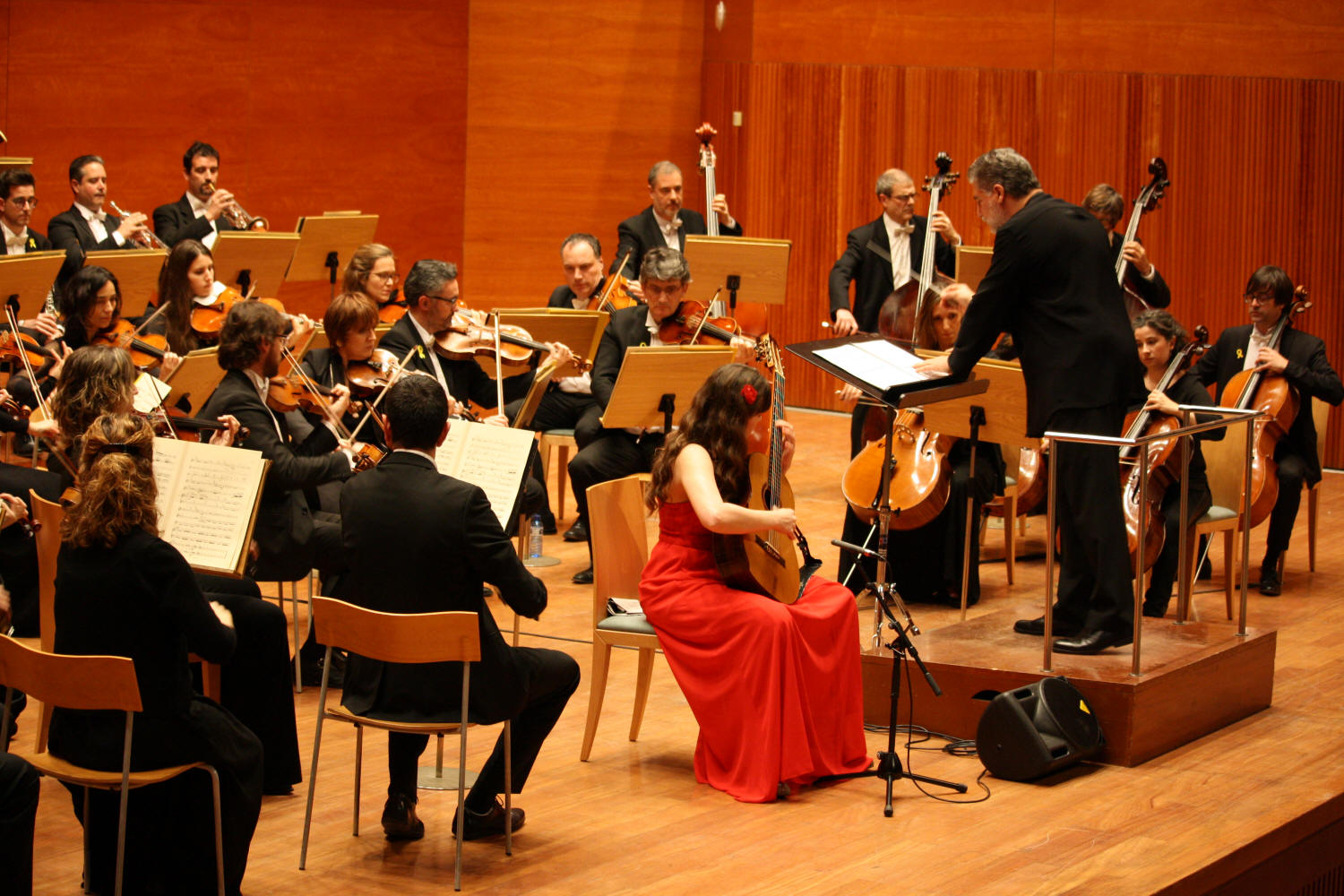
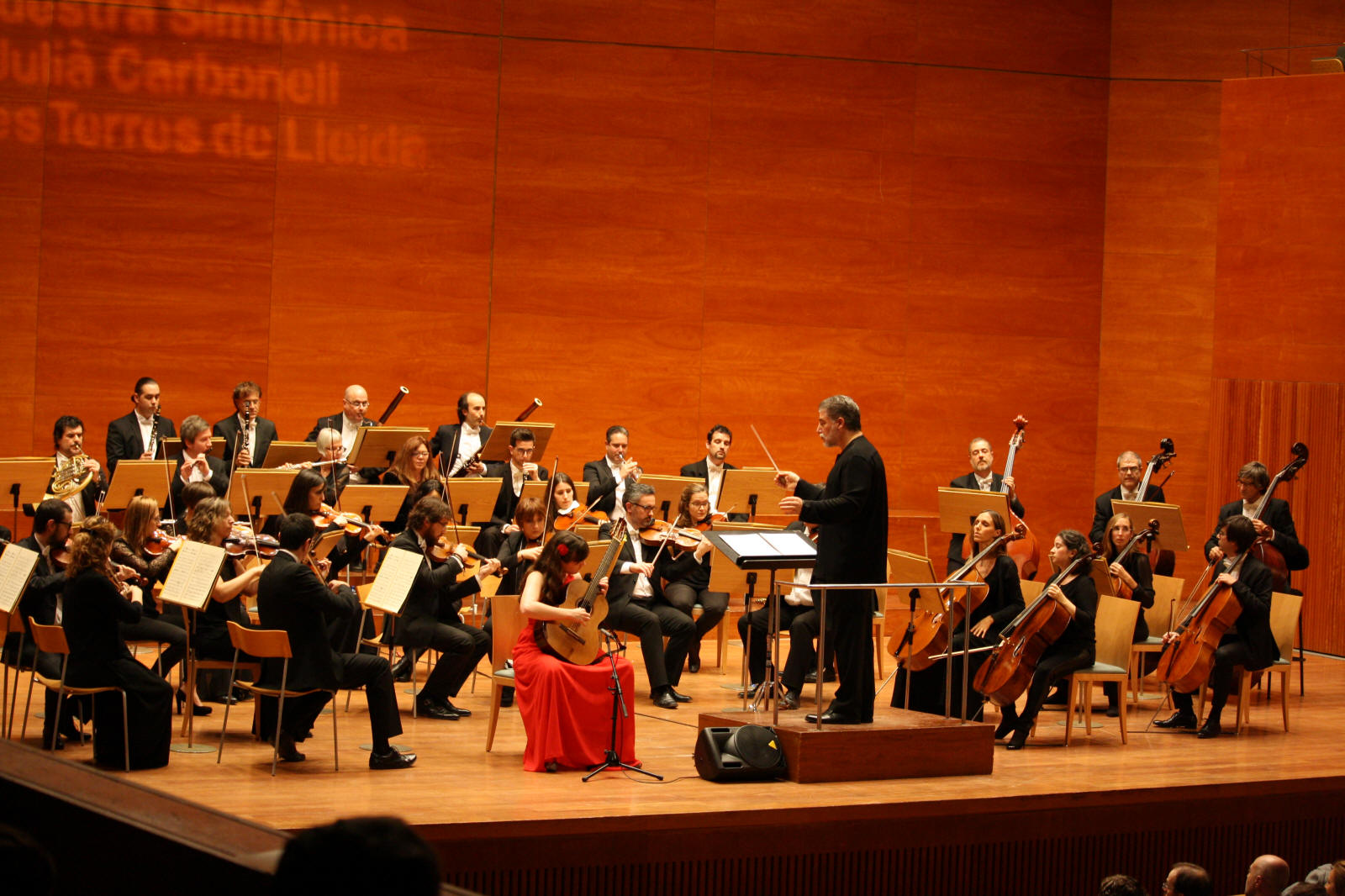
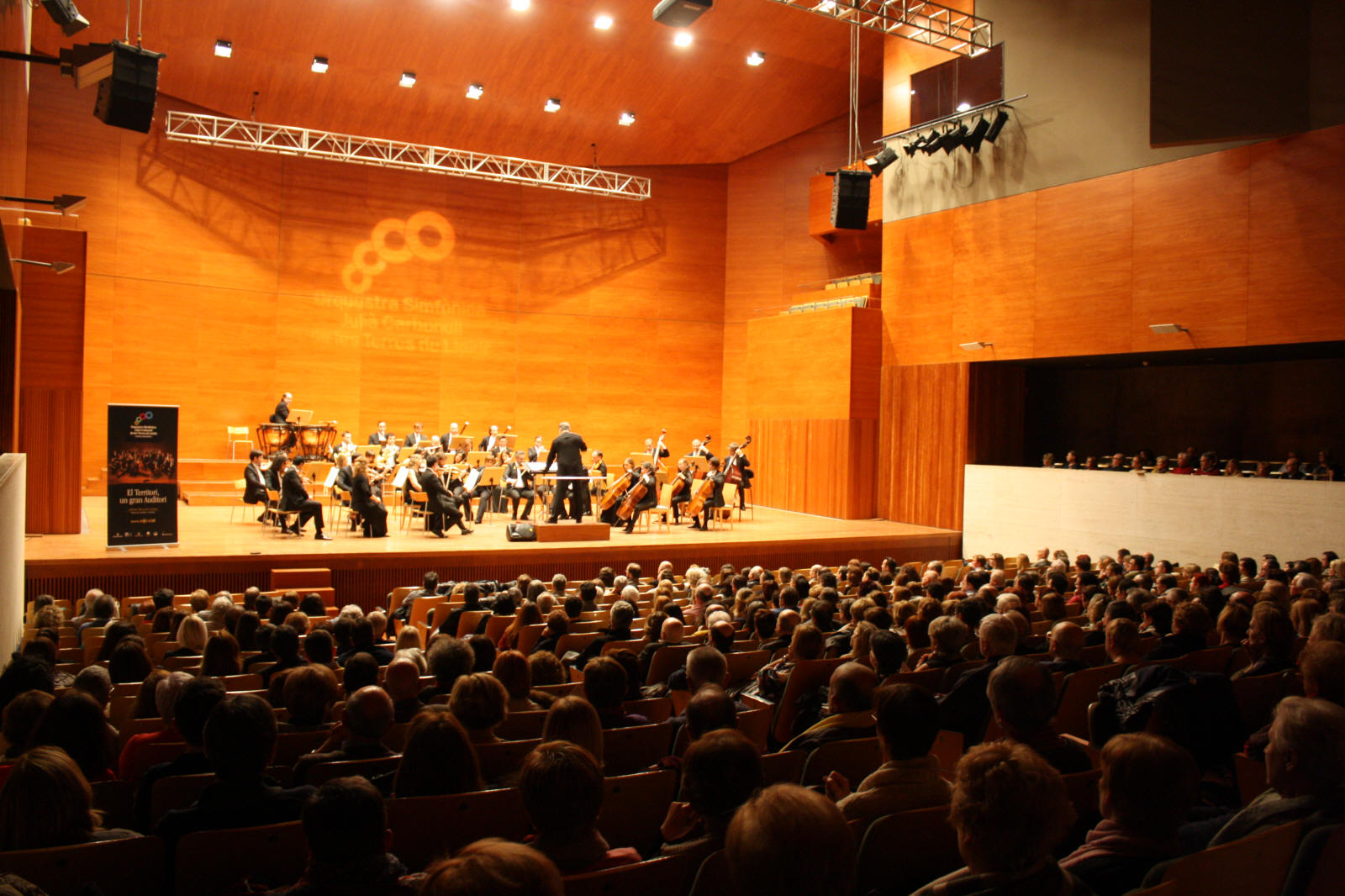
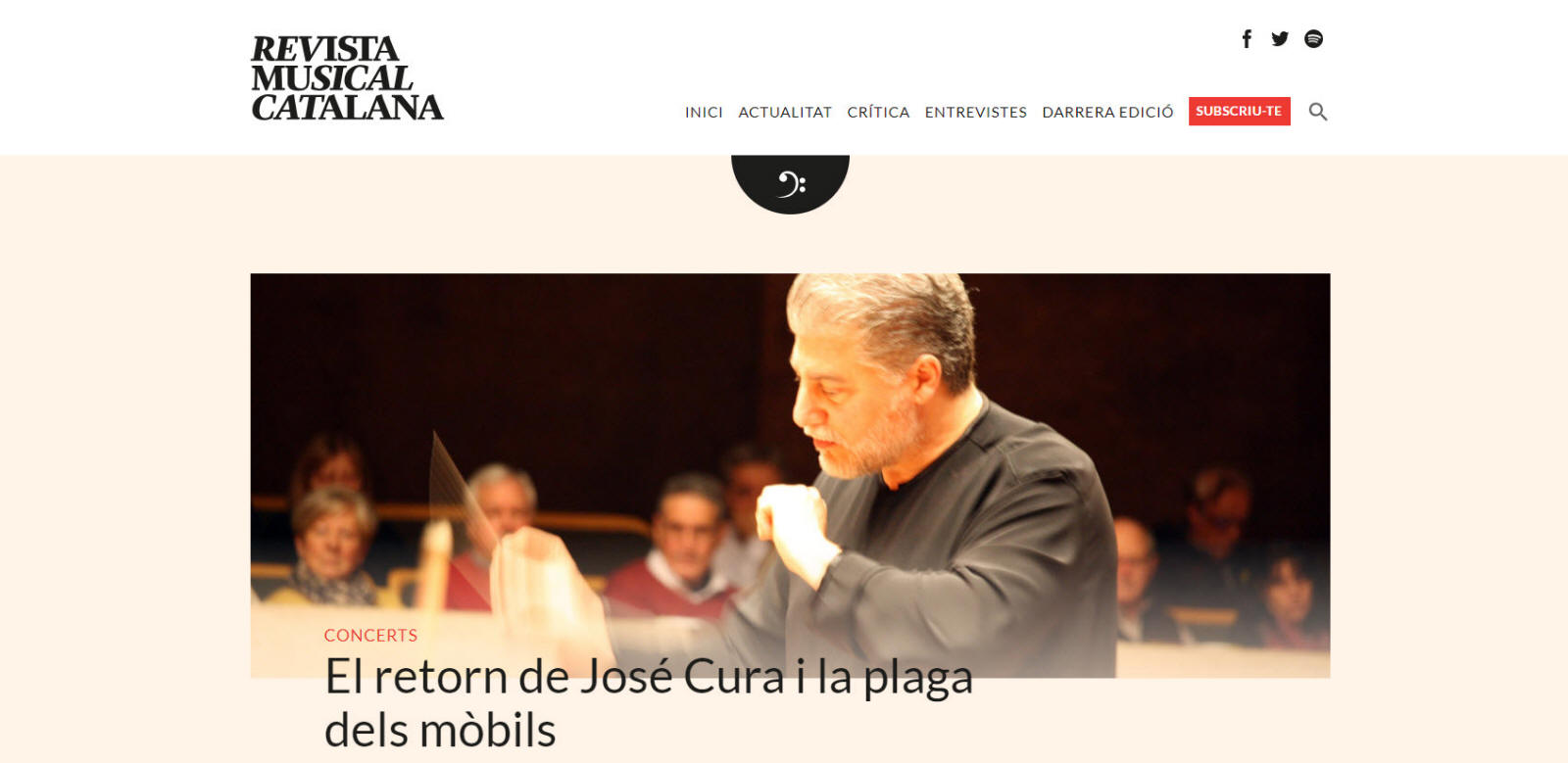
|
|
|
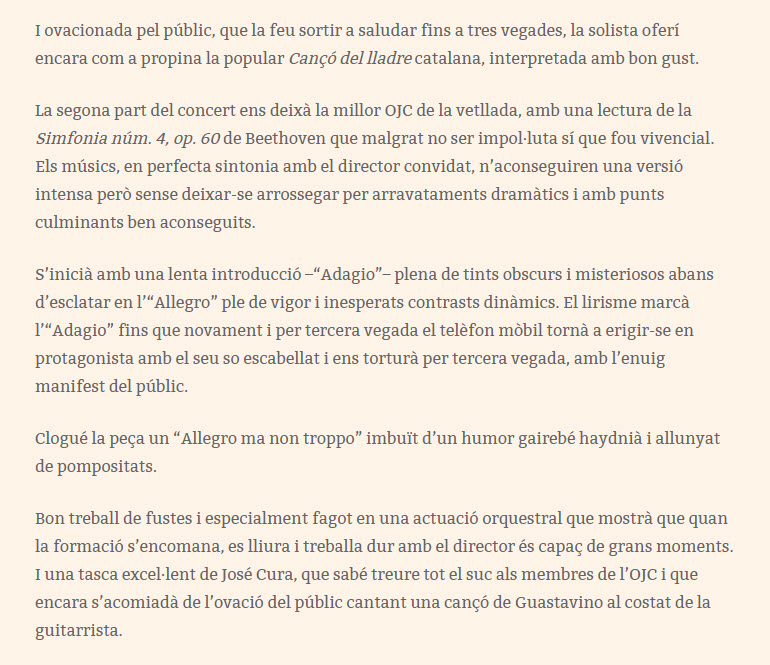
|
Note: This is a machine-based translation. We offer it only a a general guide but it should not be considered definitive.
The return of Jose Cura and the plague of mobiles Revista Musical Catalan Santi Riu 23 January 2019 [Excerpts]
|

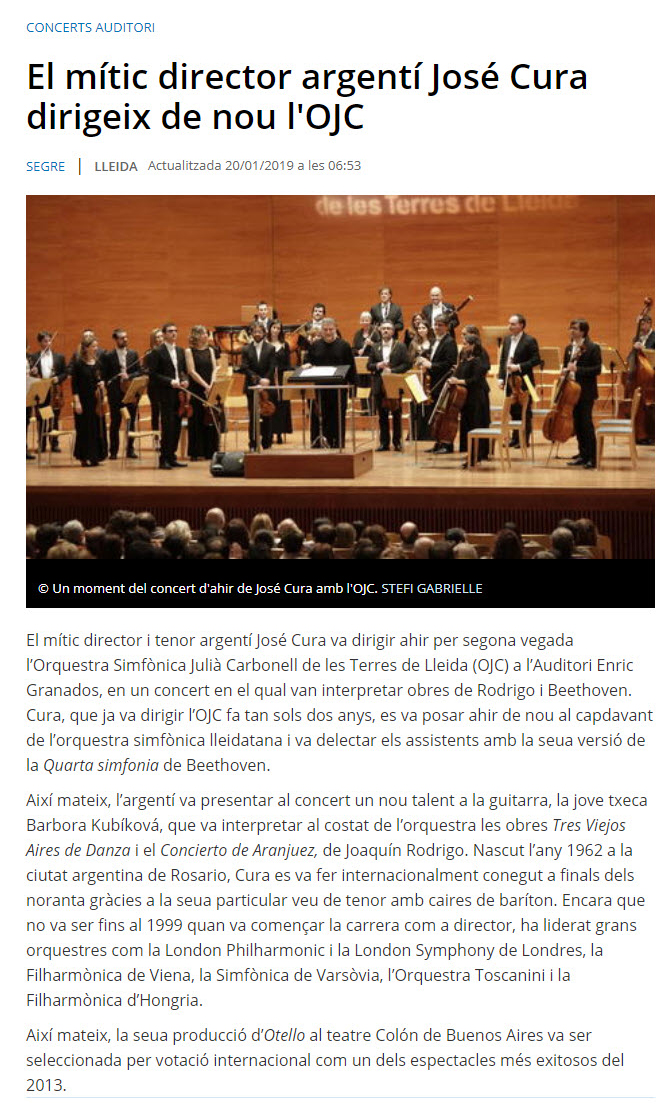
|
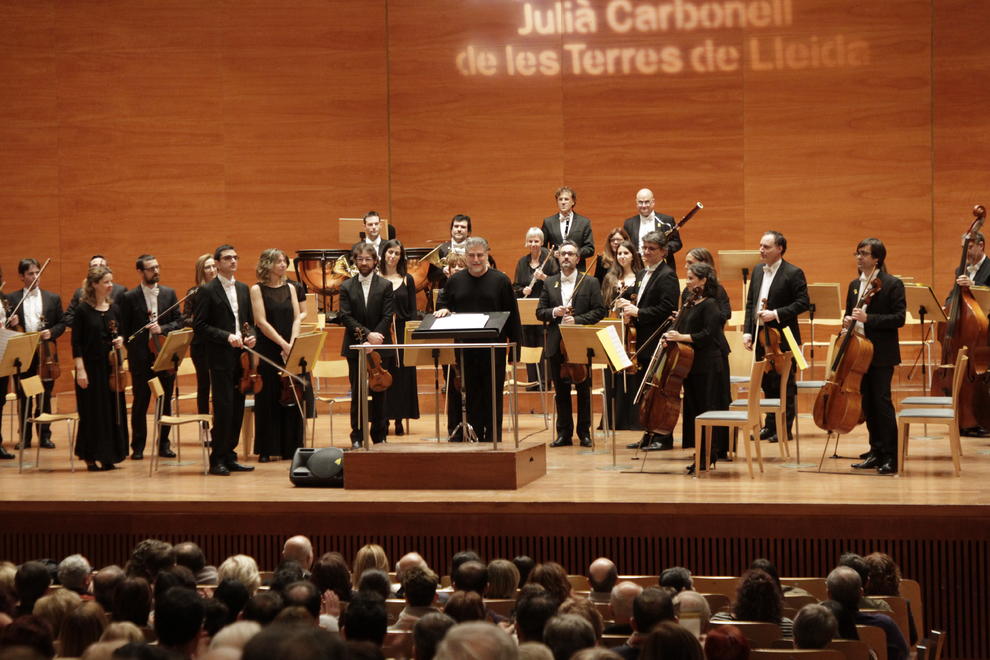
Beethoven - Muscat
|
|


|
En el primer movimiento dominó una lectura vertical, que vino marcada por un fuerte ritmo y un especial protagonismo de los vientos. Las cuerdas, por su parte, con más tendencia a lo lírico, ofrecieron un fraseo muy equilibrado. A lo largo del movimiento se fue construyendo una tensión, que poco a poco y muy controlada, incrementaba el carácter dramático hasta cerrar de forma rotunda el movimiento. Durante el segundo movimiento, que se llevó a un tiempo más bien rápido, se continuó construyendo esa tensión que nos dirige al clímax de la obra. El momento oda del Scherzo, ese en el que atisbamos una pista del canto final, sonó claro y enérgico, apuntalando una estructura que está a la mitad de su construcción. En general, el Scherzo fue muy rítmico en las cuerdas y de una gran delicadeza en los vientos: los momentos fugados sonaron magníficamente, con un timbre y un empaste preciosos. Tambien es cierto que con los movimientos más enérgicos, la construcción de su sonido extrovertido y dinámico reluce con mayor atractivo y así sucedió con el Molto vivace. Vistoso el diálogo de vientos y su respuesta con el timbal. El obstinado de las cuerdas volvió a tener el brillo propio de la formación, y el atractivo rítmico del movimiento relució con renovada sonoridad. Se hicieron notar las trompas con un sonido limpio y certero, así como la belleza del solo de oboe, siempre meloso y de trabajo impecable. Los pizzicatti y acordes pretormentosos de las cuerdas anunciaron con efusividad la alegría rítmica de los temas, Cura iluminó de nuevo la formación con una gestualidad efusiva sin caer en el narcisismo ni la autocontemplación. De nuevo resonaron esas trompas que recuerdan a las futura llamada de las walkirias wagneriana. El acorde final del movimiento fue quizás demasiado tímido antes de pasar a la nobleza insondable del Adagio molto cantabile, andante.
|
|
Note: This is a machine-based translation. We offer it only a a general guide but it should not be considered definitive.
9th. Beethoven Symphony "Coral" Orchestra and Choir of the Colón Theater in Buenos Aires Royal Opera House Muscat Director: José Cura [Excerpt] [Note: this is a rough translation …] The first movement was dominated by a vertical reading, which was marked by a strong rhythm and a special prominence of the winds. The strings, on the other hand, with a more lyrical tendency, offering very balanced phrasing. Throughout the movement a tension built, little by little and precisely controlled, increasing the dramatic character until the movement ended in an emphatic way. During the second movement, which was taken at a rather rapid pace, the tension continued as we were directed toward the climax of the work. The Scherzo, that moment in which we glimpse a trace of the final song, sounded clear and energetic, underpinning a structure that is halfway through its construction. In general, the Scherzo was very rhythmic on the strings and very delicate on the winds: the fleeting moments sounded magnificently. It is also true that with the most energetic movements, the construction of its outgoing and dynamic sound shines with greater appeal and so it happened with the Molto vivace. The pizzicato chords of the strings announced effusively the rhythmic joy of the themes and Cura again illuminated the formation with effusive gestures without falling into narcissism or self-contemplation. […] The incorporation of the Choir sounded compact and well balanced. The powerful sound of the double basses shone at the beginning of the martial and stormy Finale. The strings let the birth and preparation of the theme prepare the soloists and then the choir flowed with an organic sound. There was beautiful phrasing, with an almost sensual reading of the hymn melody before it was verbalized by the soloists. At last the interpretation of joy appeared again with the release of the violins. The incorporation of the Choir sounded compact and well balanced … |
|
The Triumph of Music in Achieving Universal Liberty and Joy
Oman Observer Georgina Benison 17 September 2019 On the shoulders of the current run of ‘Carmen’, The Royal Opera House Muscat mounted a stunning performance of Beethoven’s Ninth Symphony in D minor by the orchestra and chorus of the Teatro Colón Buenos Aires on Friday night. While the opera cast rested their voices, the musicians from the pit were placed centre stage (delightfully backed by a hint of the Bullring set) for an epic presentation, rarely afforded in concert halls worldwide. Even more exceptional was that José Cura changed roles from Don José, lead tenor in ‘Carmen’, to maestro for the evening, conducting the hundred-strong orchestra and ninety choir members for Beethoven’s magnificent 1824 Choral Symphony. Before the concert, ticket-holders were invited to a talk by Dr. Nasser al Taee, Advisor to the Board of Directors at ROHM on behalf of the Education and Outreach Department, explaining the background to Beethoven’s final, pivotal symphony. It was an illuminating analysis of its musical structure, cyclical use of motives and where the piece fell during the final, retrospective period of the composer’s life. Armed with such insight, the seventy-minute work in four movements was more accessible to, and enjoyed by, a greater number of concert-goers. It would be fair to say not only was the single performance sold-out, but the auditorium was also packed to the rafters with nary a spare seat to be seen. At lights down it took some minutes for the full complement of musicians, chorus and soloists to file on stage and take their seats. Finally maestro José Cura took his place on the podium accompanied by Leader (Concert Master) Freddy Varela Montero. The ‘Allegro ma non troppo’ opened with faltering falling fifths, teetering on the brink of ambiguity between minor and major modes. As themes developed, the fine ensemble playing of the Teatro Colón Orchestra became apparent in the unity of the string quality in warm, broad washes of colour, the precise articulation in the tutti sections and huge dynamic contrasts within the first movement alone. The second movement, ‘Molto Vivace’ was a whirling Scherzo and Trio, immediately familiar and more accessible to listeners, opening in D minor with carefully placed fugal entries from the woodwind. There were some lovely bassoon passages between short timpani bursts, a fine oboe obligato from Rubén Albornoz while the controlled pauses (silent rests) under Cura spoke volumes. The Trio section in D major provided a delightful contrast with trombones at last, before returning to the Scherzo in an astounding thirteen minute movement. Marked ‘Adagio molto e cantabile’ the third slow movement is a sort of theme and variations using various fluid key signatures between Bb, G and D minor. Before it began, Maestro Cura turned to greet the audience and announced they would tune up, breaking the formal tension in the hall and allowing a little shuffle. The third movement comprised long, sustained bows from the strings, punctuated by woodwind melodies and a haunting clarinet solo from Carlos Céspedes. An unusual horn solo from Gustavo Hermosilla was prominent over some precise pizzicato from the strings. It developed into fierce brass chords and timpani interruptions in a minor mode, all beautifully executed to a now silent auditorium. The fourth movement is of course ‘the moment everyone had been waiting for’. At 25 minutes’ duration, it towers over the other three movements like a mini symphony in itself. It involved the ninety voices of the Teatro Colón Choir, trained by Chorus Master Miguel Fabian Martínez, and four soloists, providing the extra-musical element of the Ninth from Schiller’s 1785 ‘Ode to Joy’. It represents an anthem for humanity. The finale opened with double-bass and cello lines, played so imperceptibly it seemed that they grew out of the belly of the stage. Lower string and bassoon melodies caught infectiously by the ensemble gradually built up with trumpet additions. Finally the bass voice of soloist Christian Peregrino boomed across the orchestra with the opening statement of the theme against exquisite woodwind counterpoint. Here was a man hotfooted from his role as Zuniga in ‘Carmen’ on Wednesday, Thursday and the following night! Gradually the other soloists of the evening were heard clearly in the superb acoustics of the Royal Opera House. Tenor Enrique Folger’s performance was passionate and often exposed; Soprano María Belén Rivarola excelled as she soared across orchestra and choir and Guadalupe Barrientos performed the mezzo-soprano line to her usual high standard. Muscat audiences had been treated to very different performances from these four singers in the Opera Galleria just the previous Saturday. Now they were backed by a cast of hundreds. The piccolo, double bassoon, triangle, bass drum and cymbals which had been idle until now, made an appearance in this glorious, triumphant climax. The two main themes were heard in a double fugato episode and with, ‘Tochter aus Elysium’ the concert was brought to a rousing Finale. As Cura’s baton descended the auditorium erupted into thunderous applause. José Cura leapt all over the stage to hug the soloists, and indicate the various solo musicians of the evening to receive their deserved applause. It was an energetic conclusion to an incredible performance.
|
Last Updated: Sunday, February 06, 2022 © Copyright: Kira